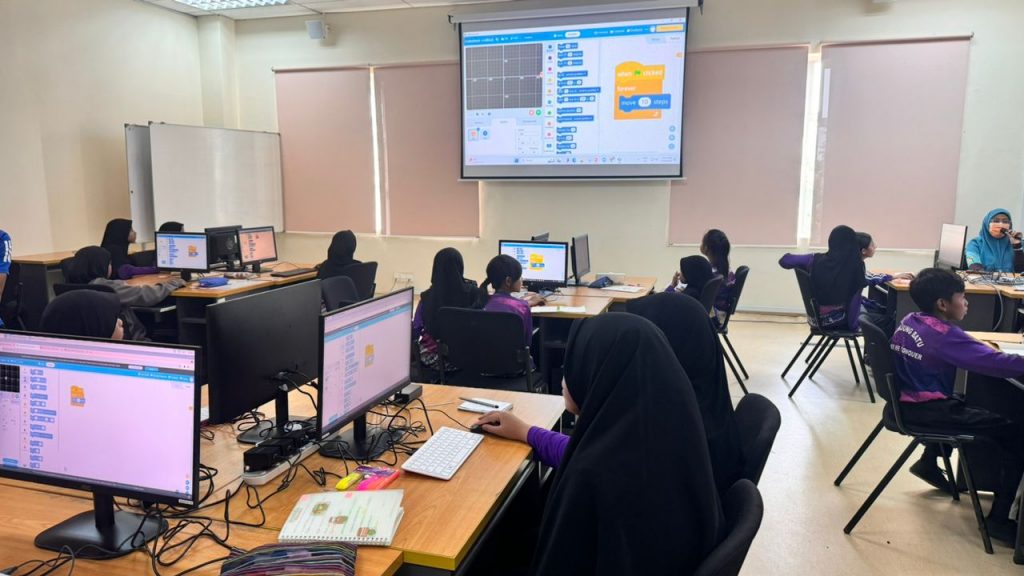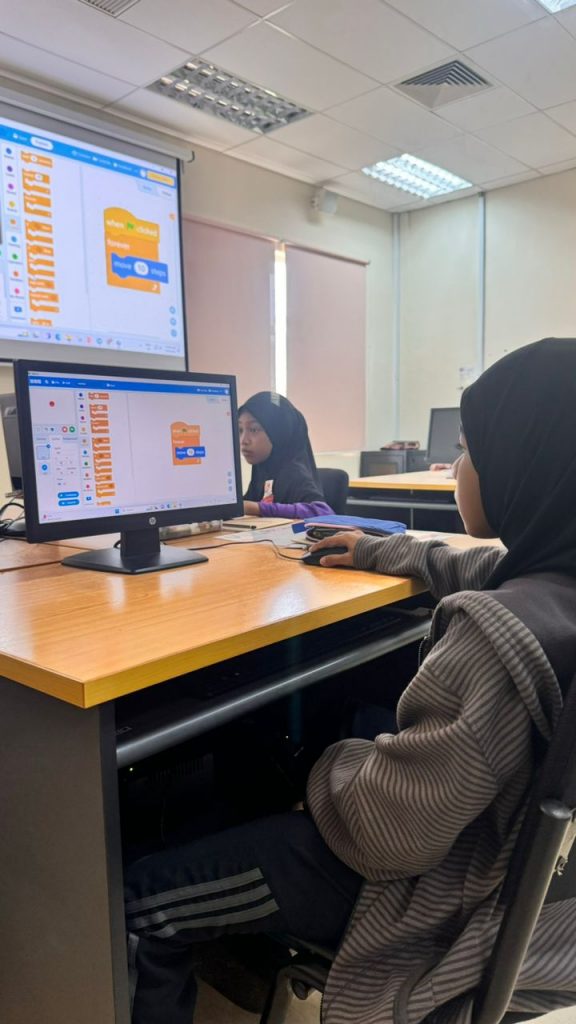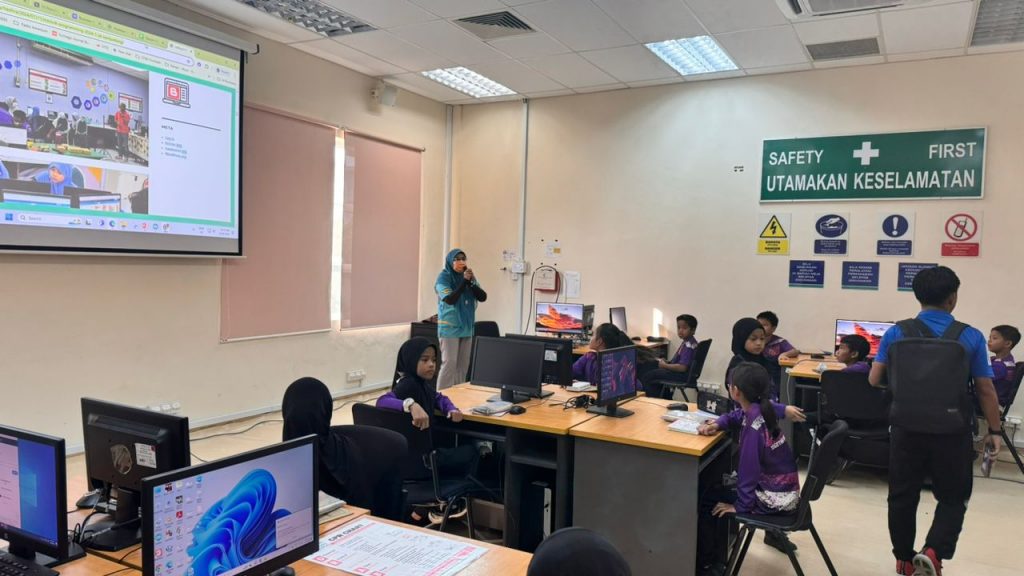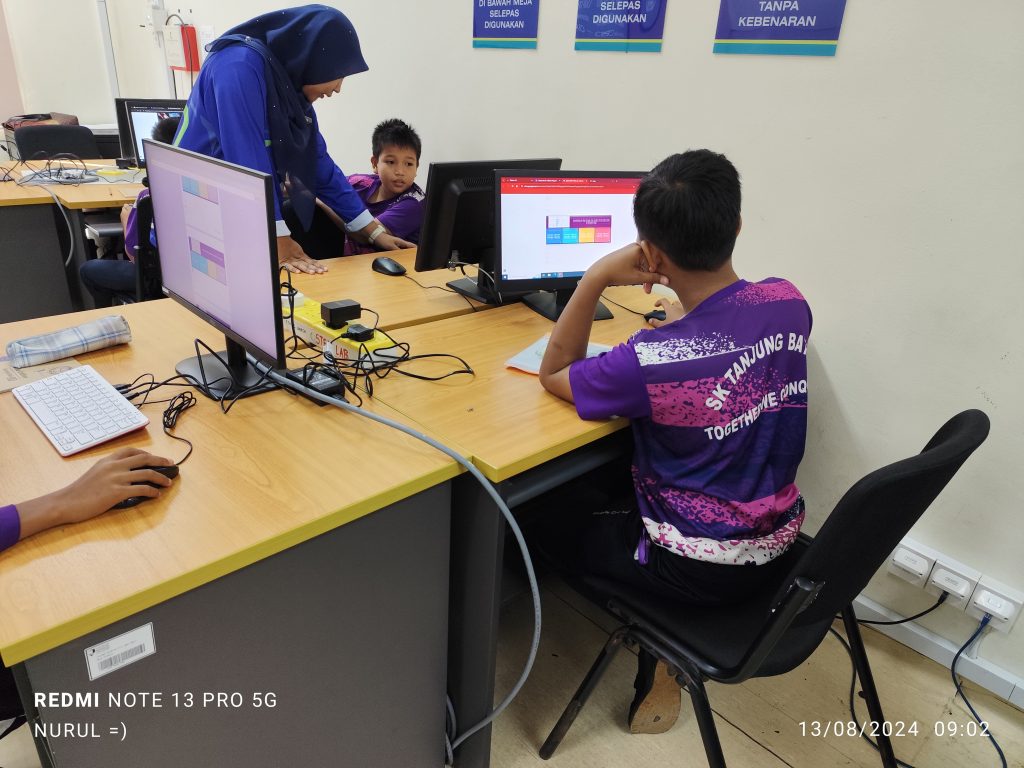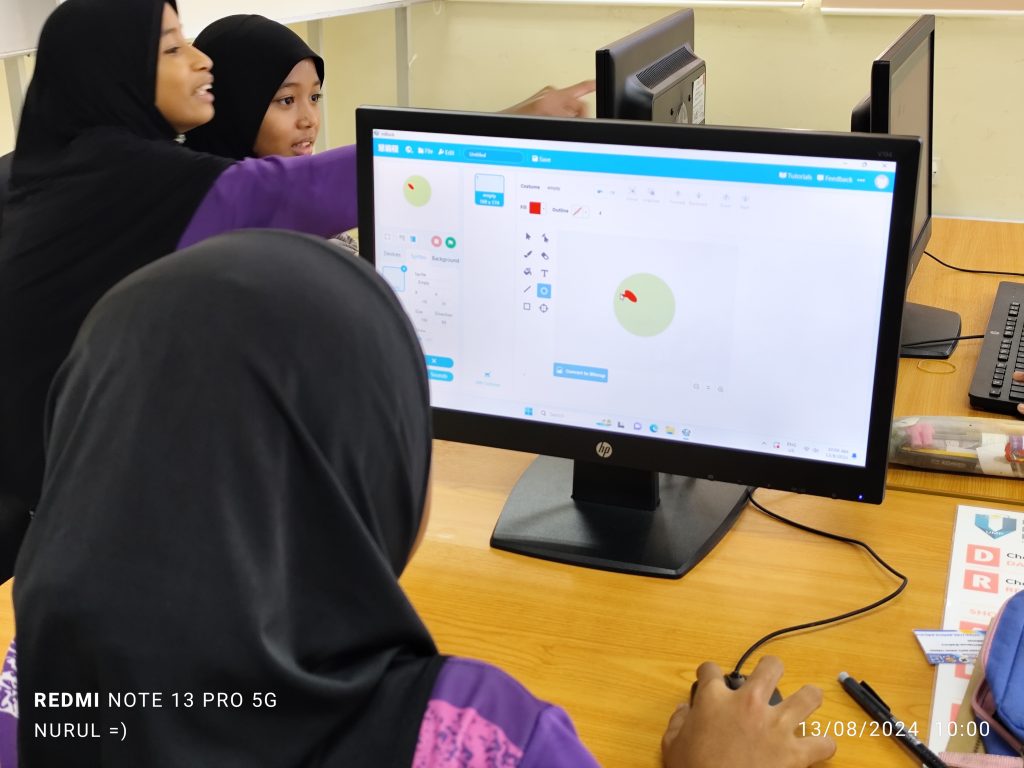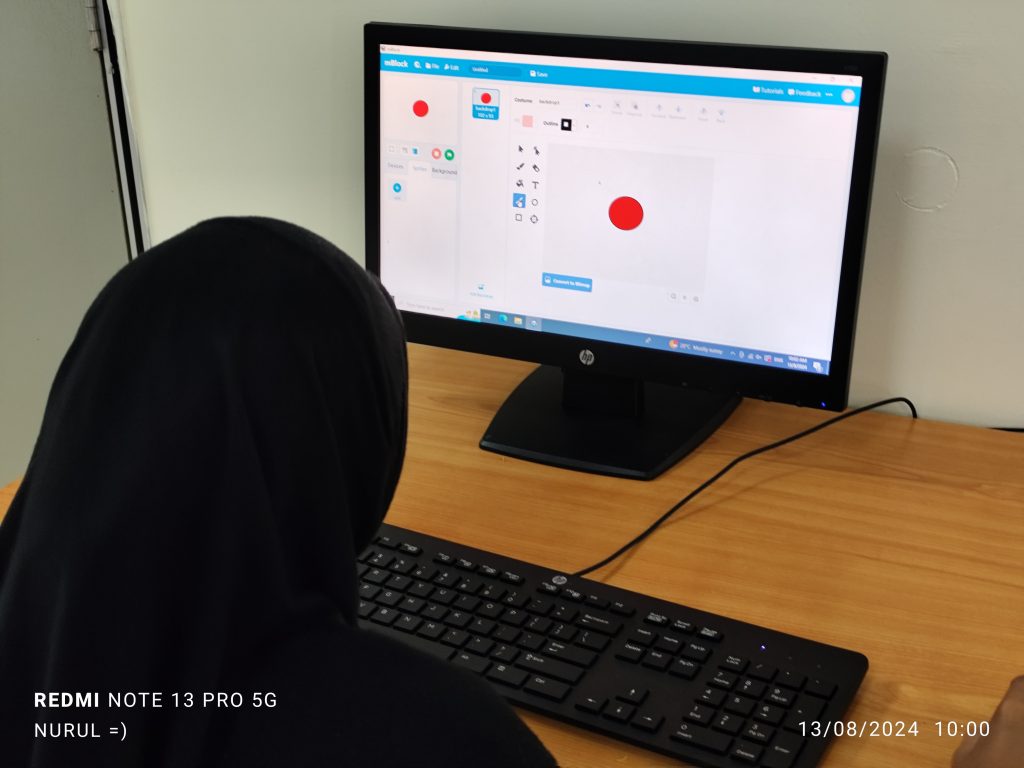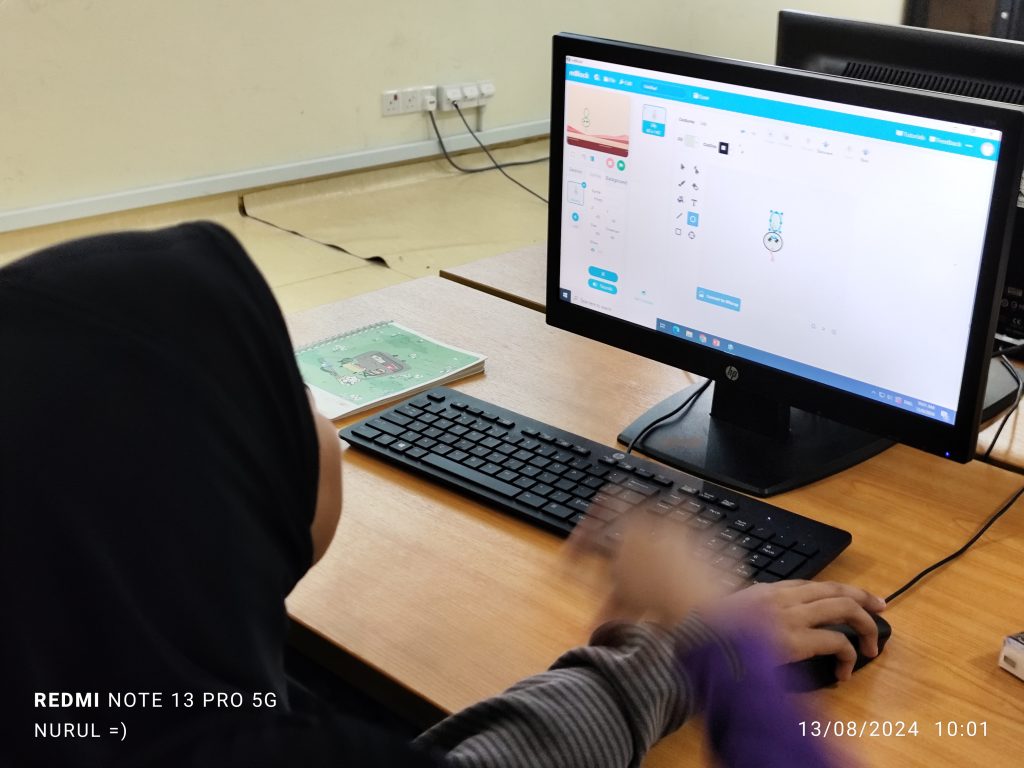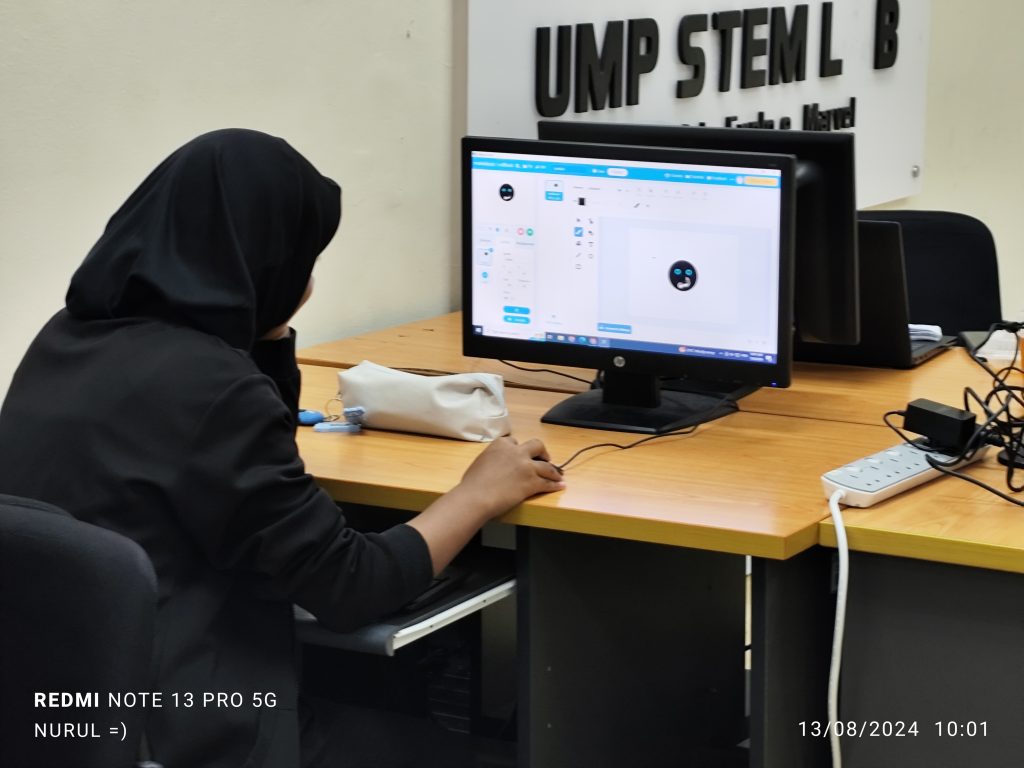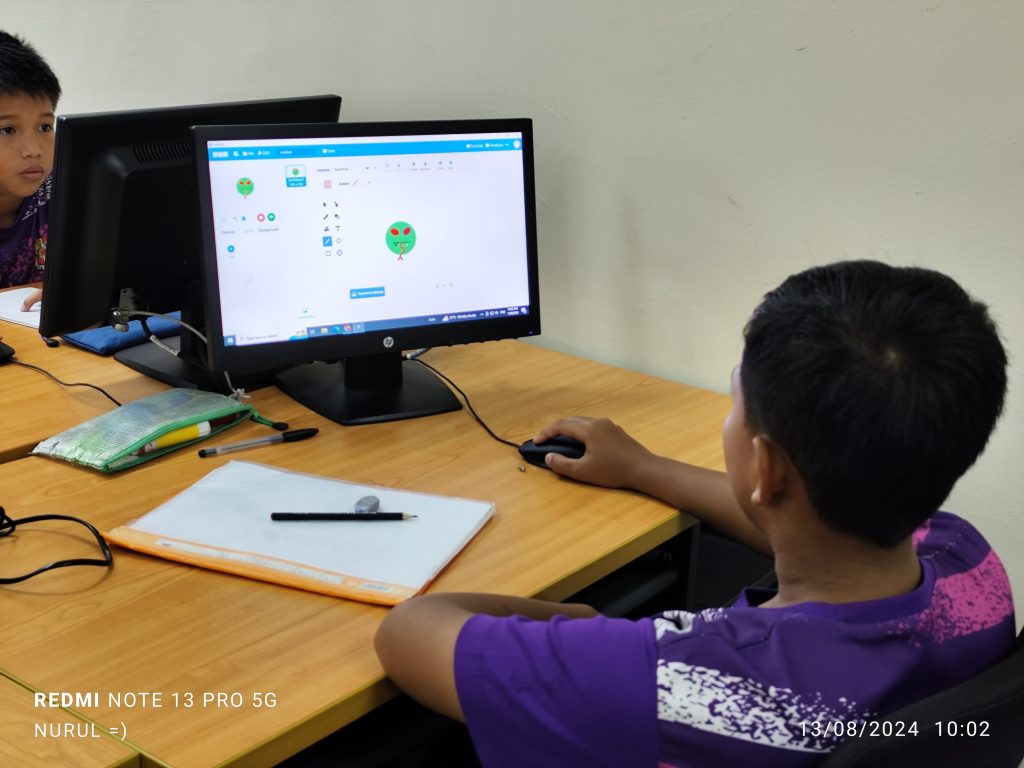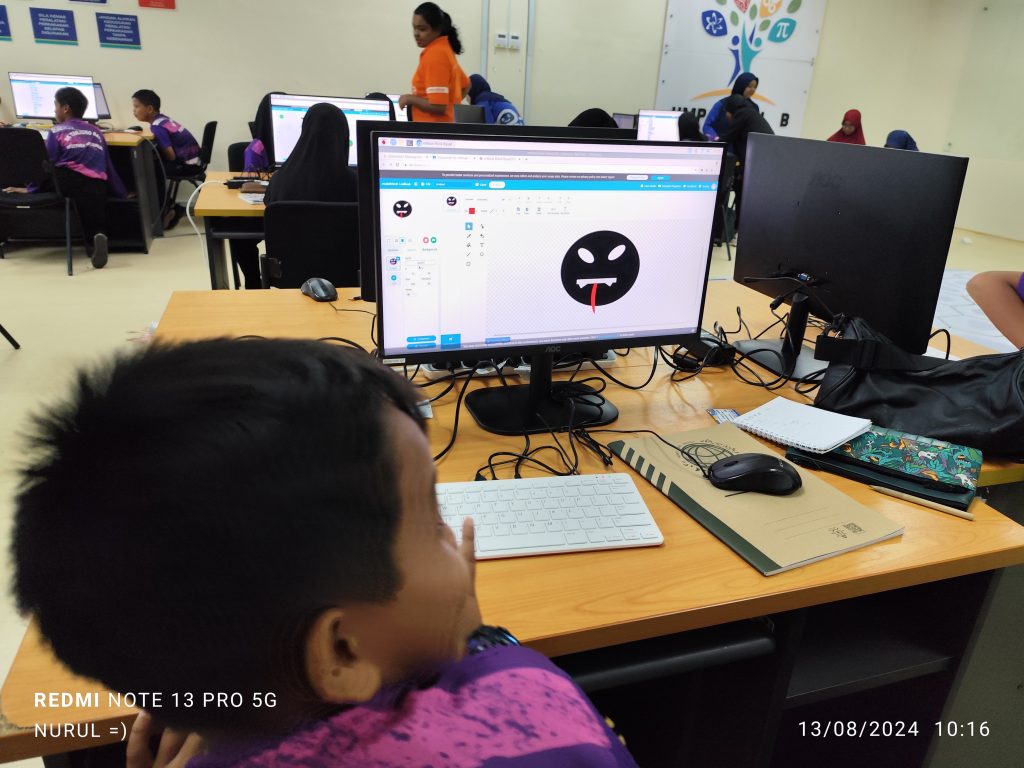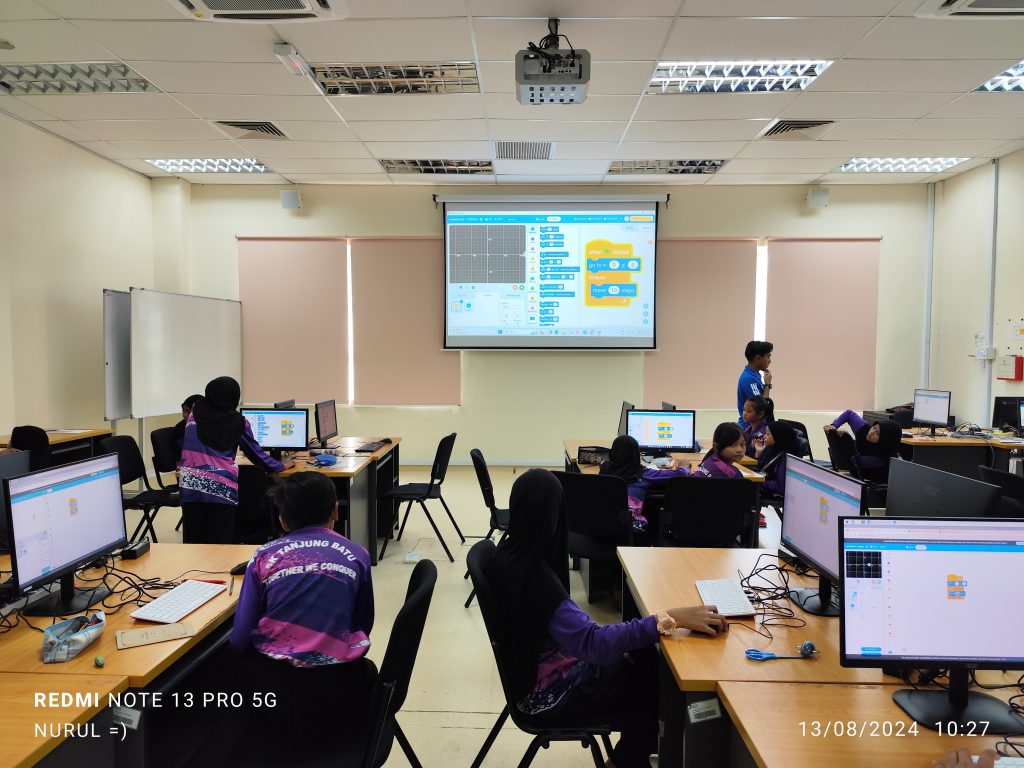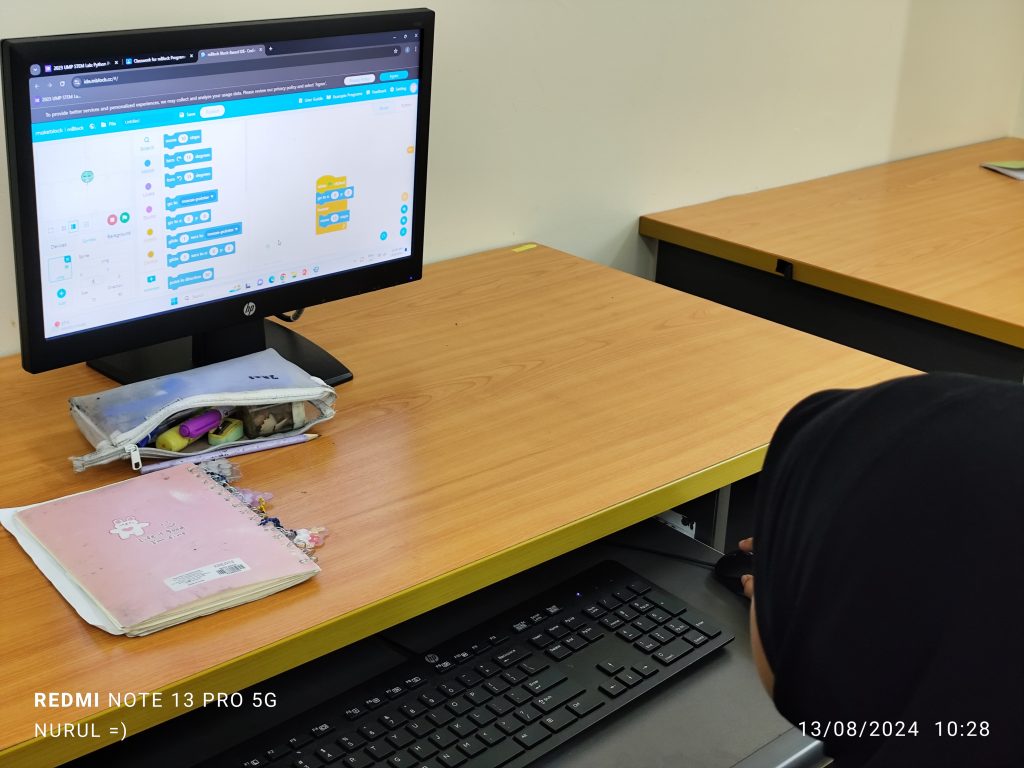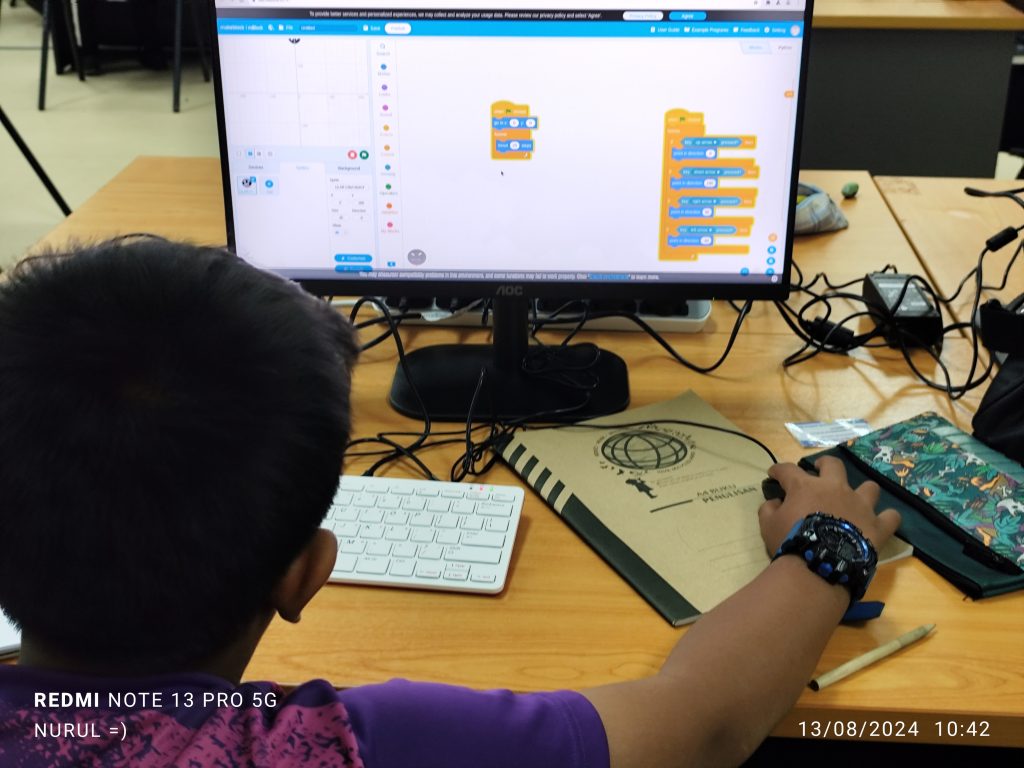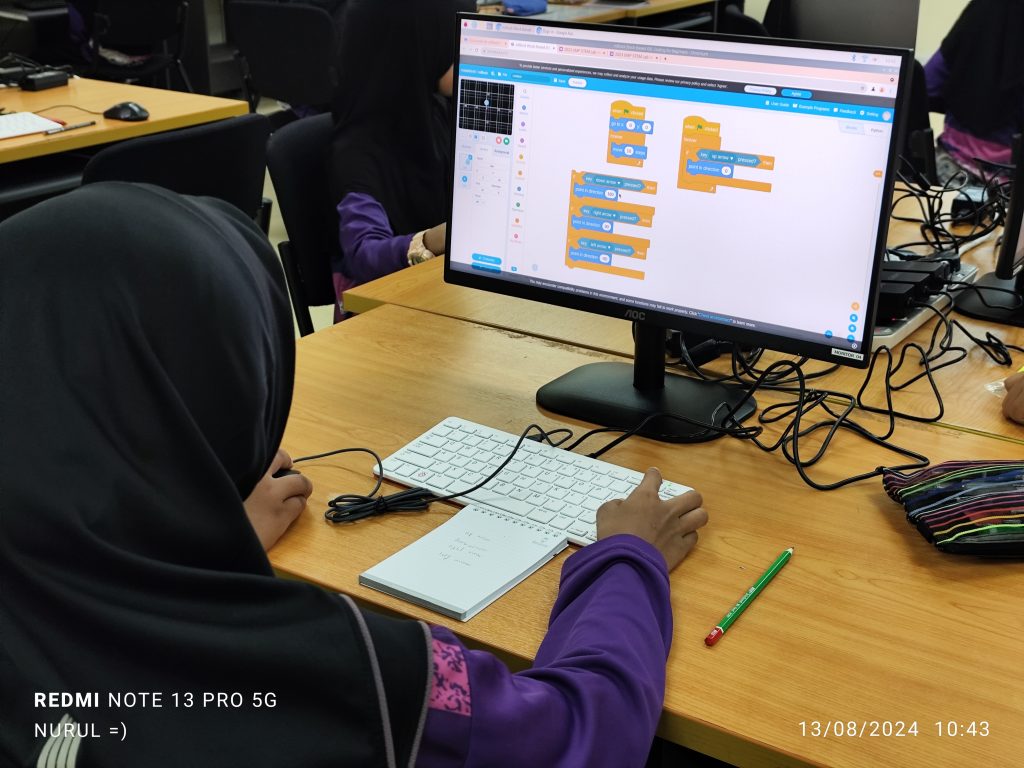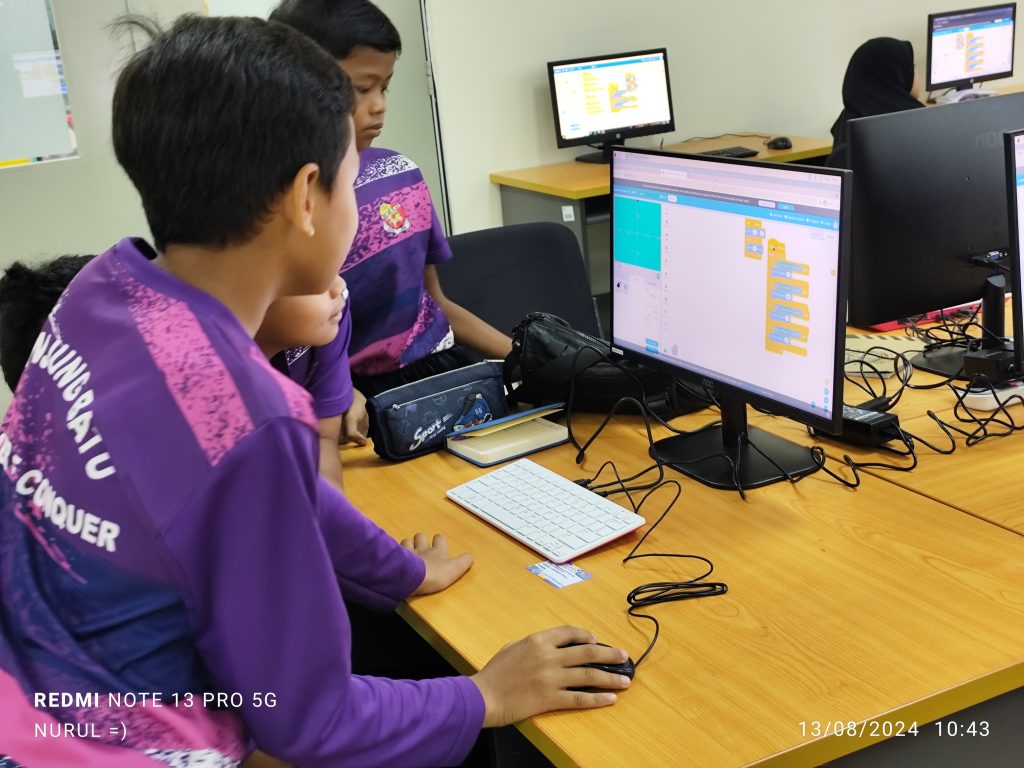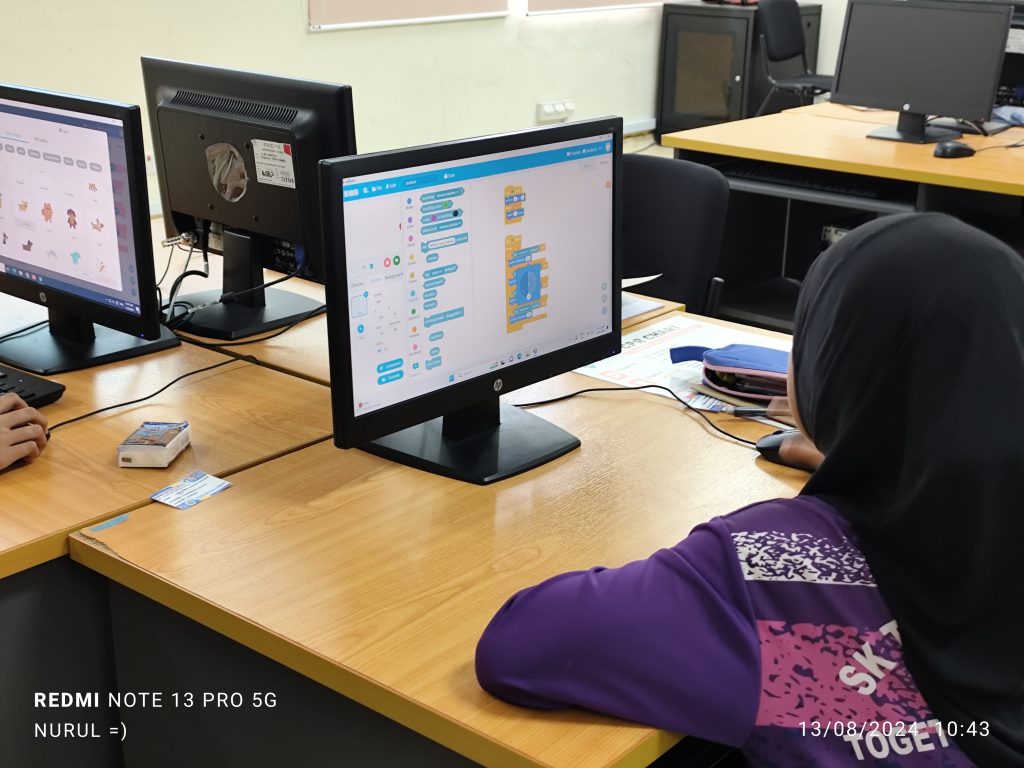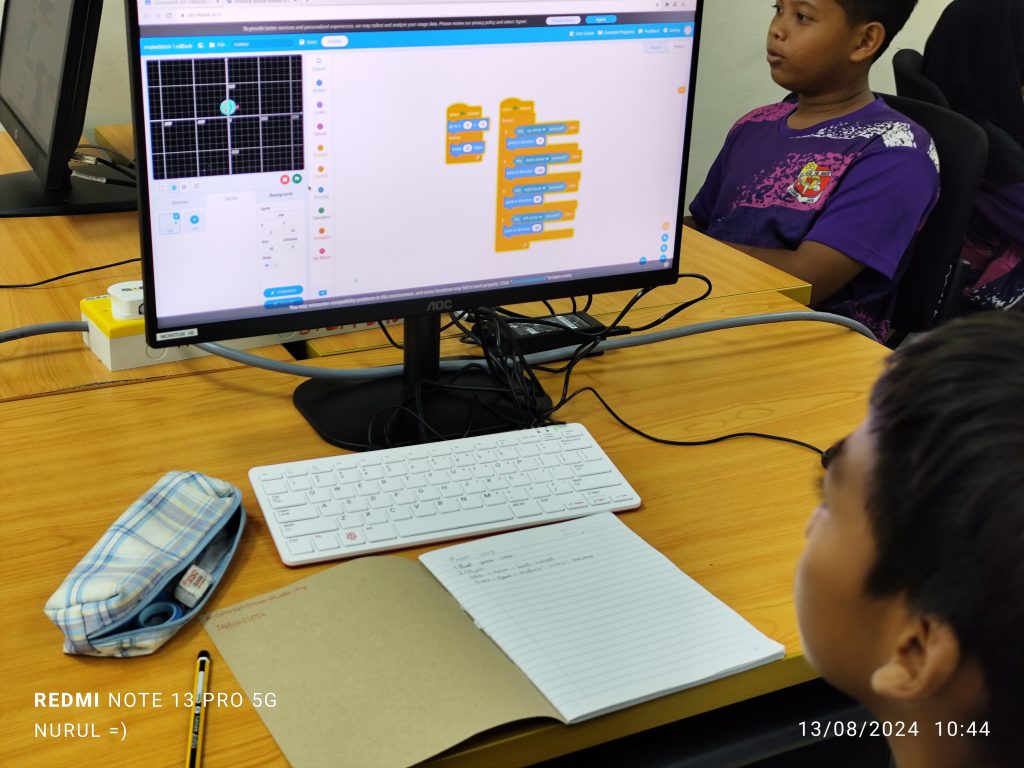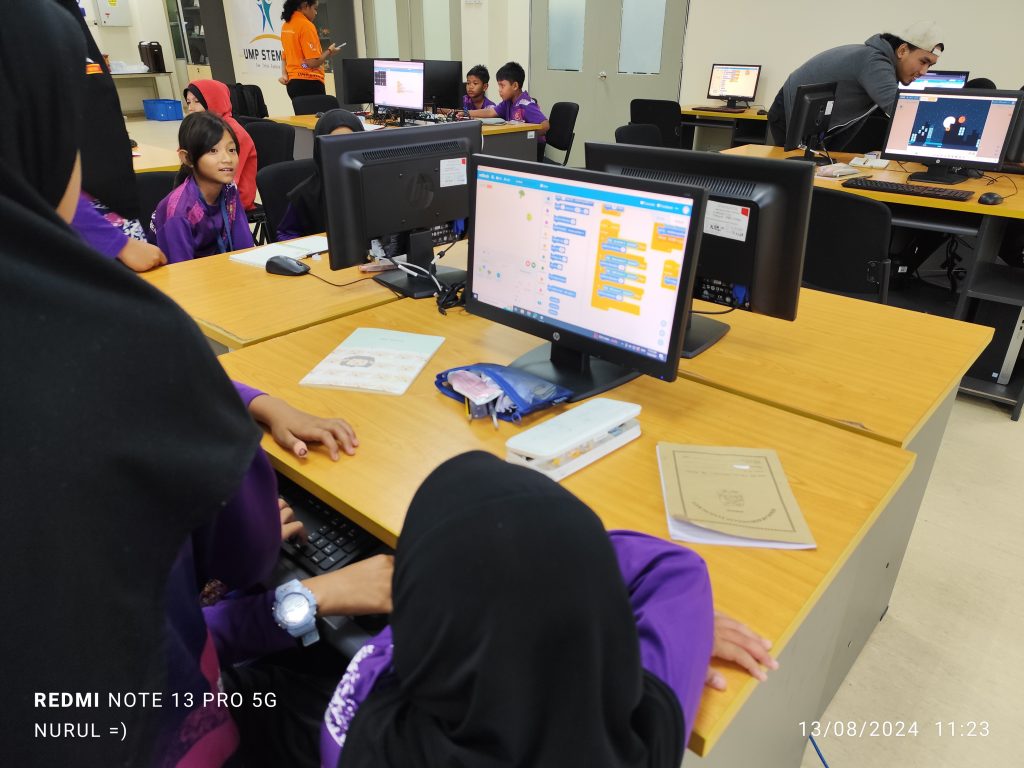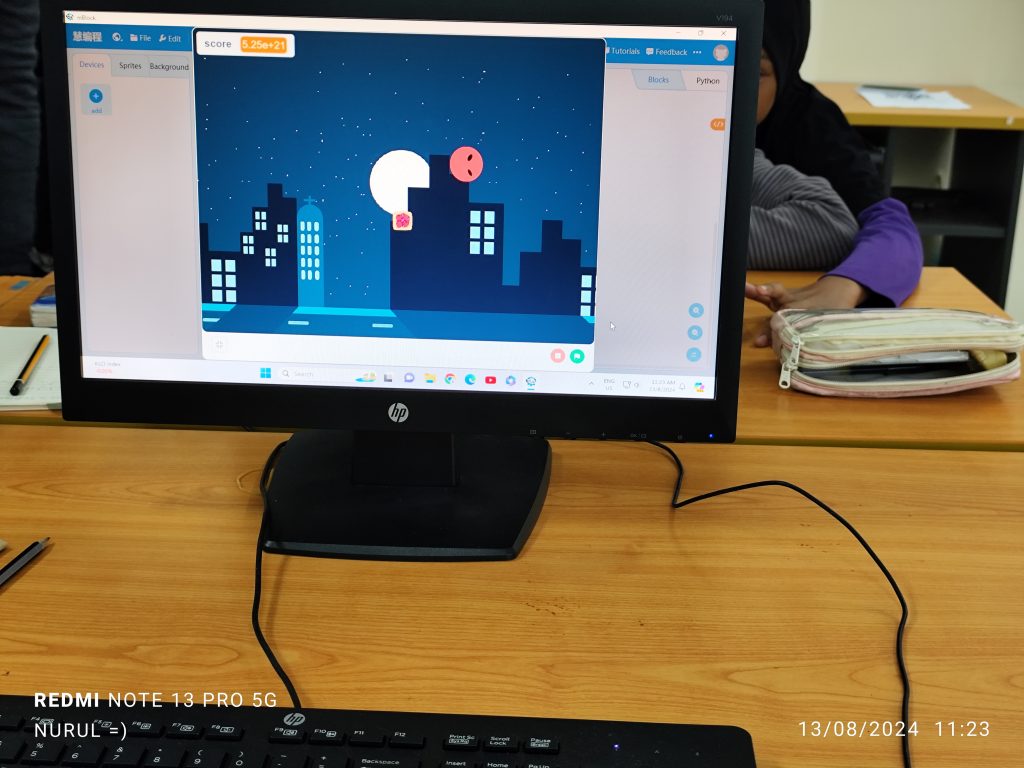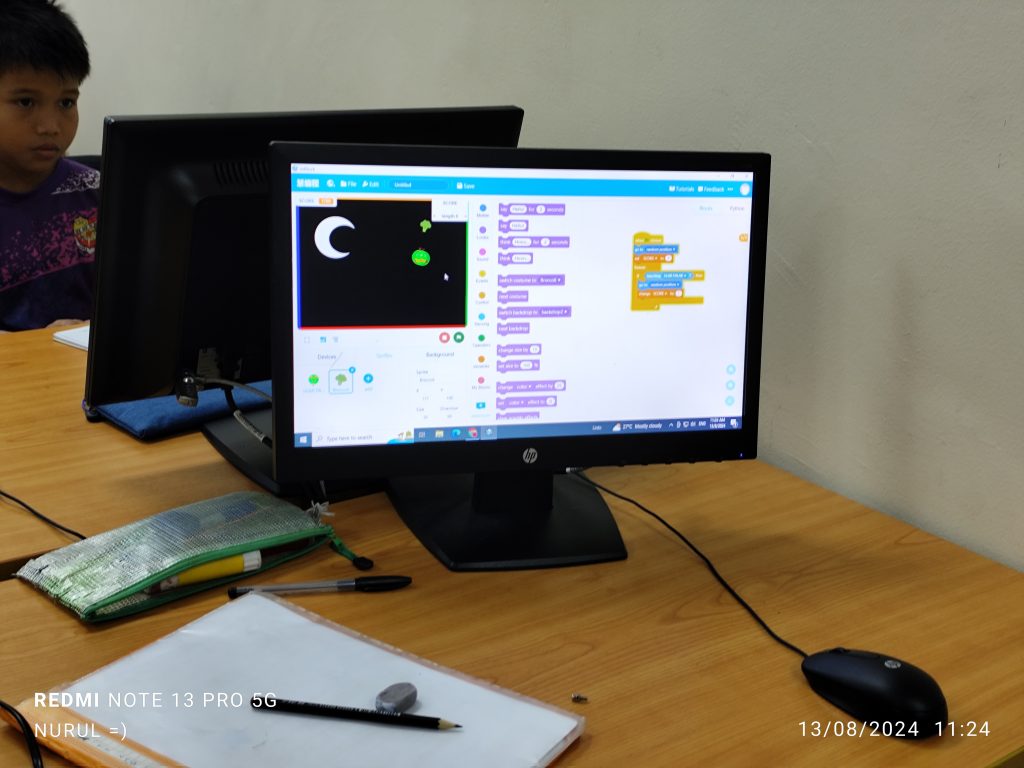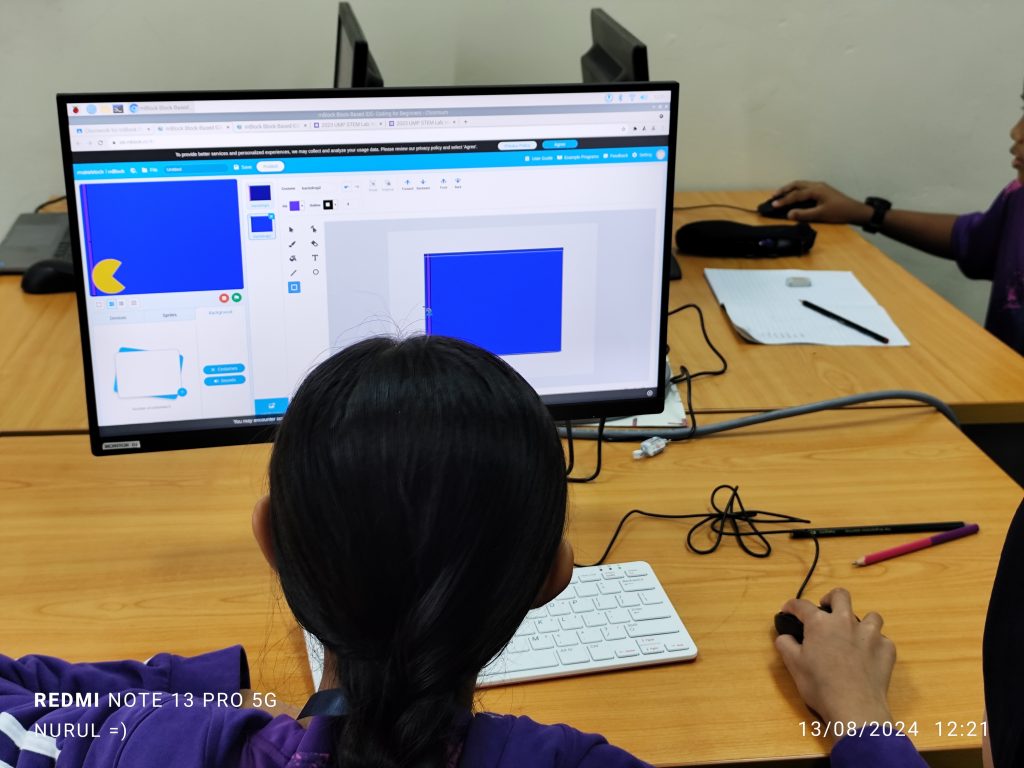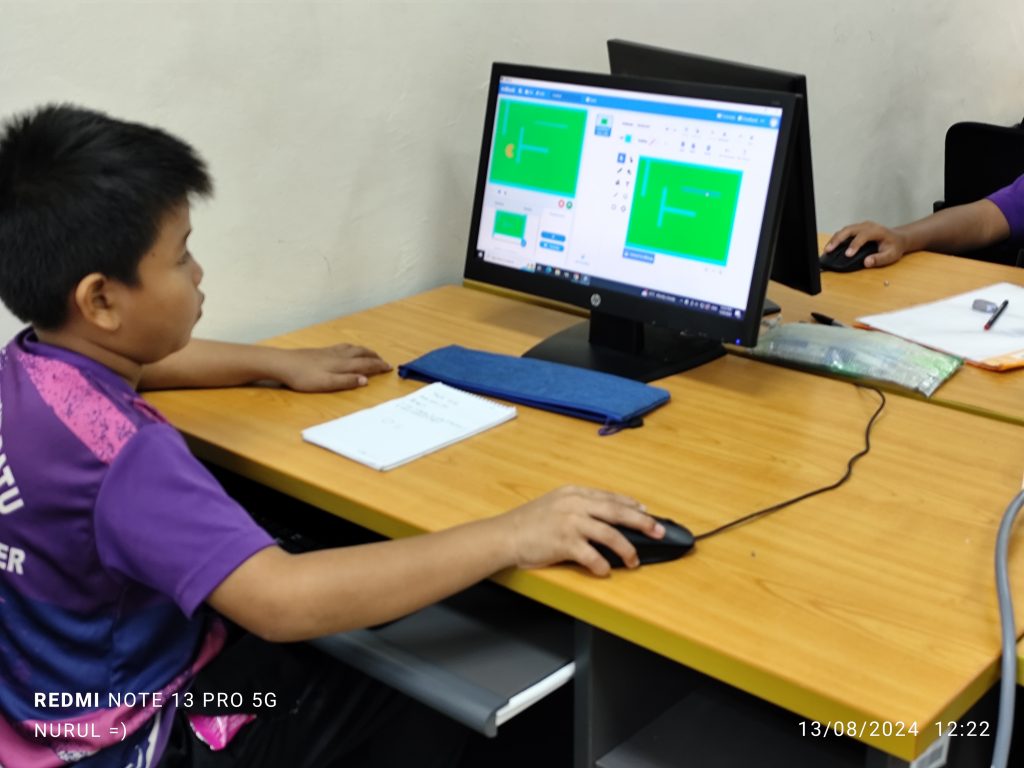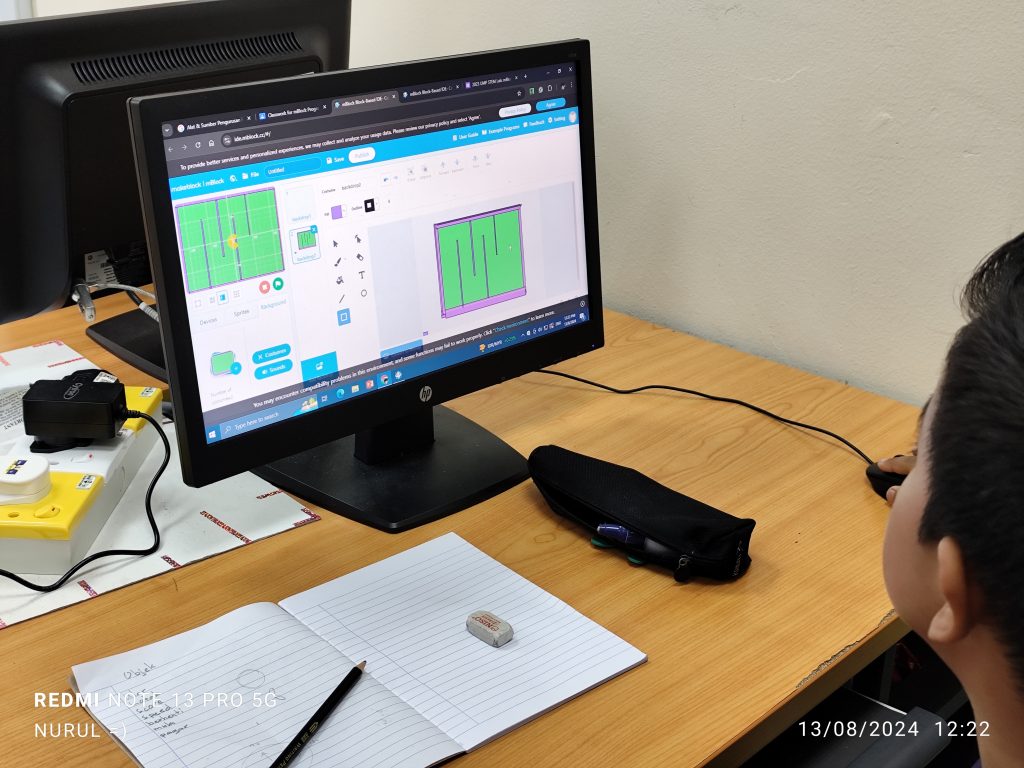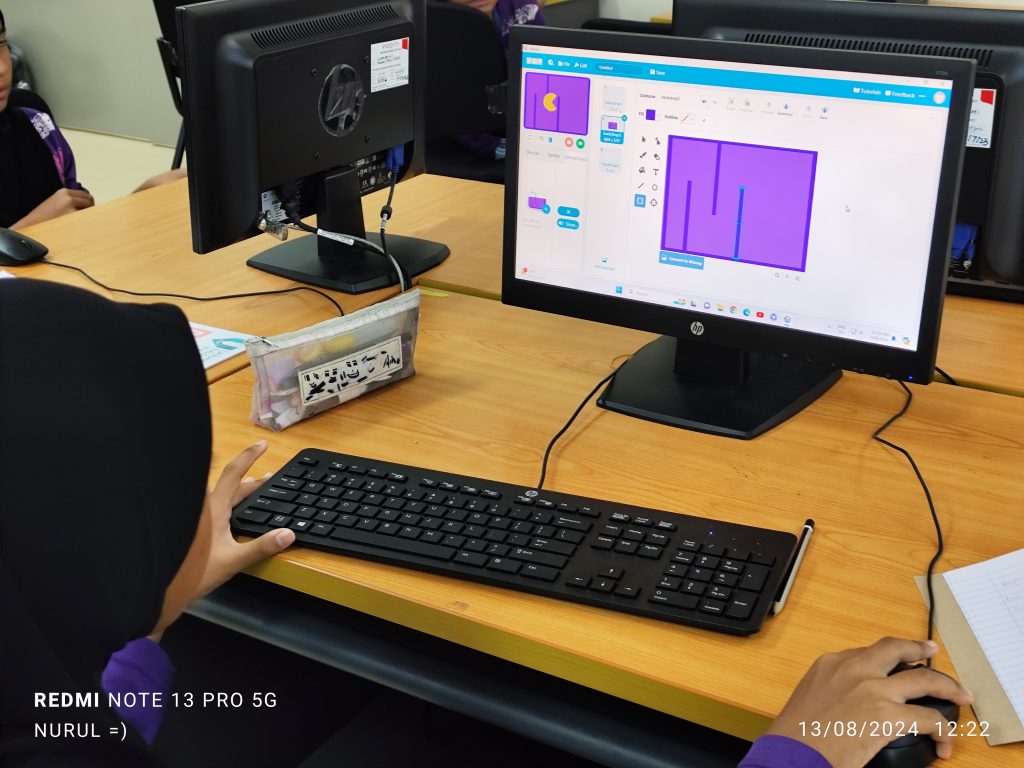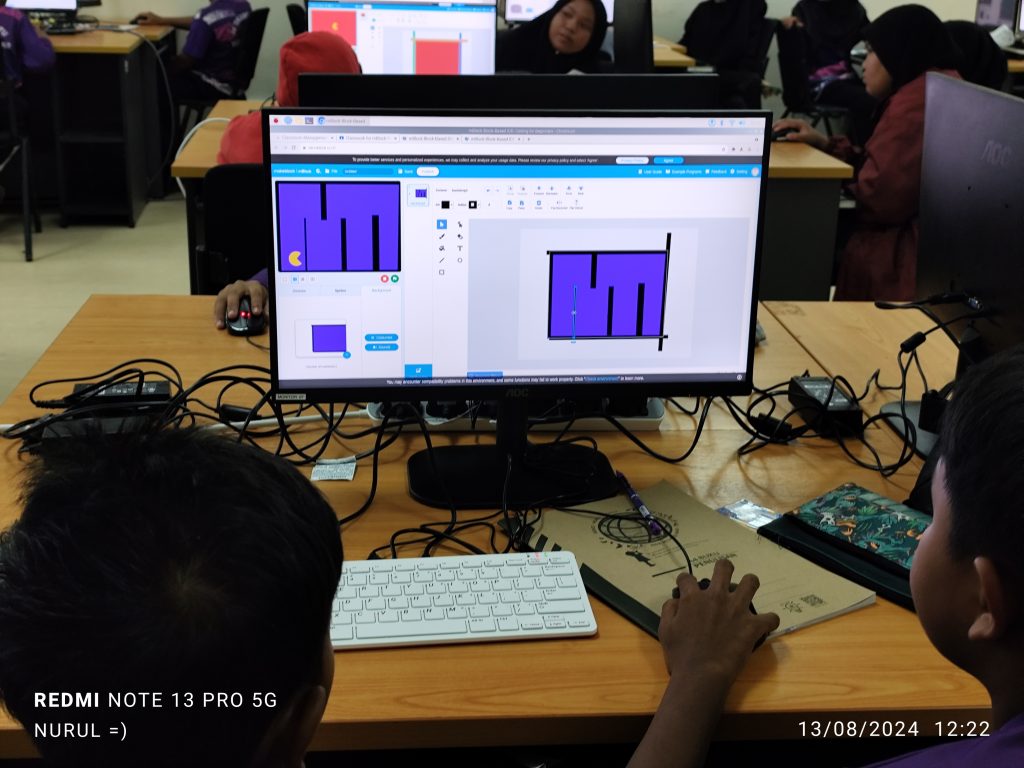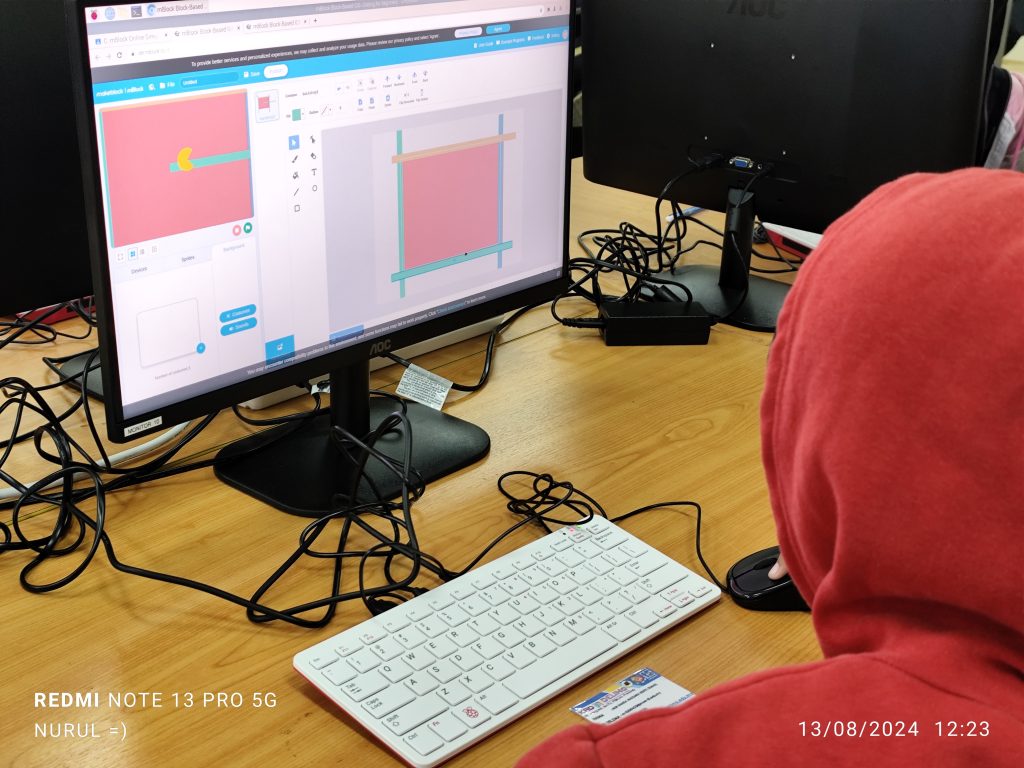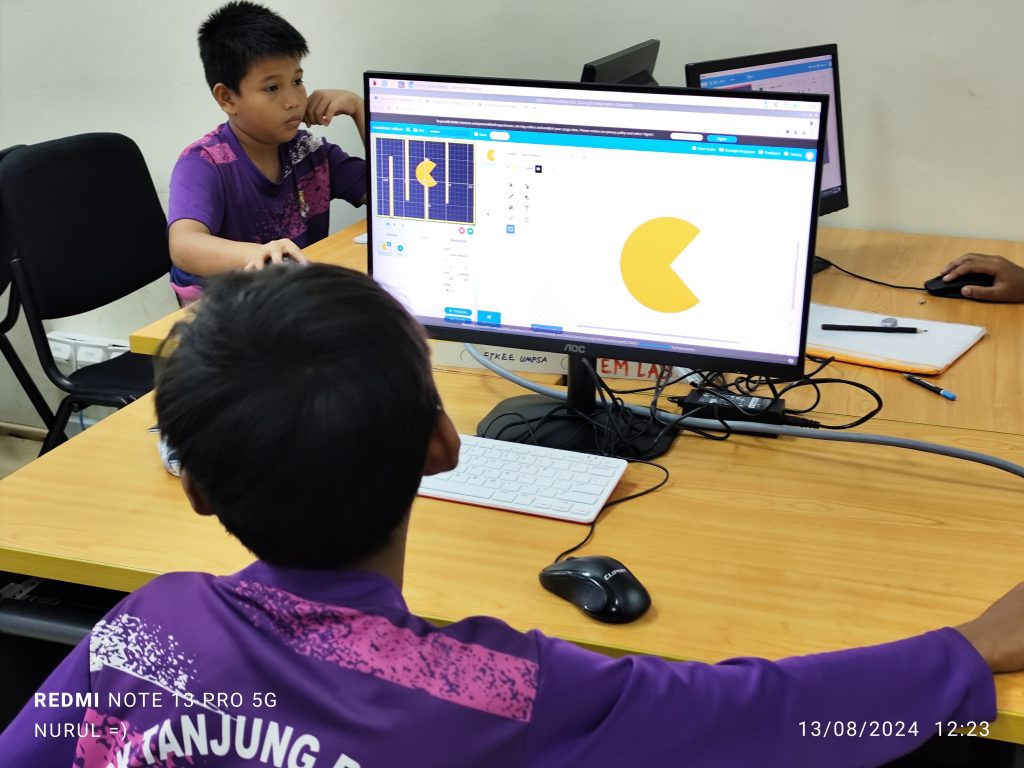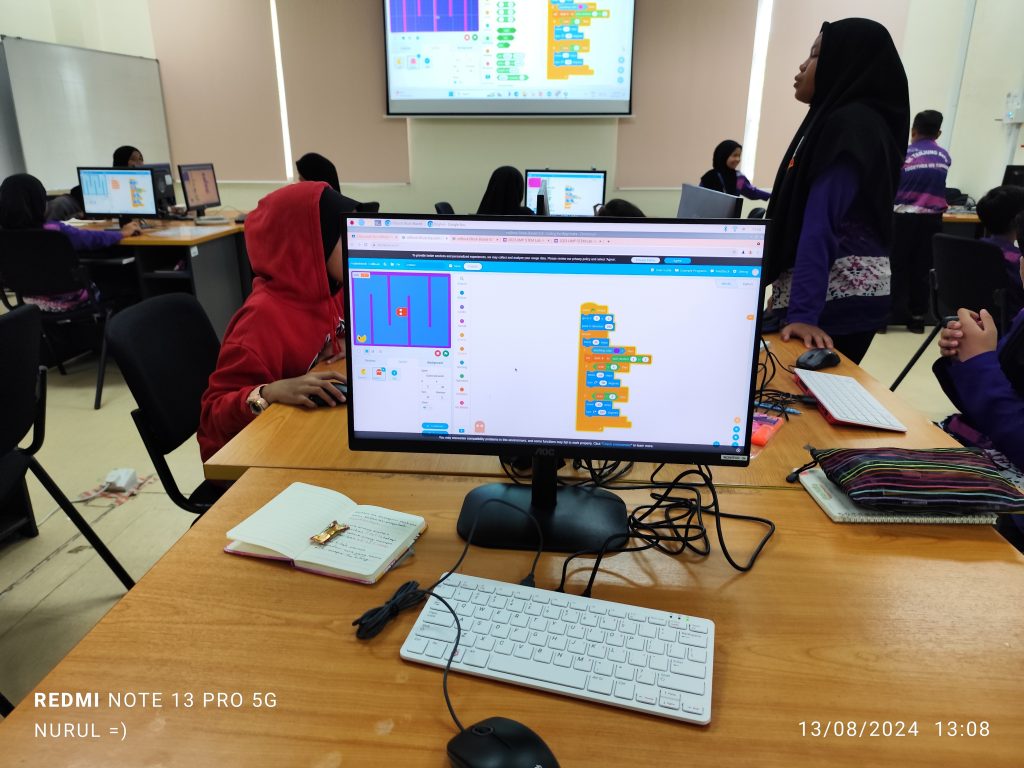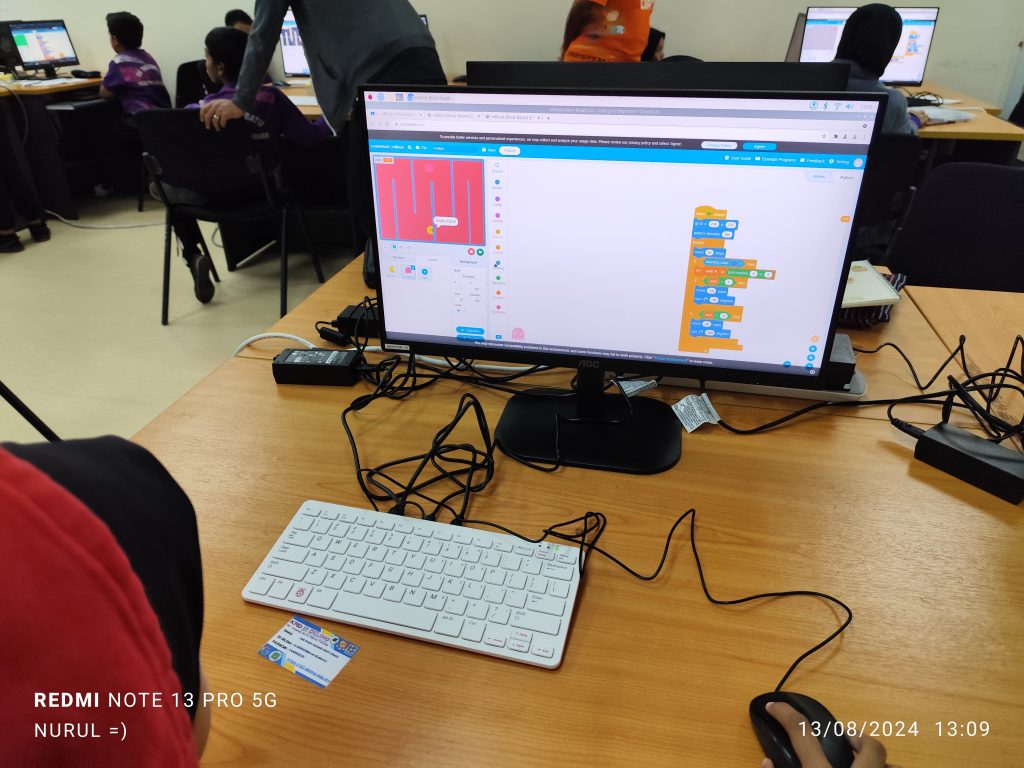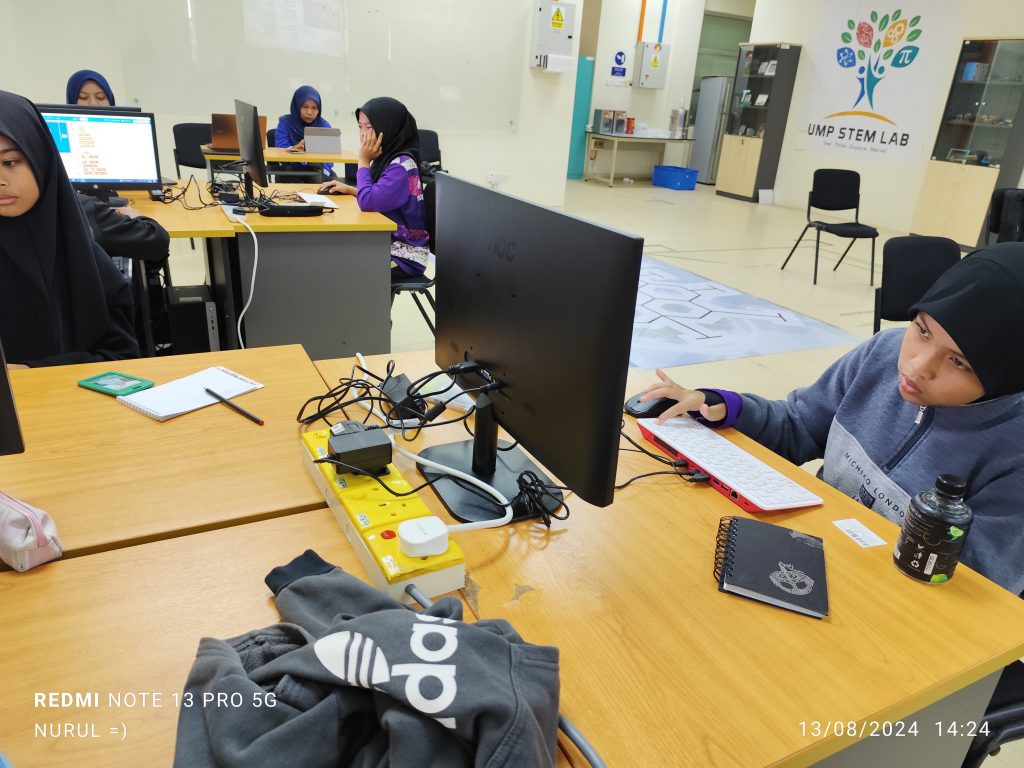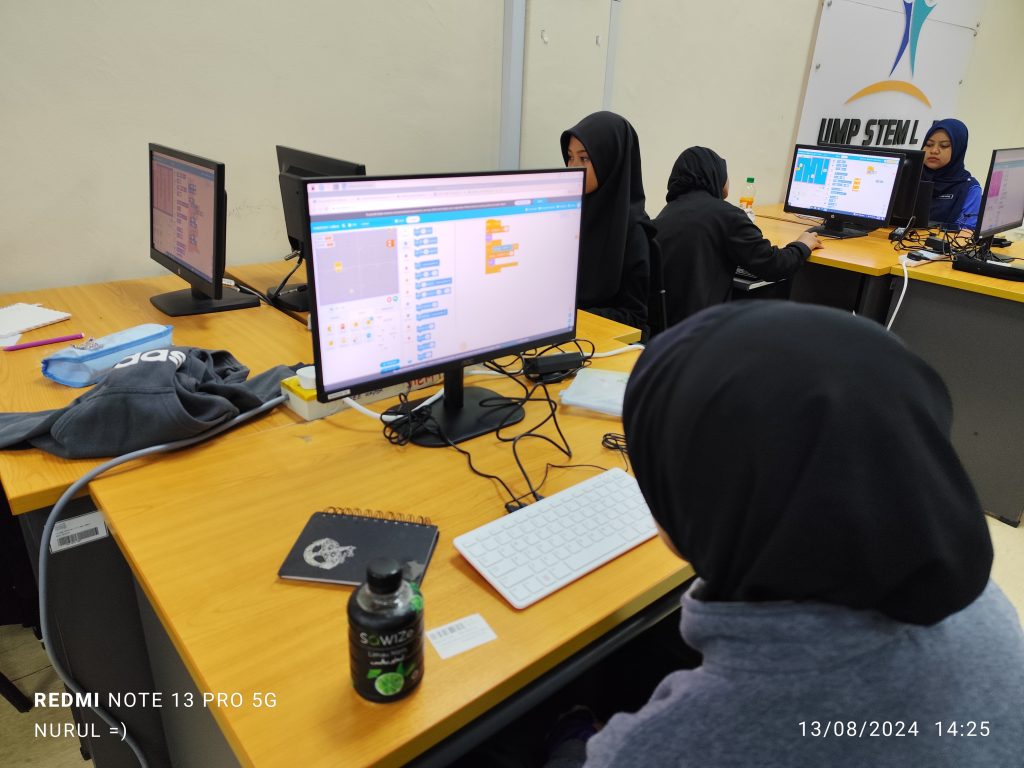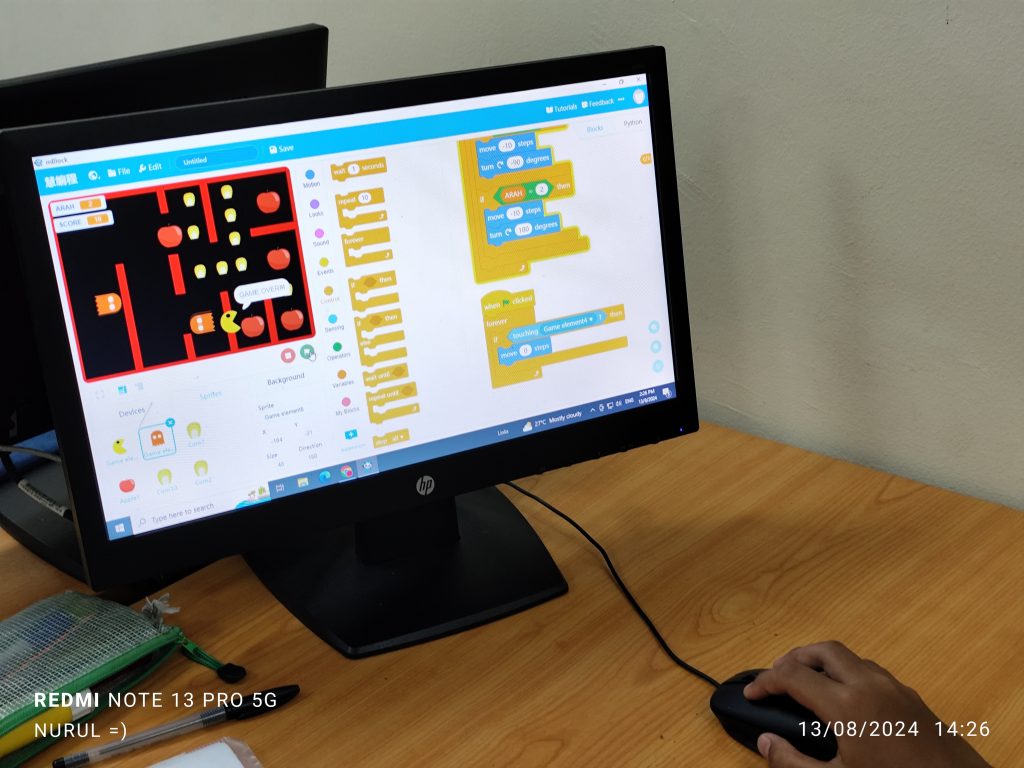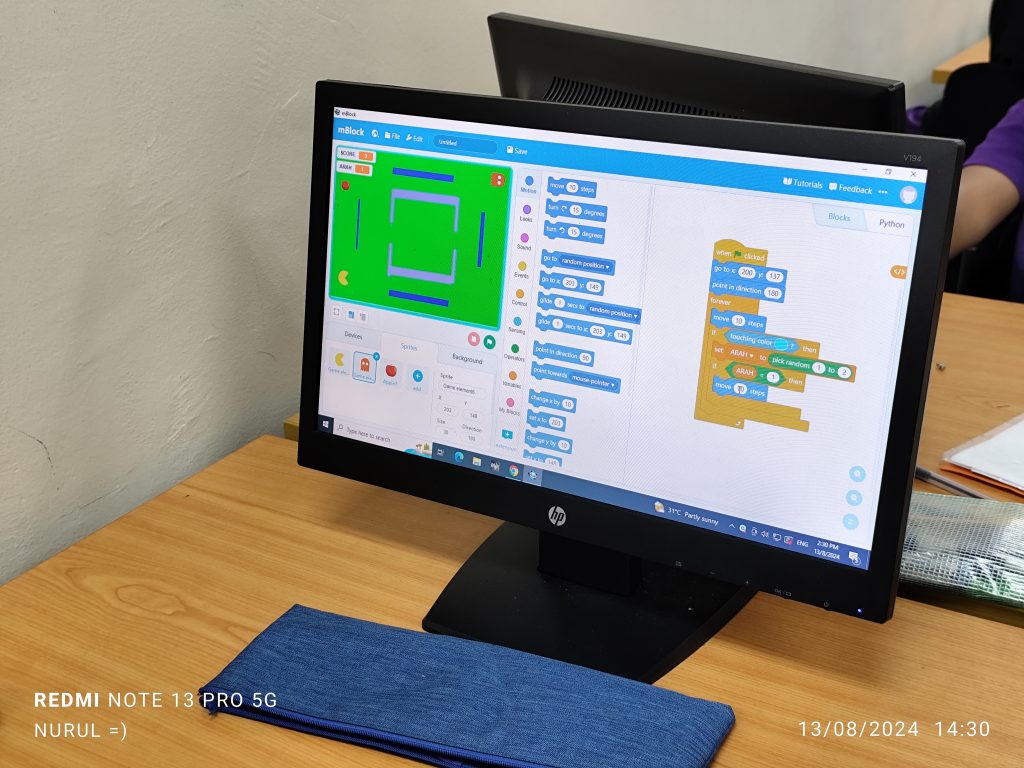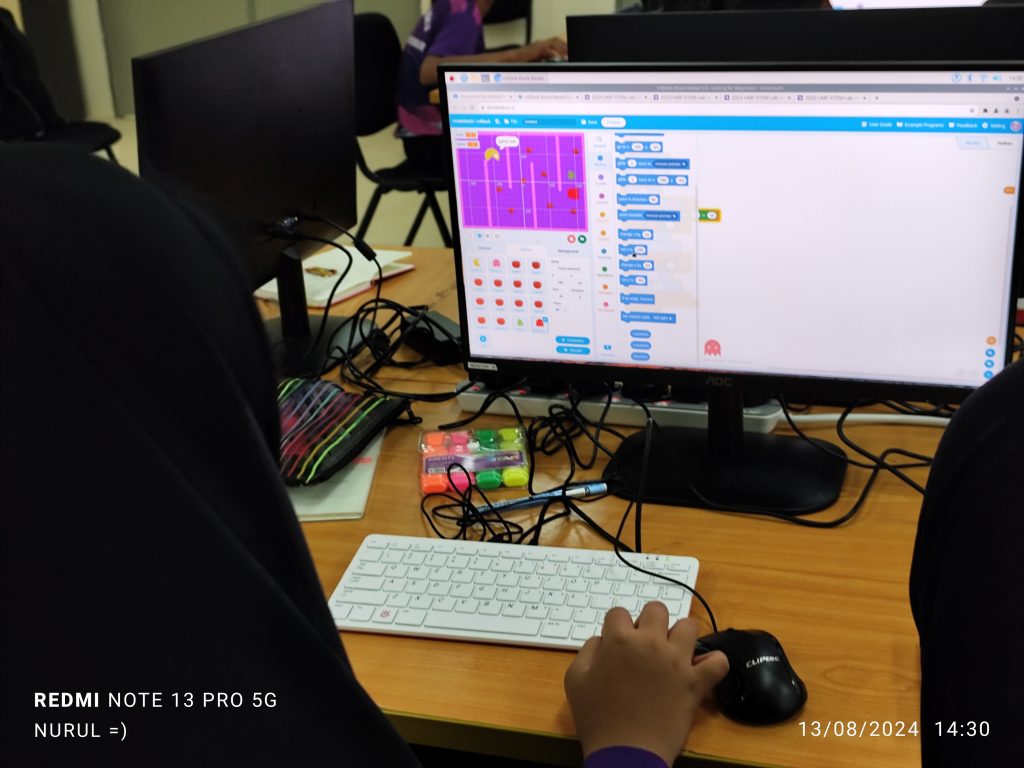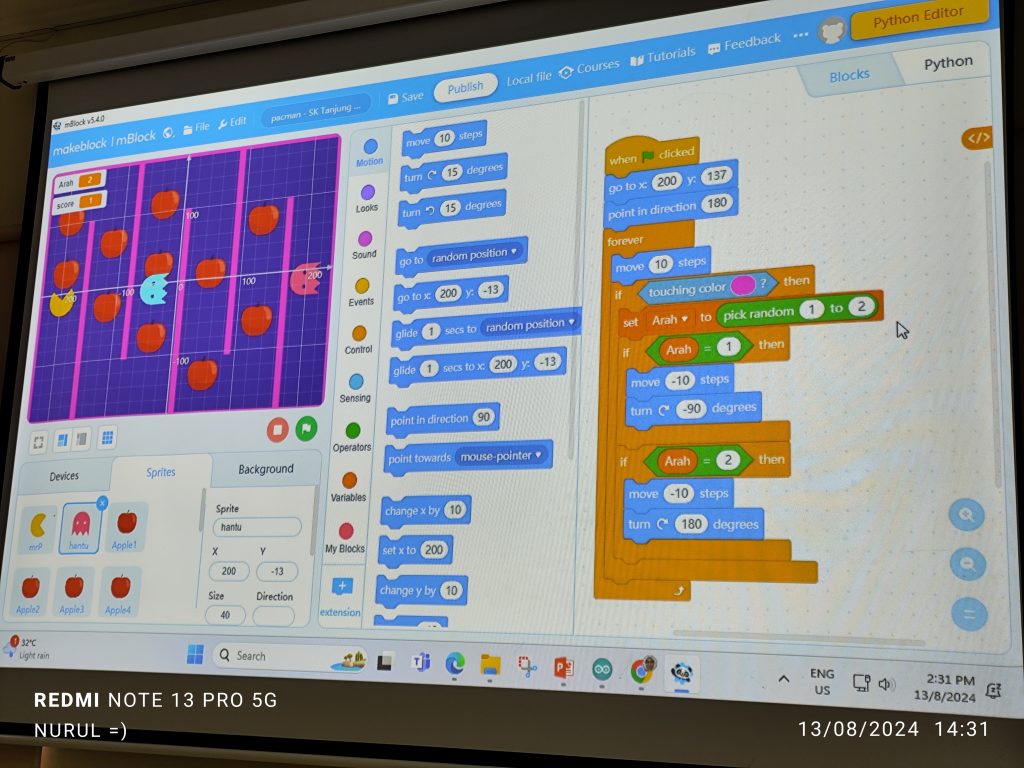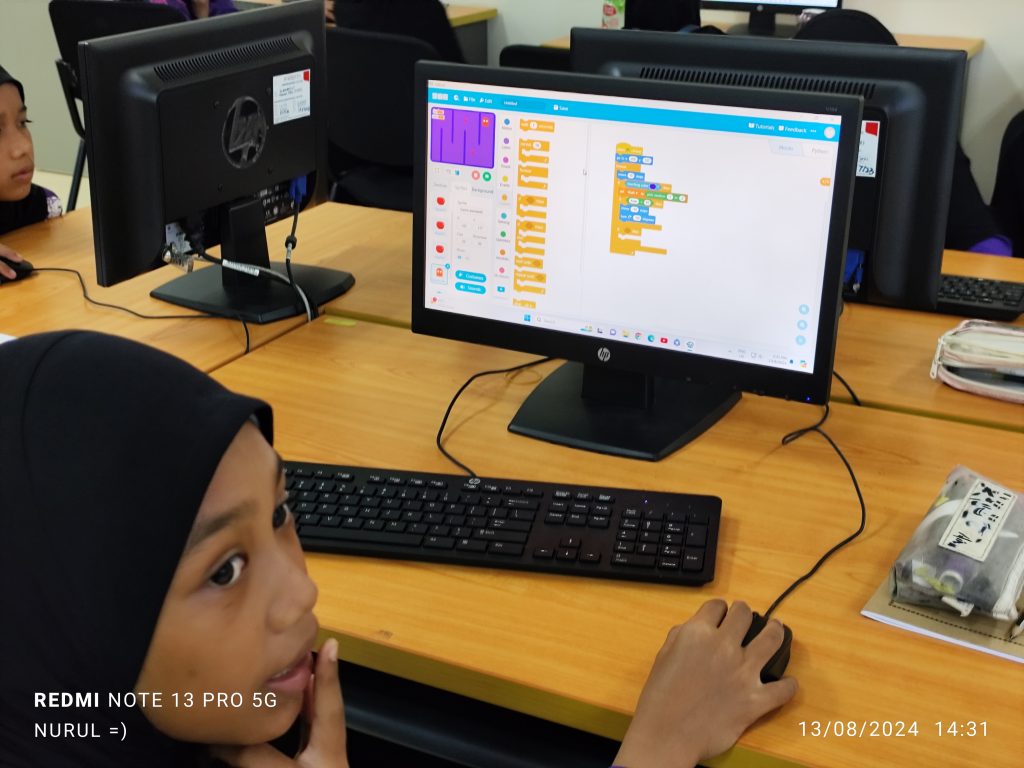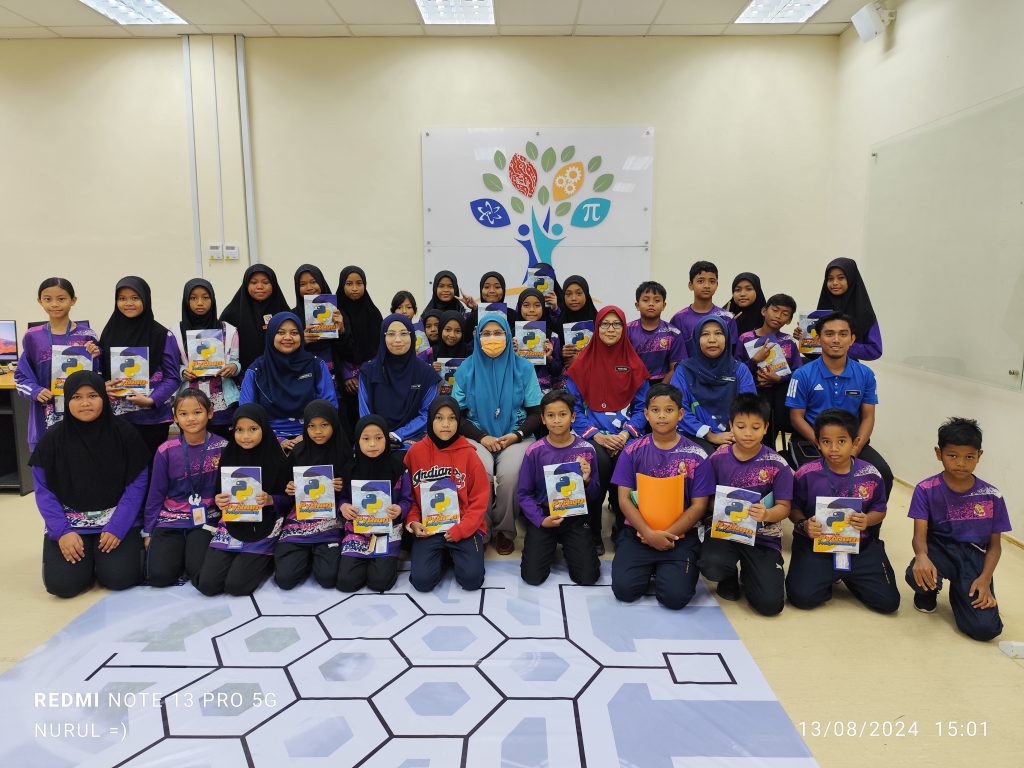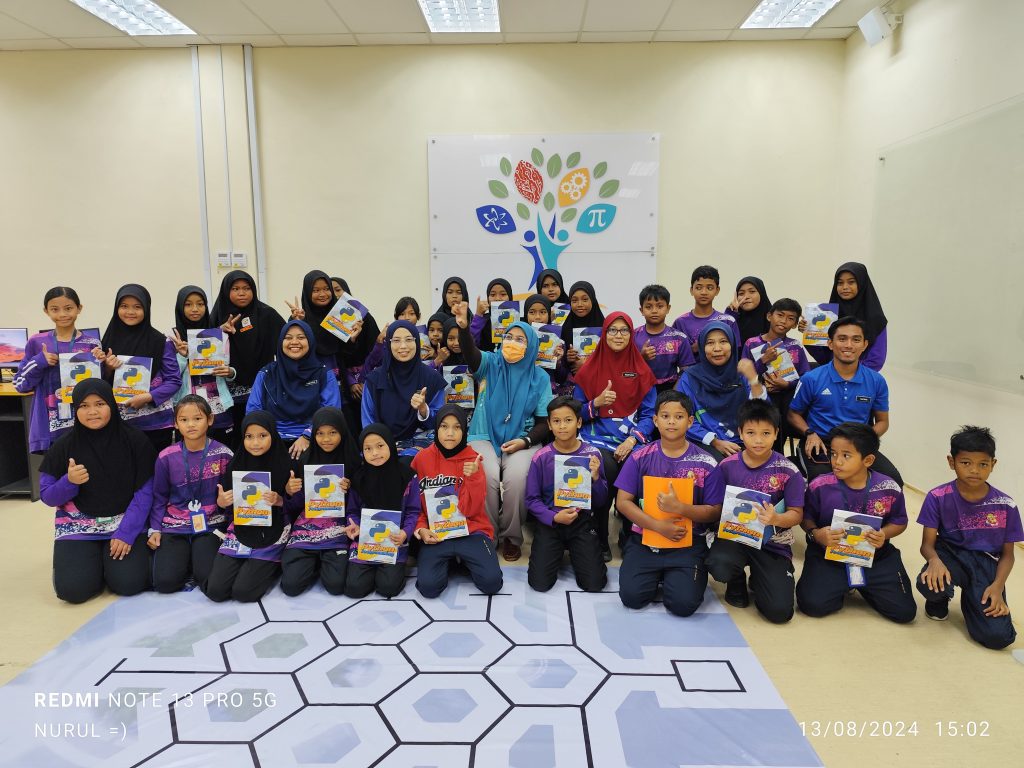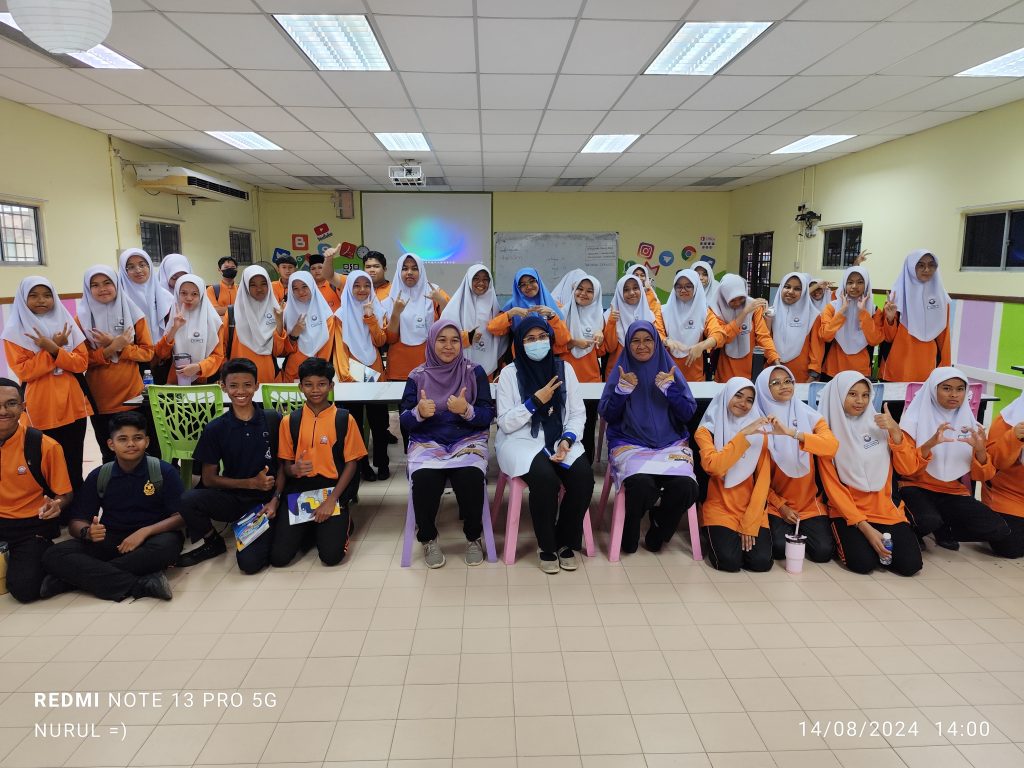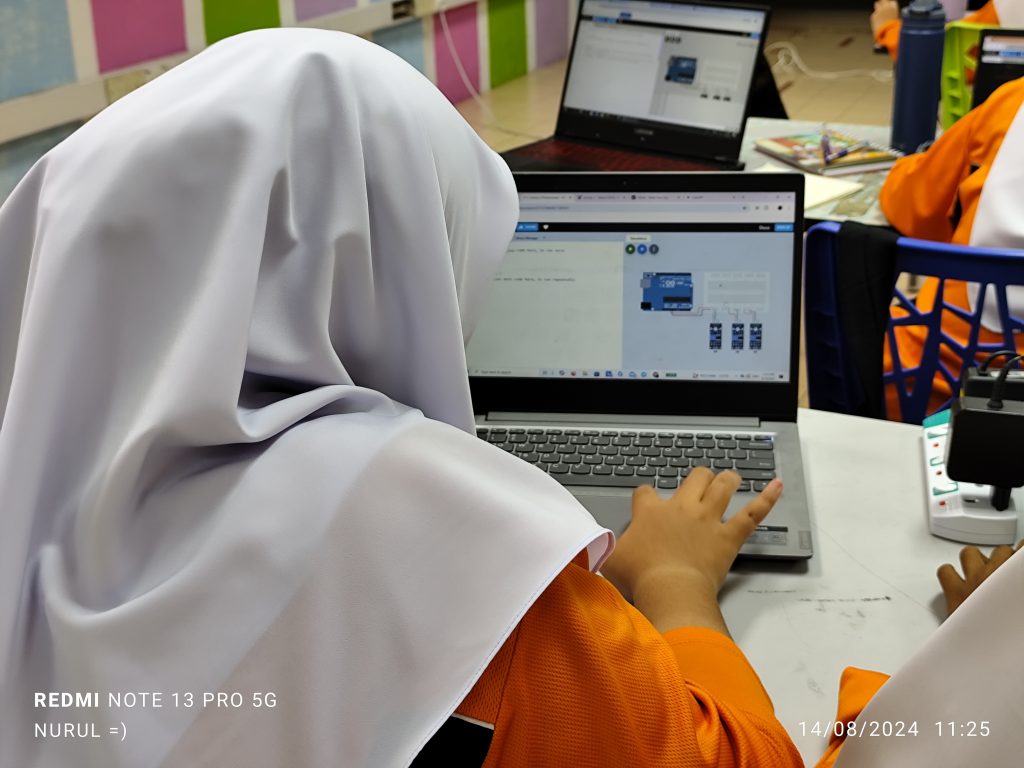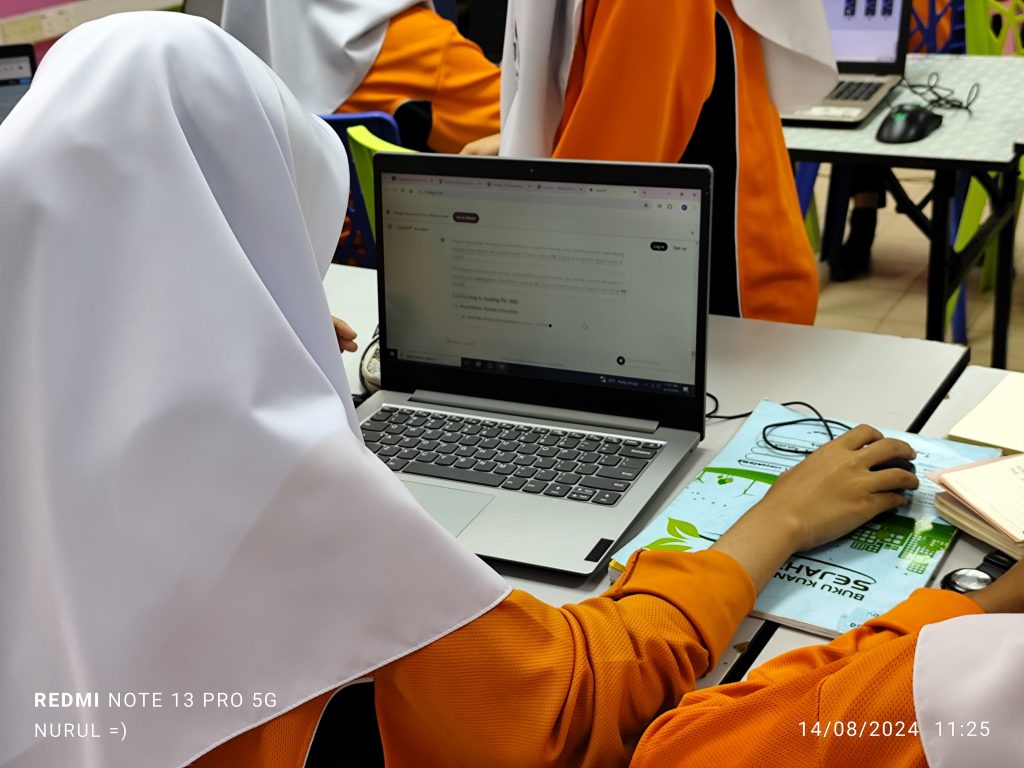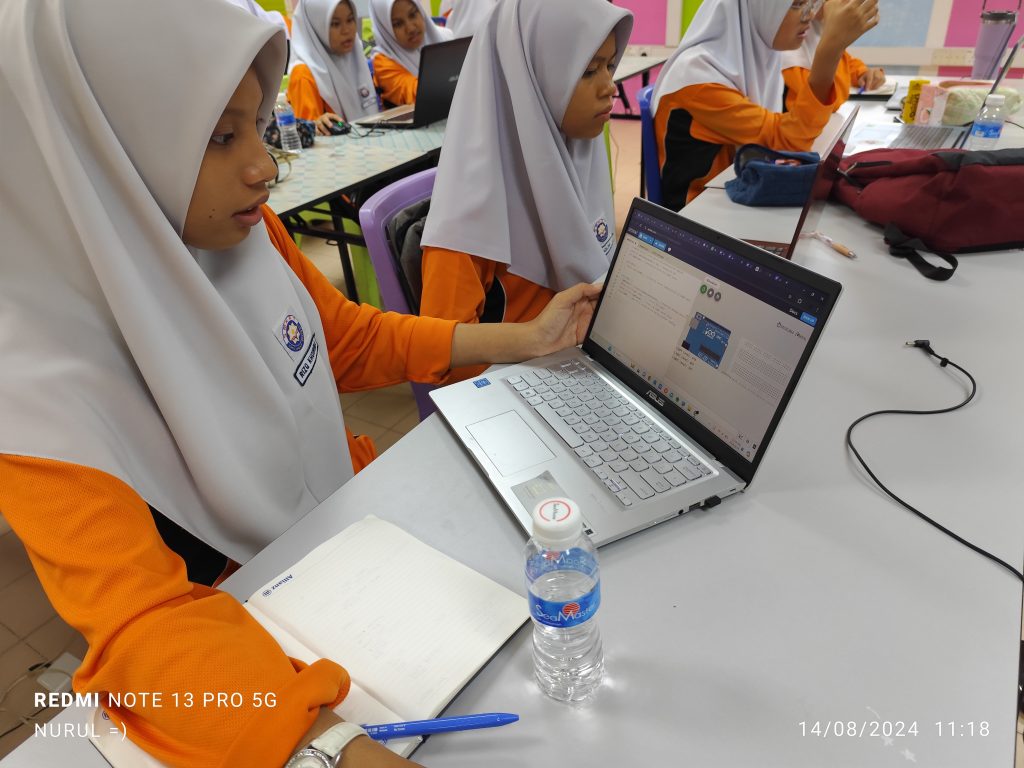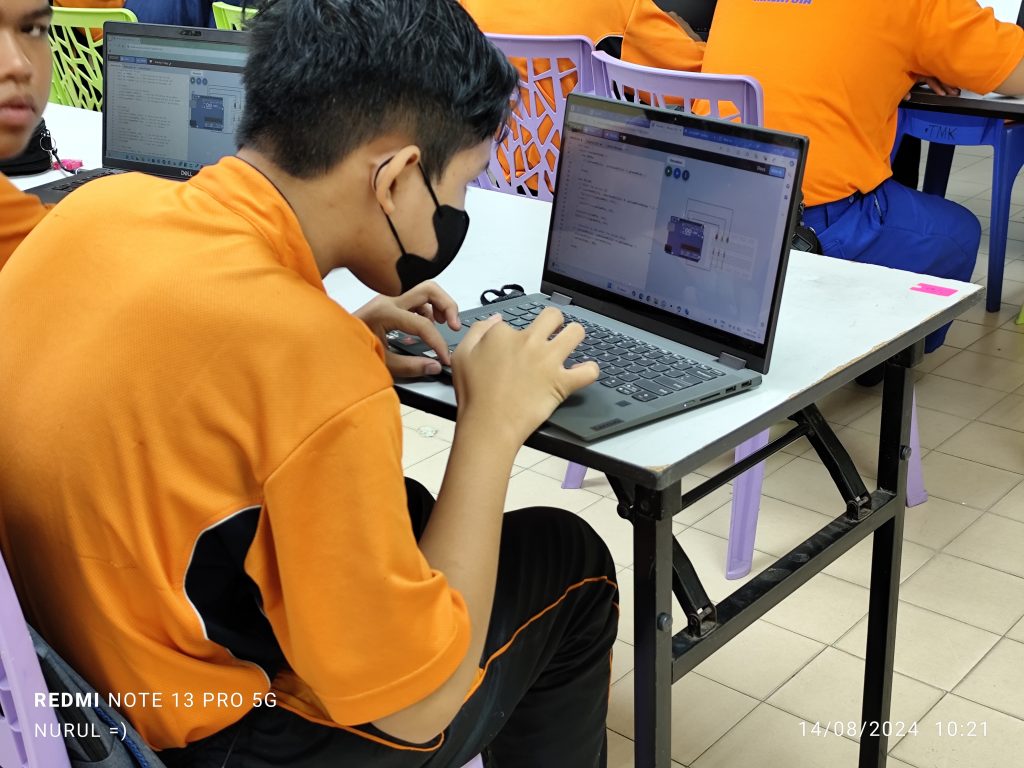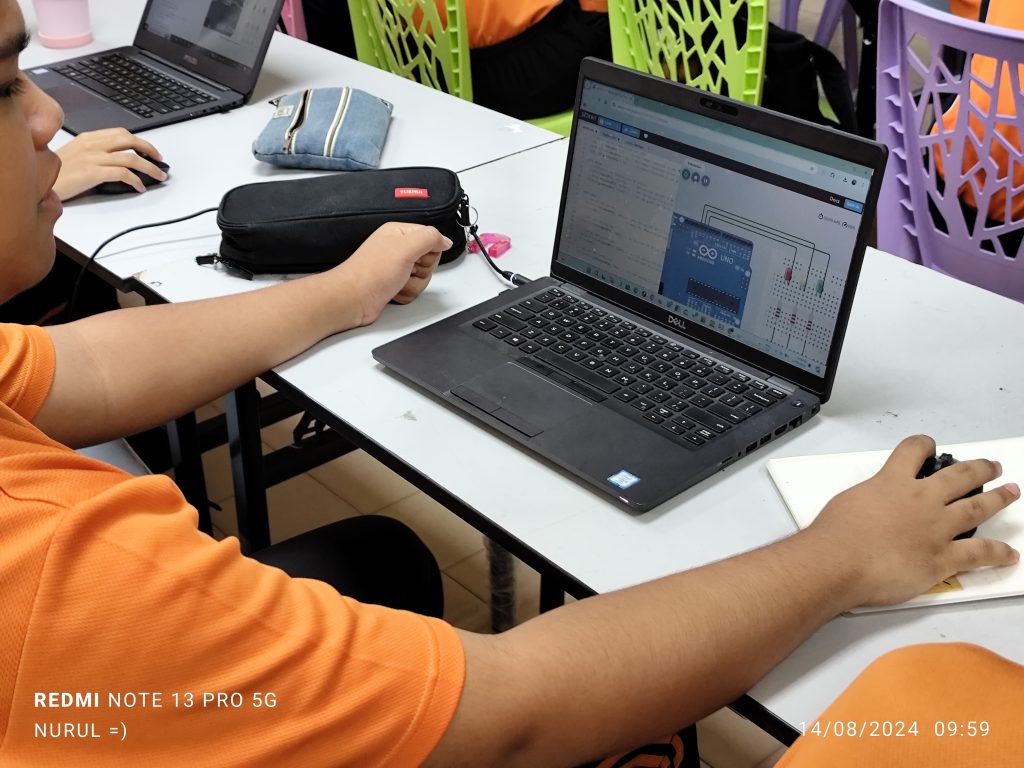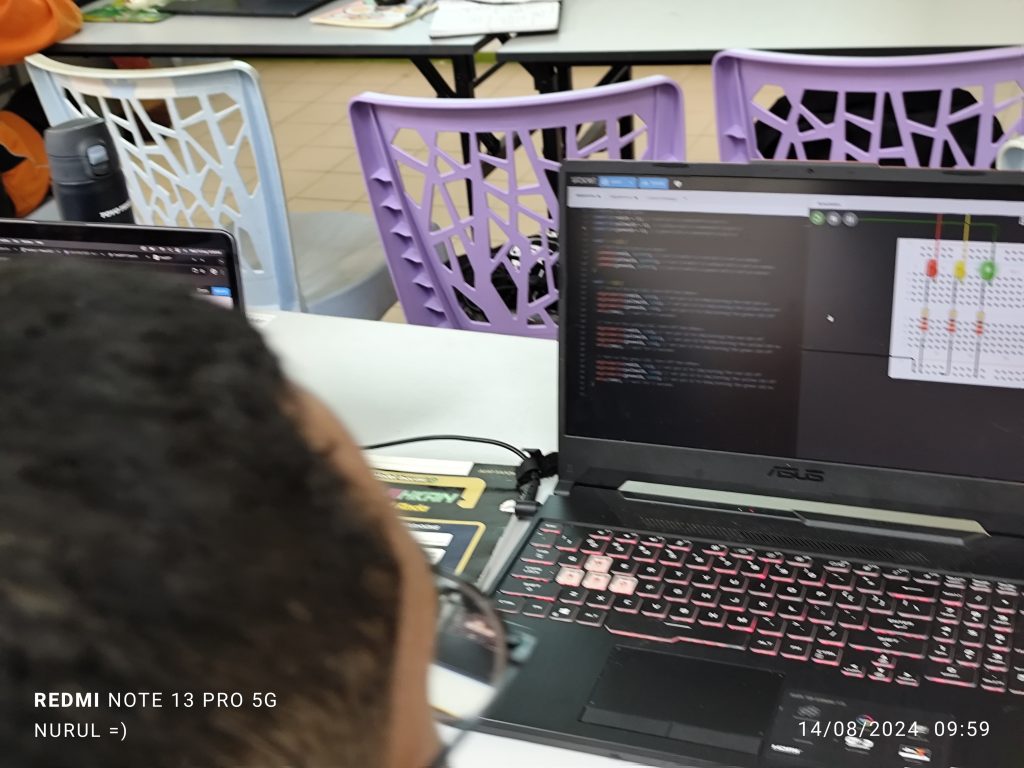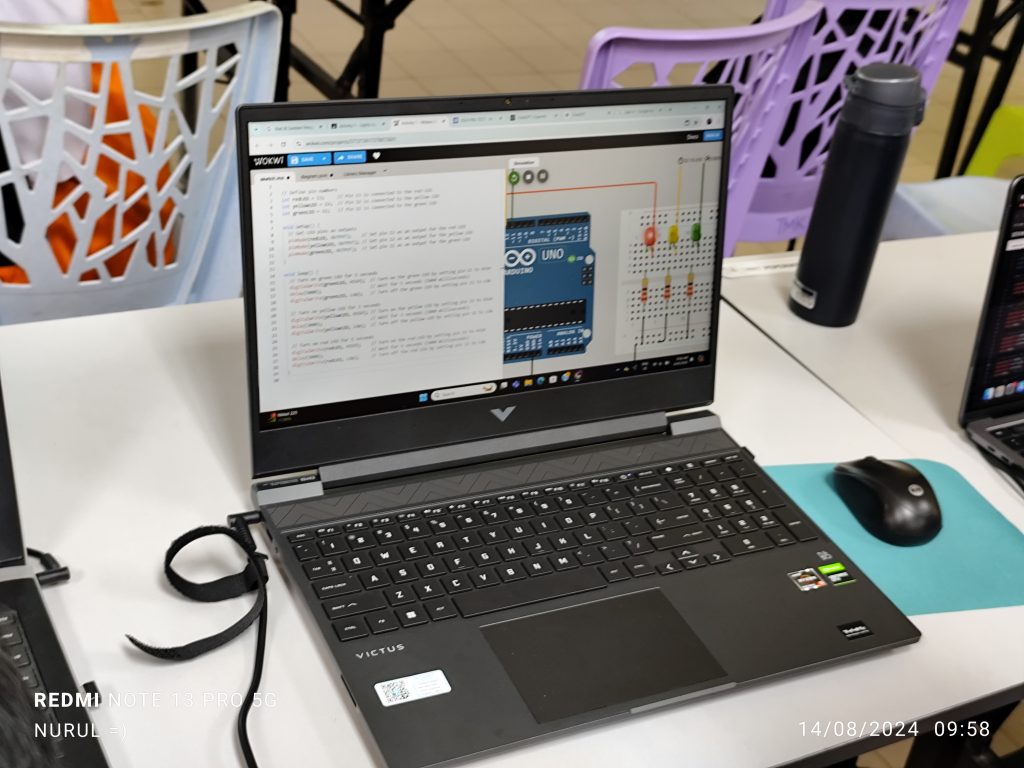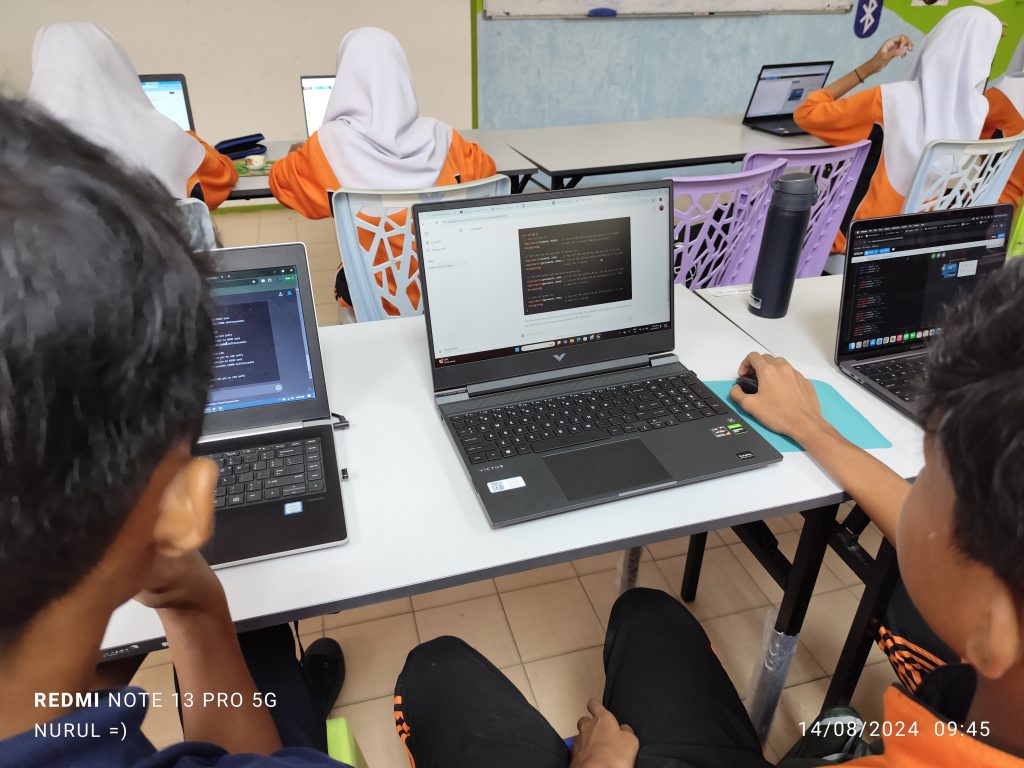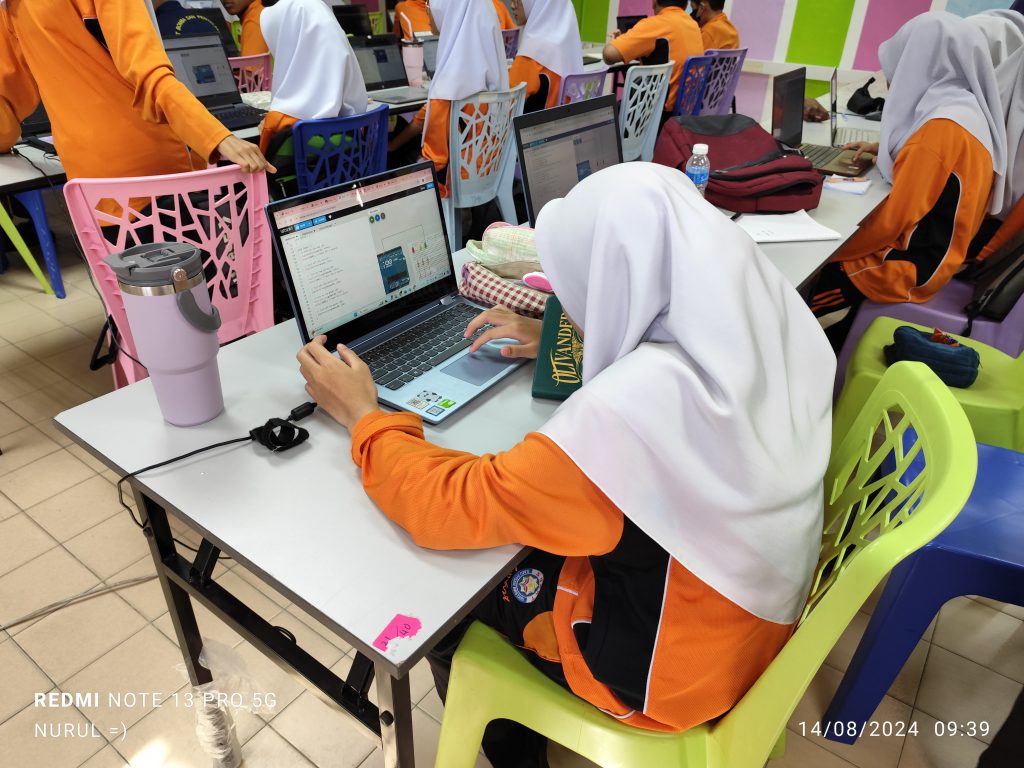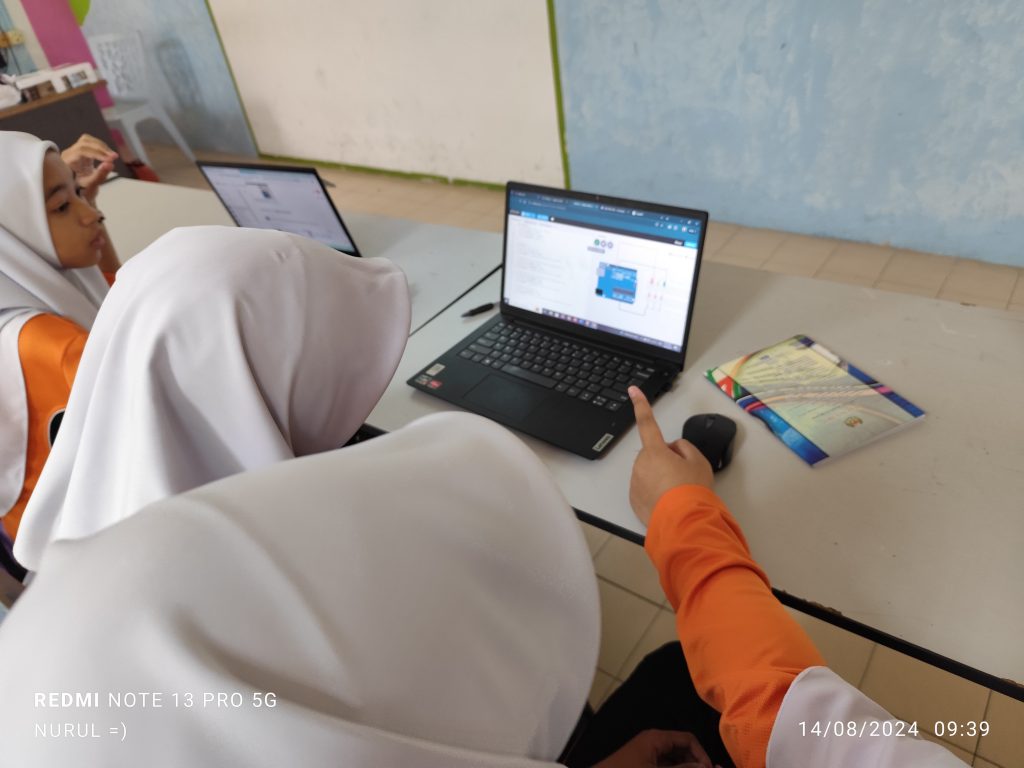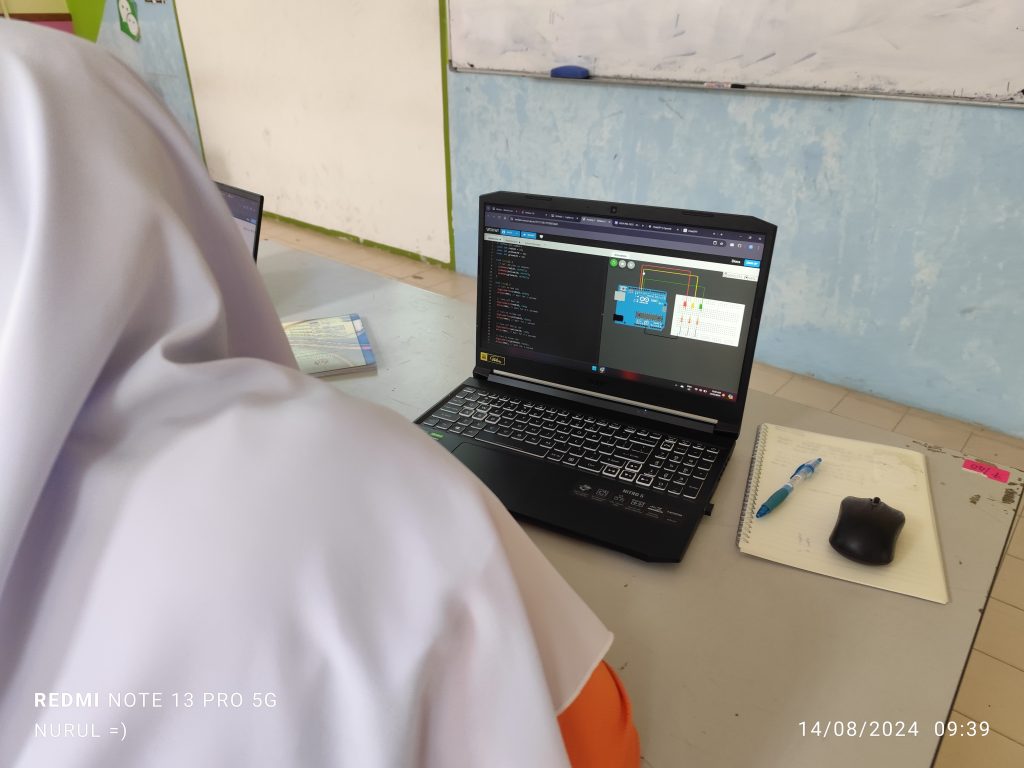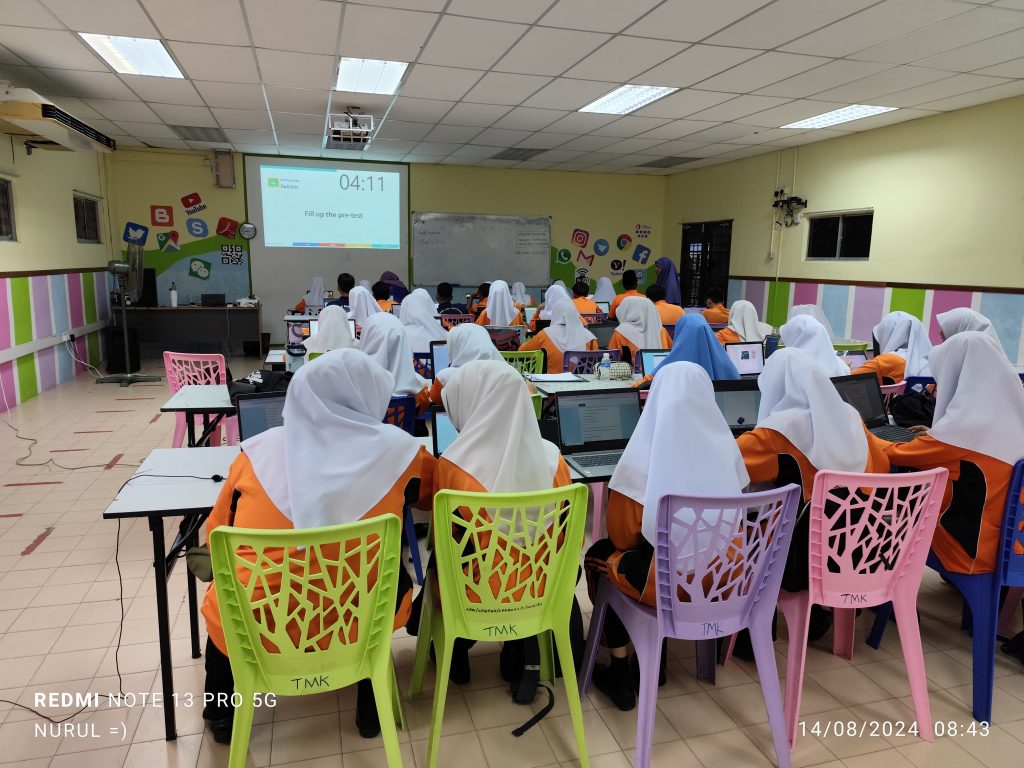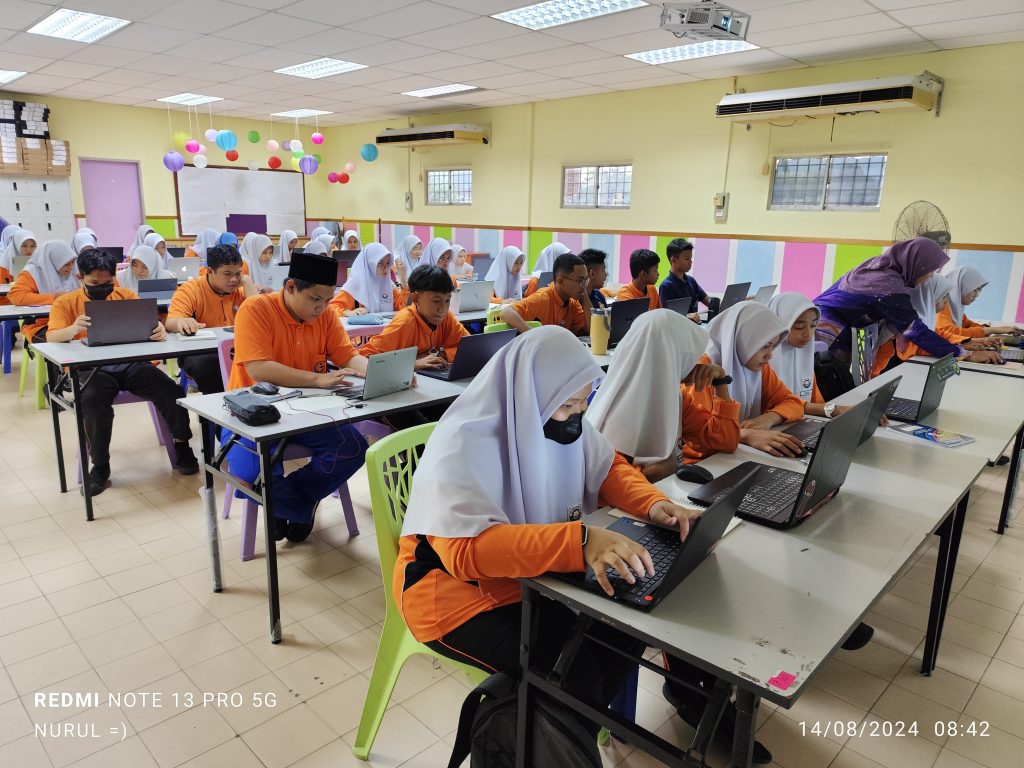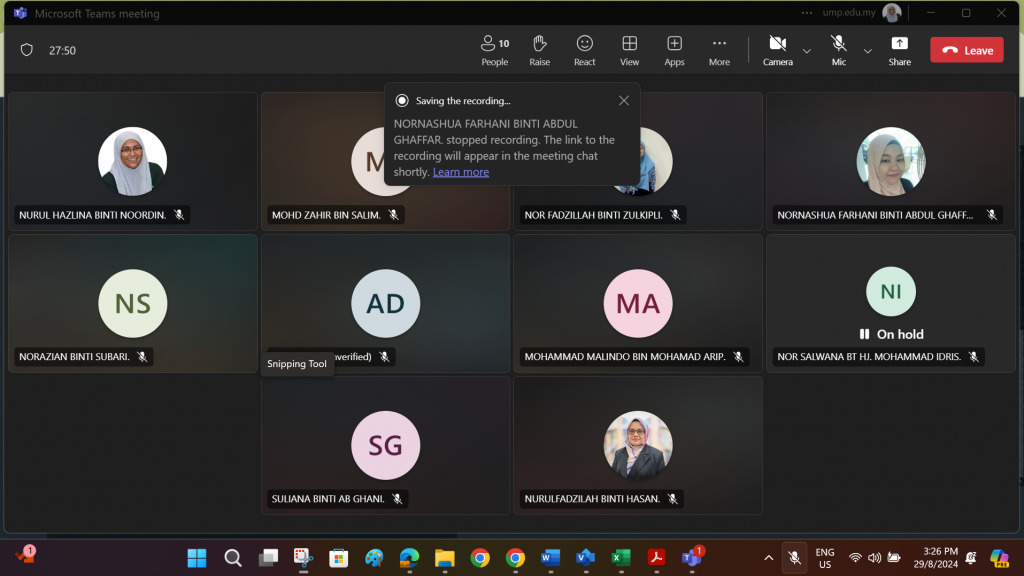
Month: August 2024
Majlis Fakulti 2024
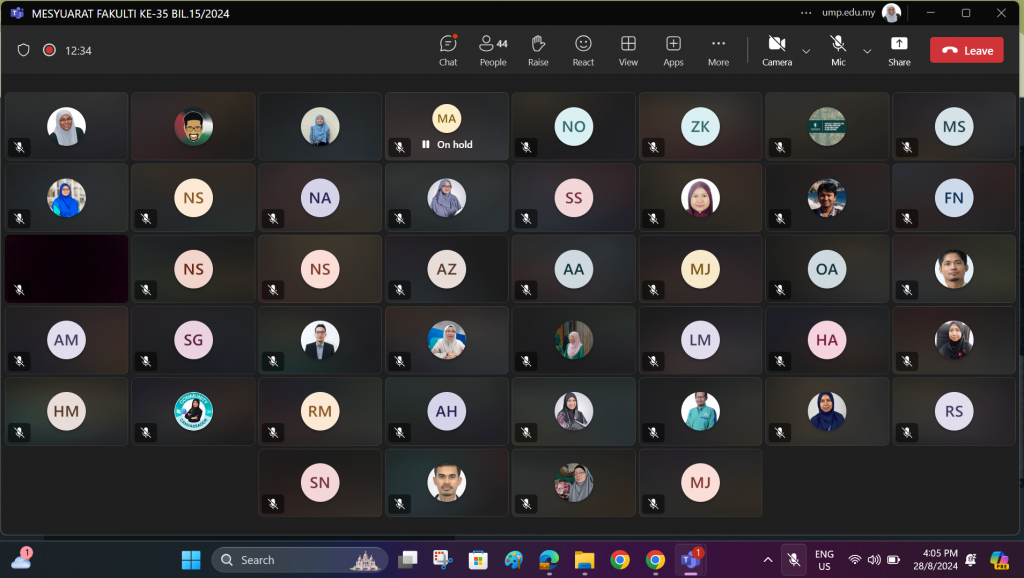
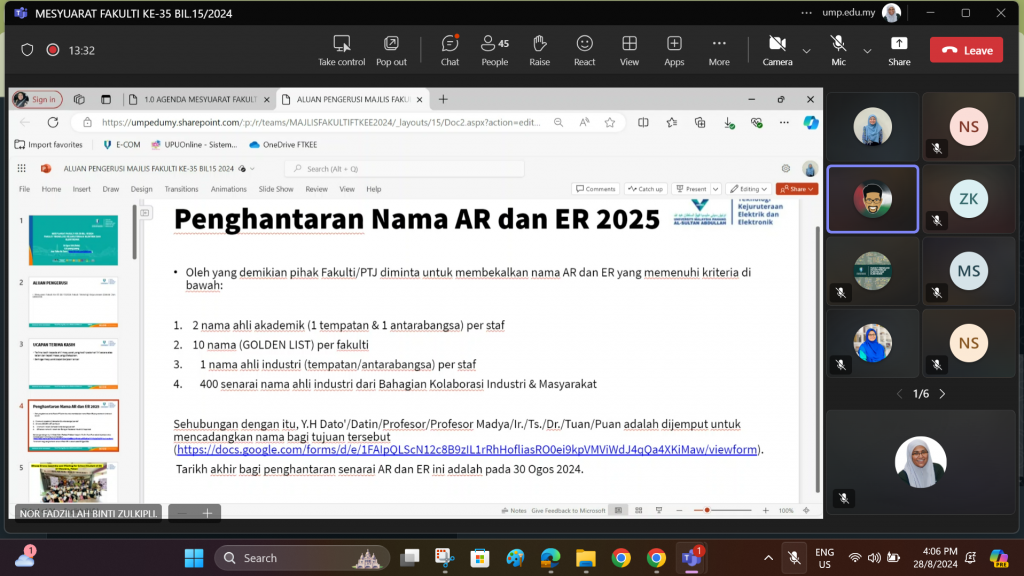
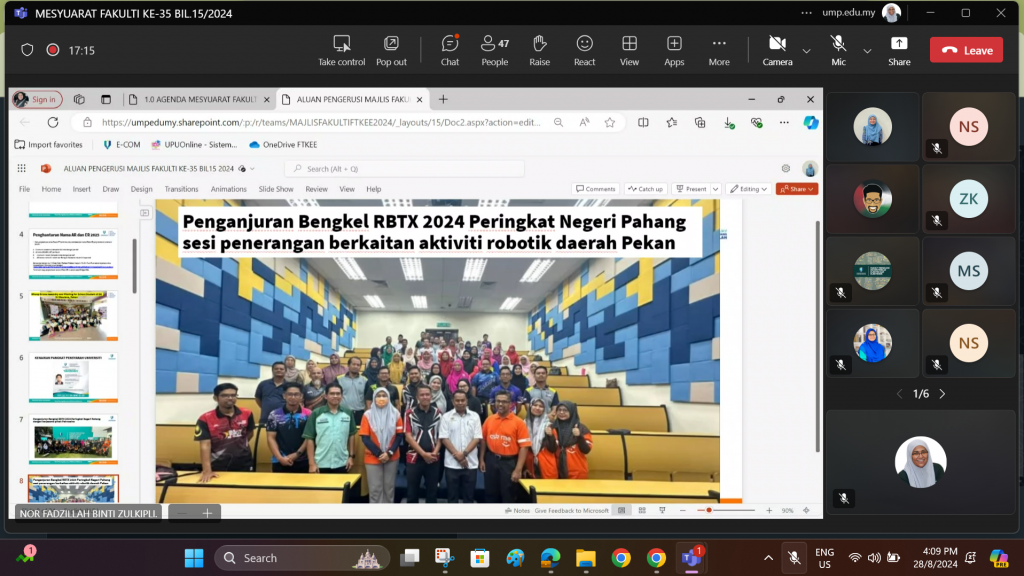
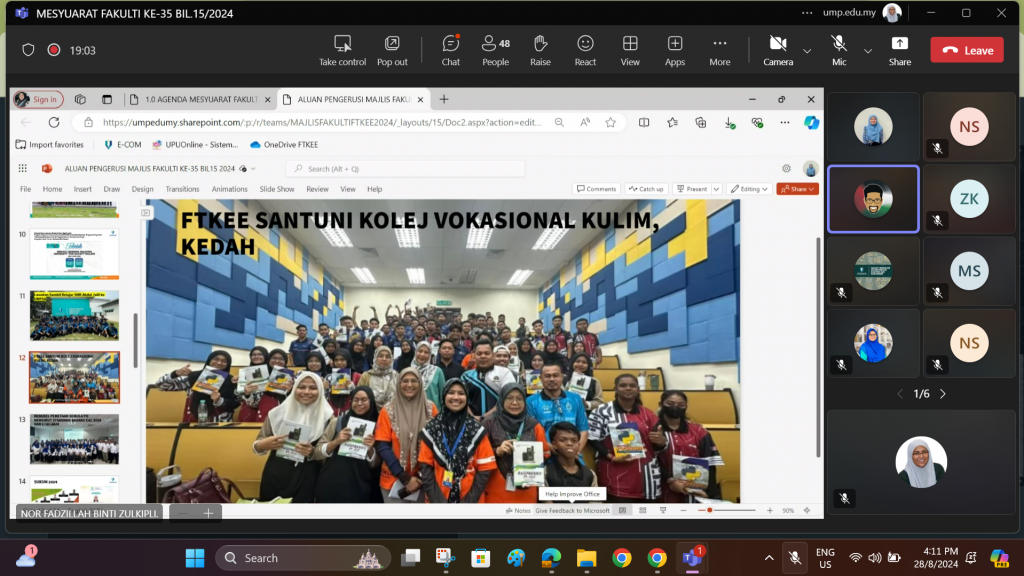
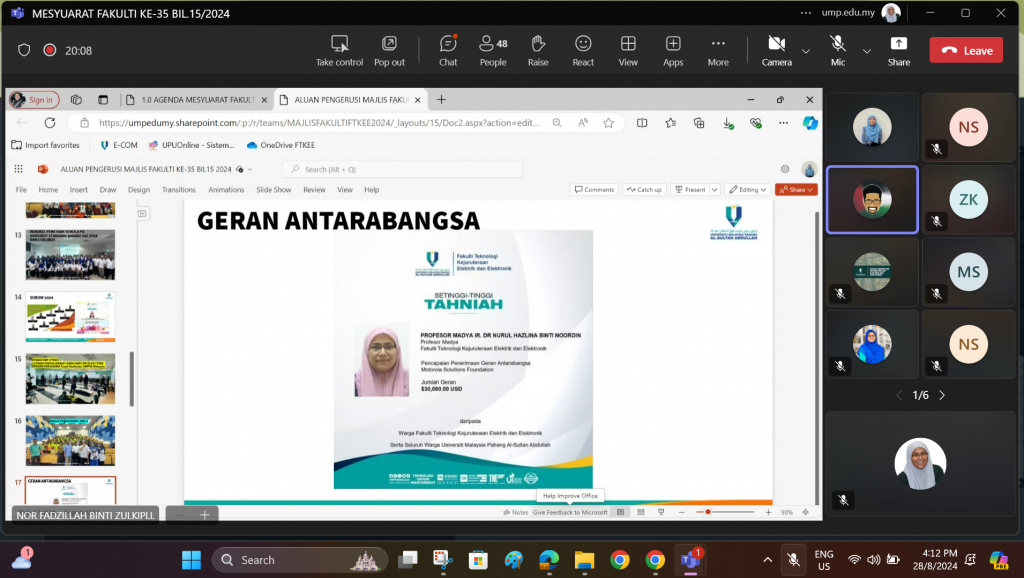
Best Practices in General Studies and STEM (BIGS 2024)
Had the opportunity to present a topic on Digital Making Skills Learning Experience with UMP STEM Cube. This project is listed as one of the finalist for 2024 Best Practices in General Studies and STEM, organized by Bhg Kurikulum, Jabatan Pendidikan Politeknik & Kolej Komuniti, Kementerian Pengajian Tinggi (MoHE).
https://www.facebook.com/bigsjppkk2019/videos/760044096134488/
https://www.facebook.com/bigsjppkk2019/videos/961405232338364
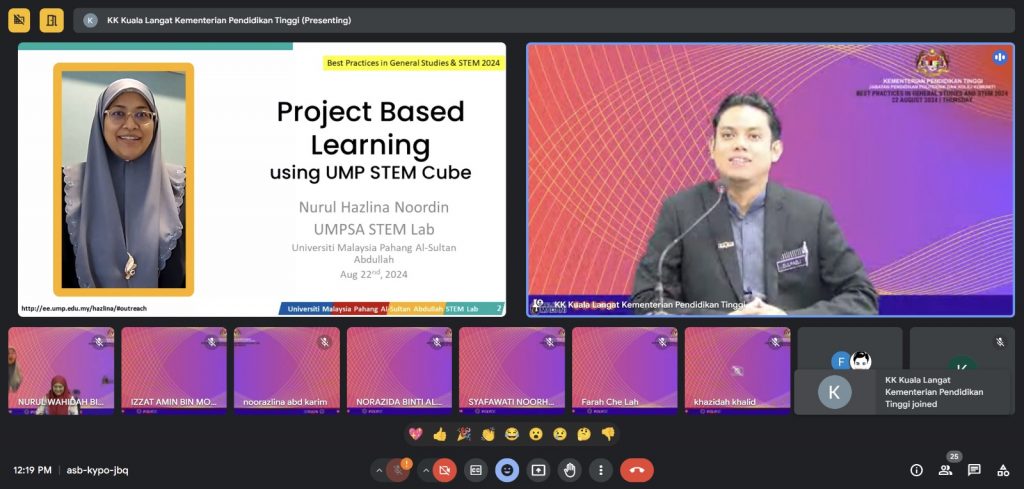
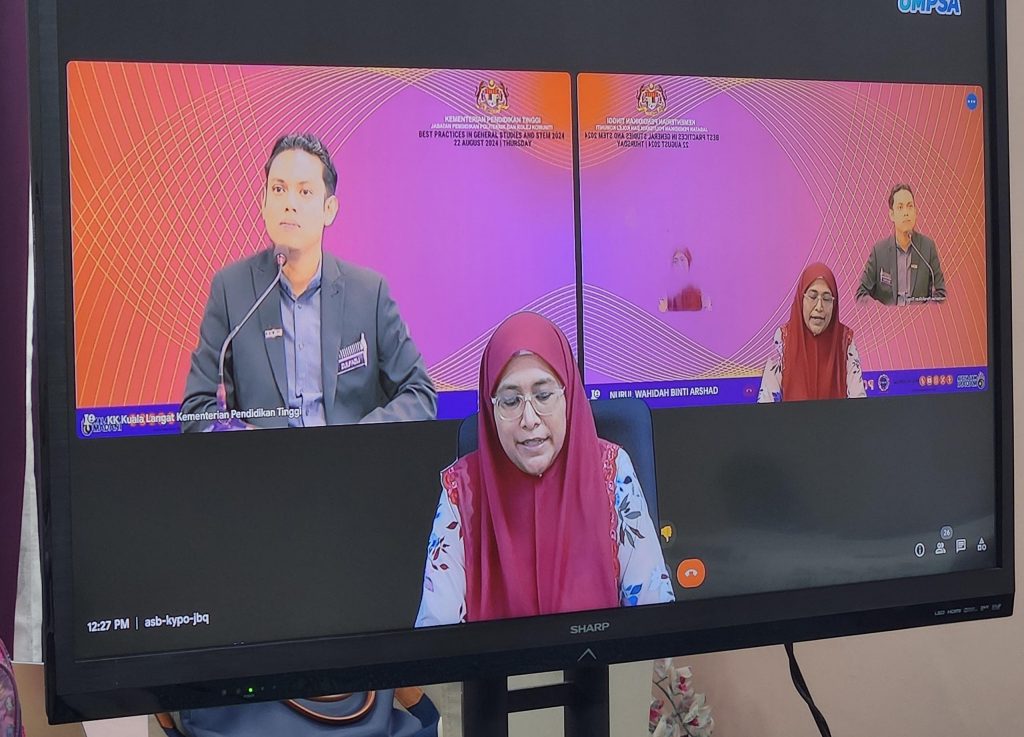



Kolb’s Experiential Learning Theory outlines a four-stage cycle: Concrete Experience, Reflective Observation, Abstract Conceptualization, and Active Experimentation. When applied to programming education with the UMP STEM Cube, tiered scaffolding supports students as they progress through each stage of this cycle.
- Concrete Experience (Starting with the Basics) – By engaging directly with the UMP STEM Cube, students gain immediate, tangible experience with coding and hardware.
- Reflective Observation (Understanding and Analyzing) – Students can observe the effects of their code in real-time, reflecting on how their inputs directly influence the Cube’s behavior.
- Abstract Conceptualization (Building on Knowledge) – Through more advanced projects, students conceptualize how different components work together, deepening their understanding.
- Active Experimentation (Independent Exploration) – Students take ownership of their learning by actively experimenting with the Cube, solidifying their understanding through trial and error.

Tiered scaffolding is a teaching strategy that provides structured support to students, gradually removing that support as they become more proficient. When applied to programming education using the UMP STEM Cube, this method offers a clear pathway for novices to develop their skills in a supportive and encouraging environment.
Effective Strategies for Tiered Scaffolding
- Starting with the Basics –We begin with simple tasks like making an LED blink. This introduces students to basic concepts without overwhelming them, allowing them to get hands-on experience with coding and hardware interaction.
- Introducing Incremental Complexity –As students become more comfortable, we introduce slightly more complex tasks, such as controlling multiple LEDs or reading sensor data. These tasks are designed to build on what they’ve already learned, ensuring a smooth transition to more advanced topics.
- Providing Scaffolding Resources – To reduce the intimidation of writing code from scratch, we offer code templates and a system of hints. These resources guide students through challenges while encouraging independent problem-solving.
- Encouraging Independent Exploration – Once students have a solid grasp of the basics, we encourage them to design their own projects. Open-ended assignments foster creativity and allow students to apply their knowledge in new and innovative ways.
- Fostering Peer Support and Collaboration – Group activities and peer review sessions play a crucial role in this approach. They not only help students learn from one another but also build confidence through collaboration.
- Gradual Removal of Scaffolding – As students progress, we gradually remove the scaffolding, encouraging them to tackle problems independently. This step is crucial for developing resilience and preparing them for more advanced challenges.

The tiered scaffolding approach, combined with the UMP STEM Cube, has shown great promise in addressing the common challenges faced by novice programmers. By providing structured support and gradually increasing complexity, students can build their skills at a pace that suits their learning needs.
Among the findings are:-


The feedback from the BiGS 2024 presentation was overwhelmingly positive, with many educators expressing interest in adopting this approach in their own classrooms. The UMP STEM Cube, with its hands-on capabilities, paired with a structured learning framework, offers a powerful tool for educators looking to enhance programming education.
As we continue to refine and expand these practices, I am excited to see how they will further empower students to embrace the world of programming and STEM.


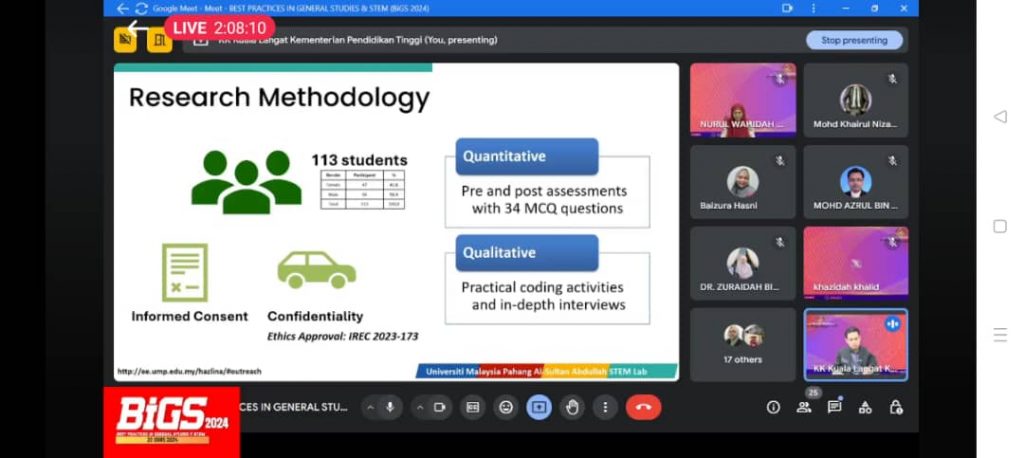
mBlock Programming 2024/7 – SK Pulau Serai
A synopsis of the program can be retrieved via the following link.
In the program, 29 participants from SK Pulau Serai Pekan were introduced to mBlock programming, learning to use its graphical interface to create sequences of instructions. They explored sequential programming, conditional statements, and loops through hands-on tutorials. These foundational skills were applied in two projects: a Snake game and a Pac-Man game. In the Snake game, they programmed the snake’s movement, growth, and collision detection, while in the Pac-Man game, they navigated a maze, collected points, and avoided ghosts. This approach provided a comprehensive understanding of programming concepts and their practical applications.
Appreciation to Cikgu Arjunaidah for coordinating the communication between the participants and UMPSA STEM Lab.
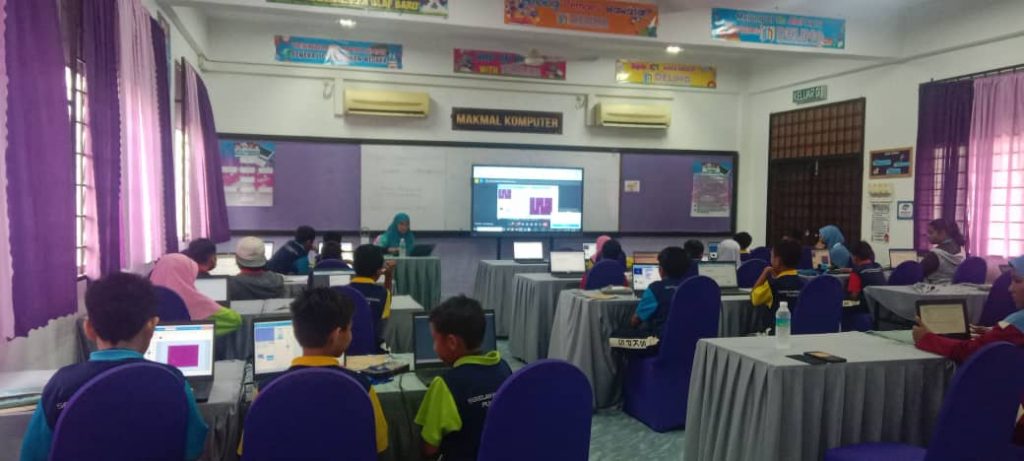
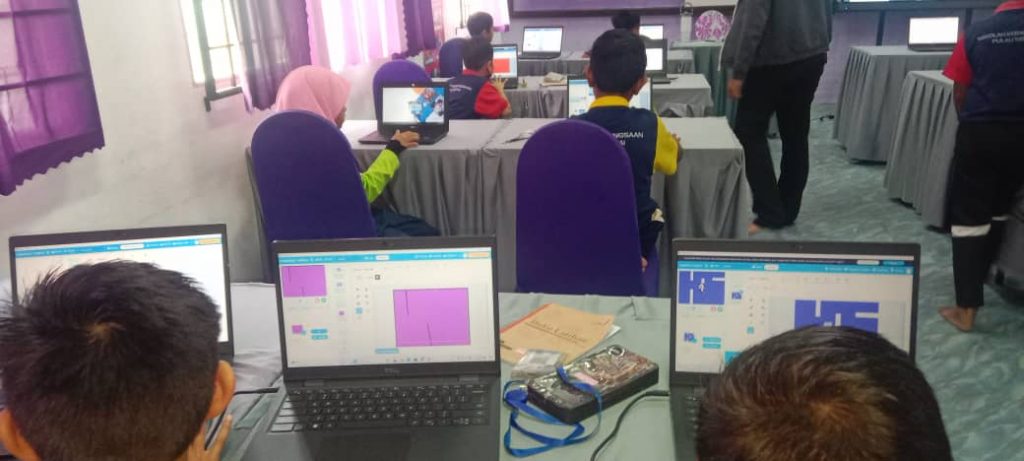
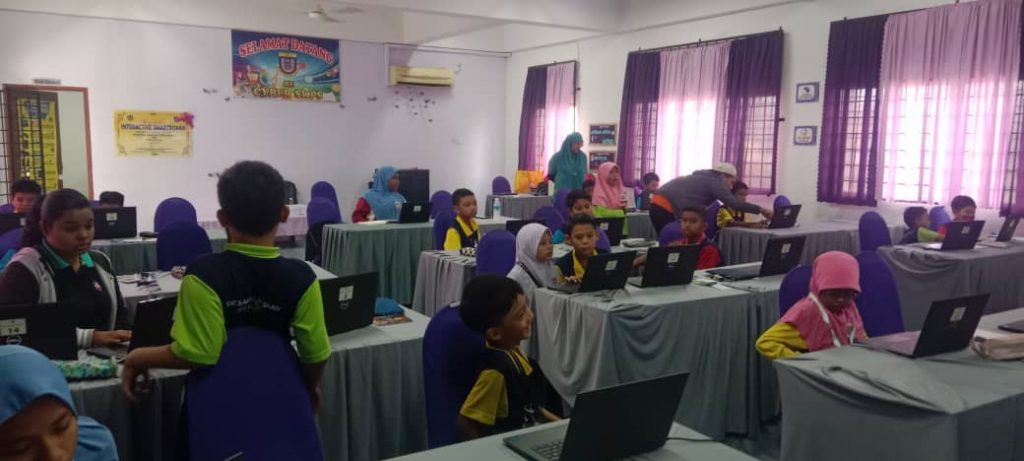
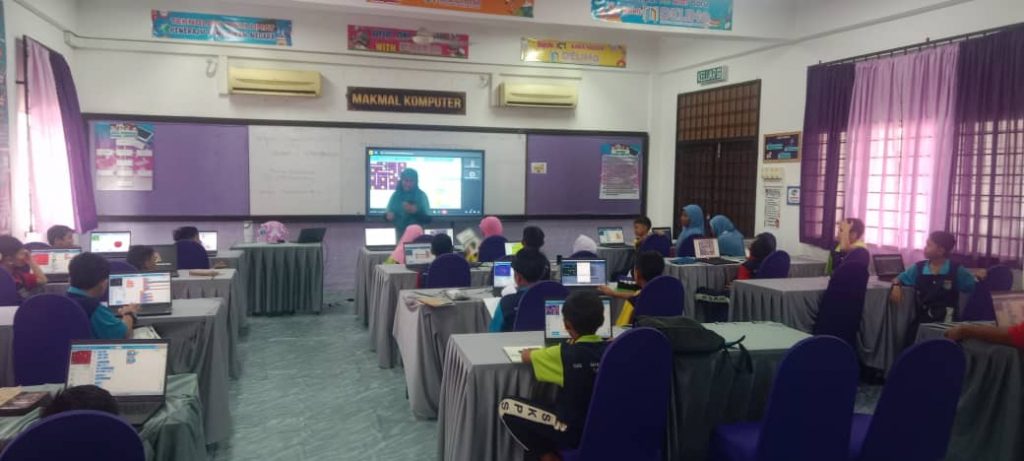




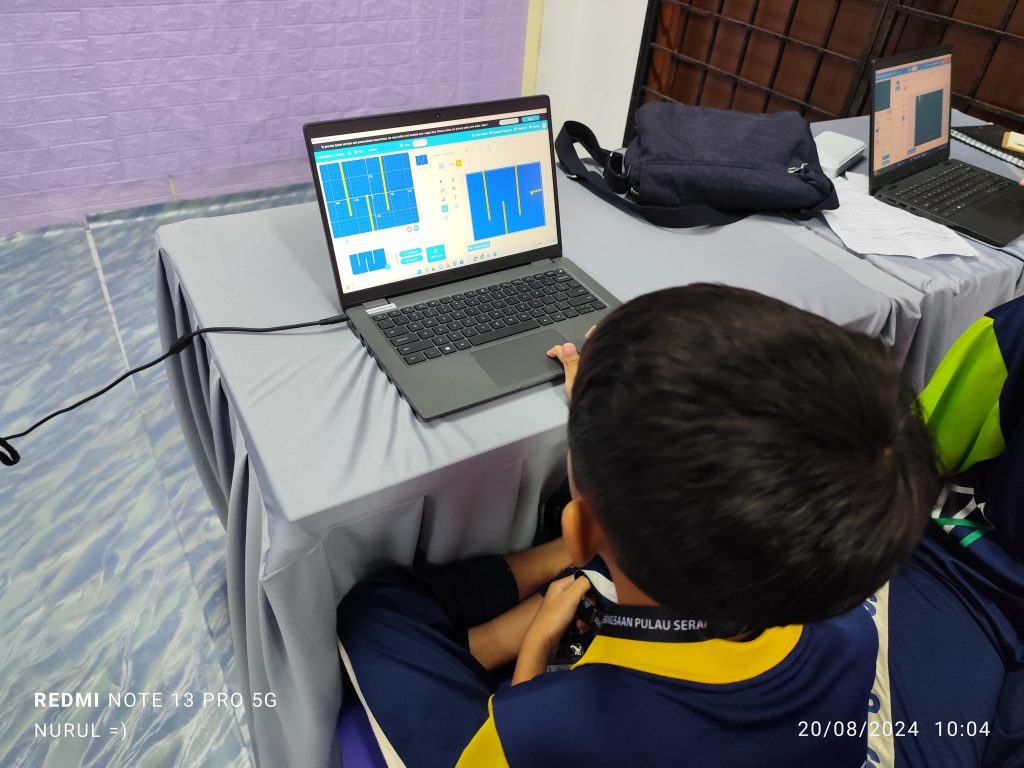
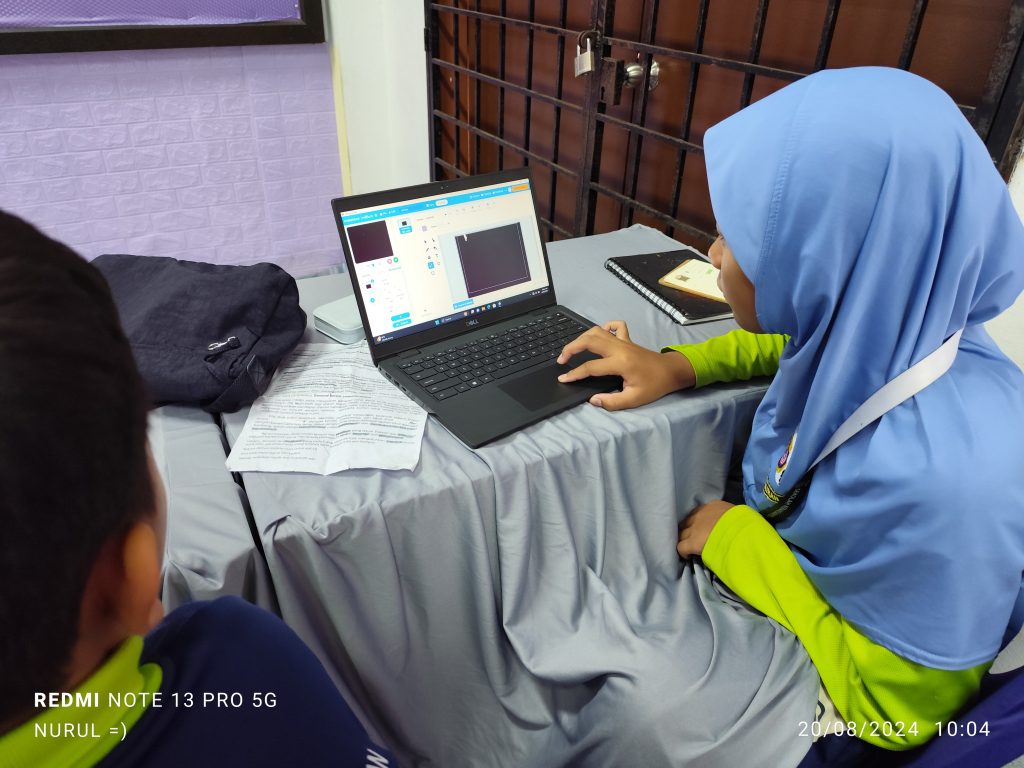
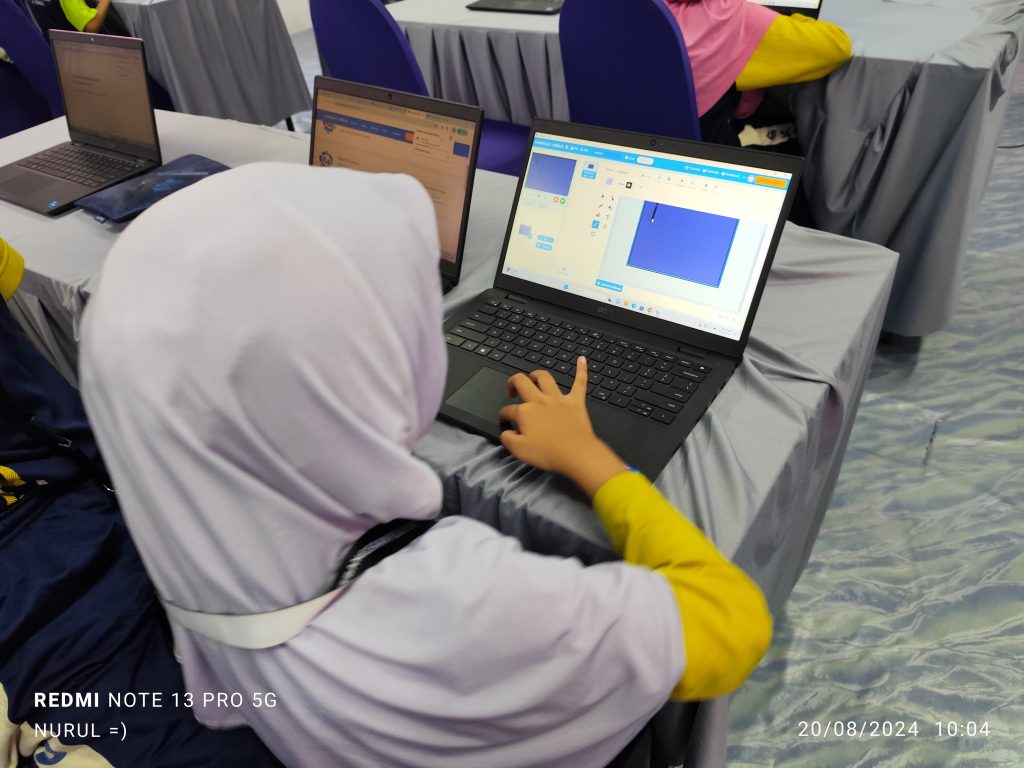

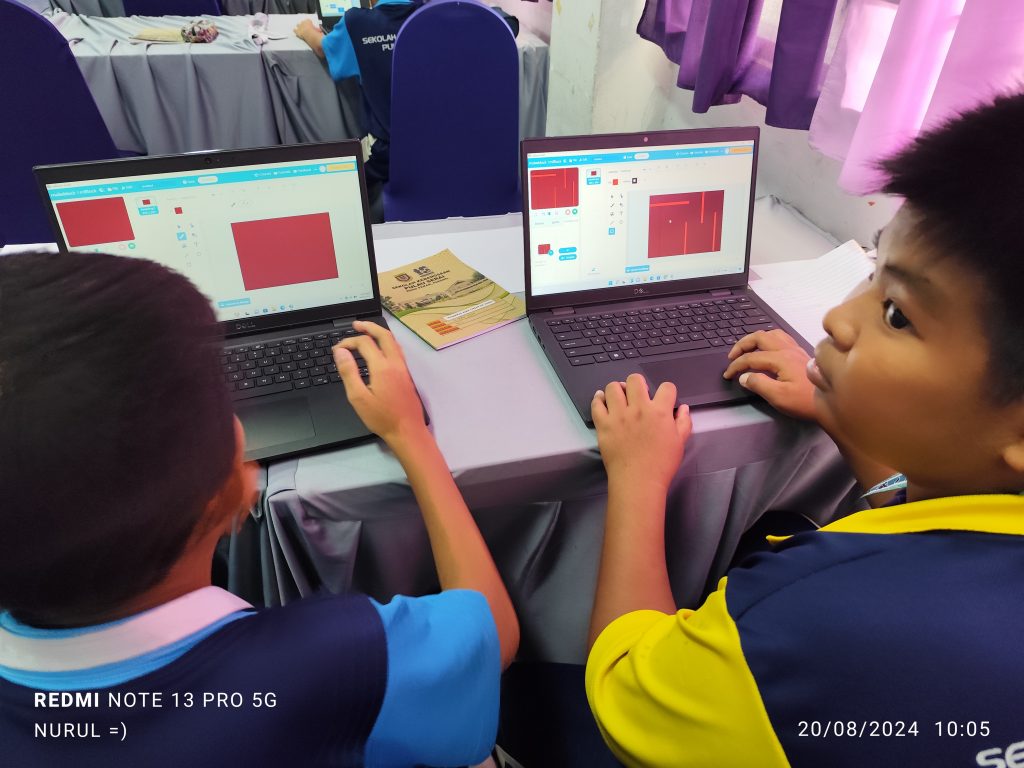
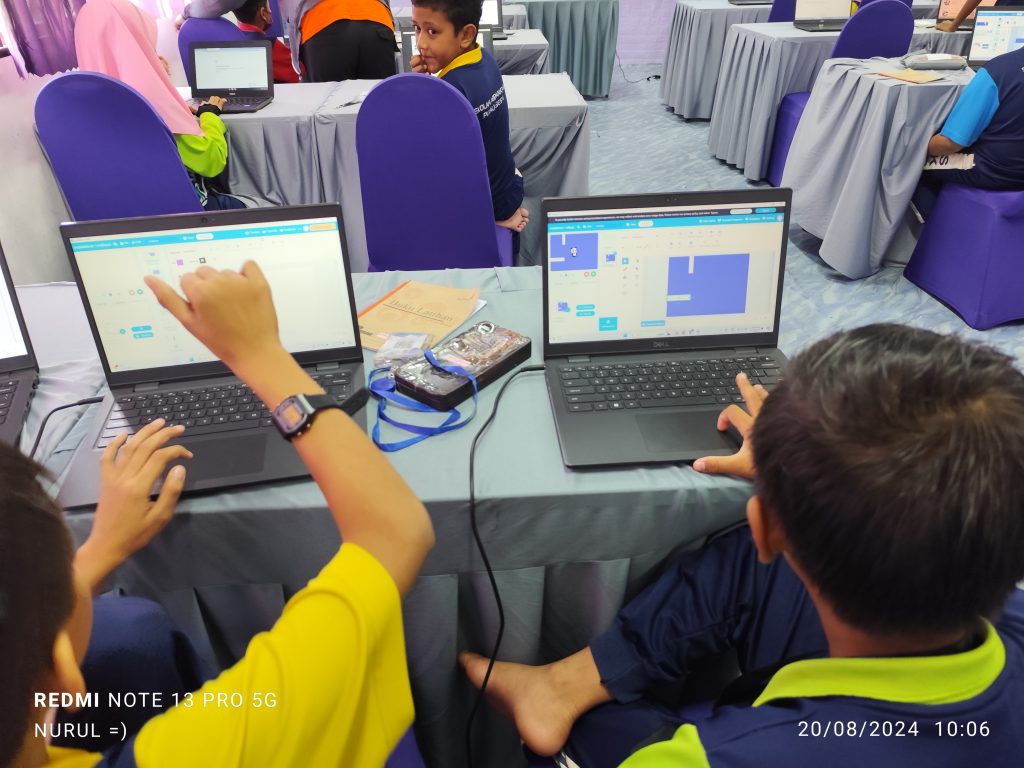
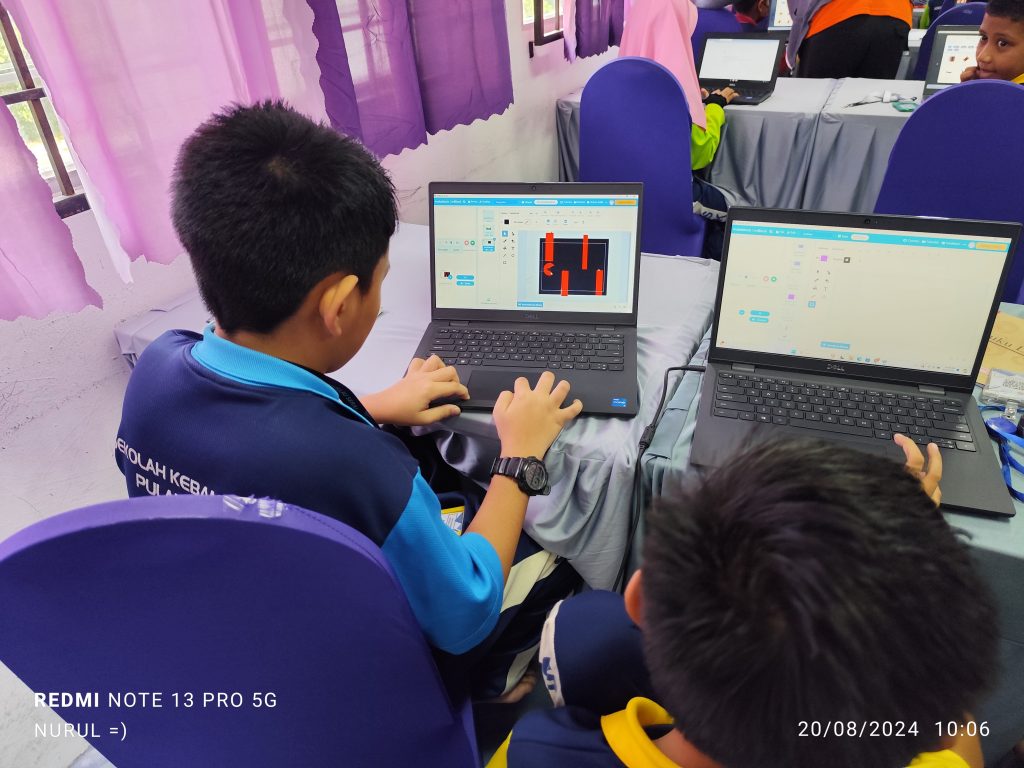
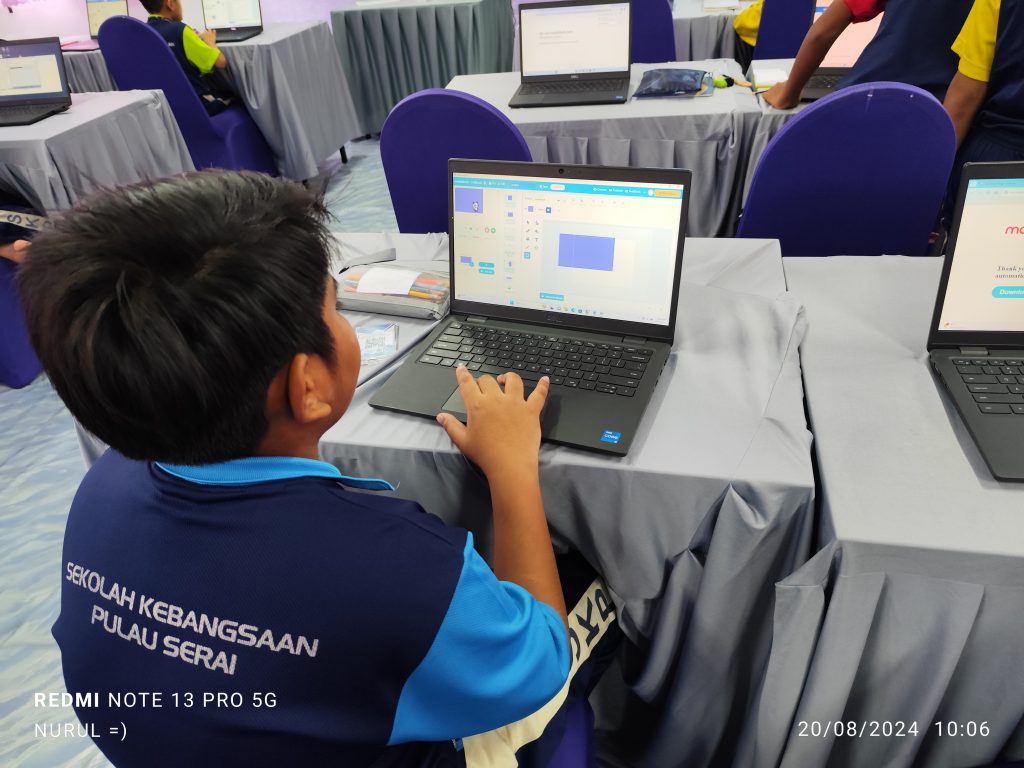
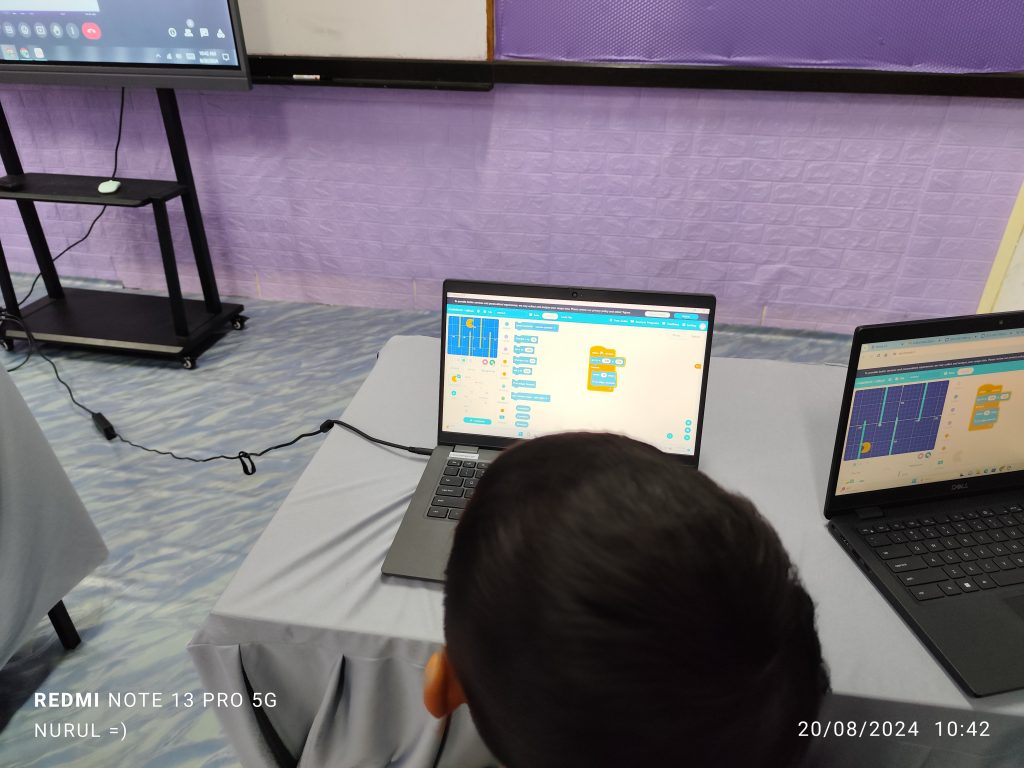
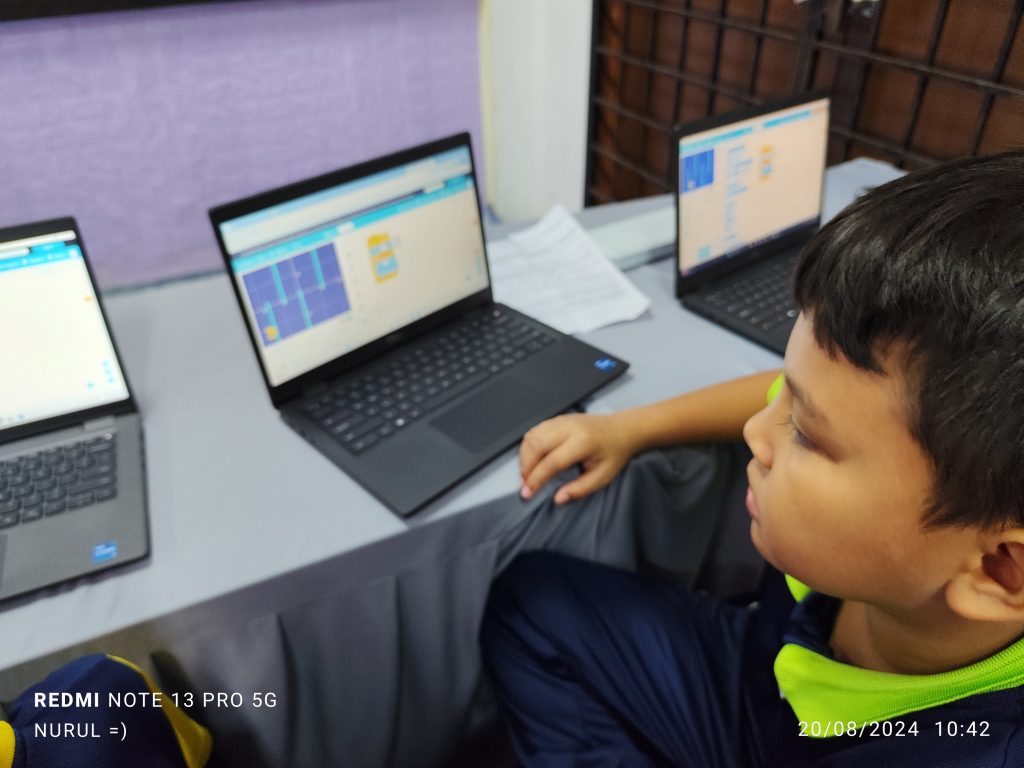
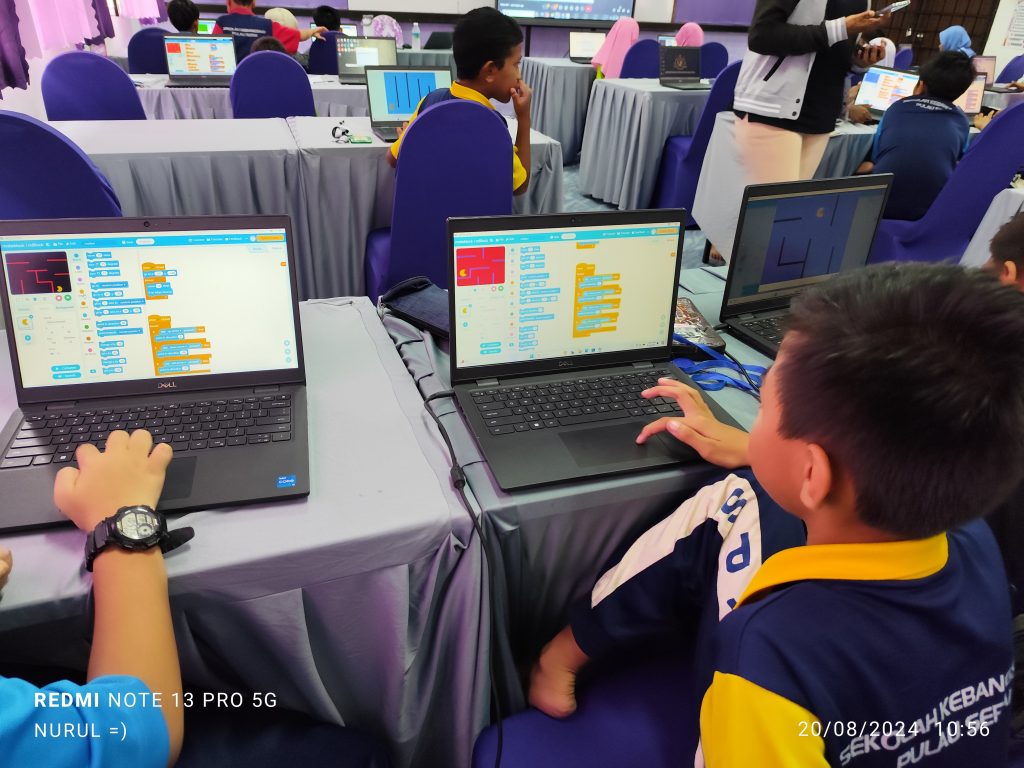
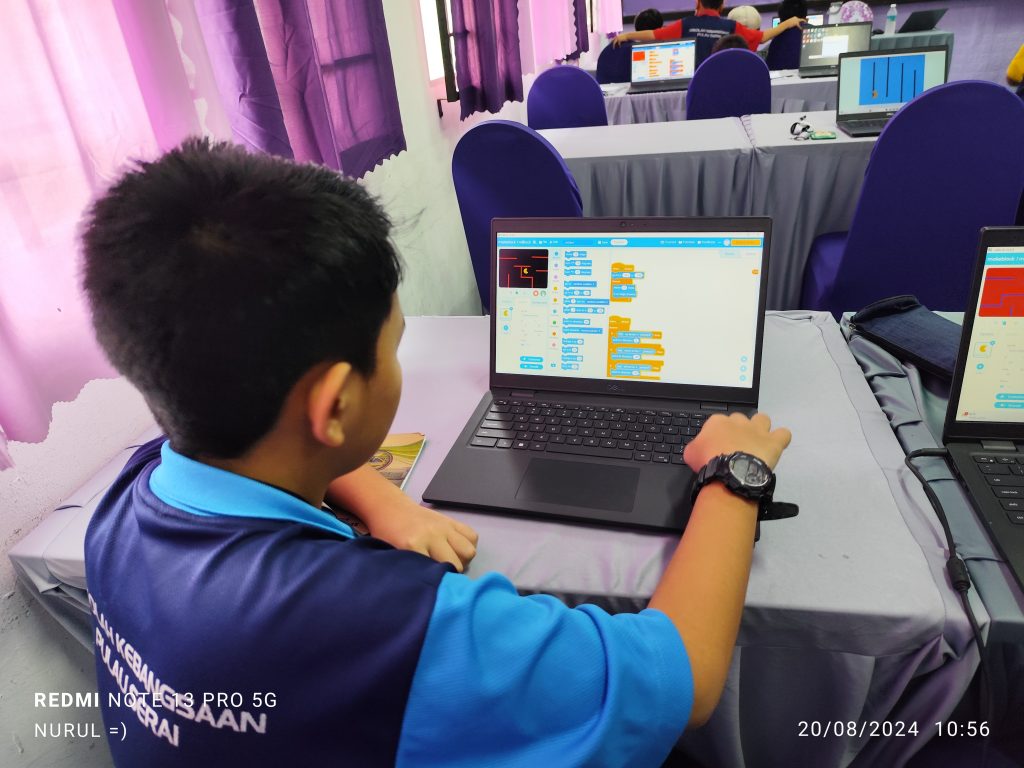
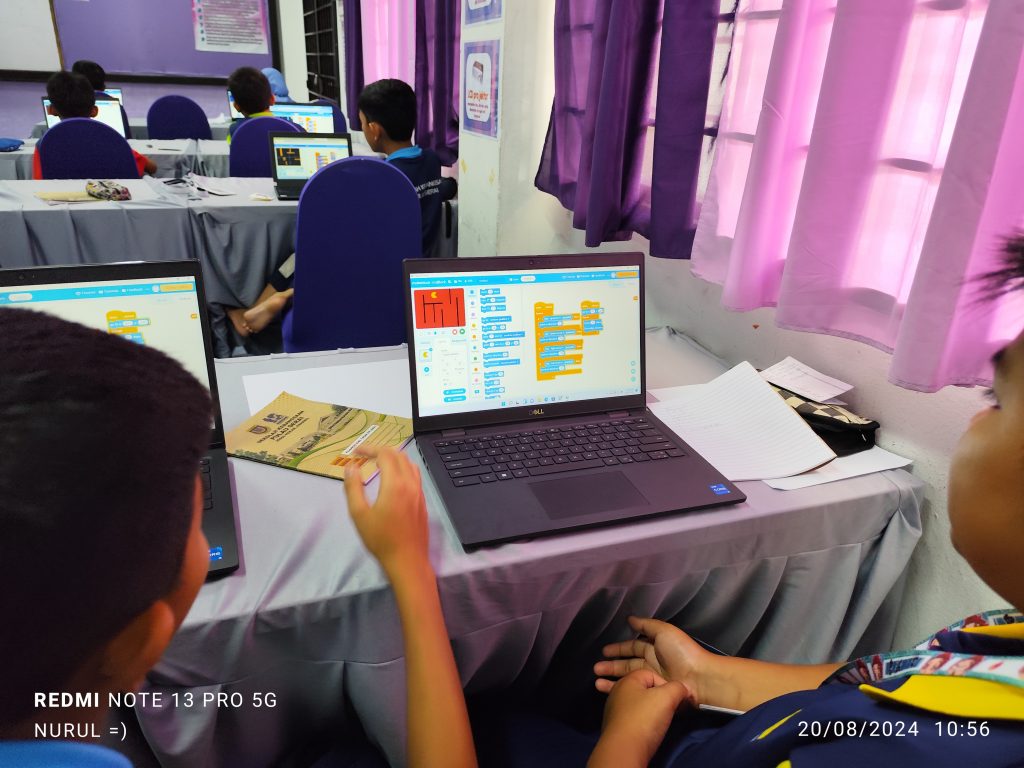

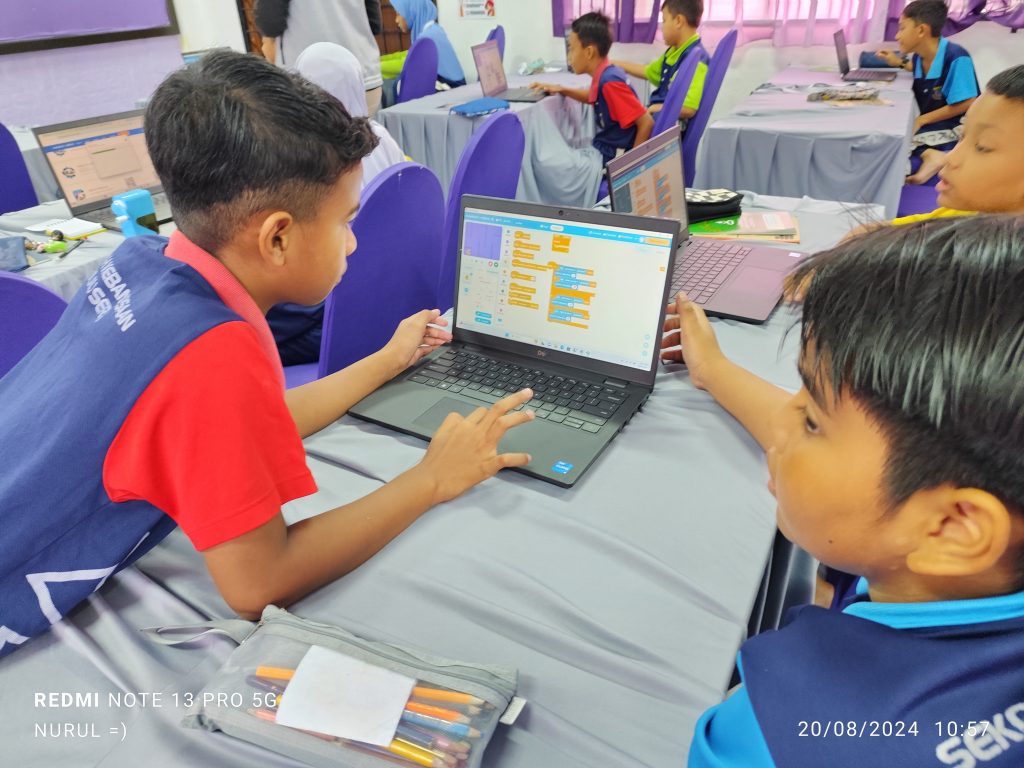
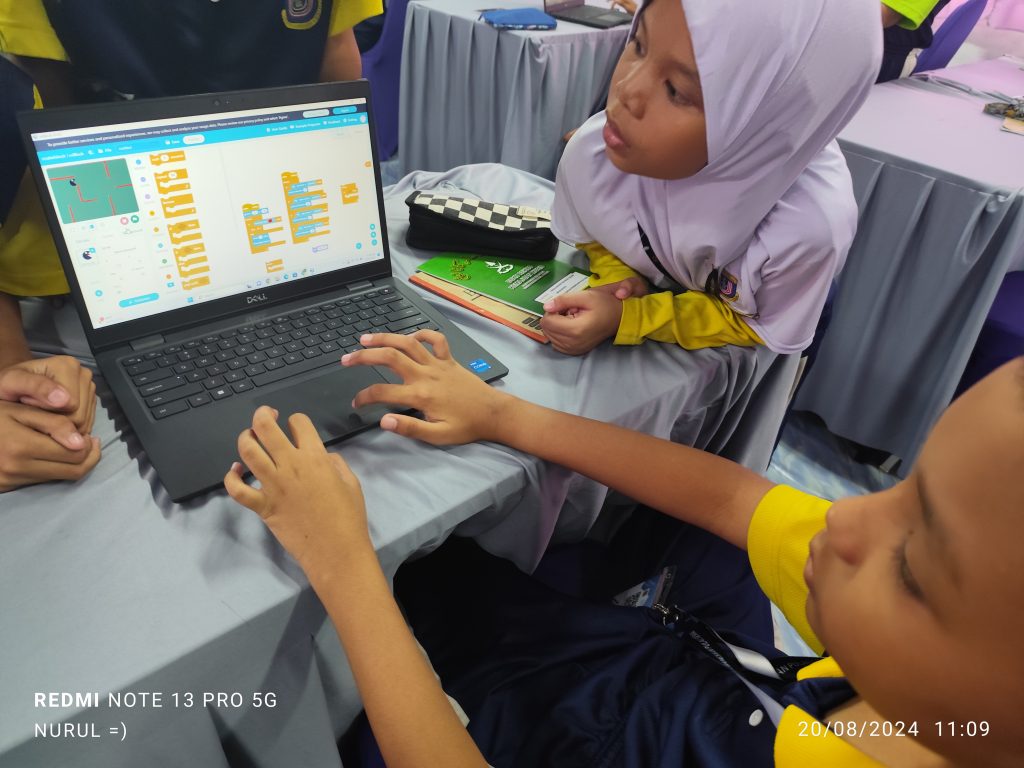
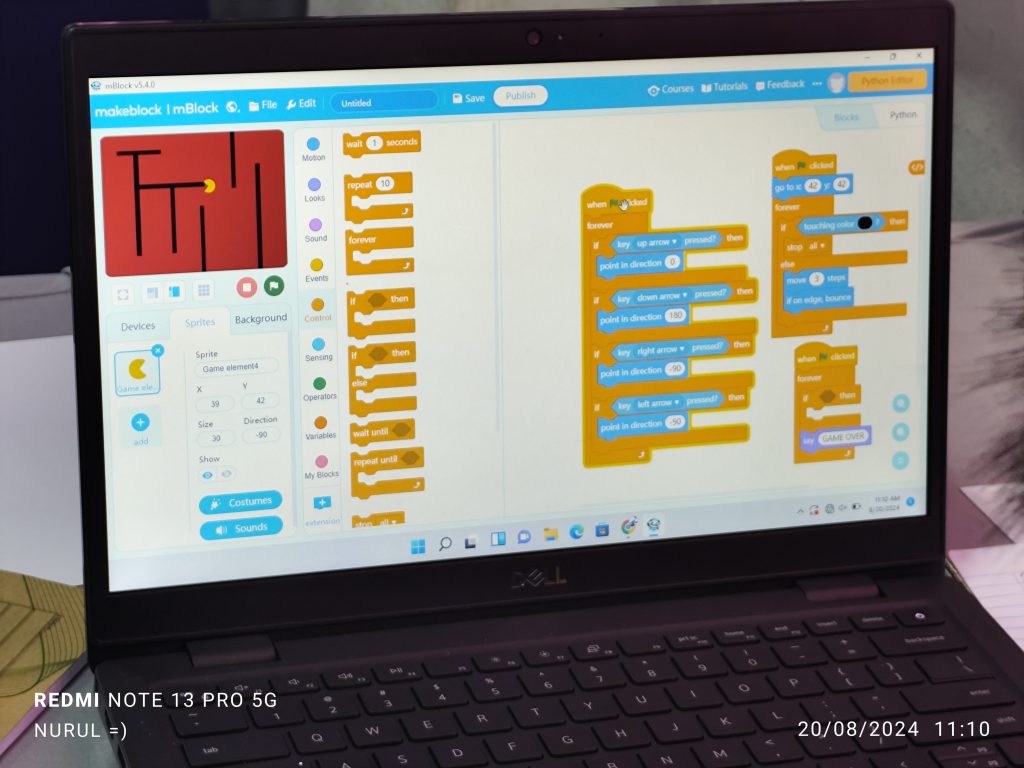



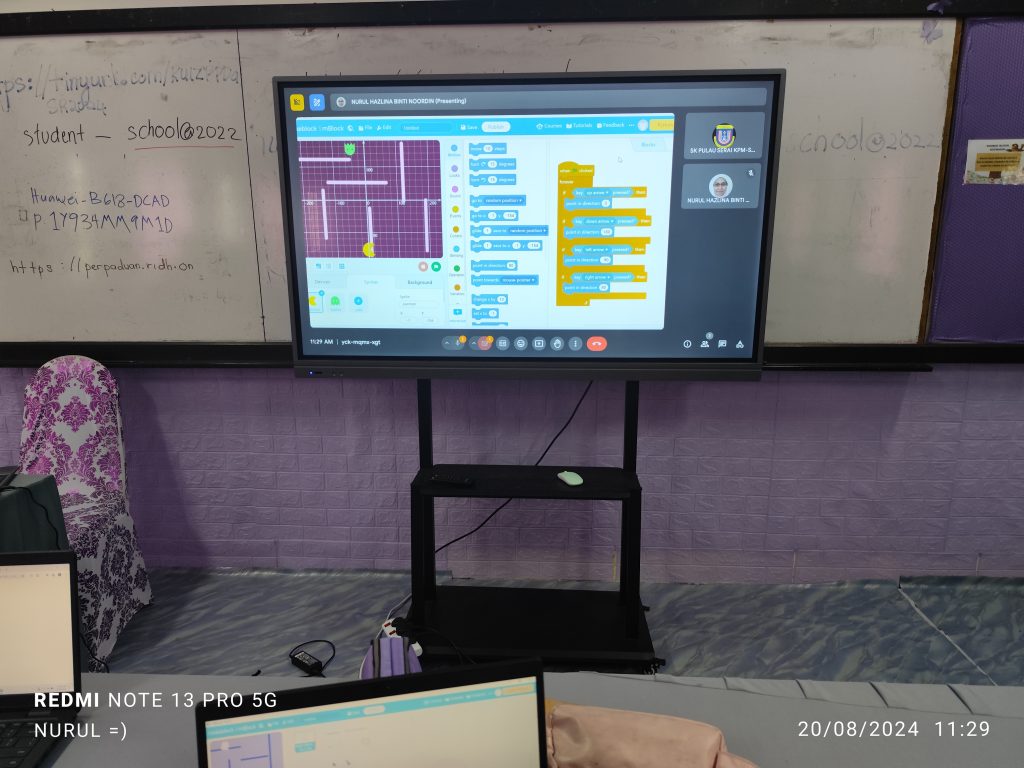
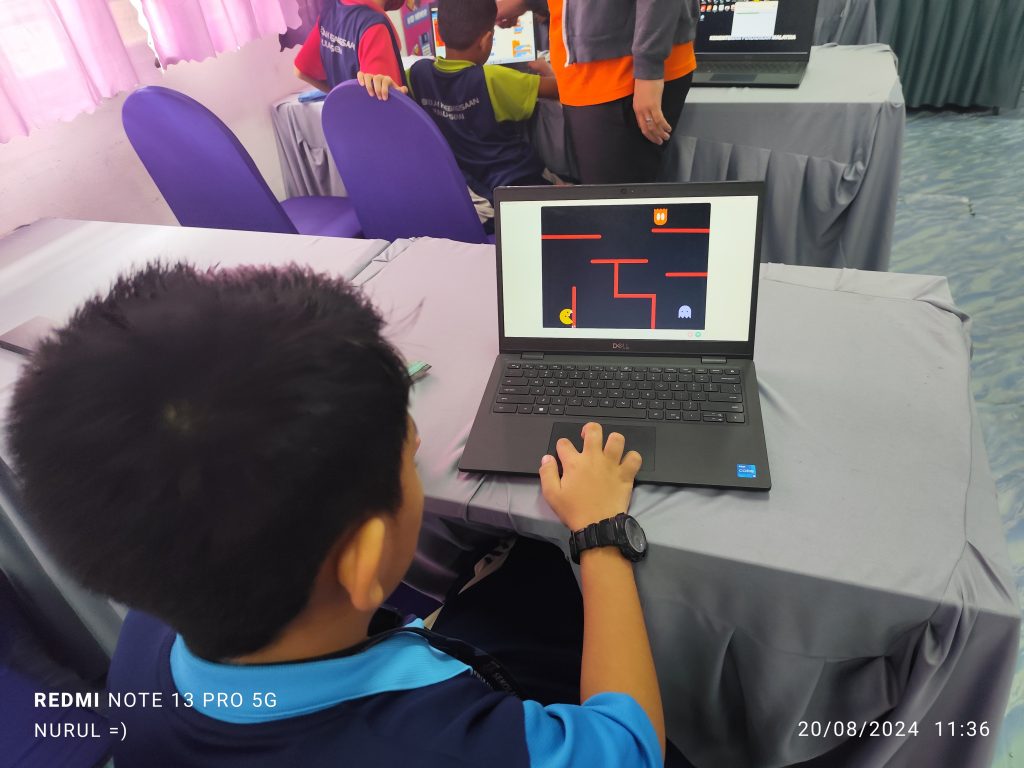
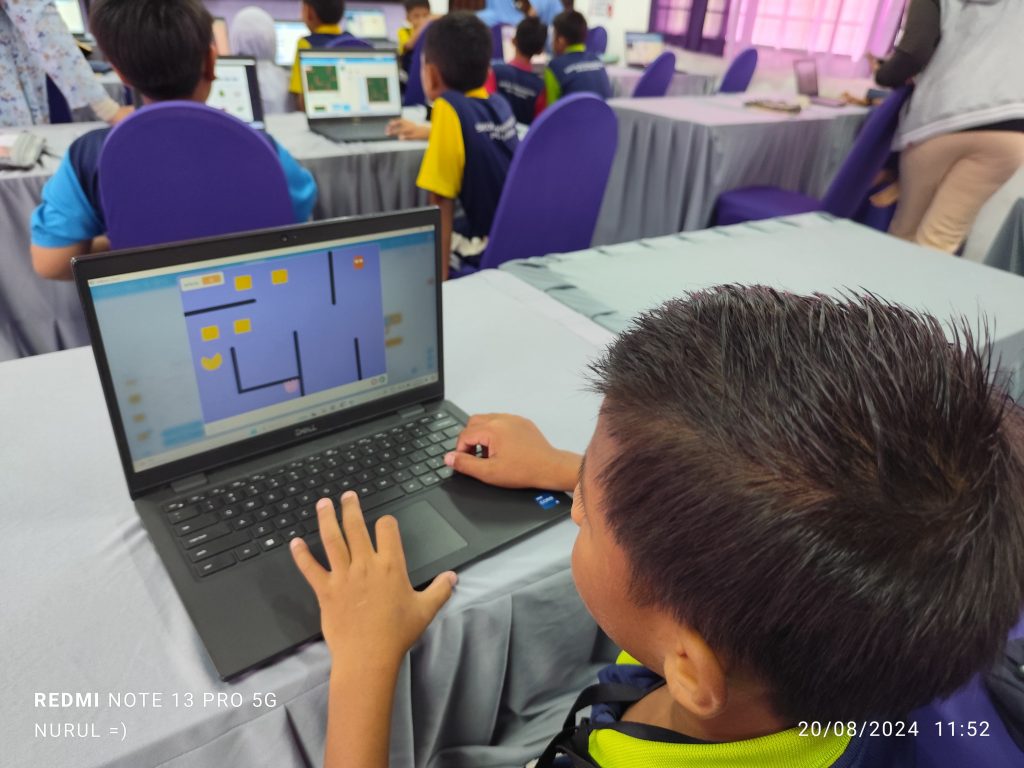
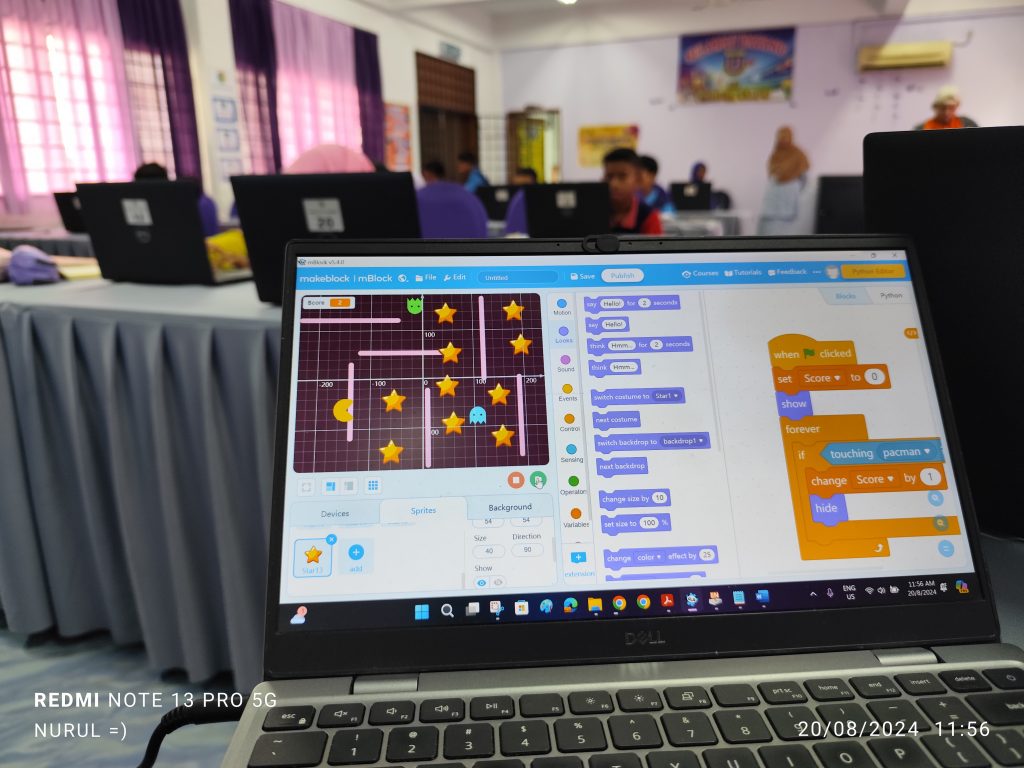
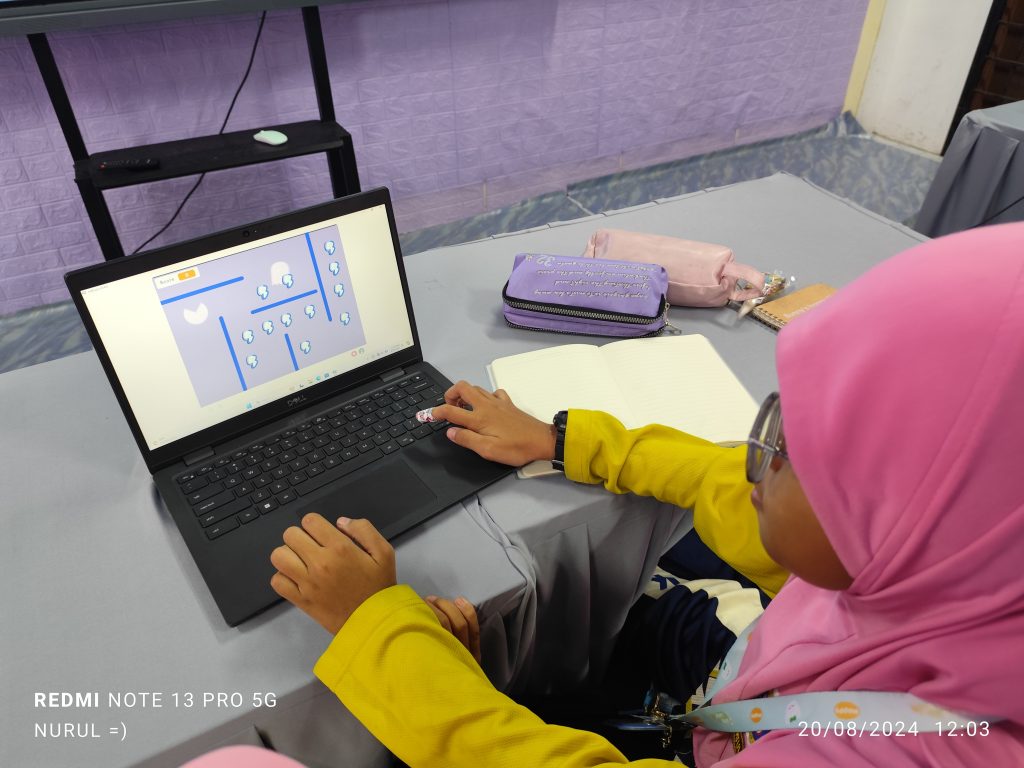

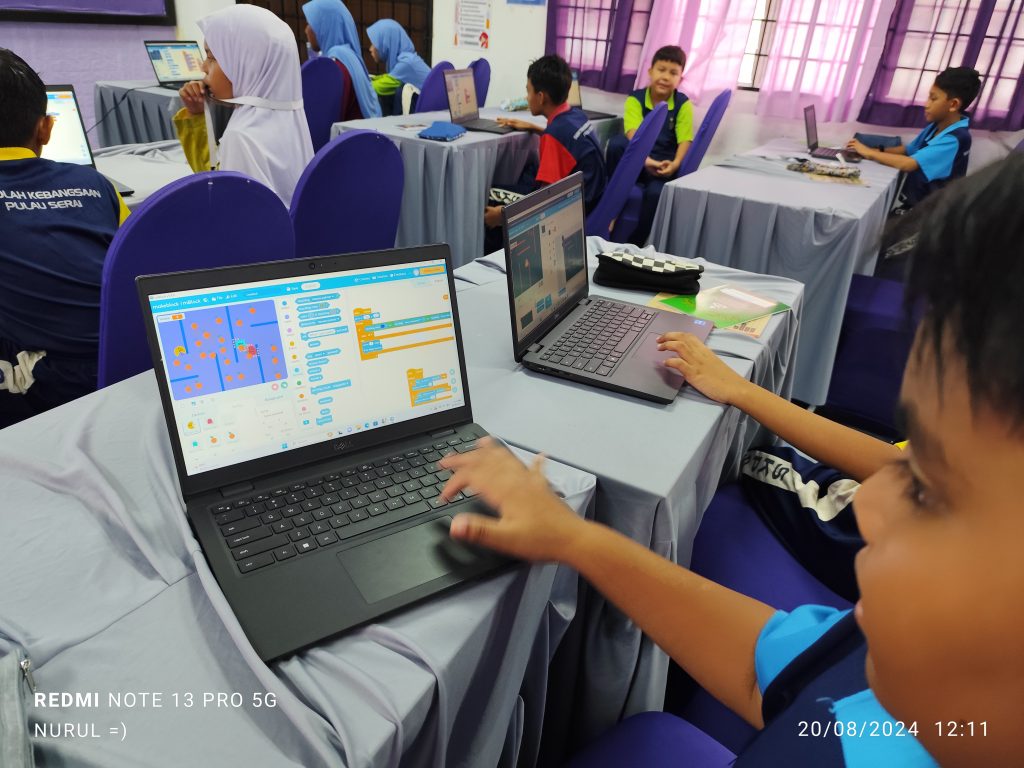
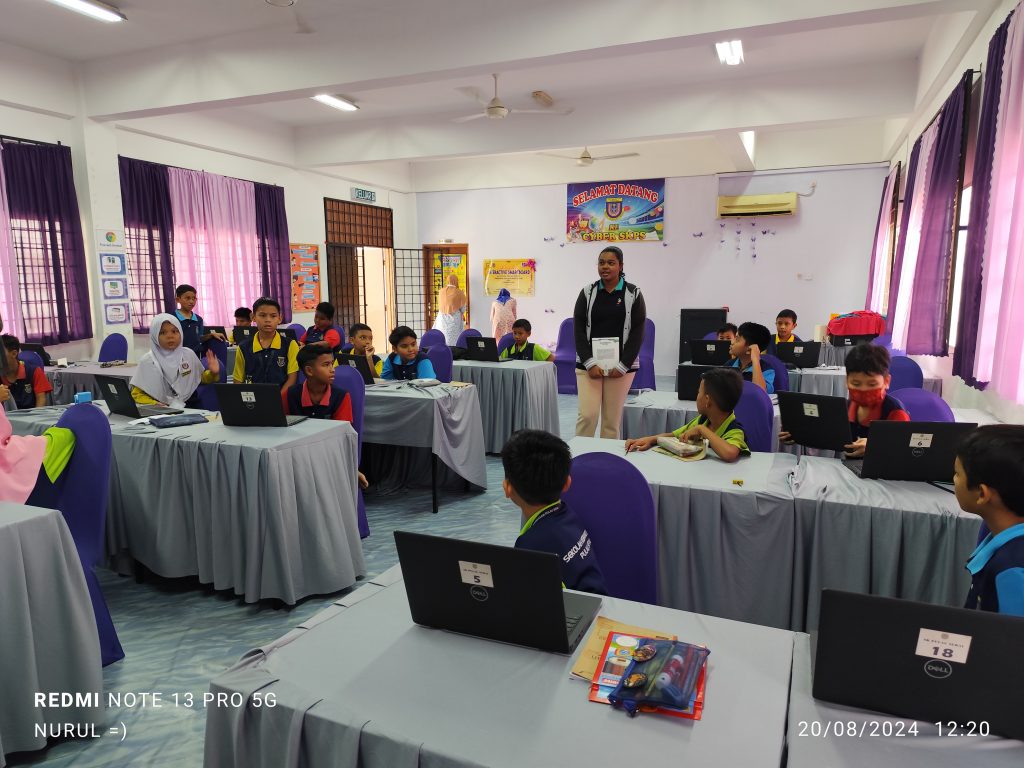
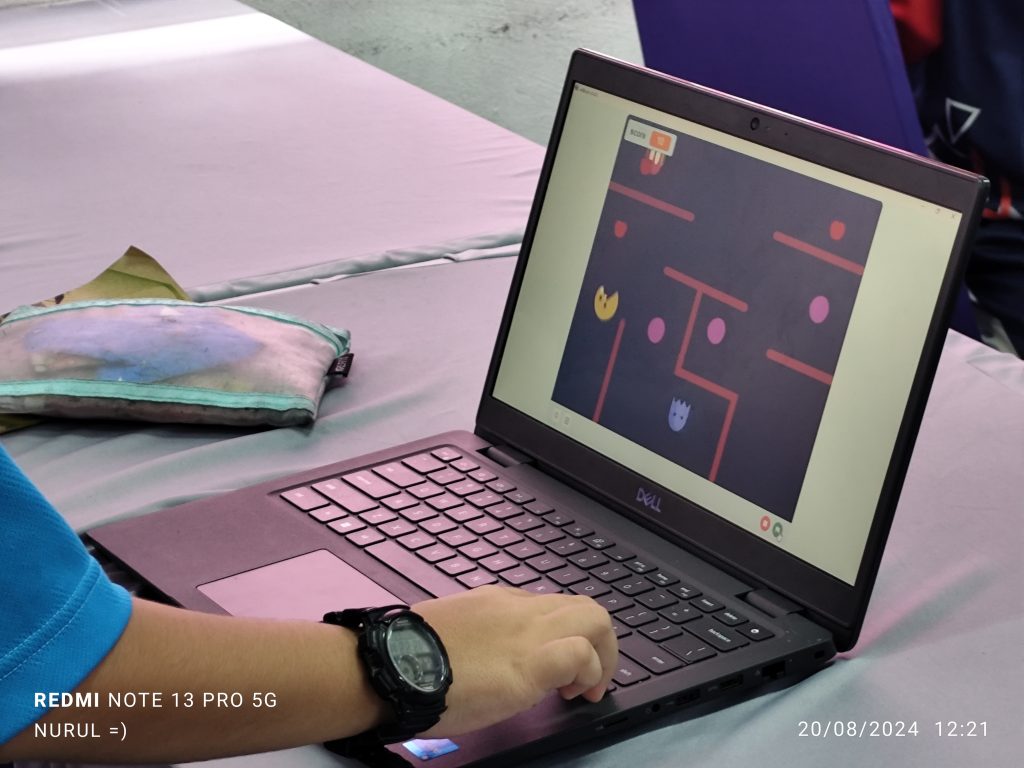
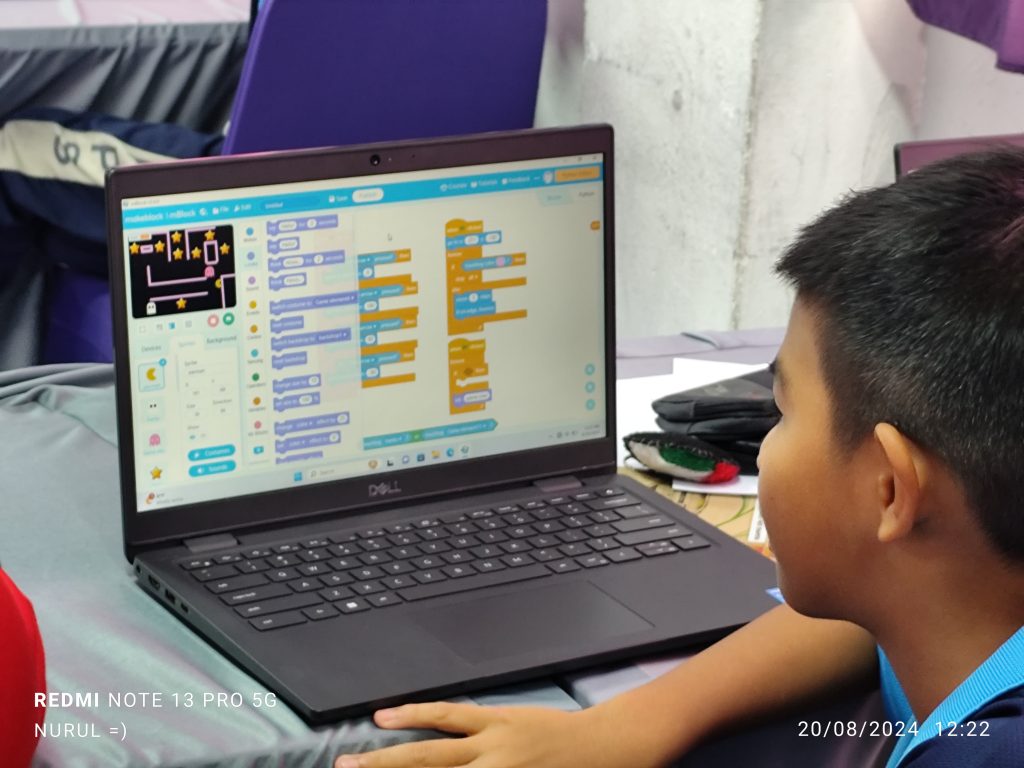
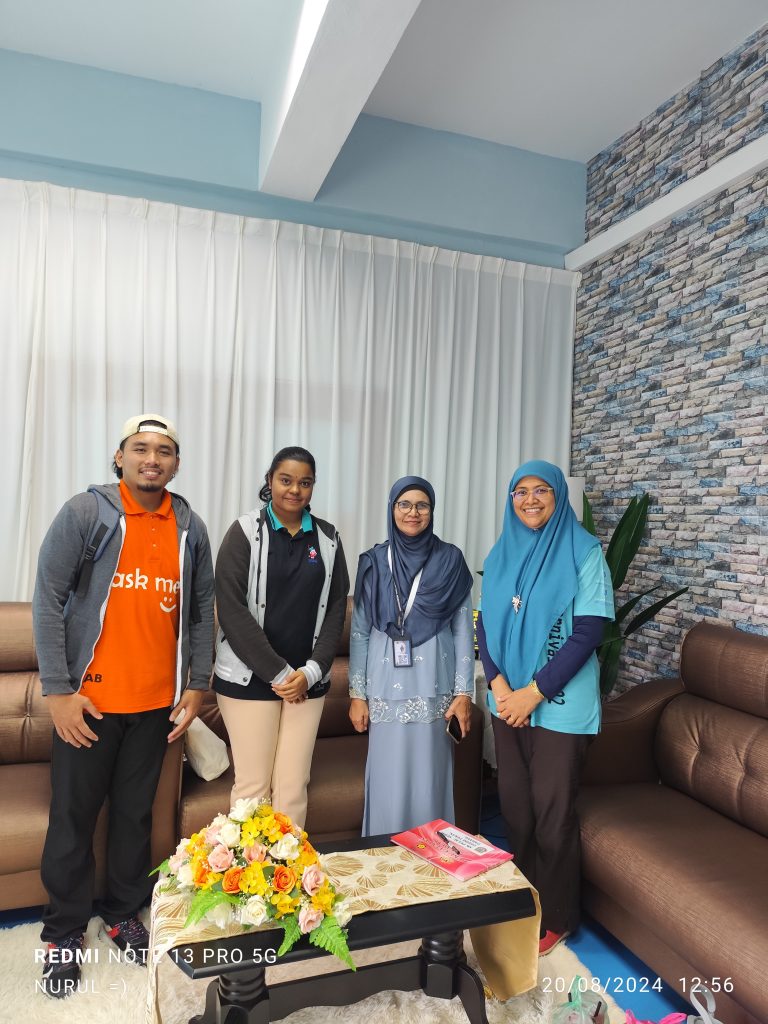
mBlock Programming 2024/6 – SK Jengka Pusat 2
A synopsis of the program can be retrieved via the following link.
In the program, 40 participants from SK Jengka Pusat 2, Maran were introduced to mBlock programming, learning to use its graphical interface to create sequences of instructions. They explored sequential programming, conditional statements, and loops through hands-on tutorials. These foundational skills were applied in two projects: a Snake game and a Pac-Man game. In the Snake game, they programmed the snake’s movement, growth, and collision detection, while in the Pac-Man game, they navigated a maze, collected points, and avoided ghosts. This approach provided a comprehensive understanding of programming concepts and their practical applications.
Appreciation to Cikgu Hailmey for coordinating the communication between the participants and UMPSA STEM Lab. SKJP2 Computer Lab is one of the best, and well-maintained lab I’ve seen in schools. Kudos to Cikgu for his commitment and hard work in assuring the best experience for the school children.


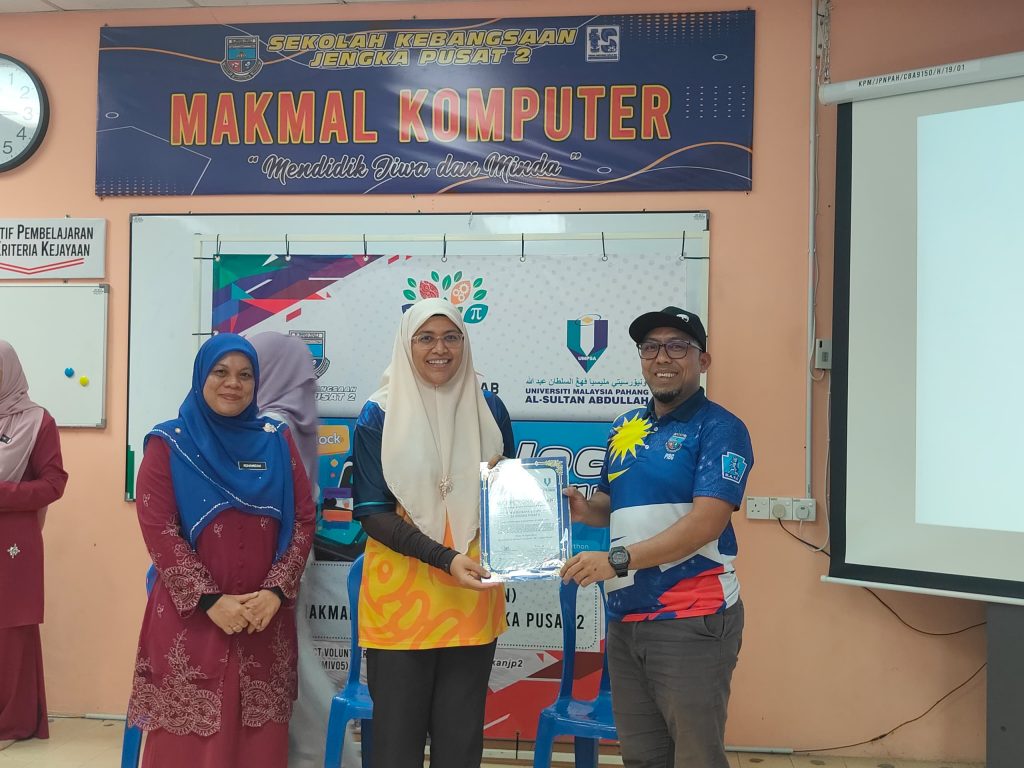

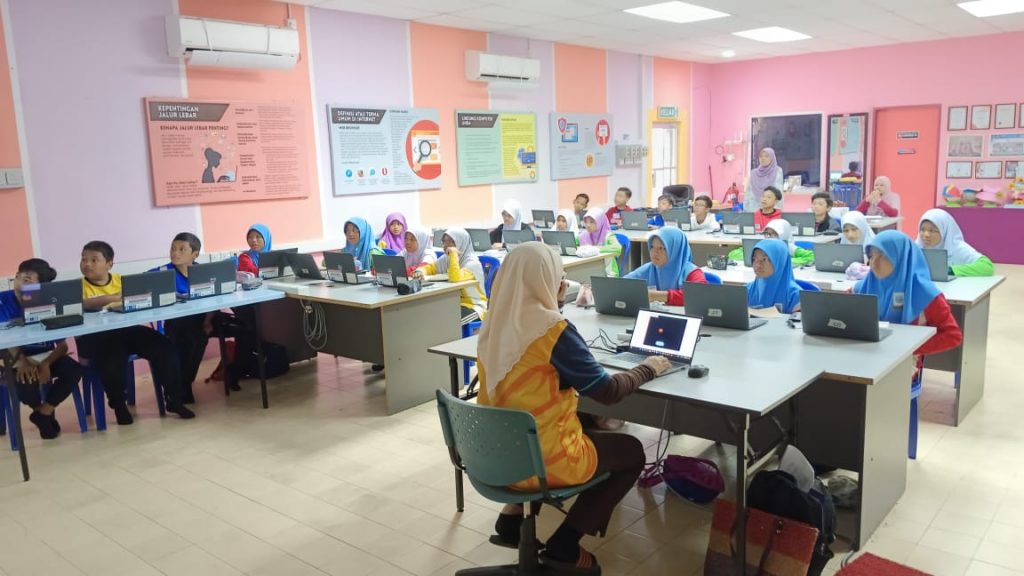
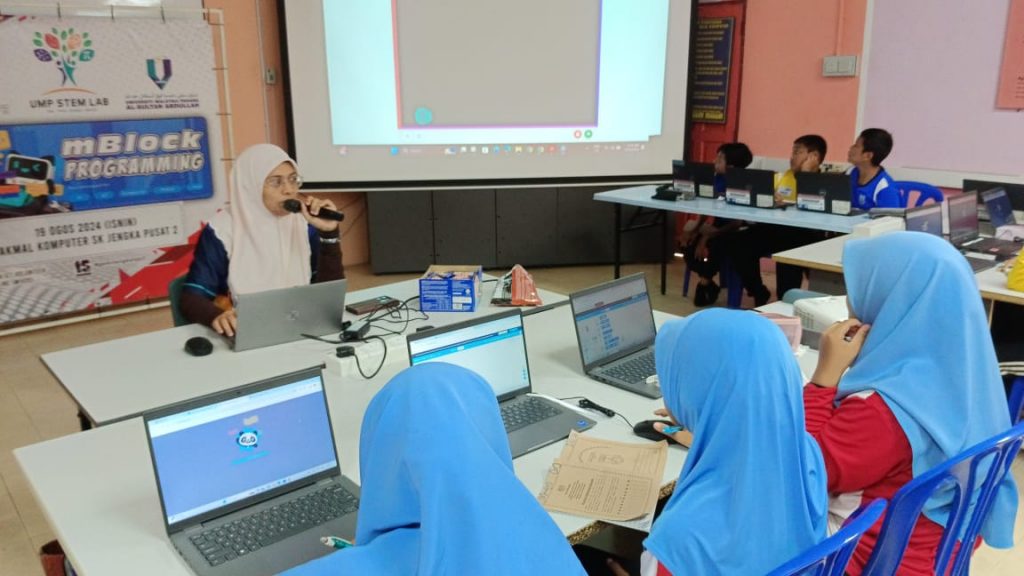
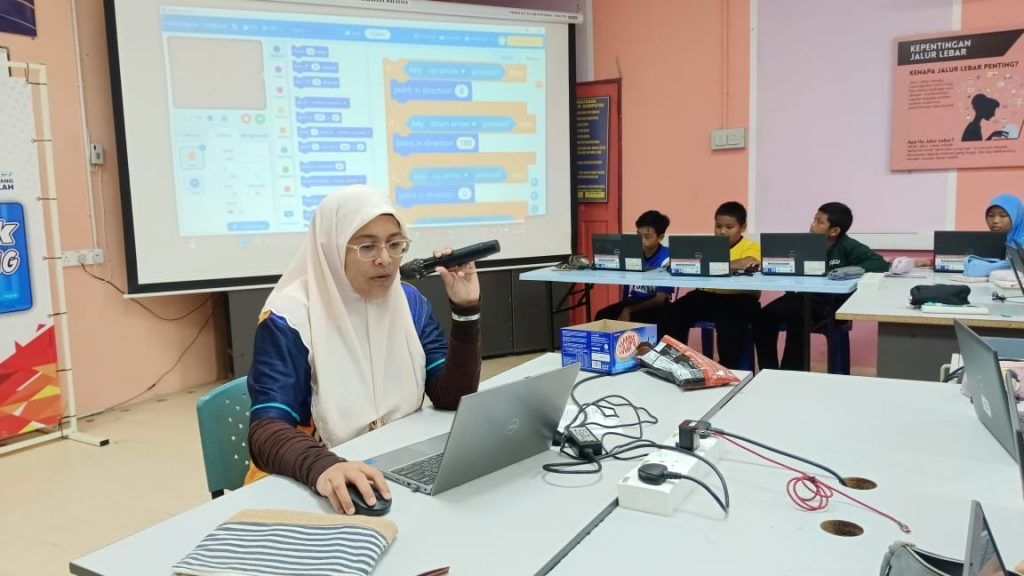
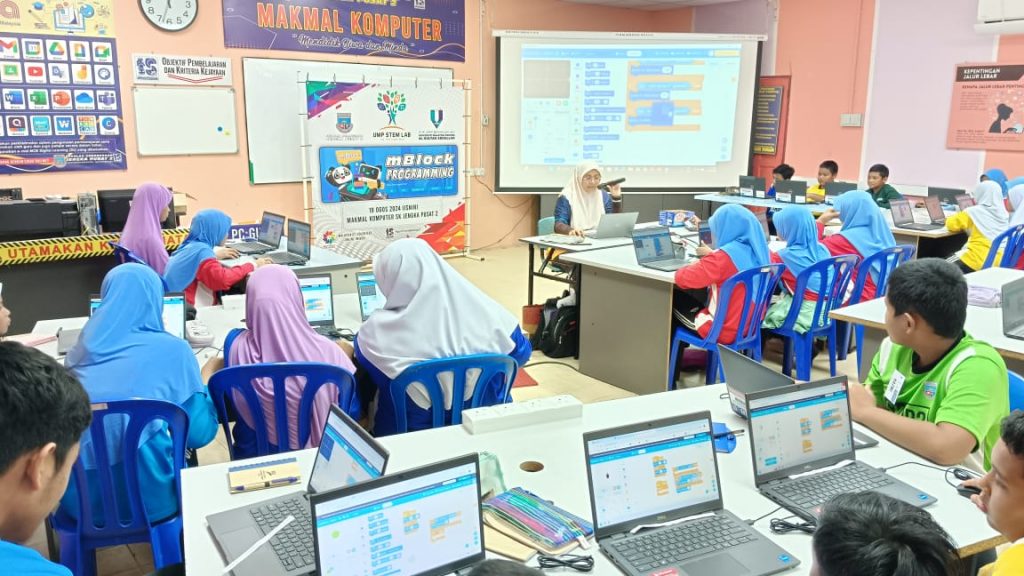

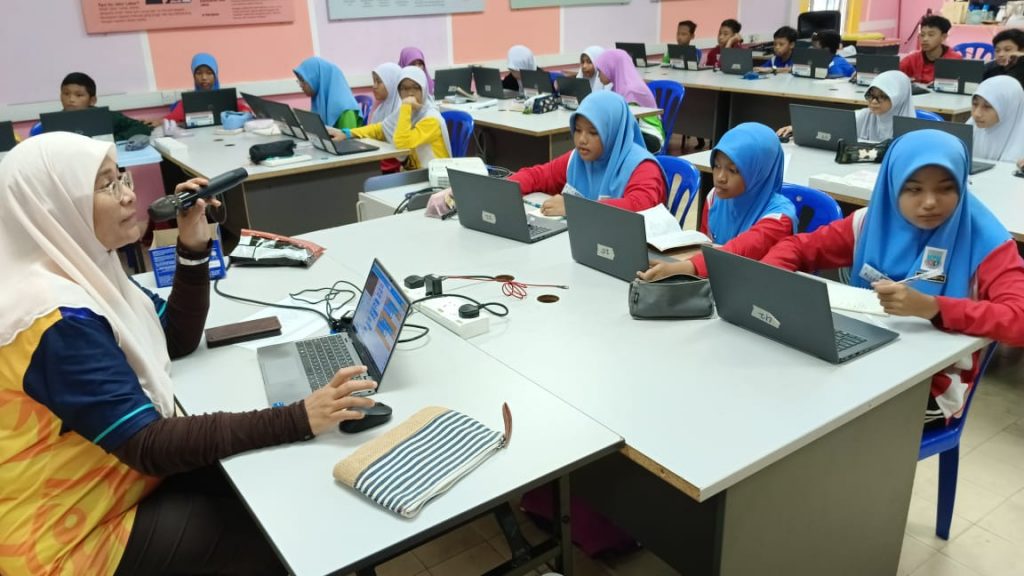

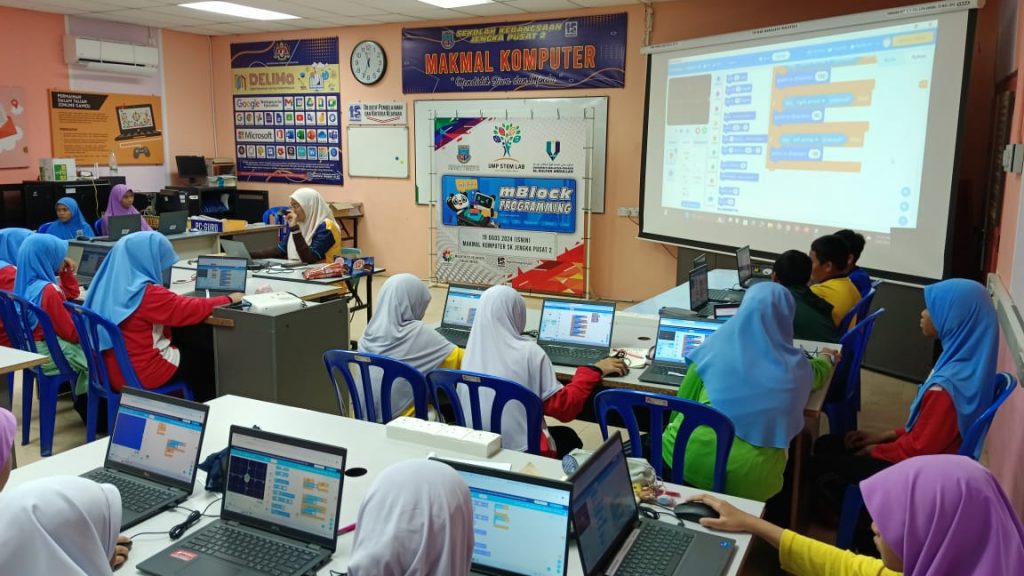
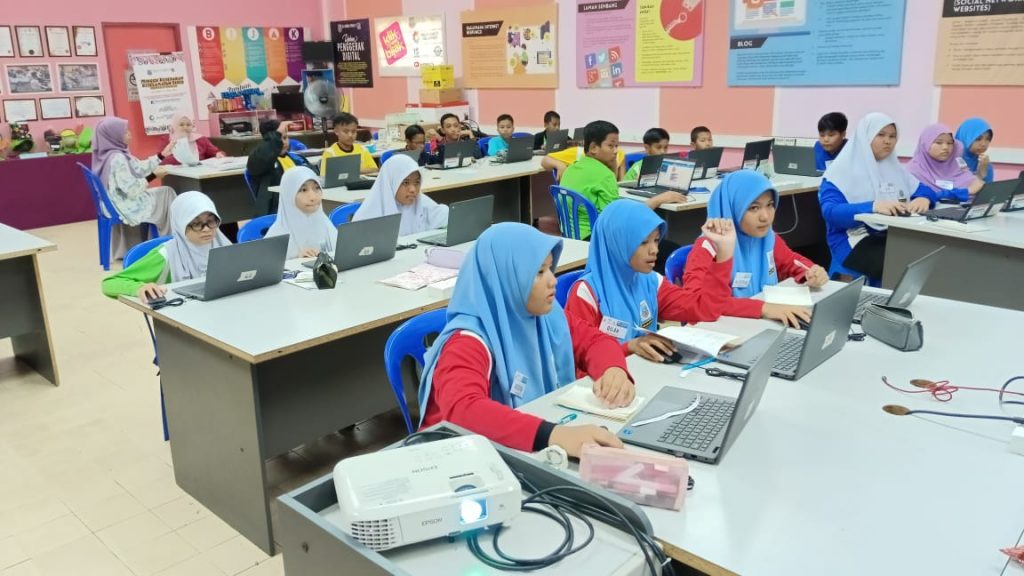

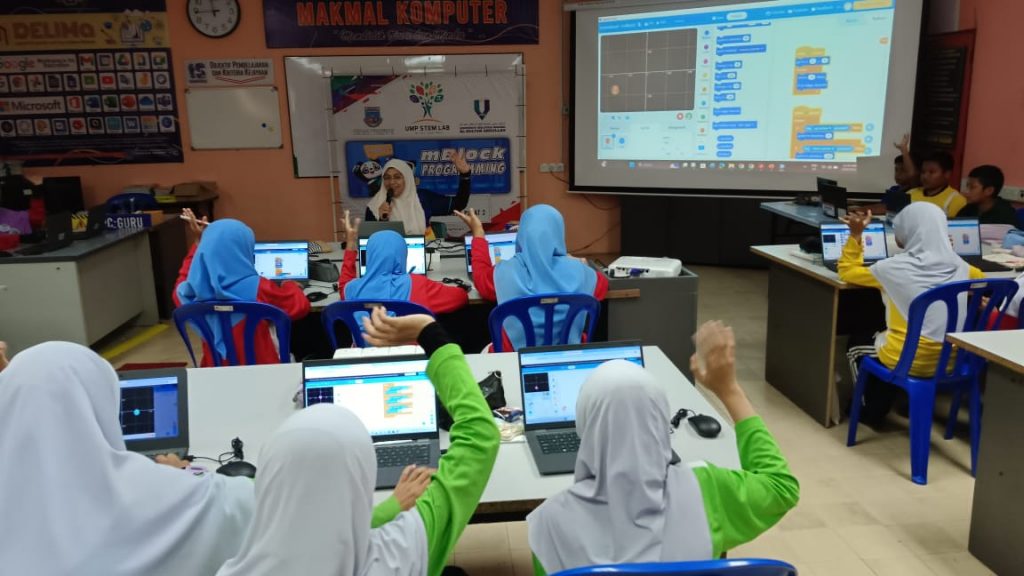
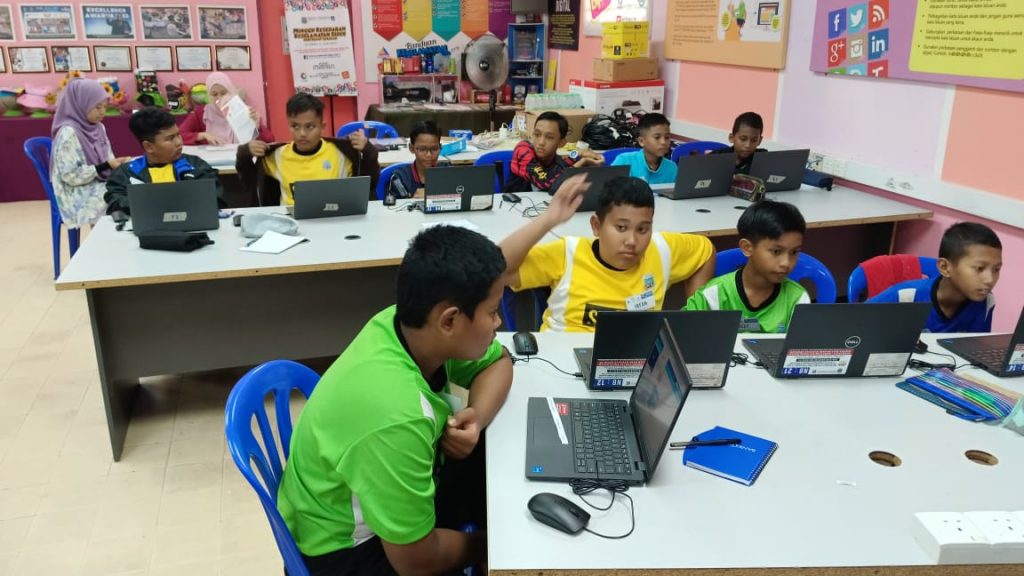
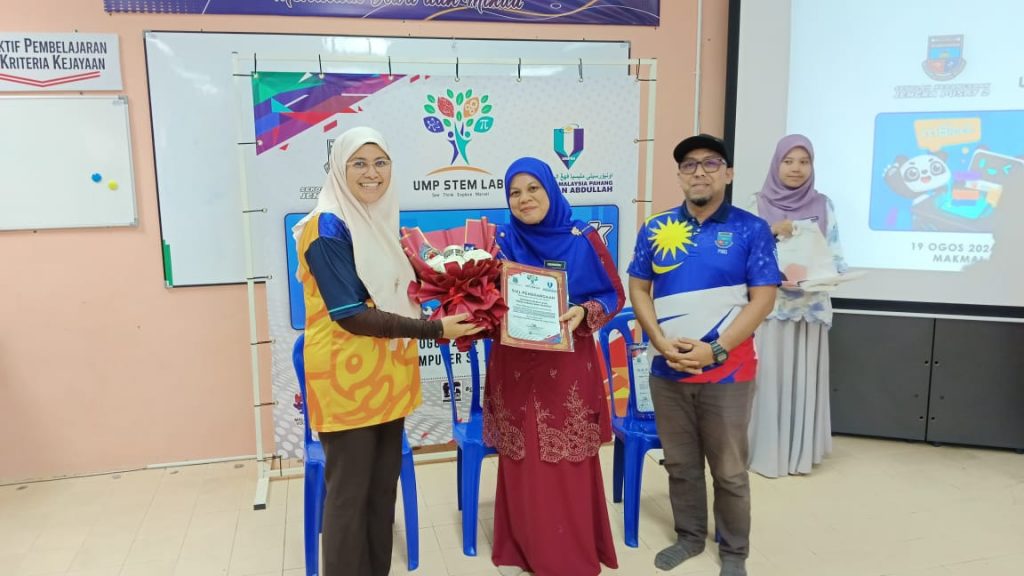
Pre-Test (Aug 16th)
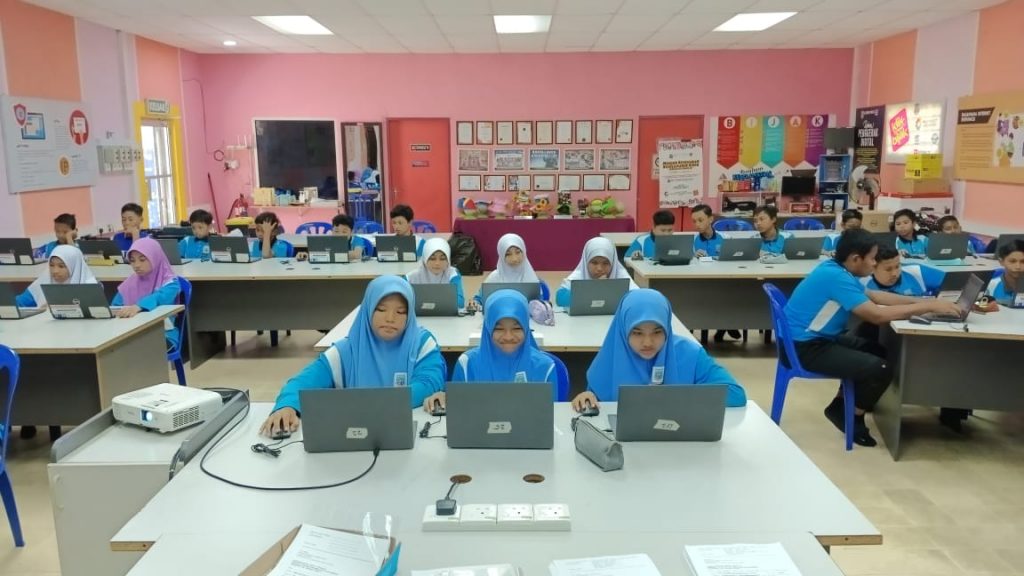
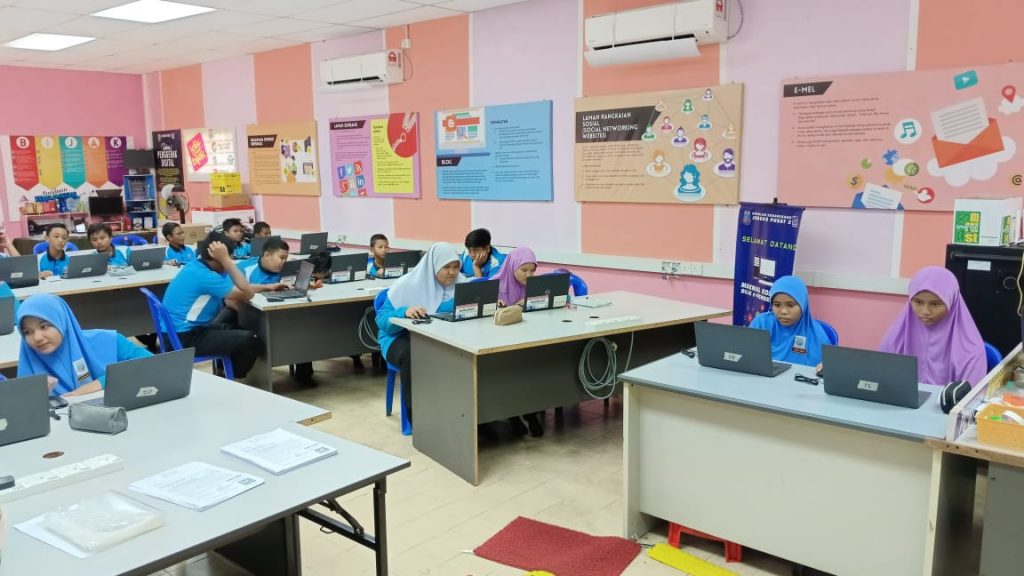
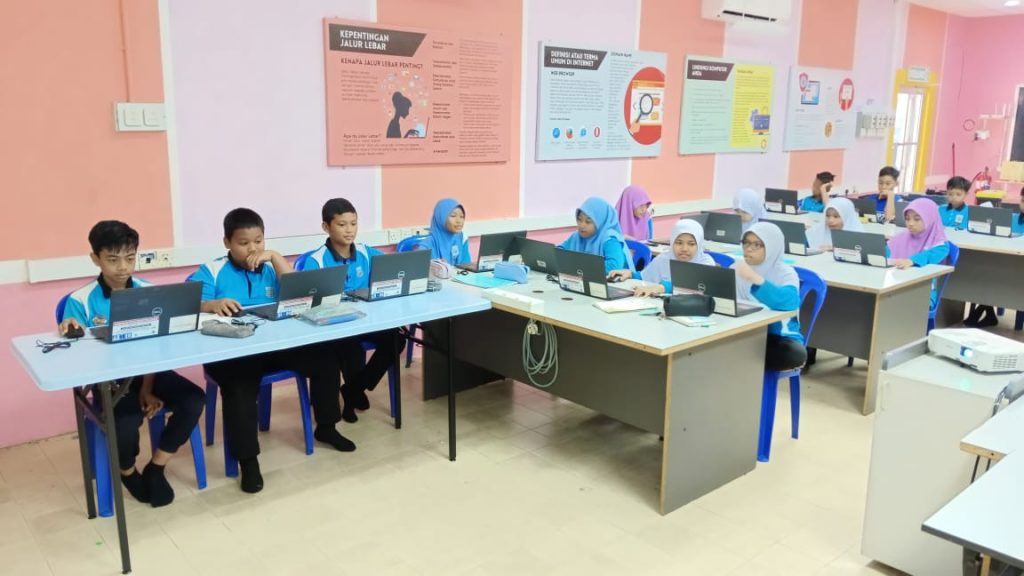
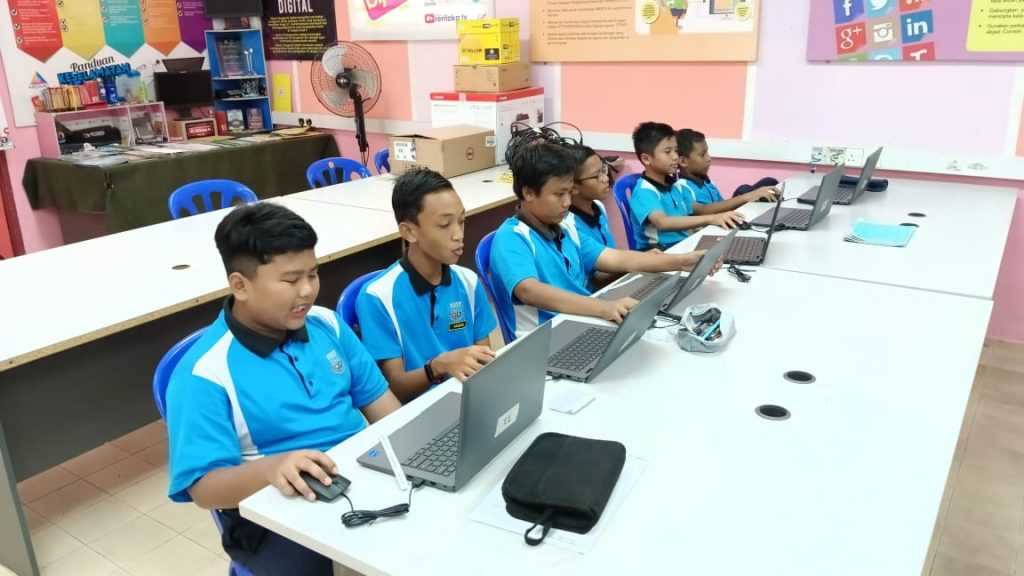
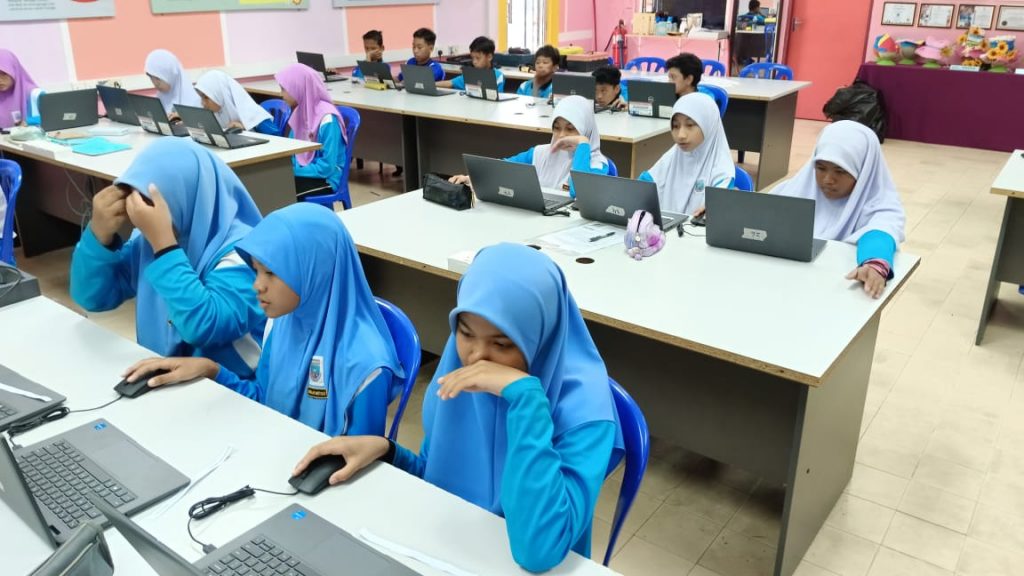

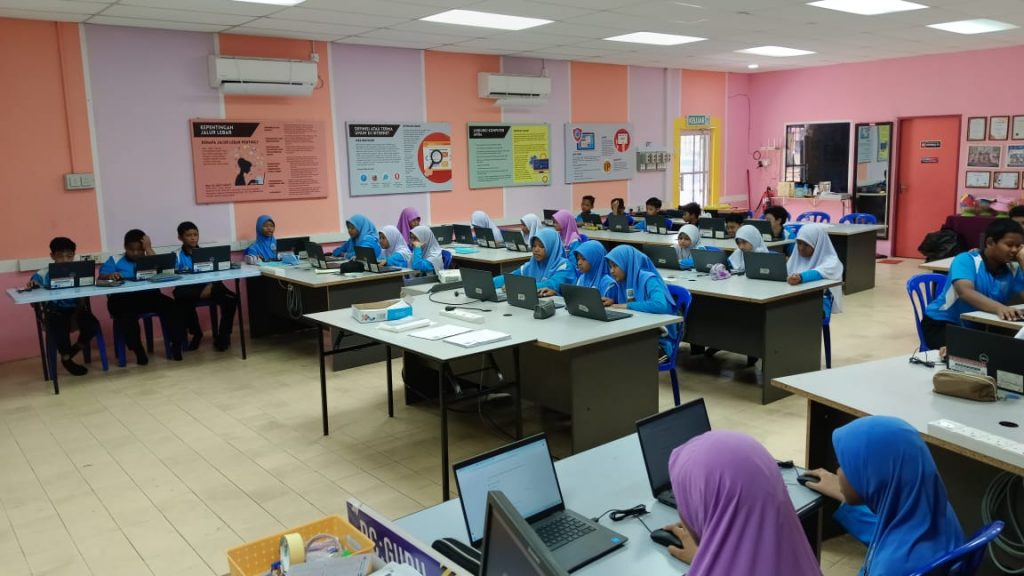
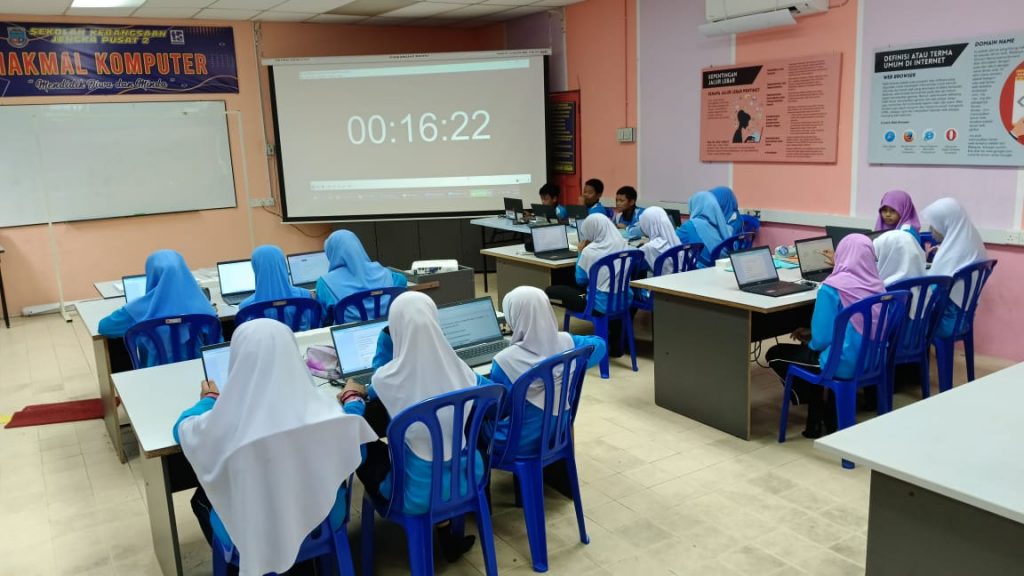
Arduino Programming 2024/8 – UMPSA Year 1 (AI Assisted)
Synopsis on AI Assisted Learning @UMPSA STEM Lab module.
Today’s session involves interactive session for 32 first-year Electrical & Electronics Engineering students. These students, in their very first semester, were taking their initial steps into the world of computer programming and physical computing. Despite having no prior experience, they embarked on a journey that introduced them to the power and potential of AI-assisted learning.
The session was designed with a clear objective to demystify the basics of Arduino programming and physical computing while leveraging AI tools to make the learning process more intuitive and accessible. For many of these students, this was their first exposure to the intricacies of coding and the fascinating world of microcontrollers. The use of AI in the learning process provided a significant boost, enabling them to grasp complex concepts more easily and with greater confidence.
The essence of the session was a series of six hands-on activities, each carefully crafted to build upon the previous one, ensuring a gradual yet comprehensive learning experience. These activities were designed not only to teach the basics of programming and electronics but also to illustrate how AI can be a valuable ally in the learning process.
During the session, students were introduced to the Arduino platform, gaining a solid understanding of its components and the vast potential it holds for creating interactive projects. This foundational knowledge was crucial as it set the stage for the more complex tasks that followed. Leveraging AI tools like ChatGPT, students witnessed firsthand how AI could assist in generating and debugging code, making the learning process more efficient. This activity demonstrated the practical benefits of AI, especially in reducing the learning curve for beginners.
As they progressed, the students engaged in the classic “Hello World” of Arduino by writing simple code to control an LED, an experience that built their confidence and deepened their understanding of digital outputs. The next step in their learning journey was the traffic light simulation project, where they applied control structures to manage multiple outputs. This project not only taught them the intricacies of timing and logic but also encouraged them to think critically about how these elements interact in real-world applications.
Further advancing their skills, the students used AI-generated code to integrate sensors like photoresistors into their projects, introducing them to the world of analog inputs and sensor data processing. The session culminated in an activity where they used an ultrasonic sensor to measure distance, with real-time results displayed, helping them grasp the concepts of pulse measurement and the practical application of their coding skills in tangible, real-world scenarios.
To all RE students, nice meeting you and hope to see you again in the future.
Nurul – August 17th
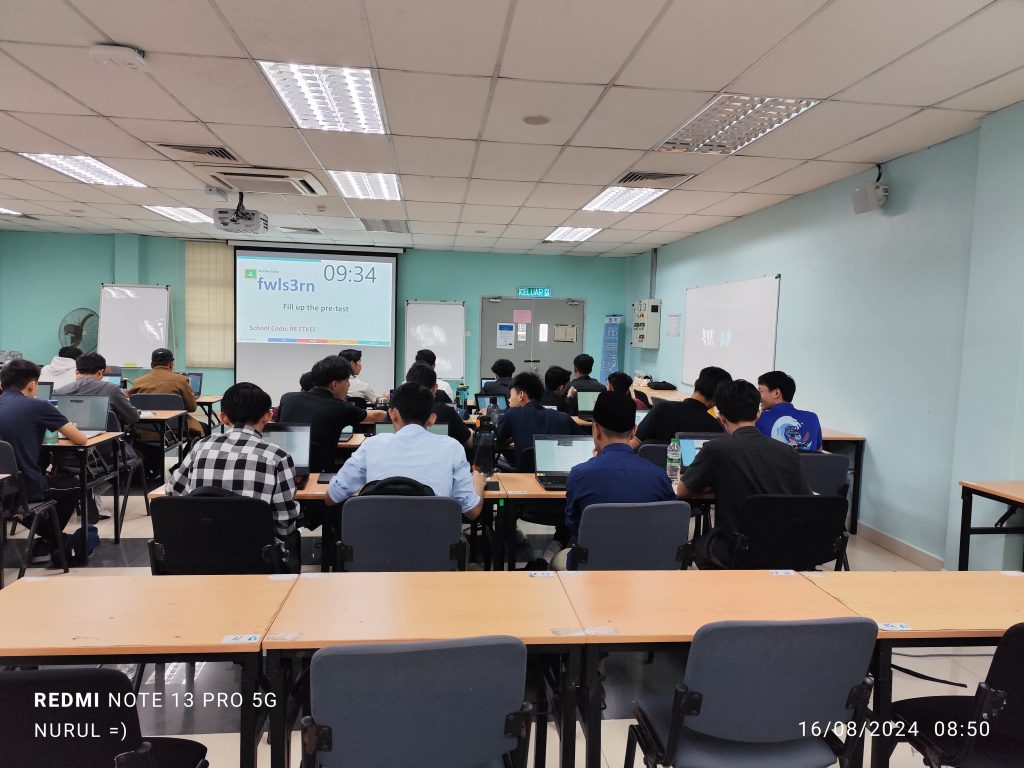
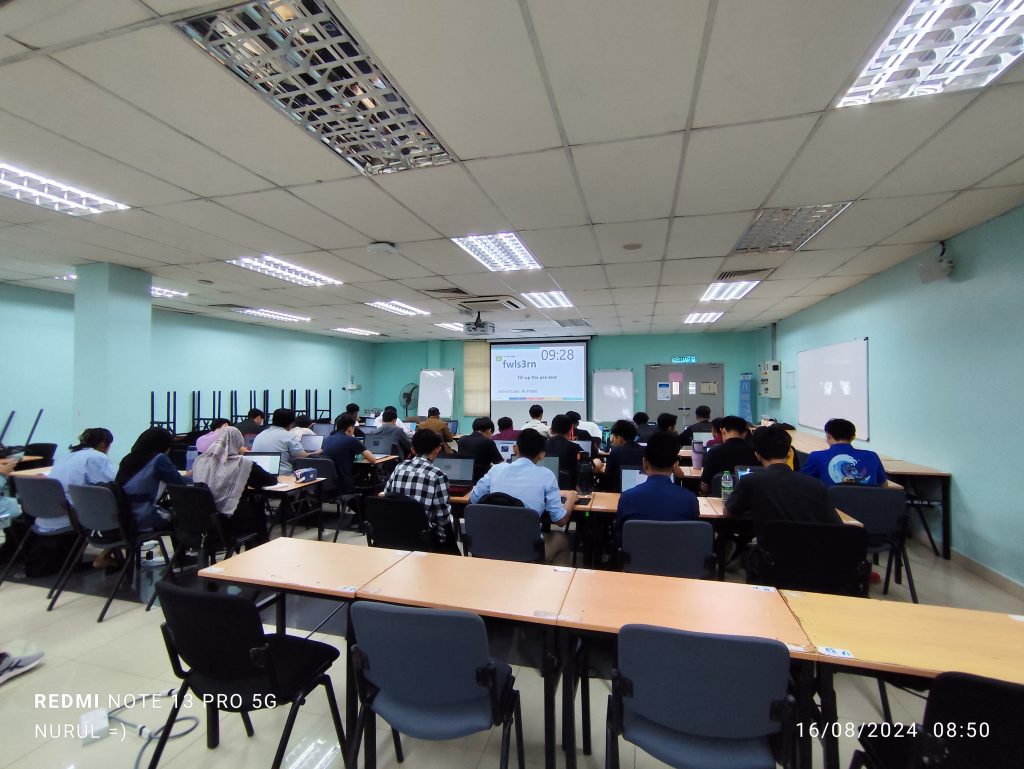
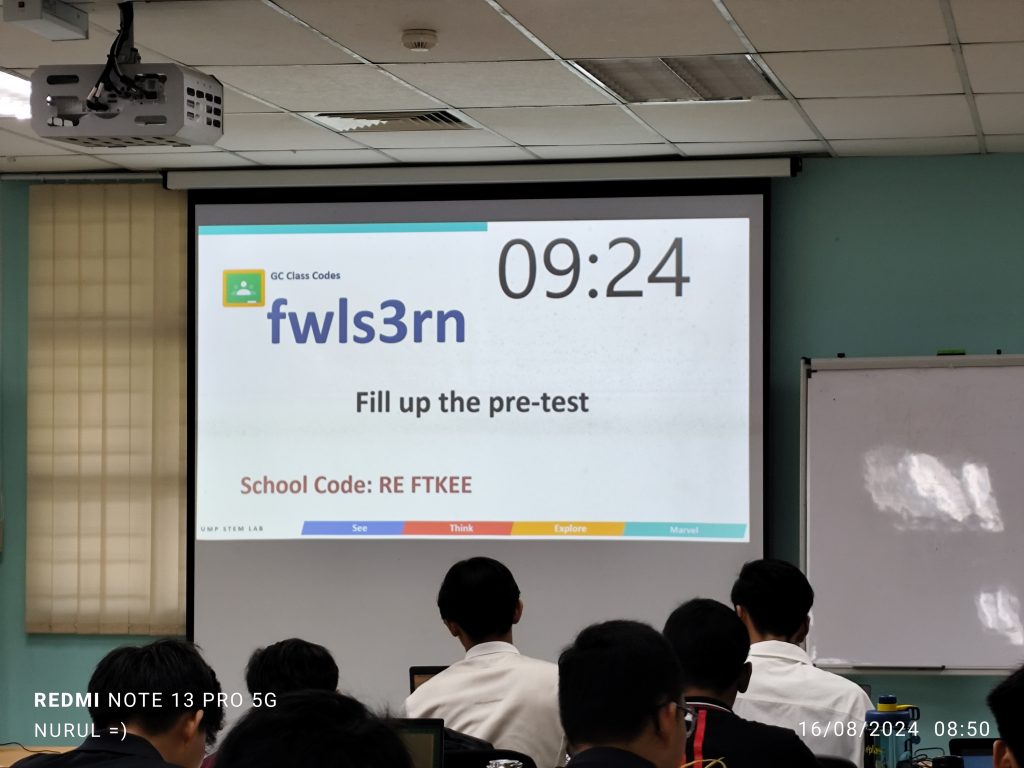

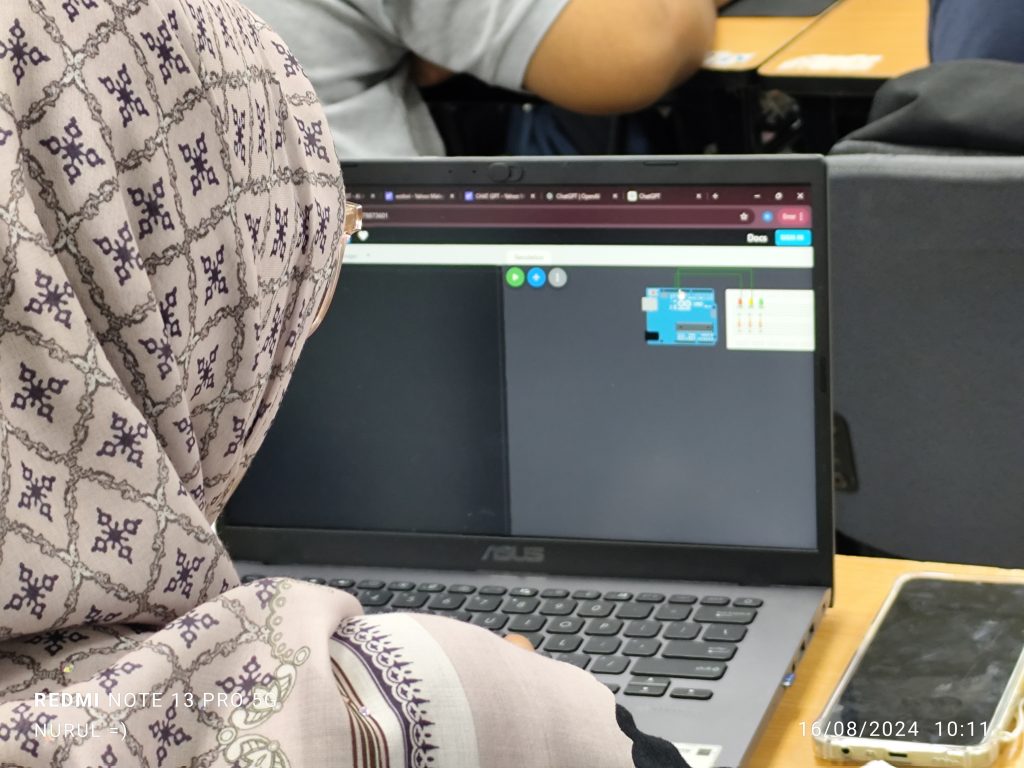
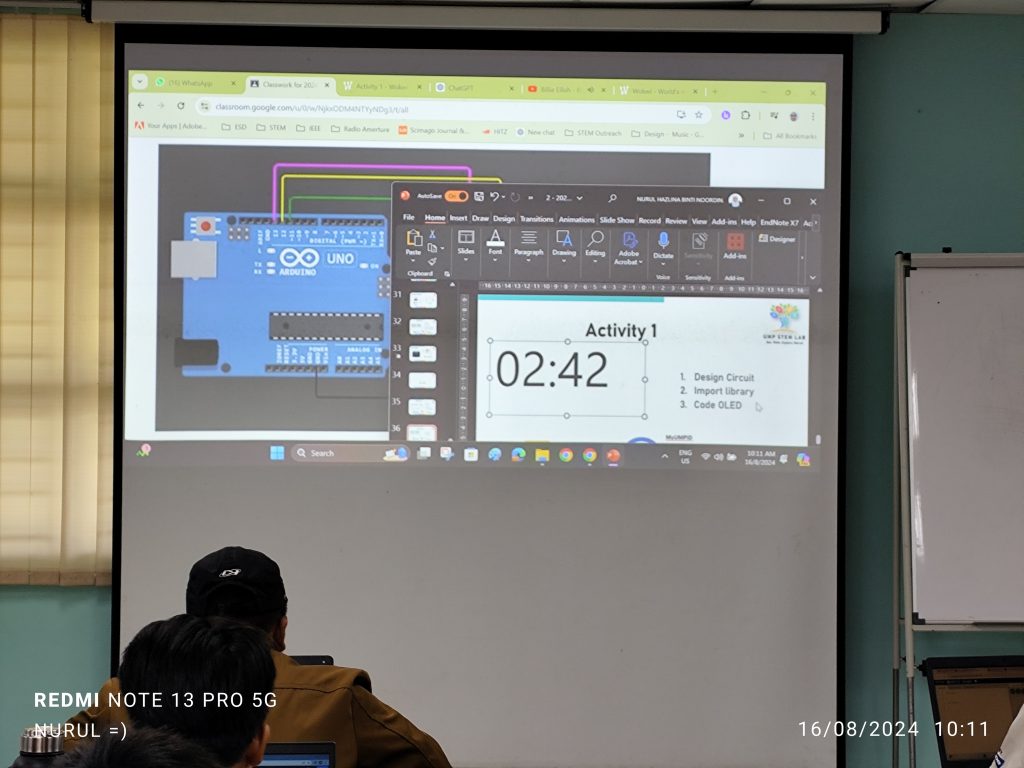
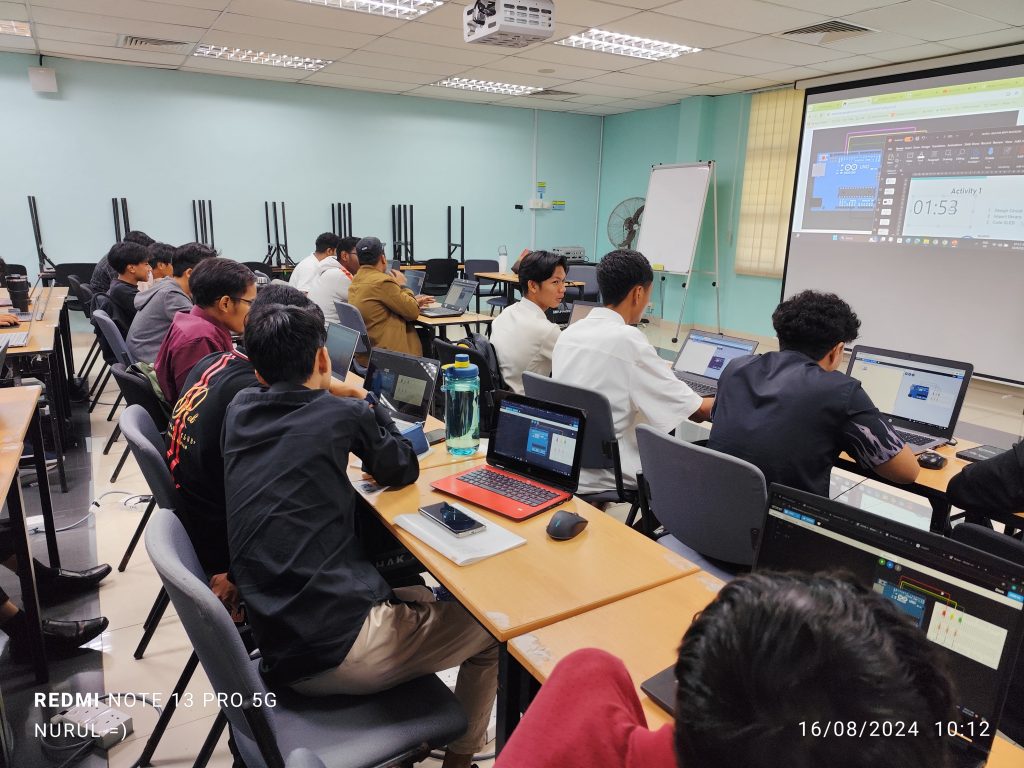
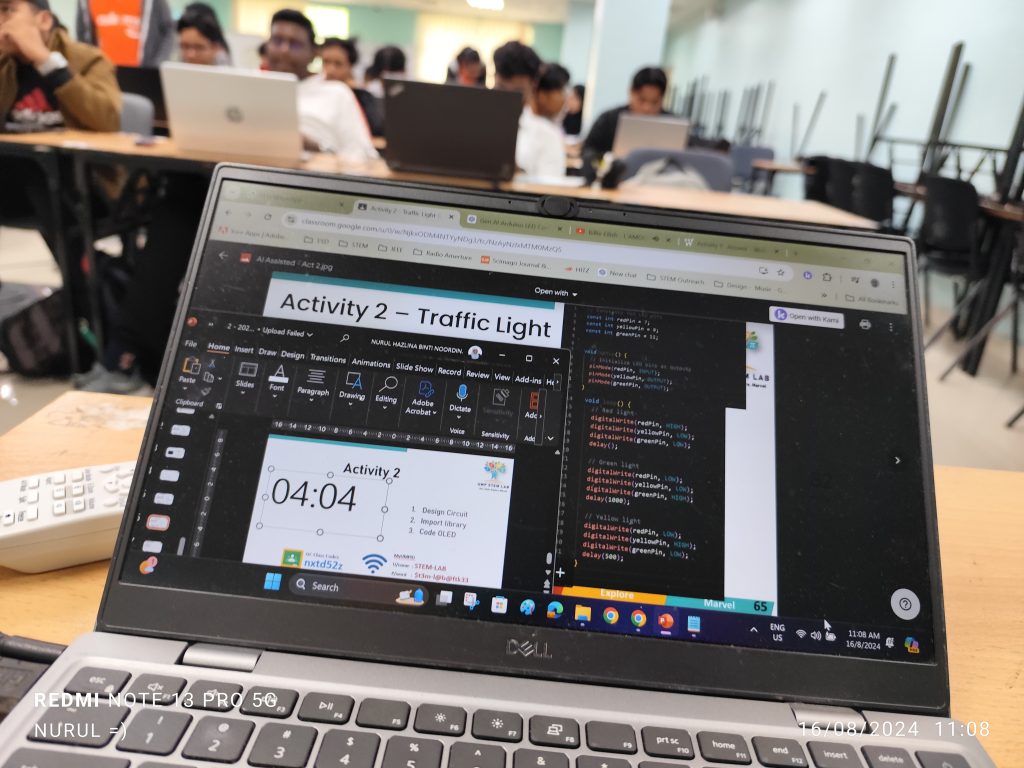
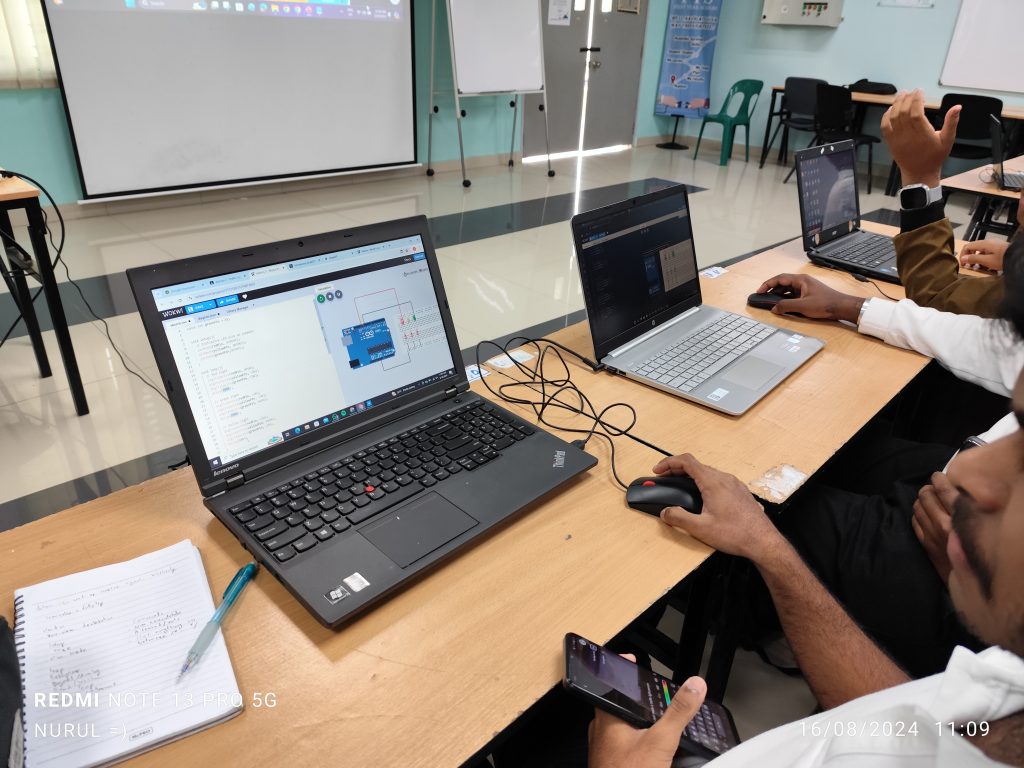
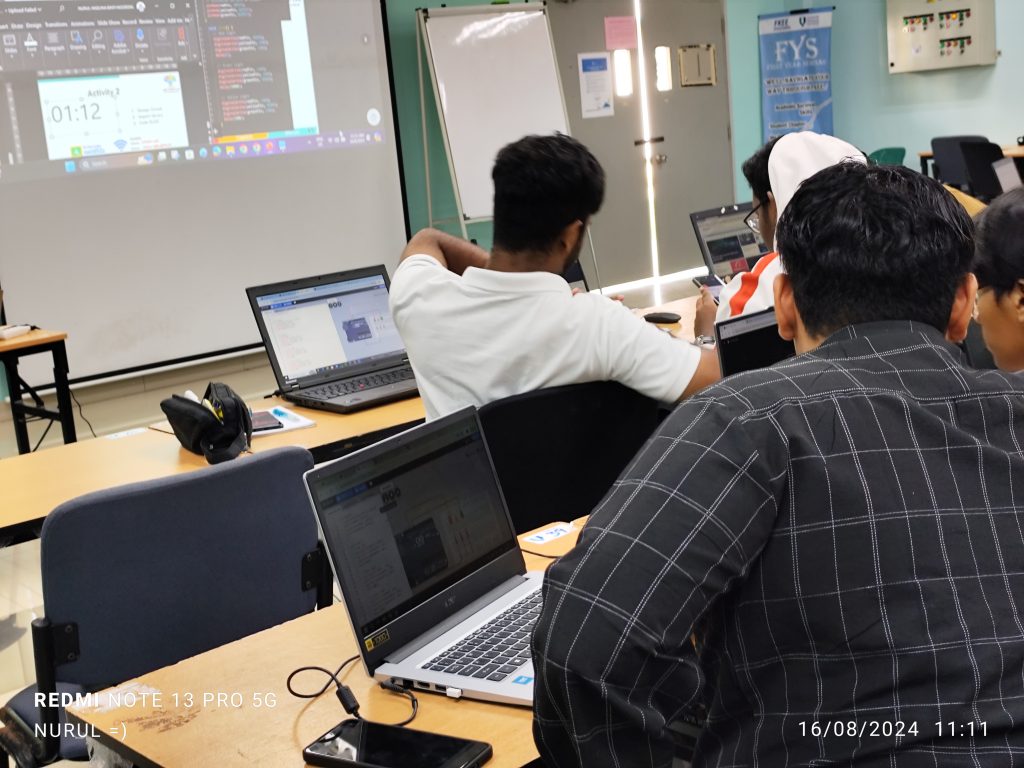
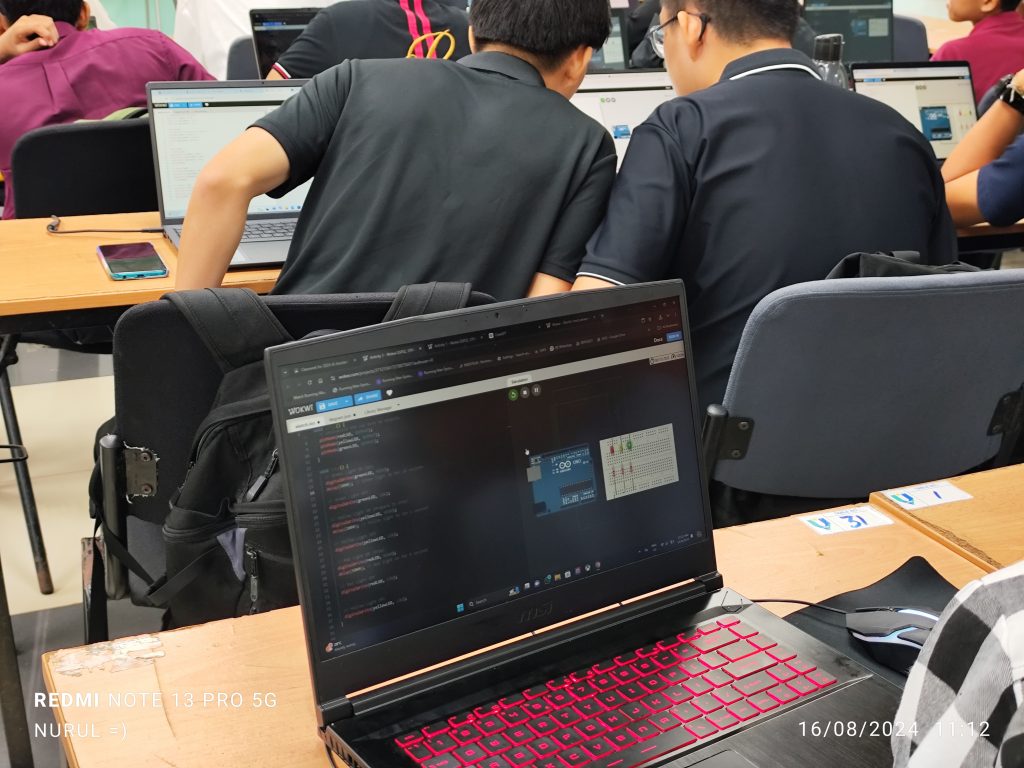
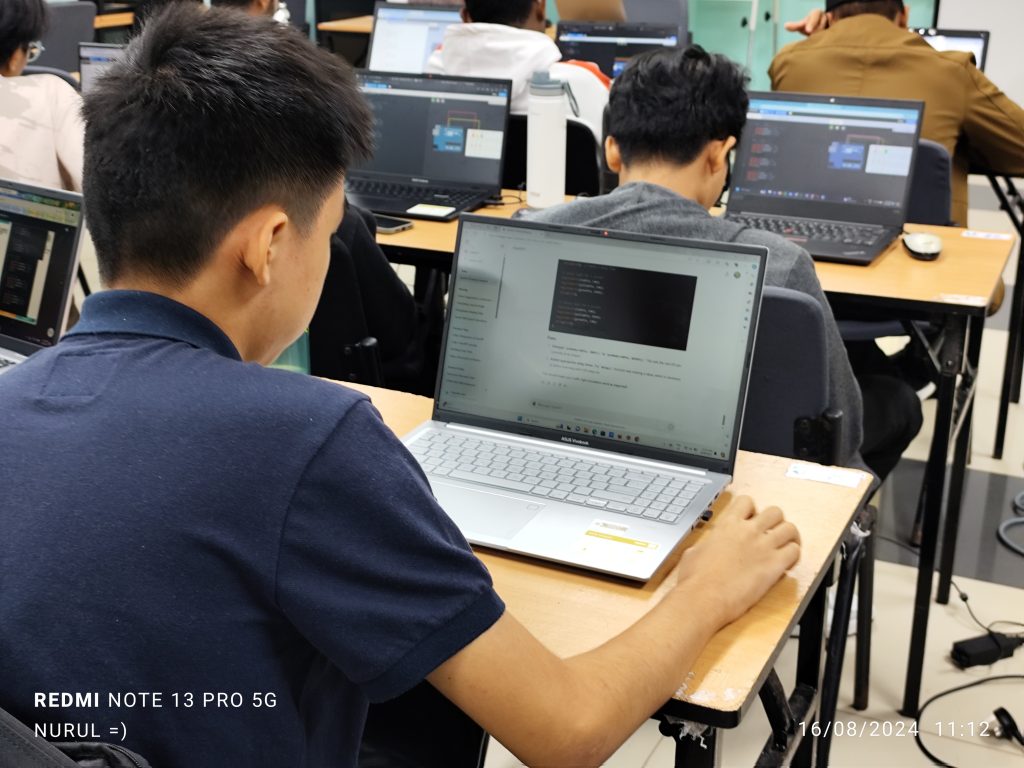
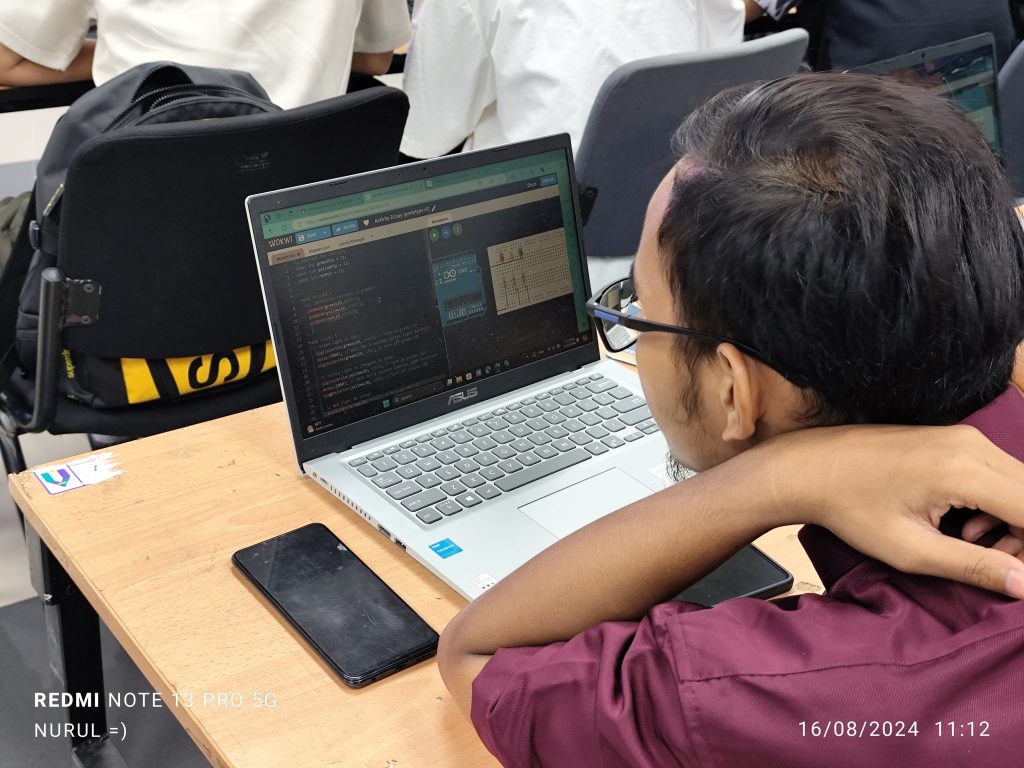
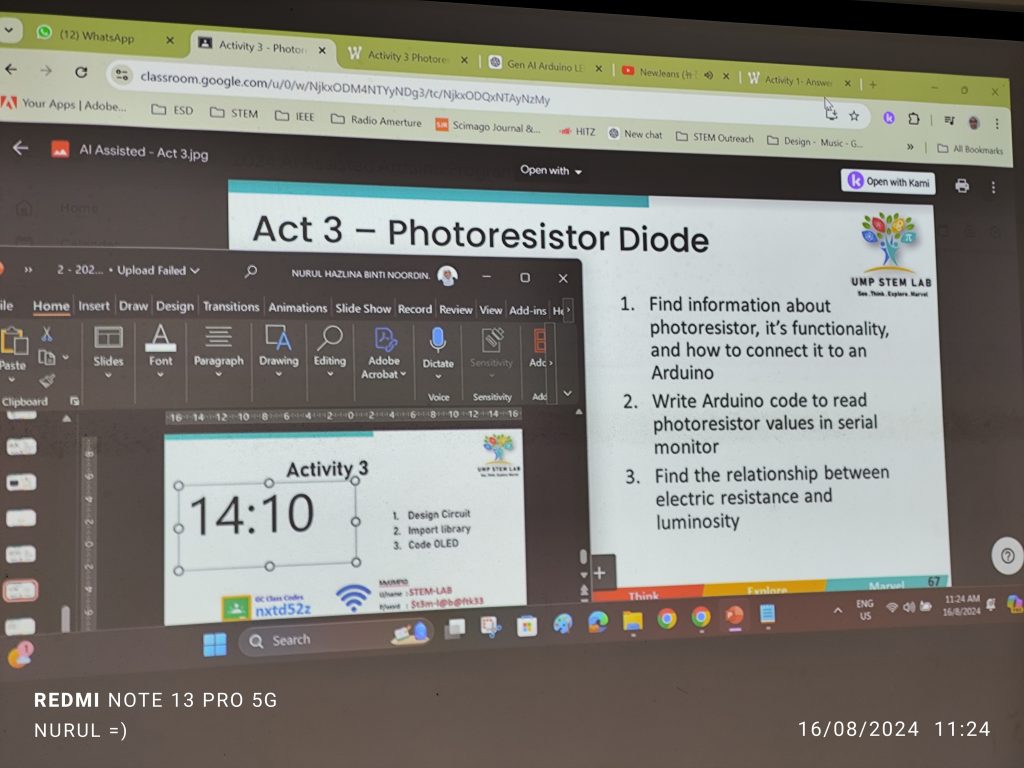
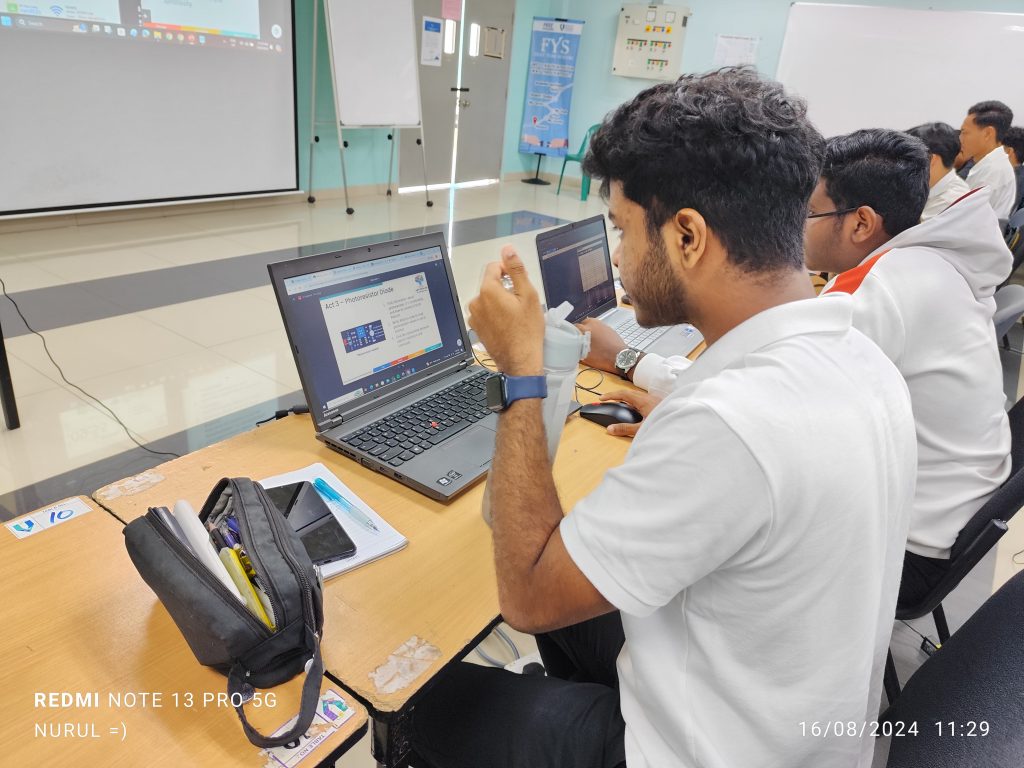
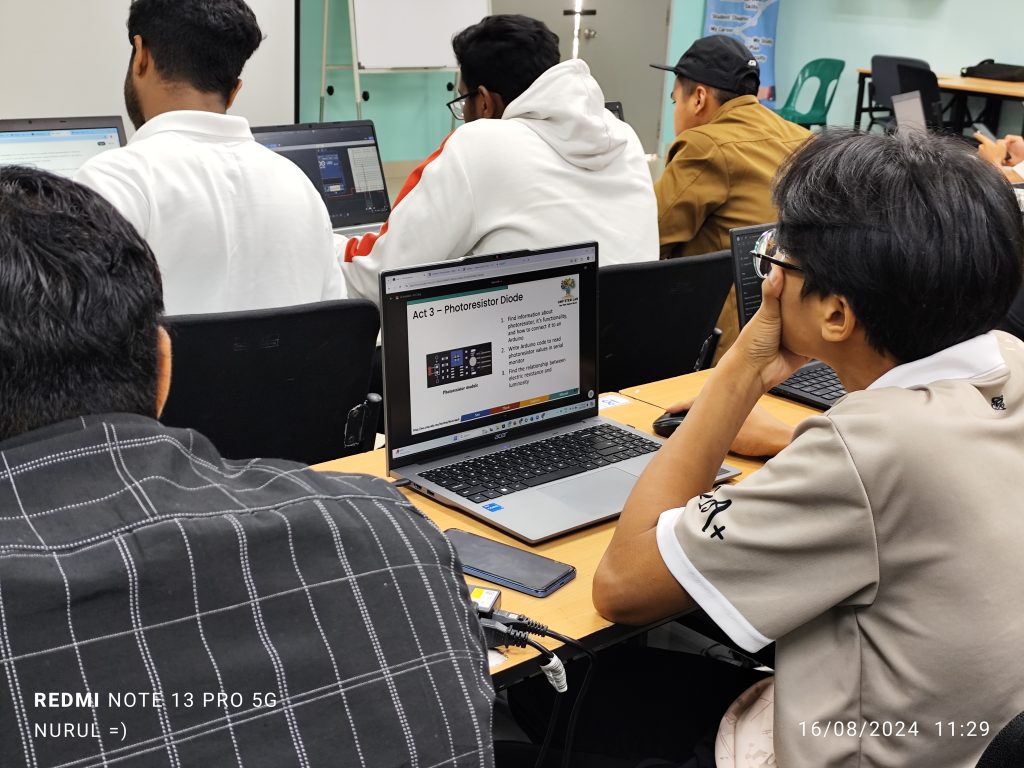
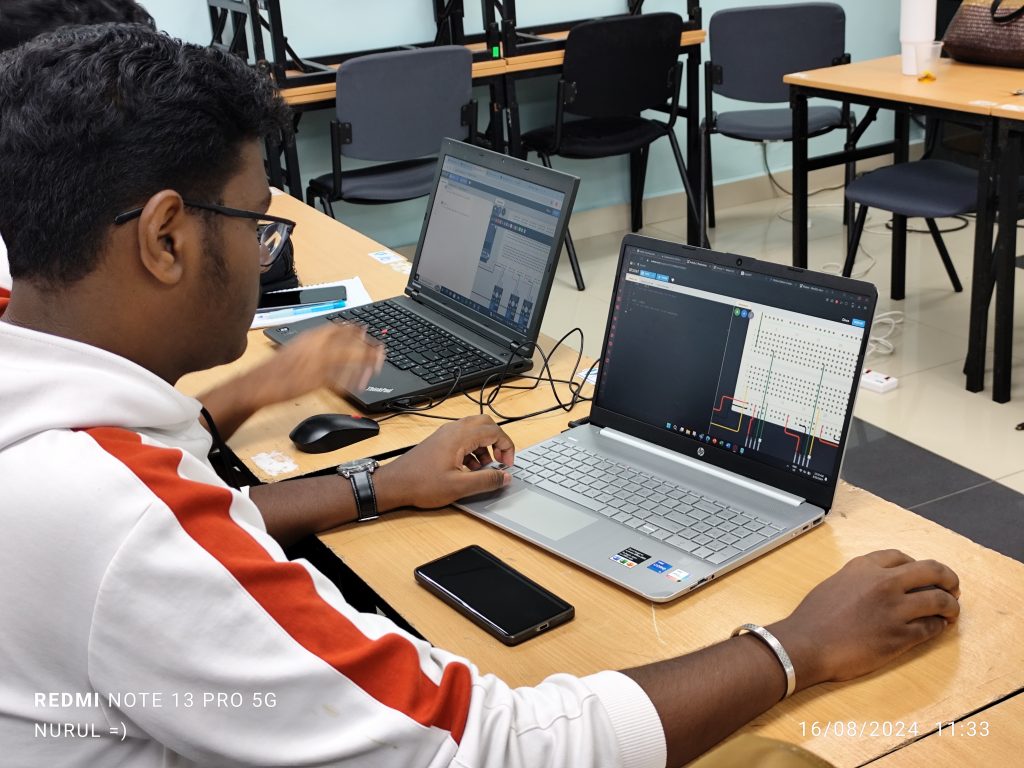

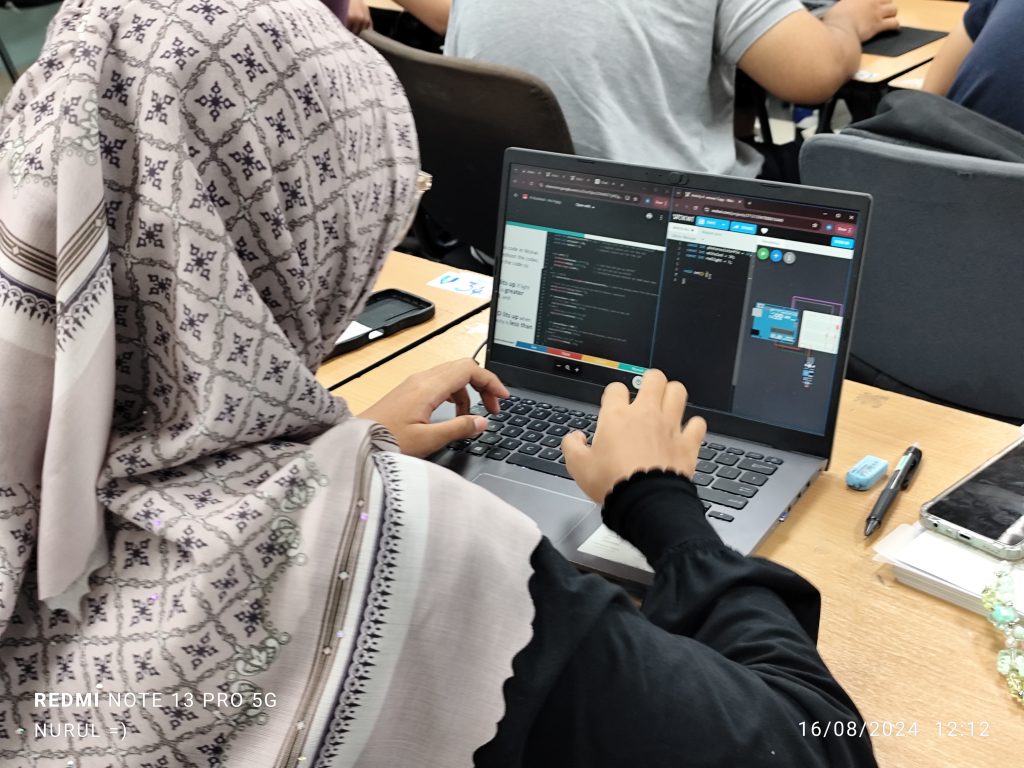
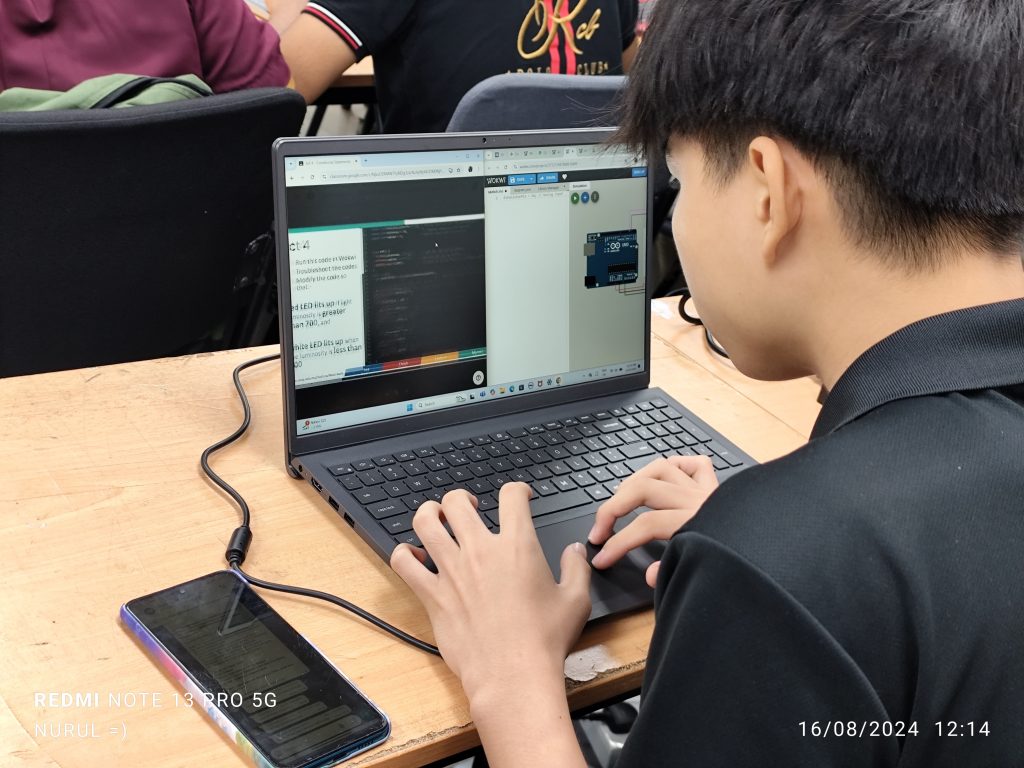
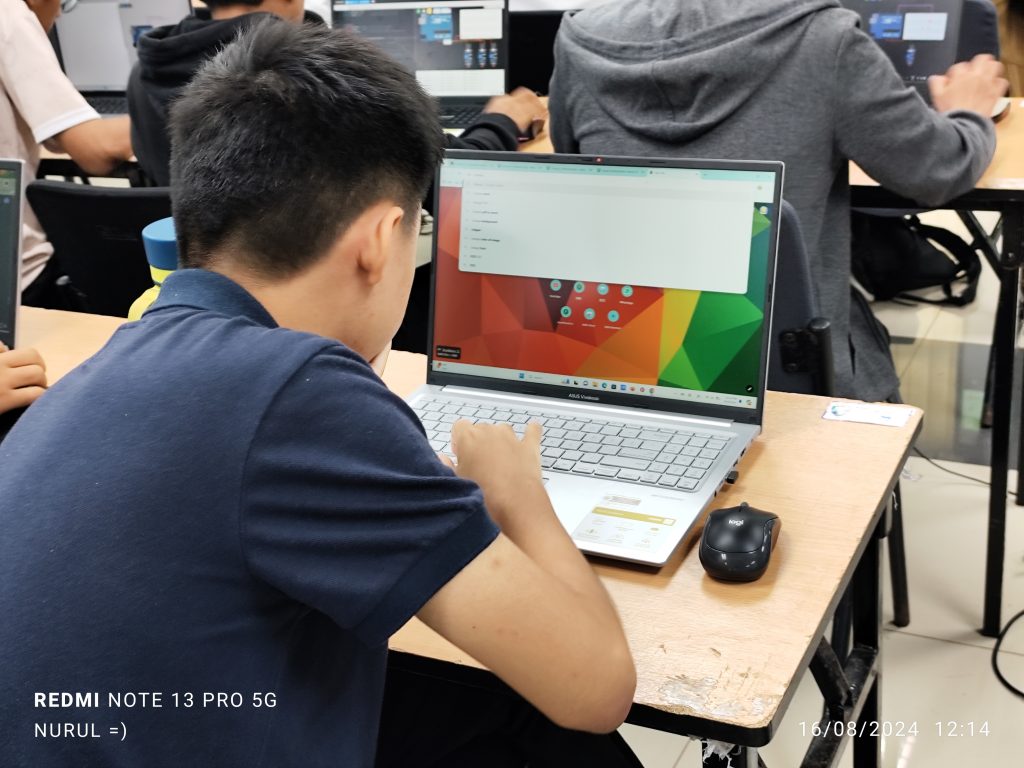
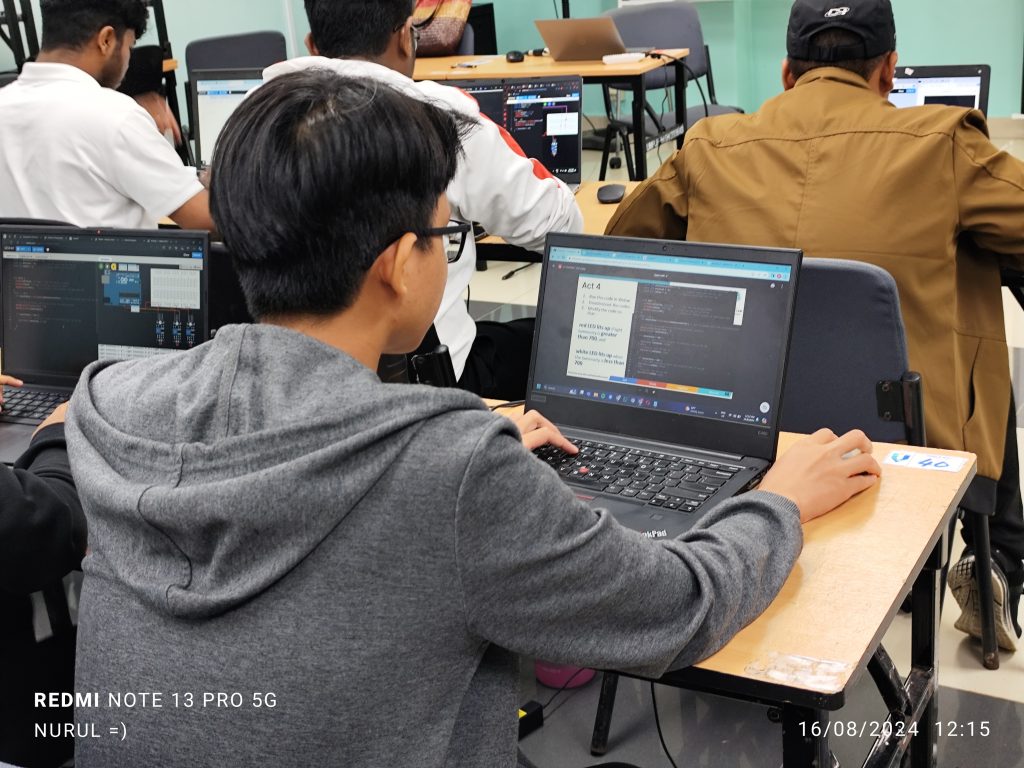
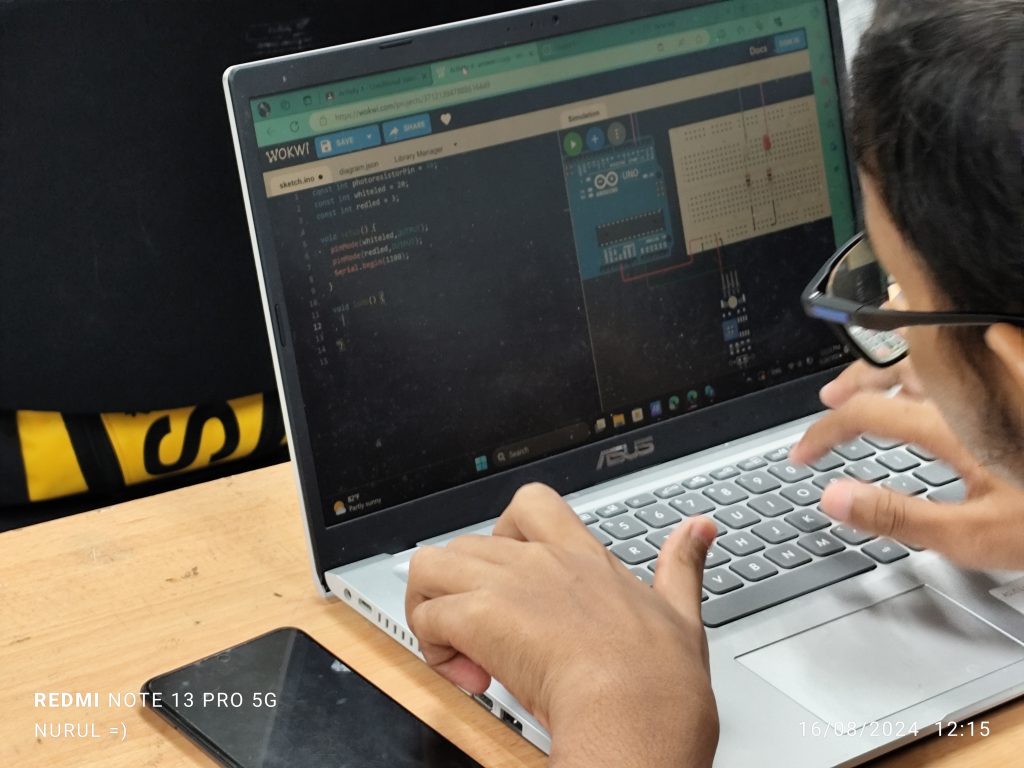
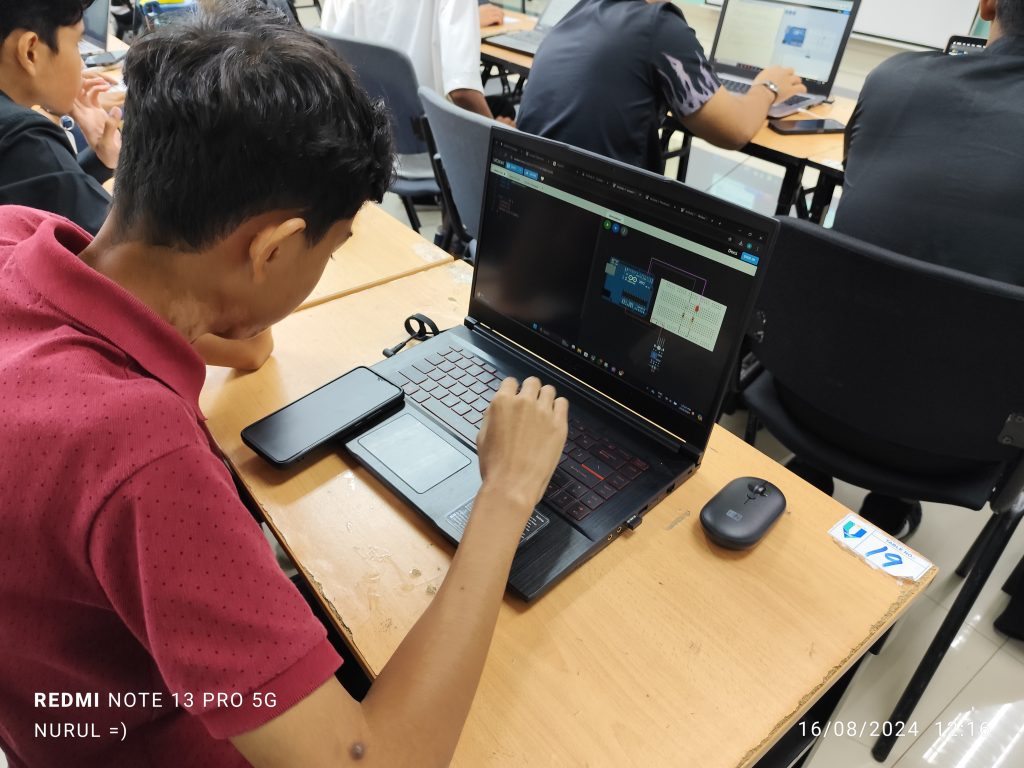
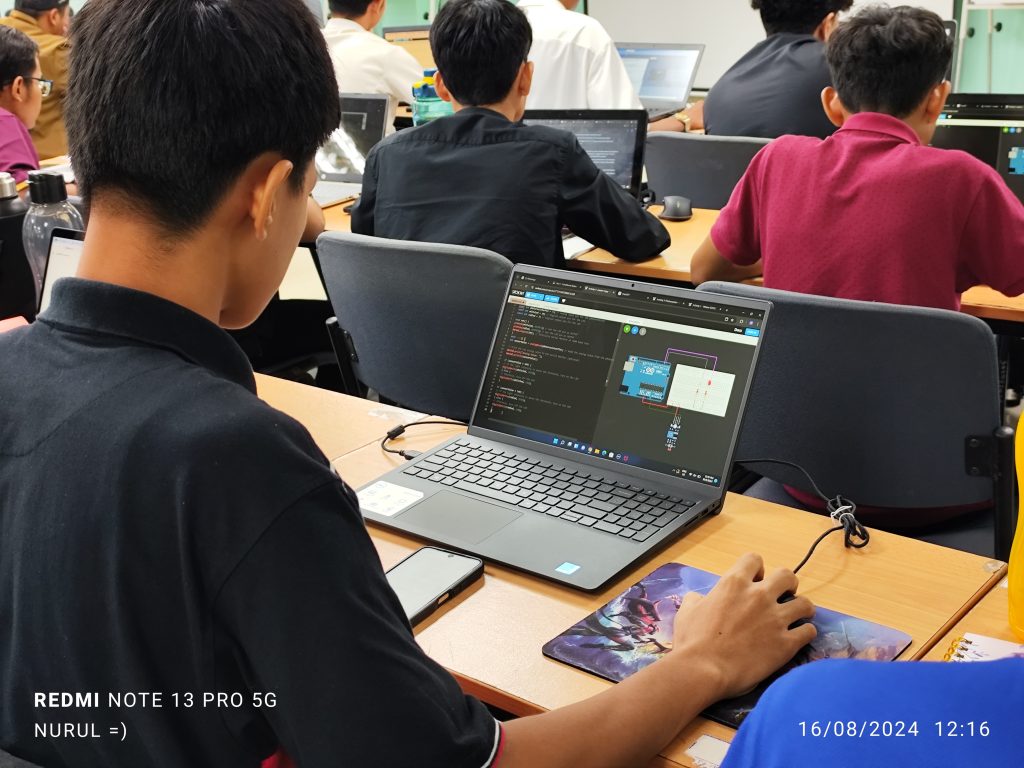

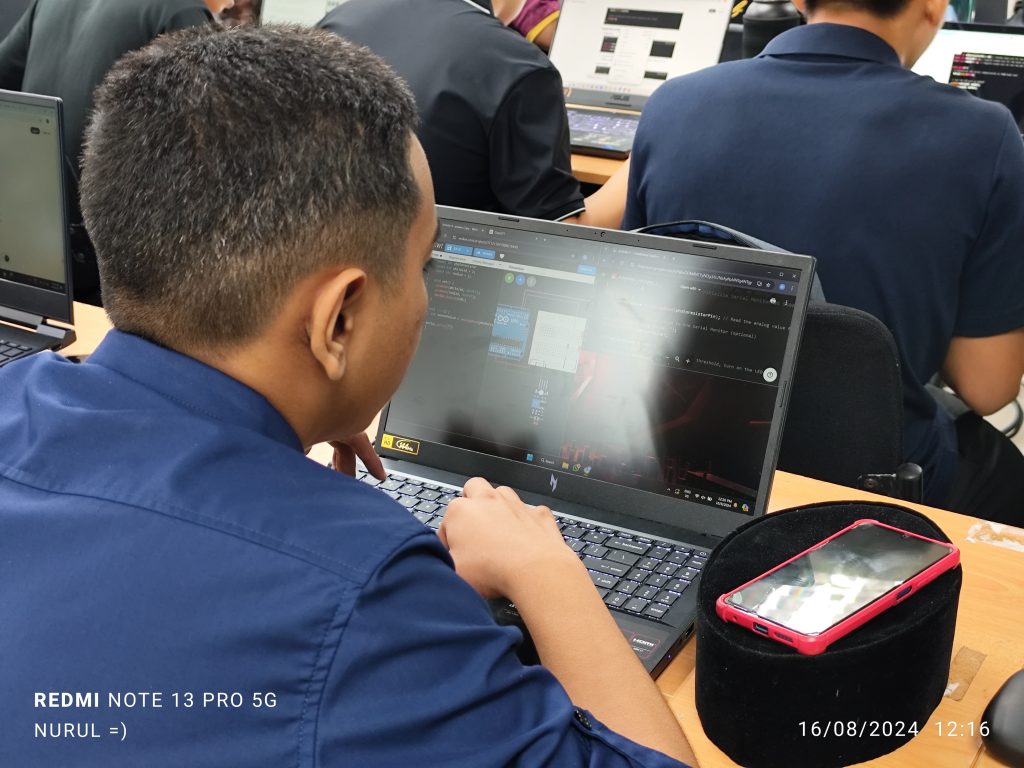
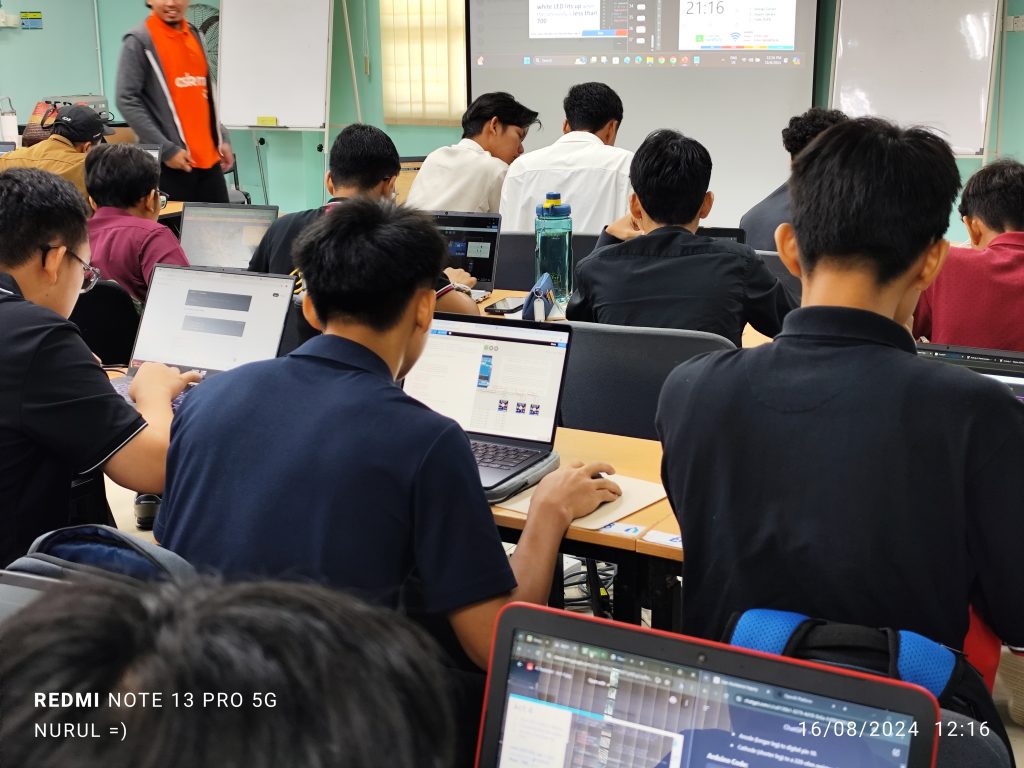
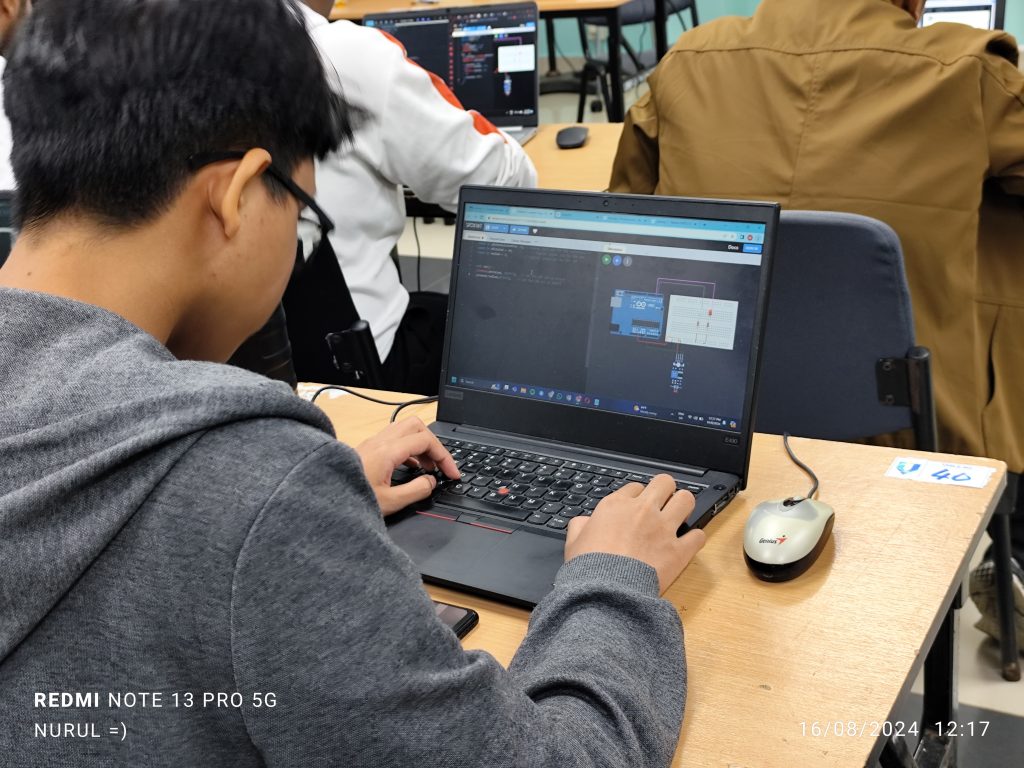
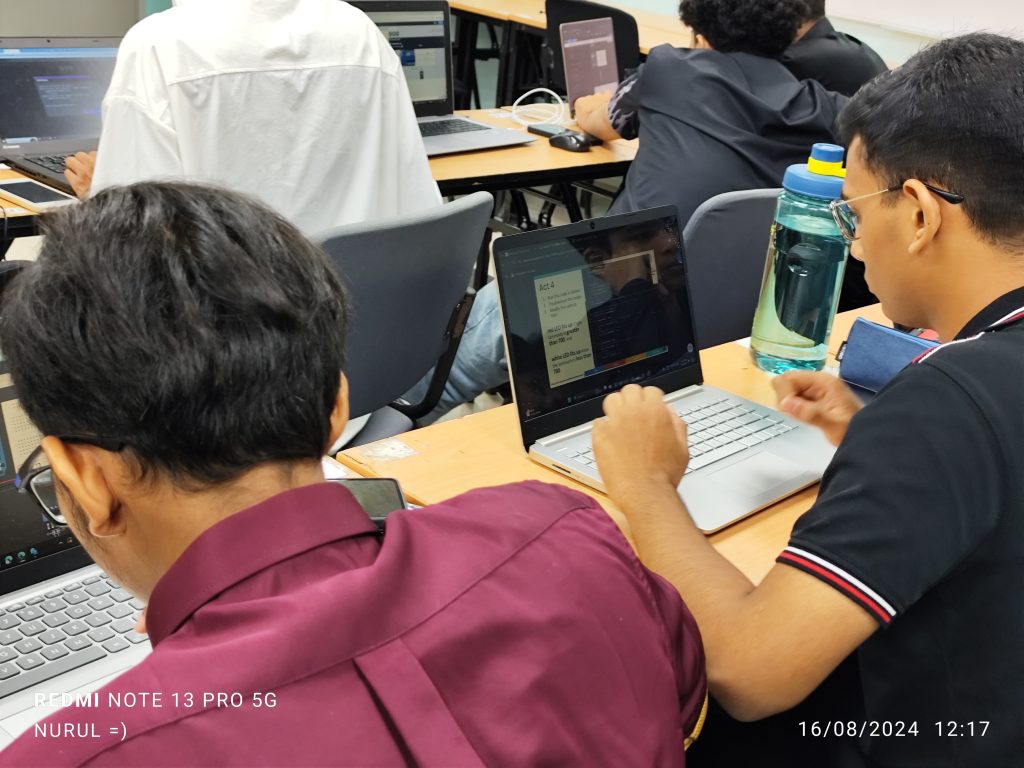
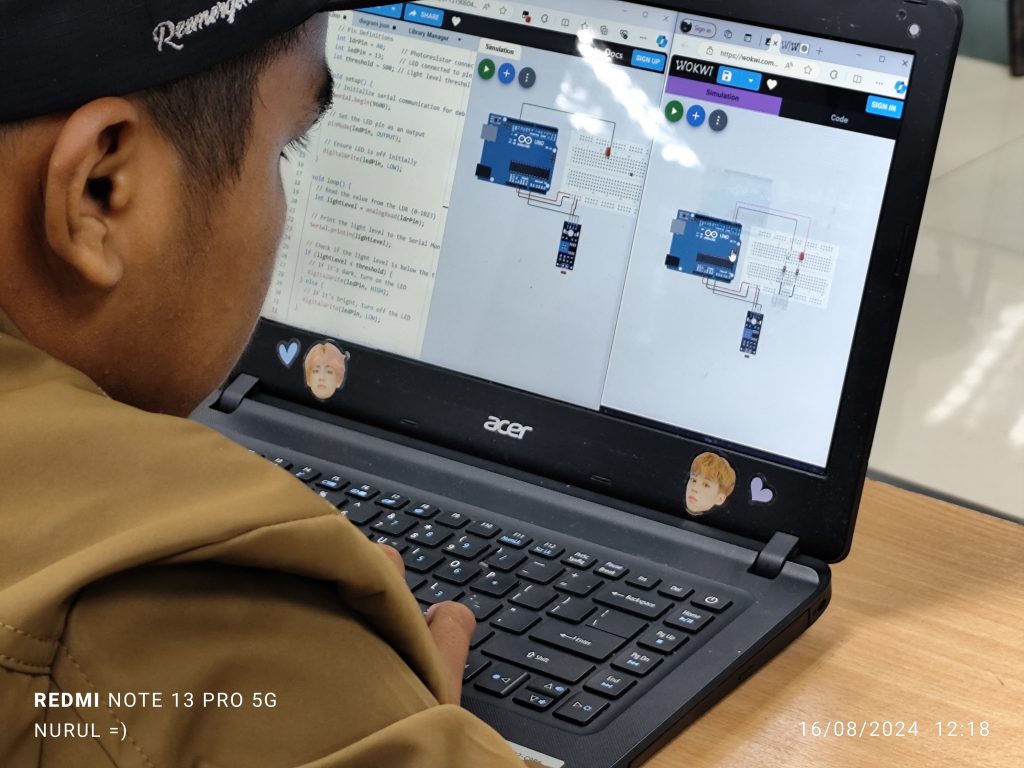

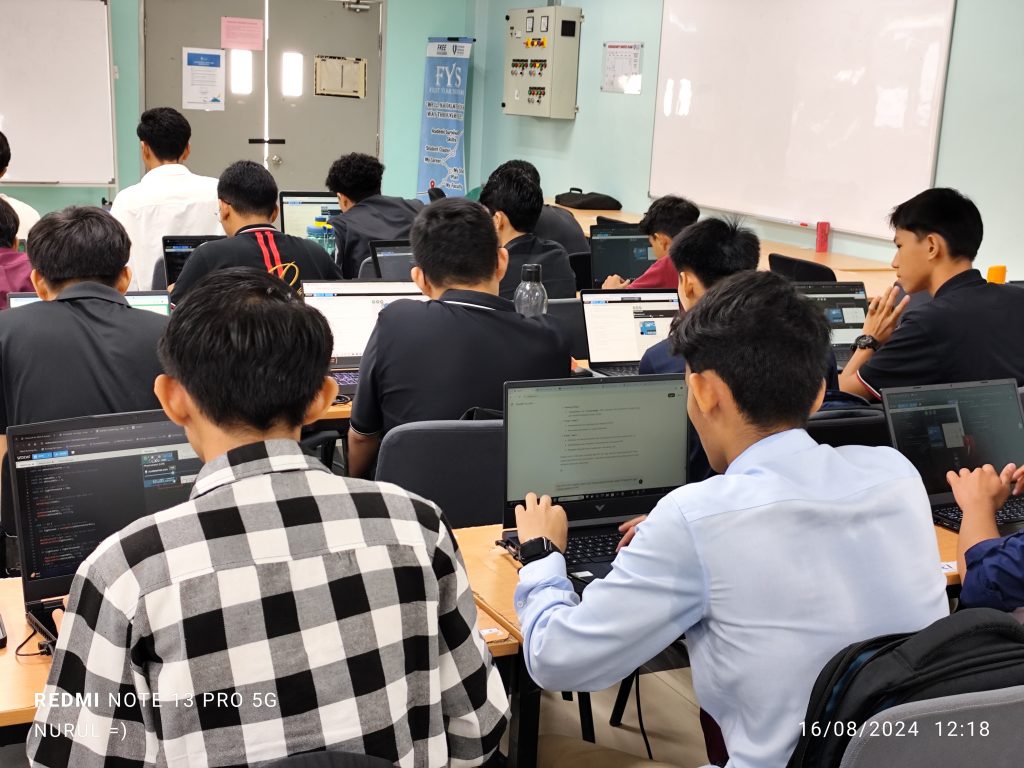

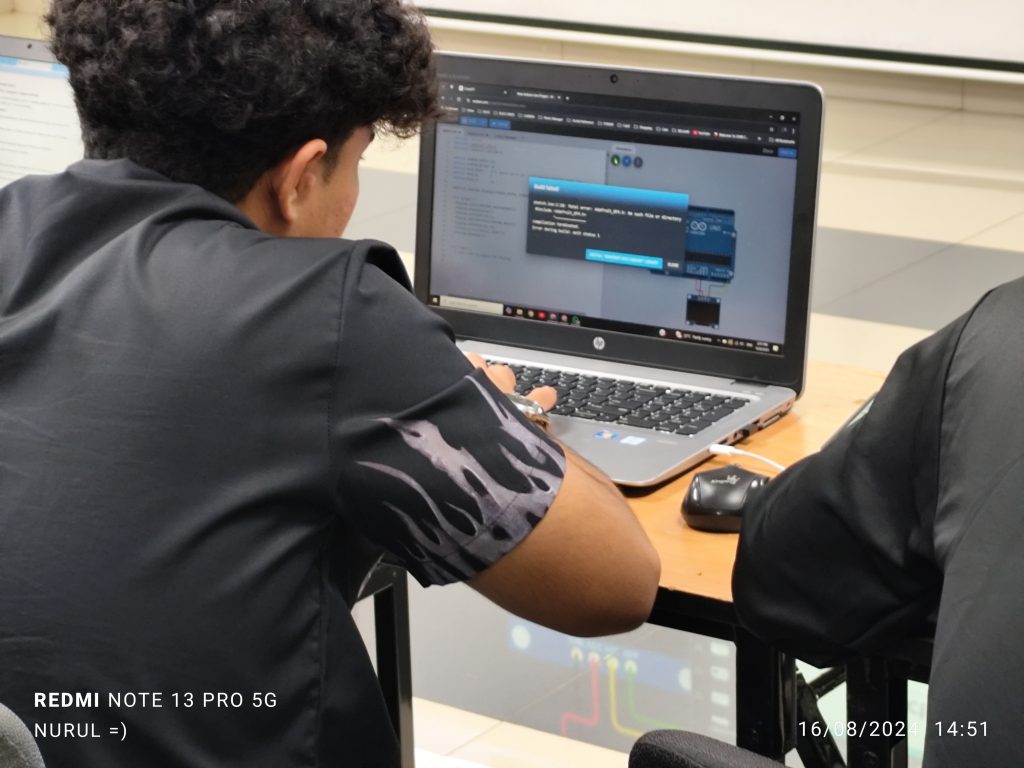

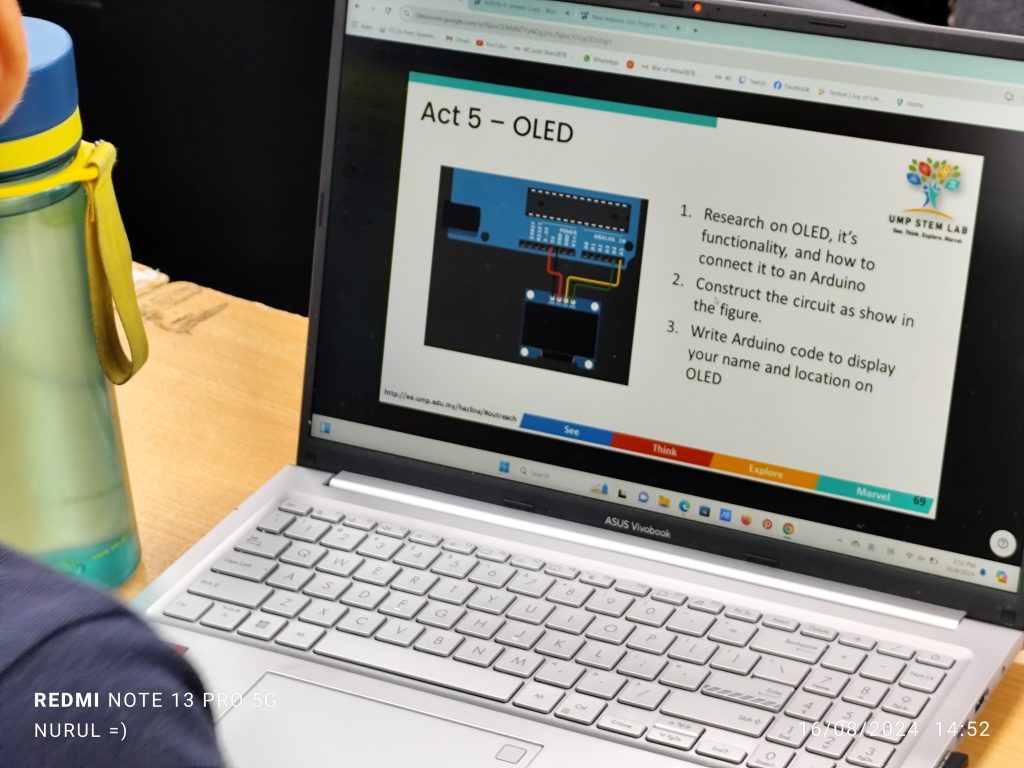


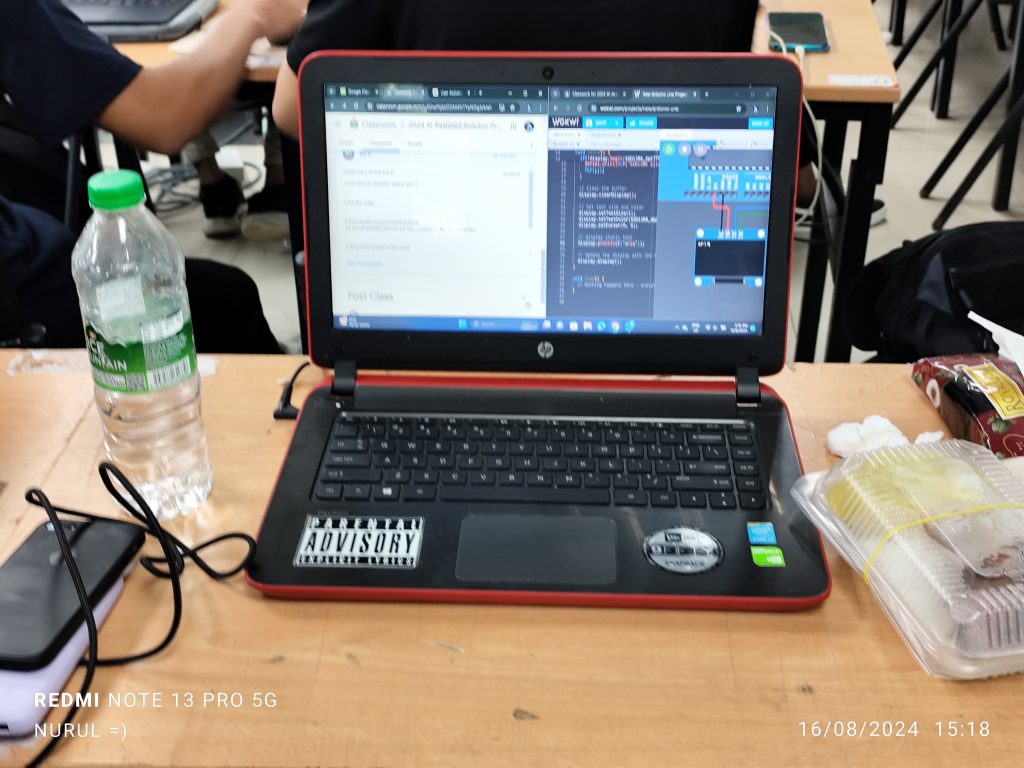
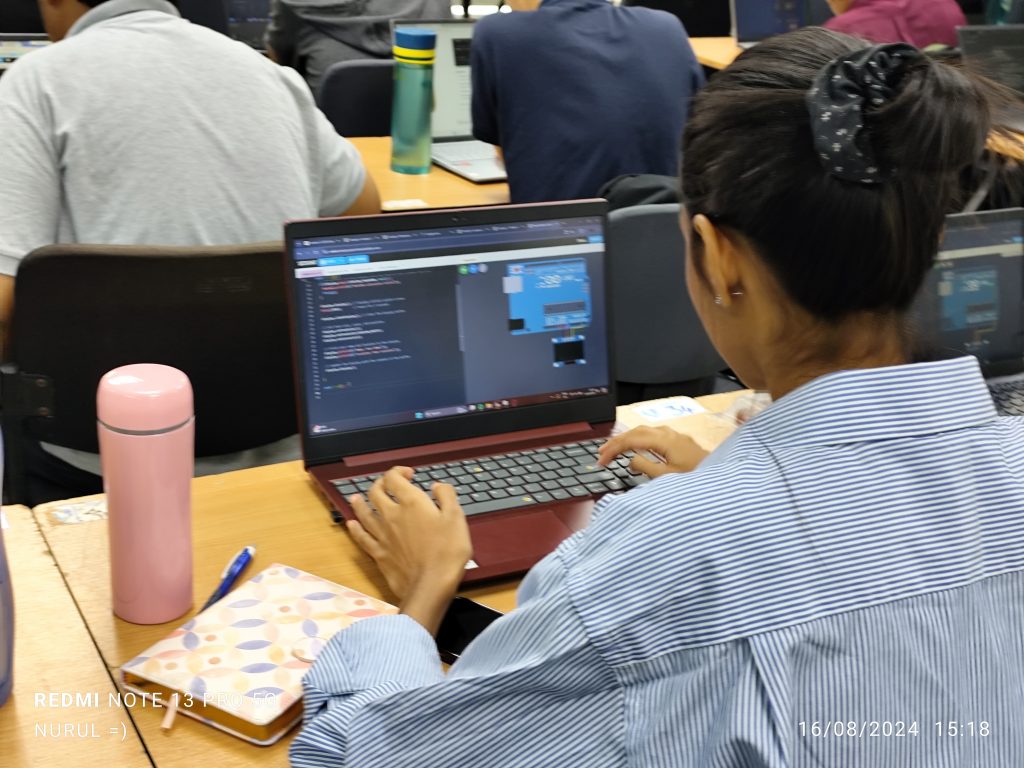
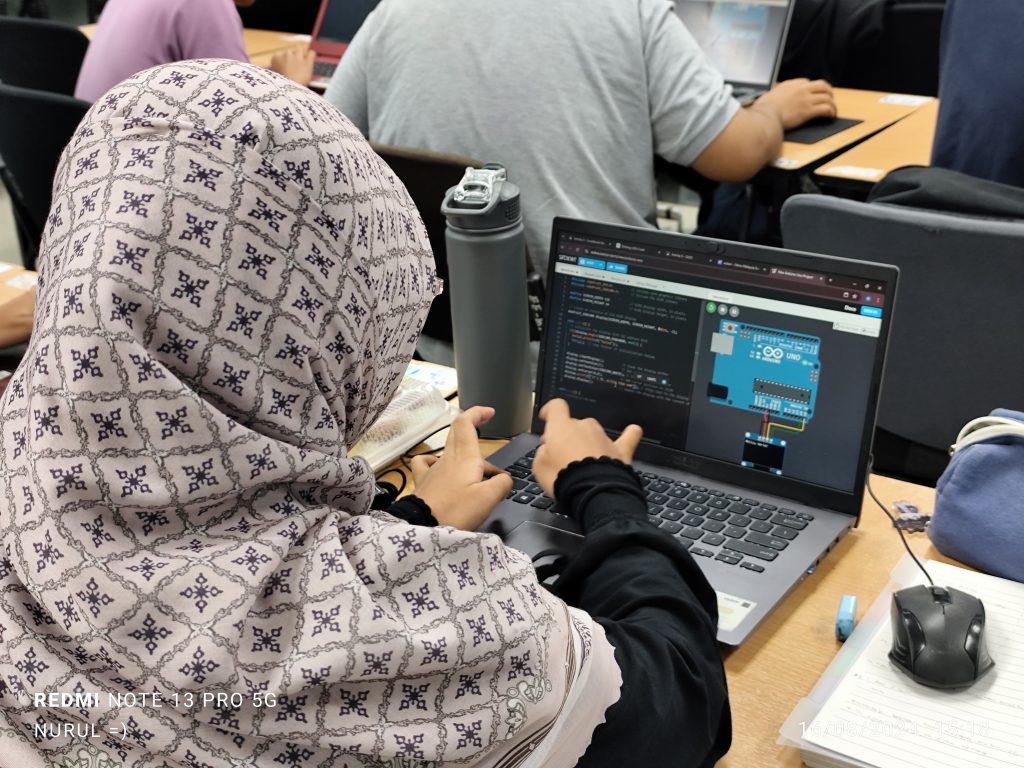
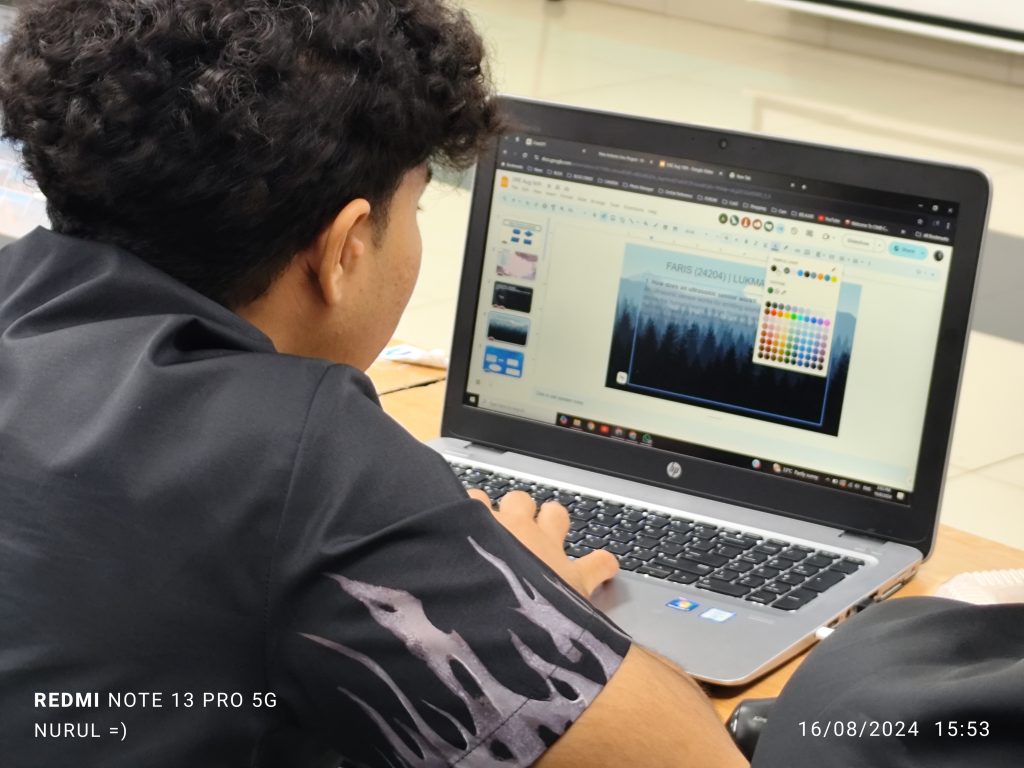
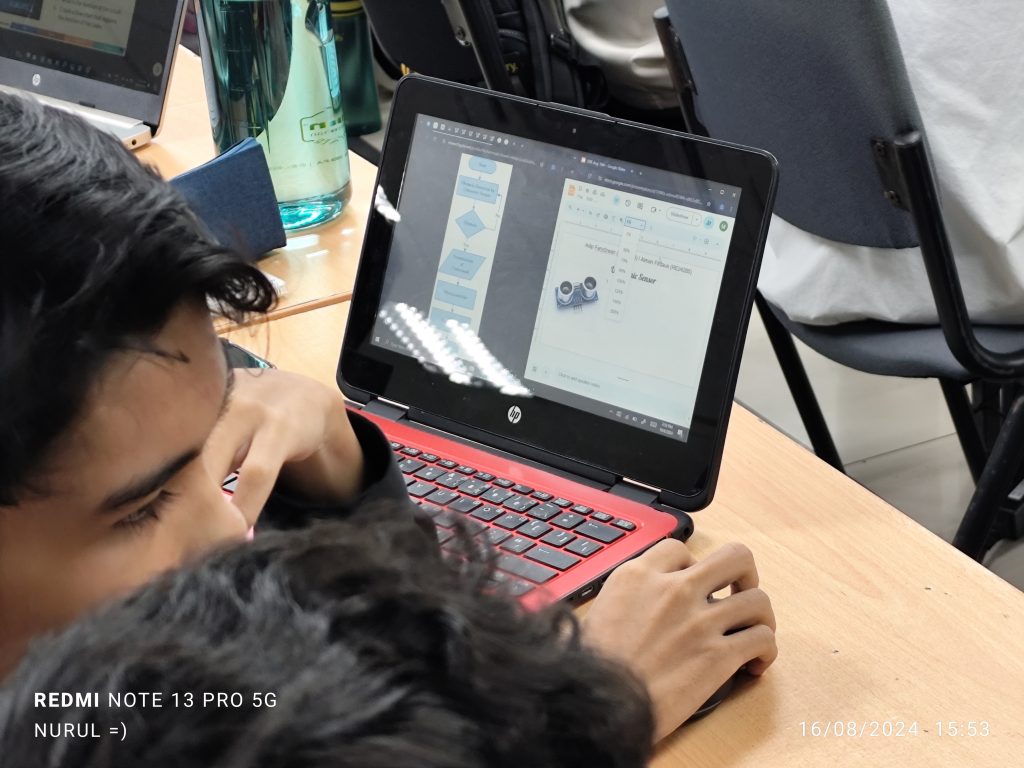

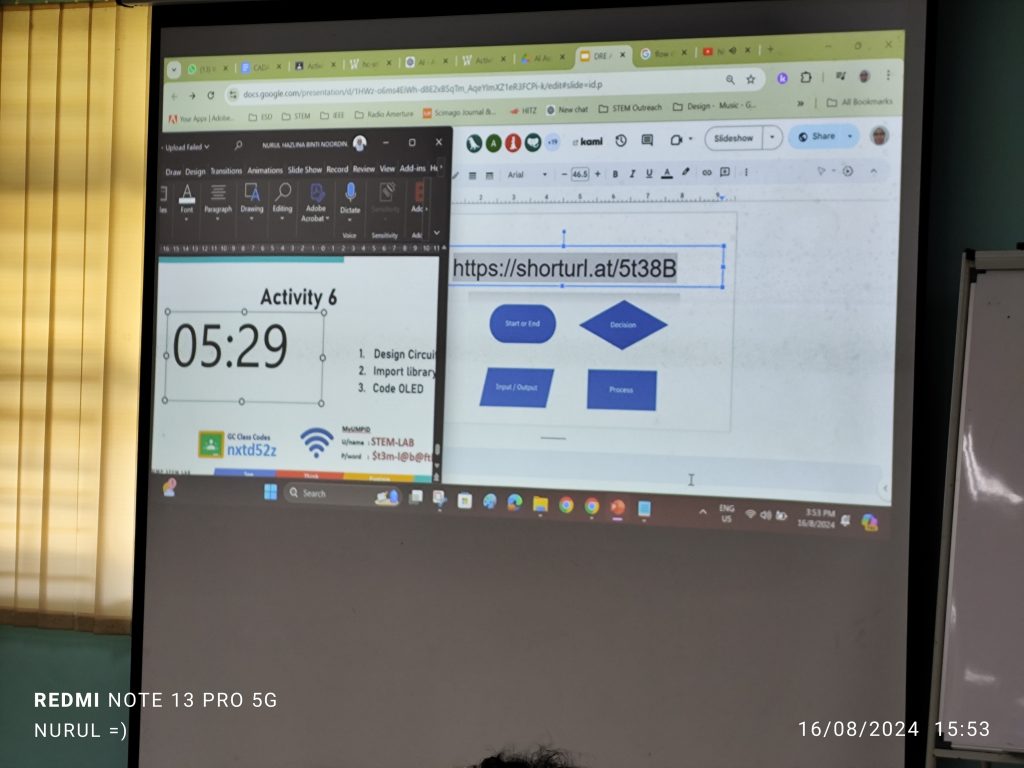
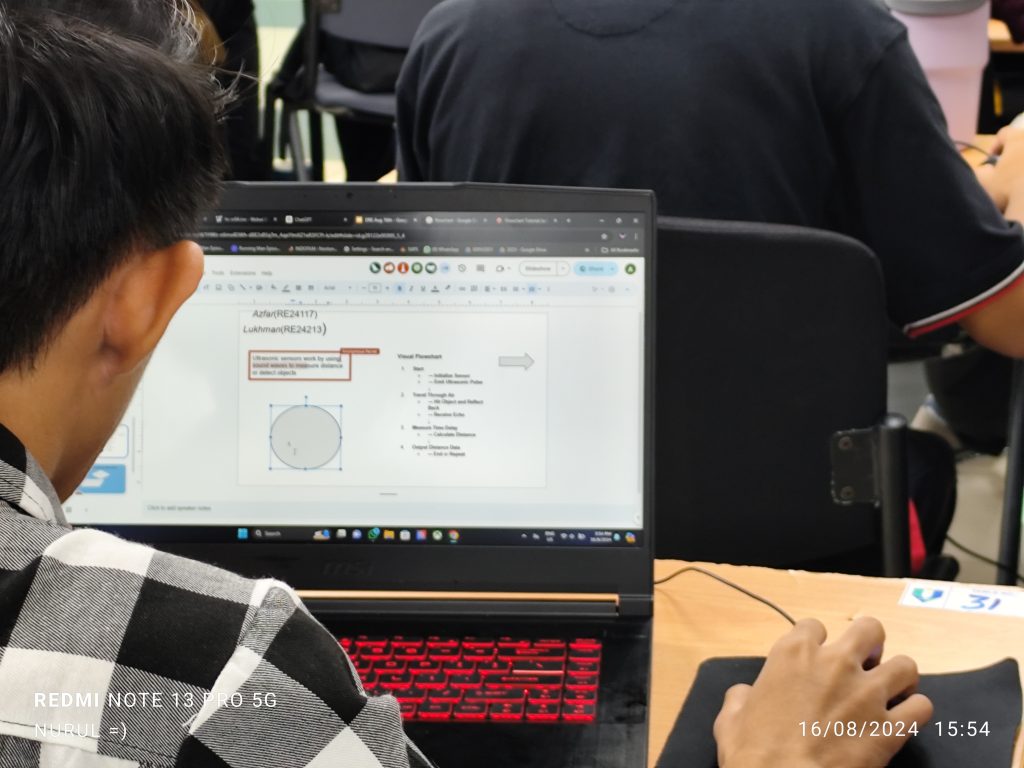
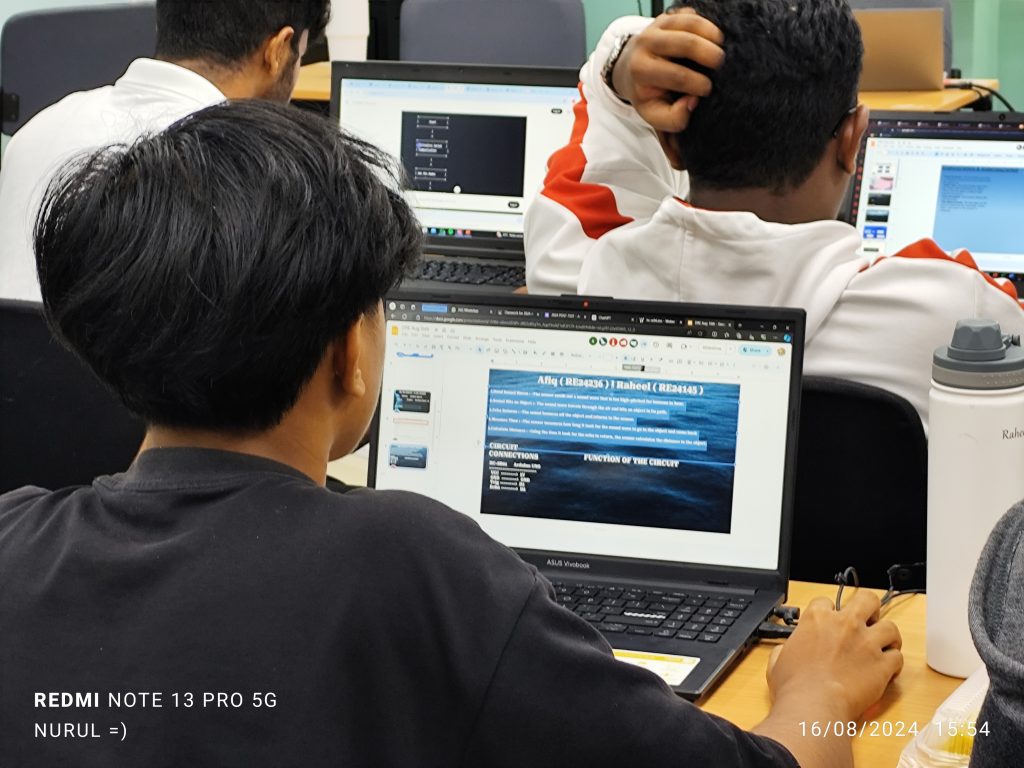

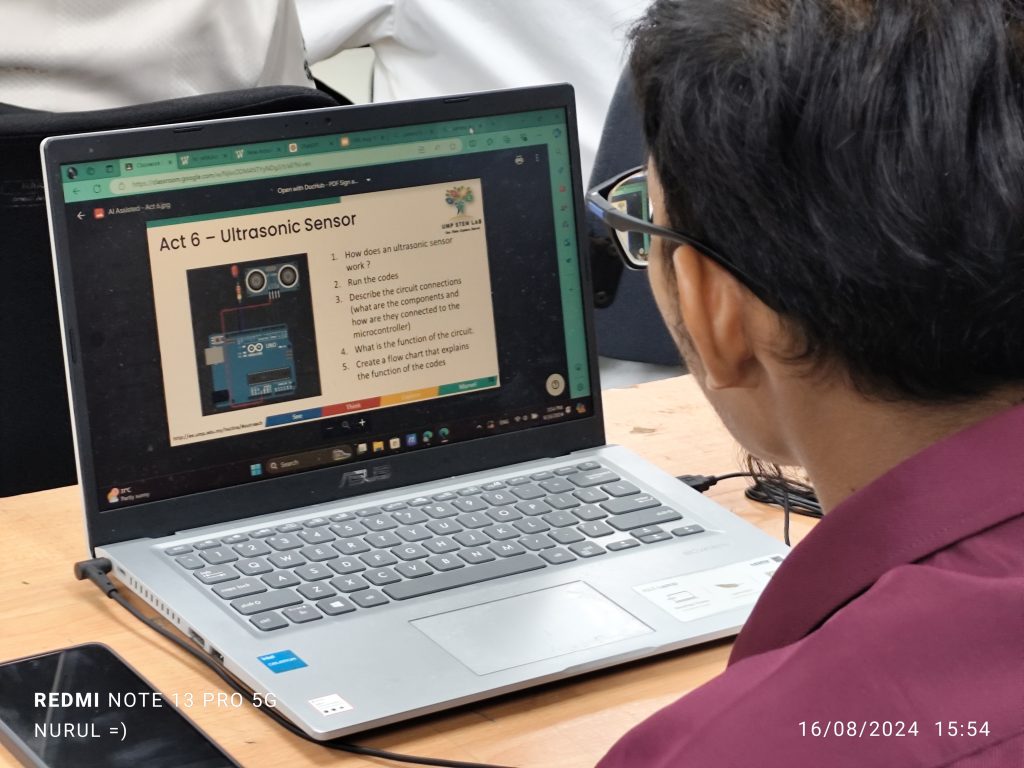
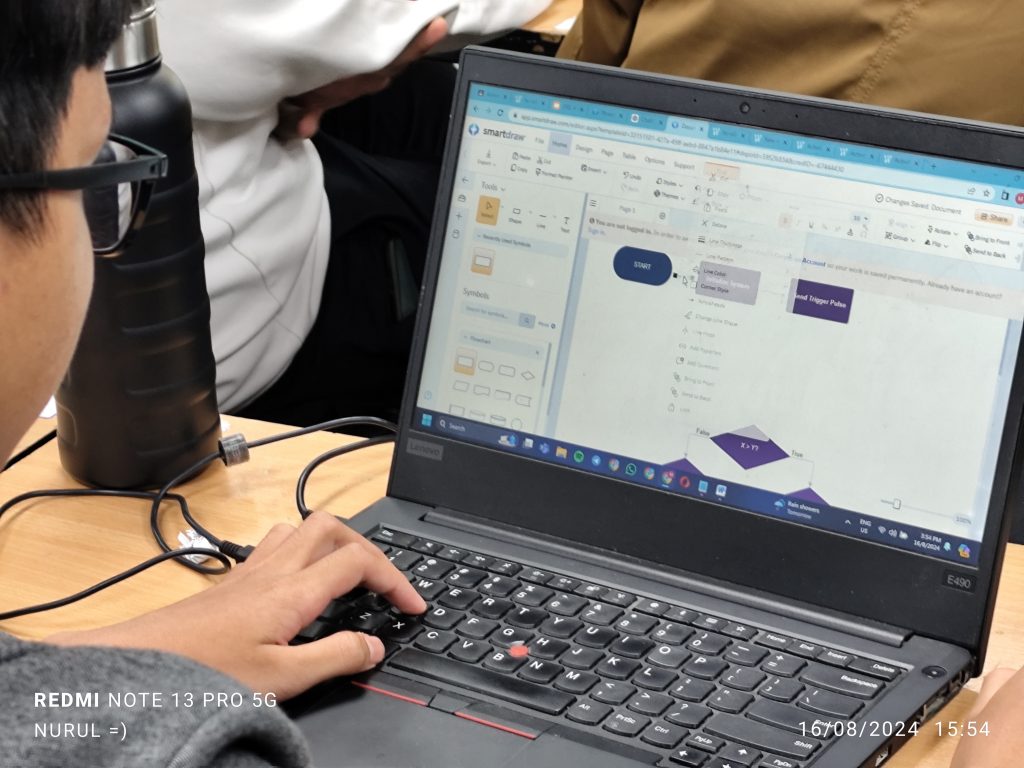
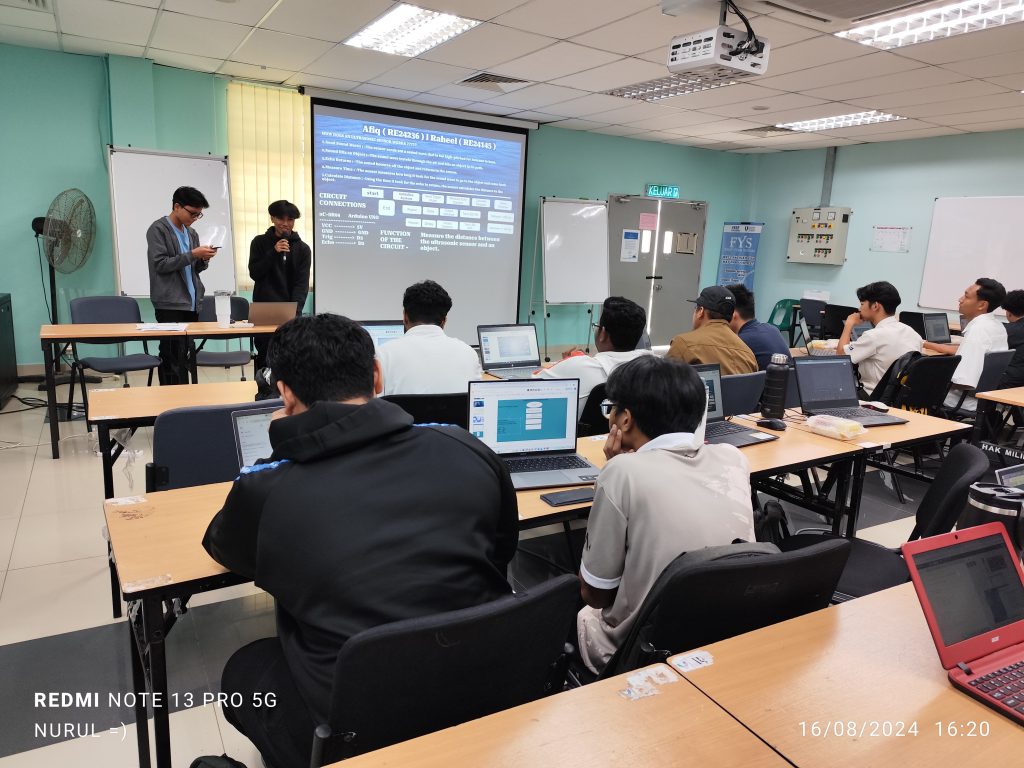
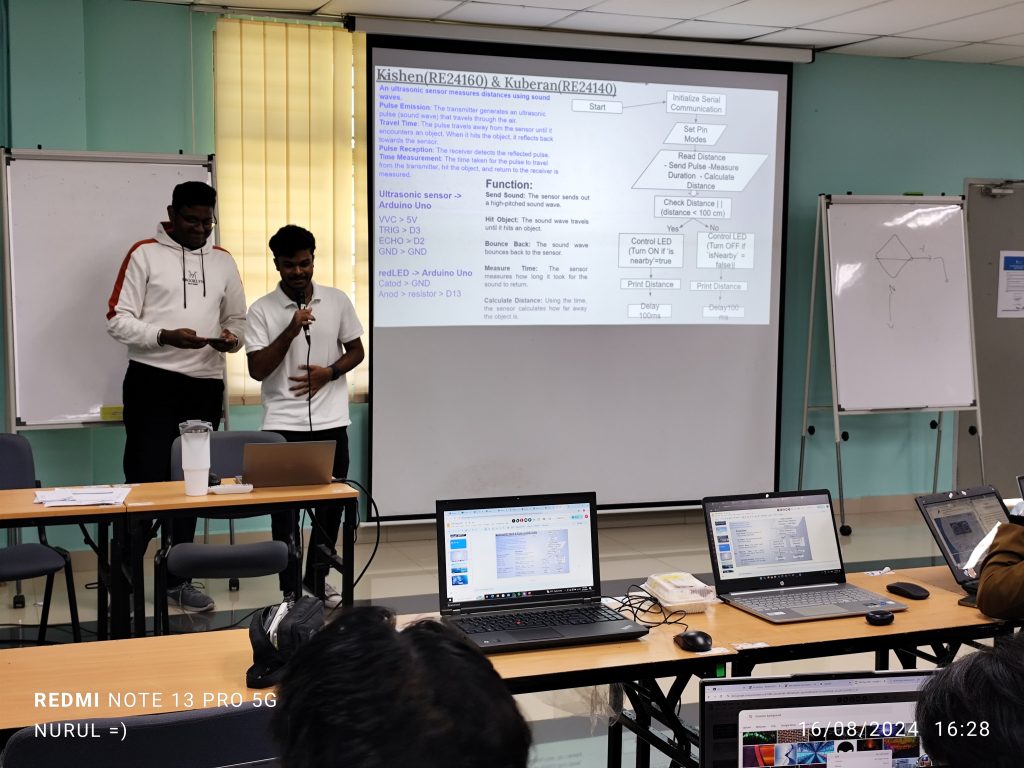
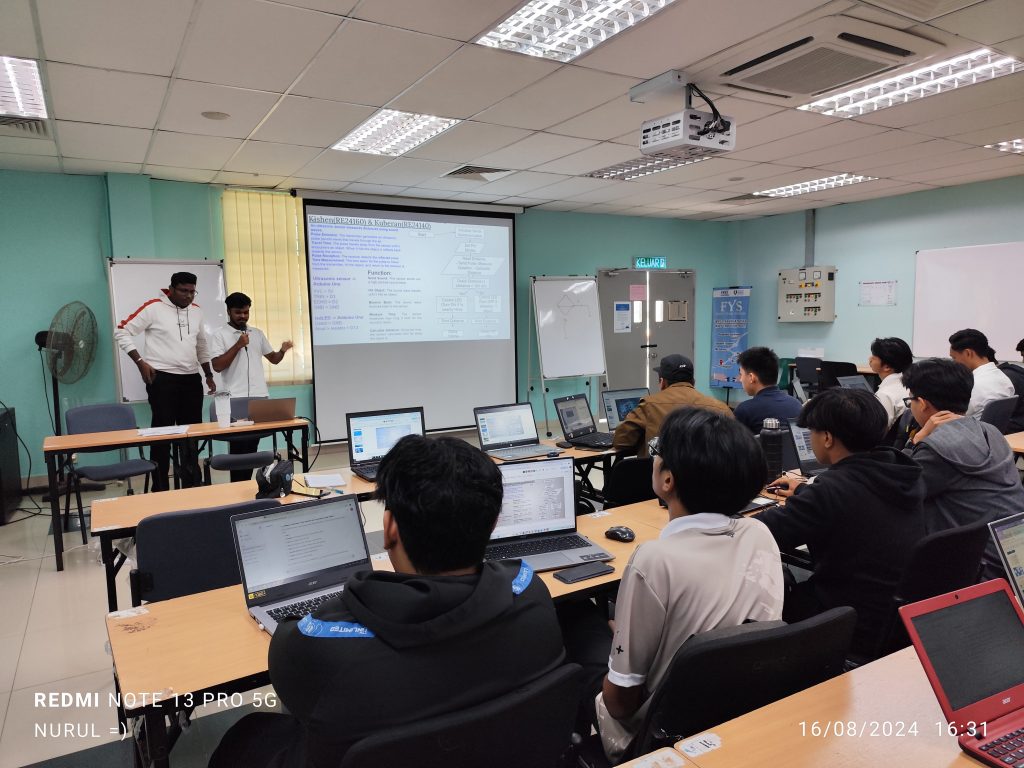
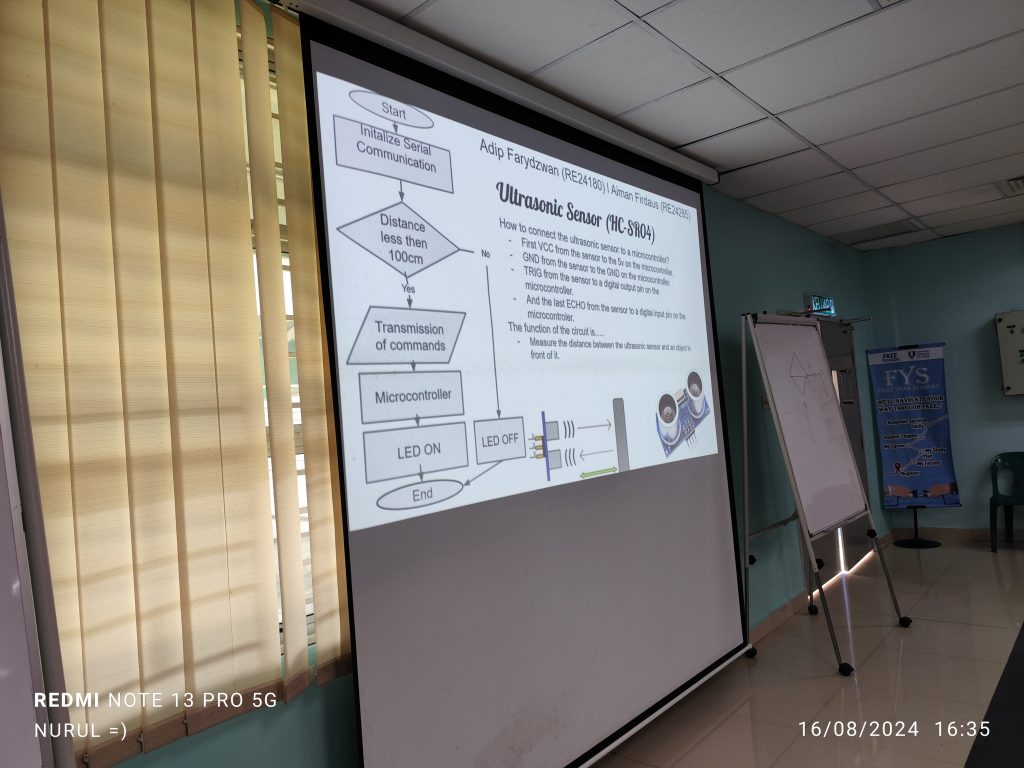


mBlock Programming 2024/4 – Sekolah Datuk Abdul Razak
A synopsis of the program can be retrieved via the following link.
In the program, 63 participants from Sekolah Datuk Abdul Razak were introduced to mBlock programming, learning to use its graphical interface to create sequences of instructions. They explored sequential programming, conditional statements, and loops through hands-on tutorials. These foundational skills were applied in two projects: a Snake game and a Pac-Man game. In the Snake game, they programmed the snake’s movement, growth, and collision detection, while in the Pac-Man game, they navigated a maze, collected points, and avoided ghosts. This approach provided a comprehensive understanding of programming concepts and their practical applications.
Appreciation to Cikgu Azlinda for coordinating the communication between the participants and UMPSA STEM Lab.
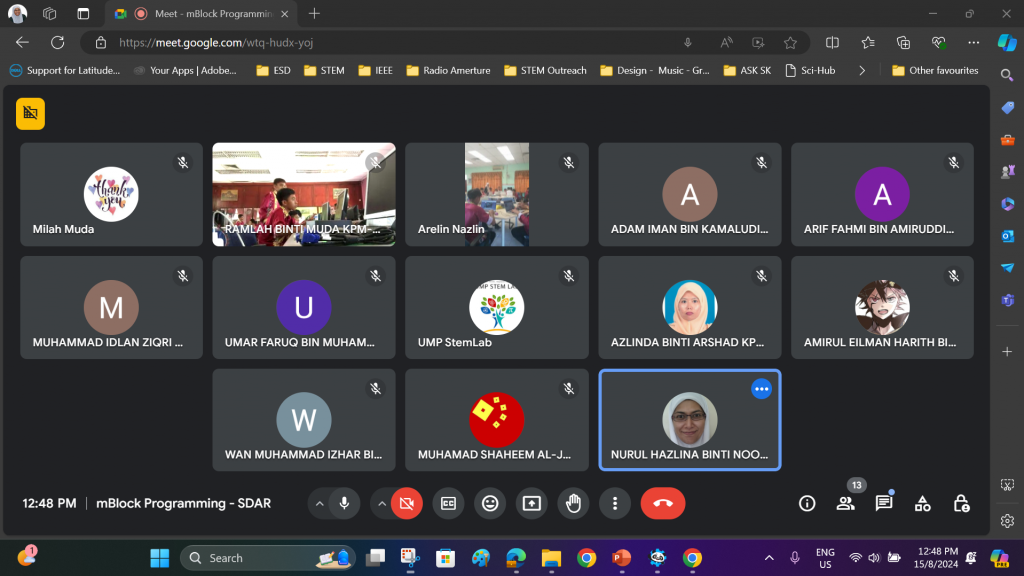
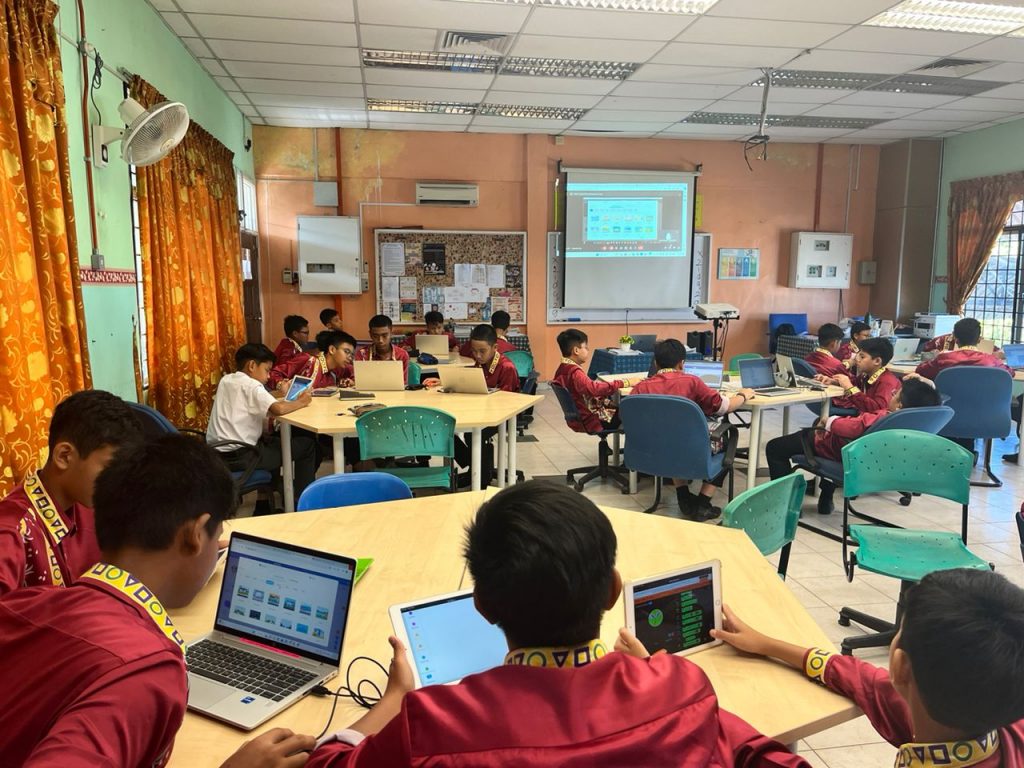
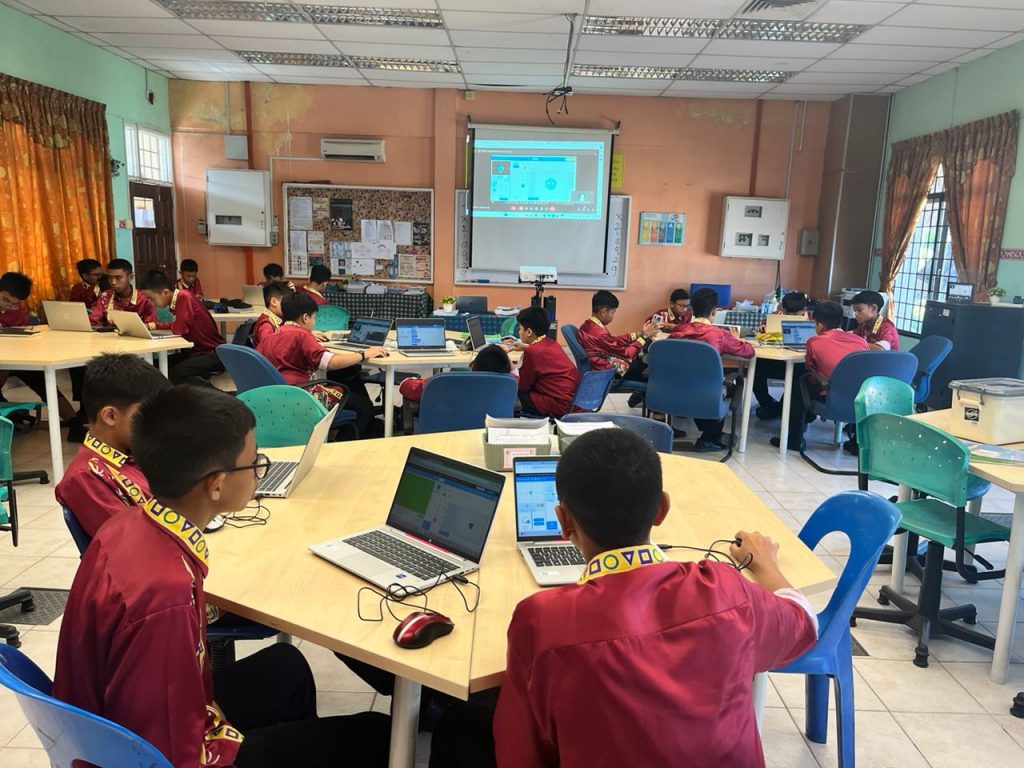
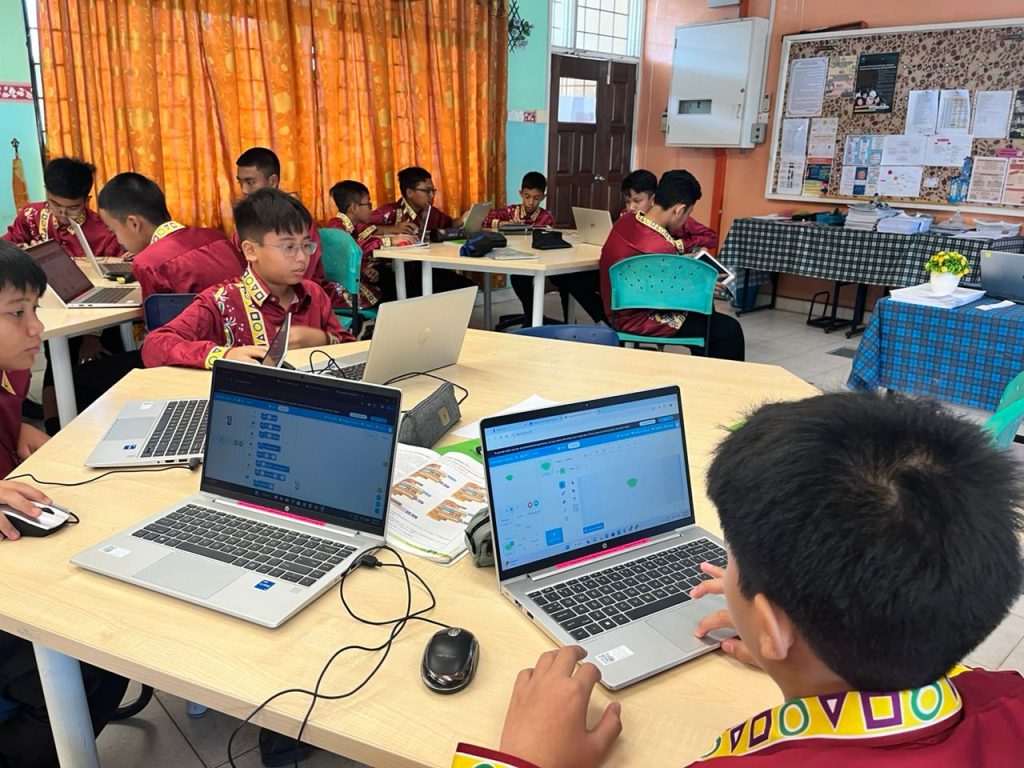

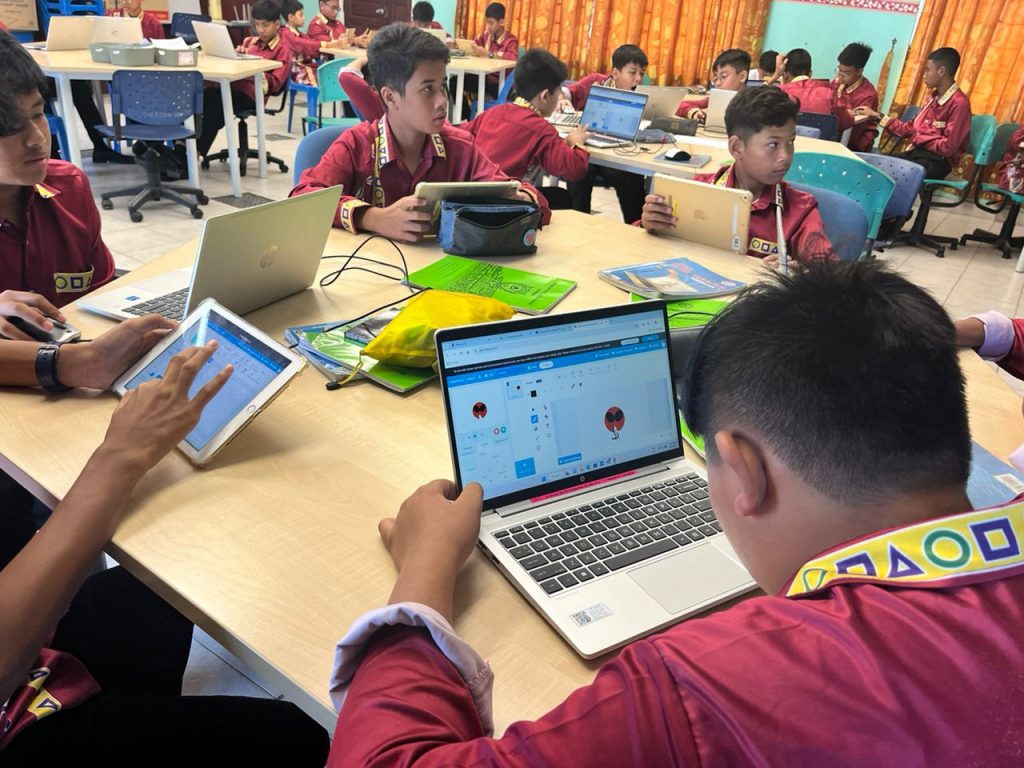
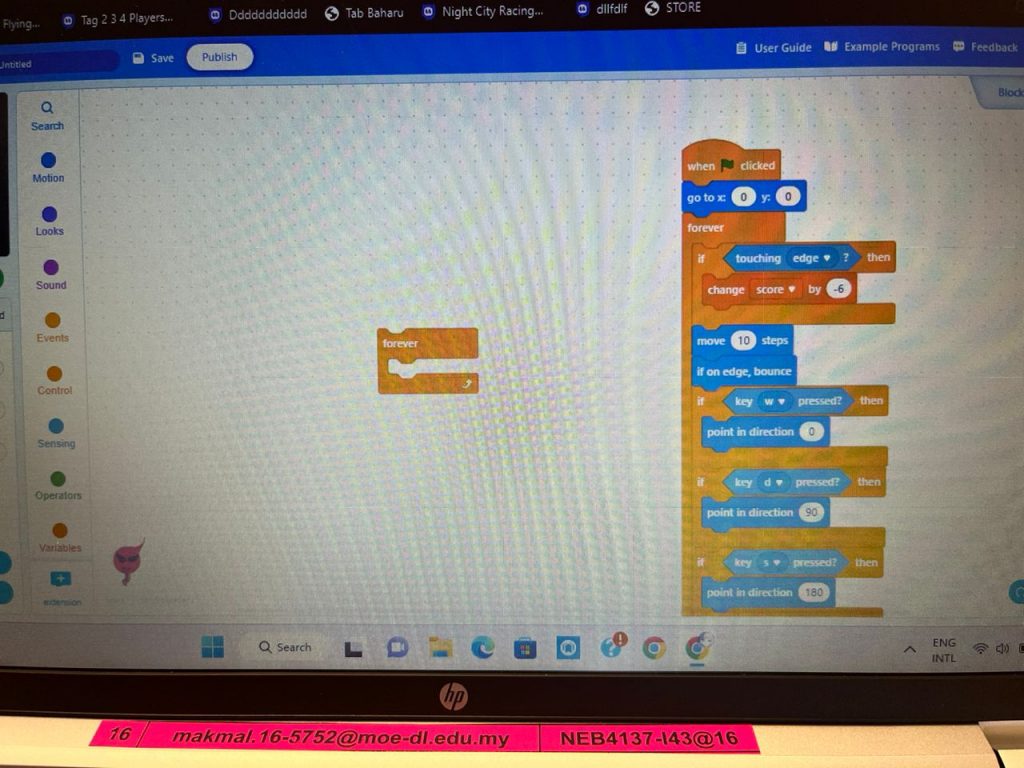

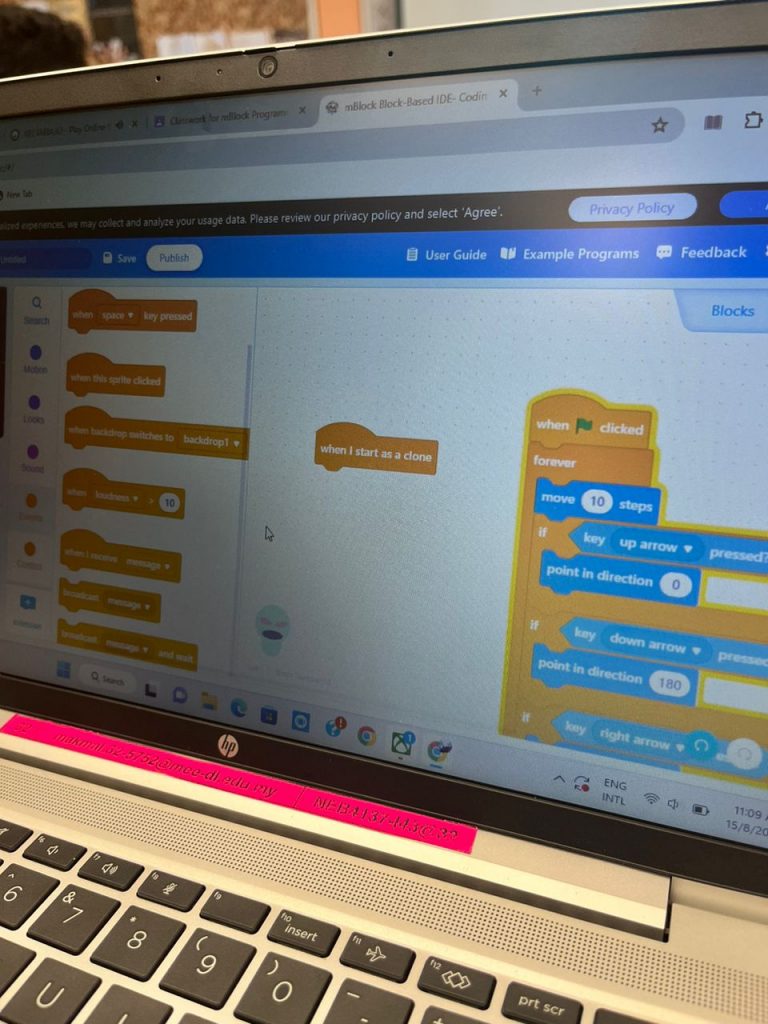

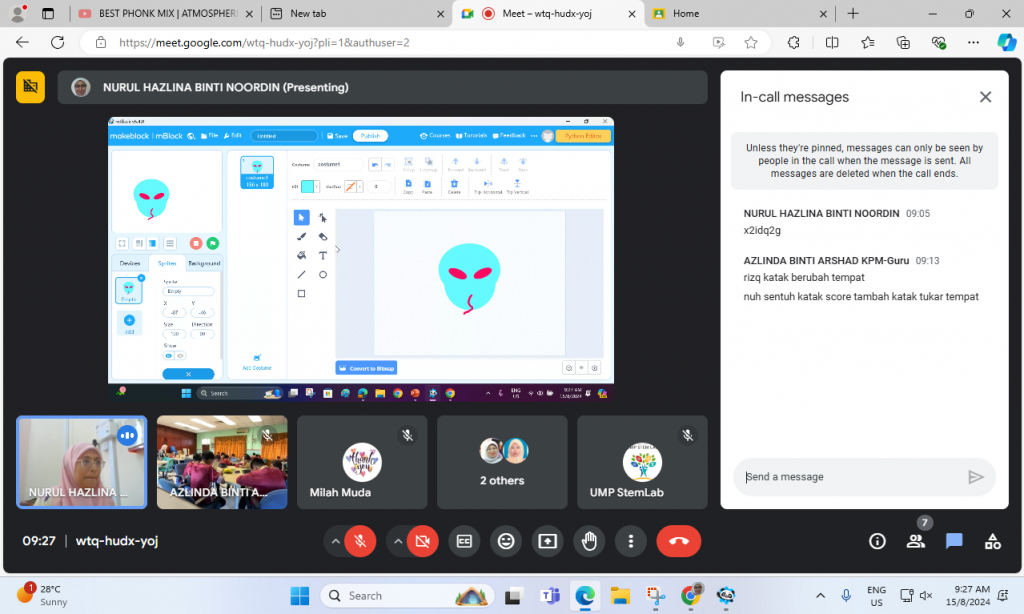
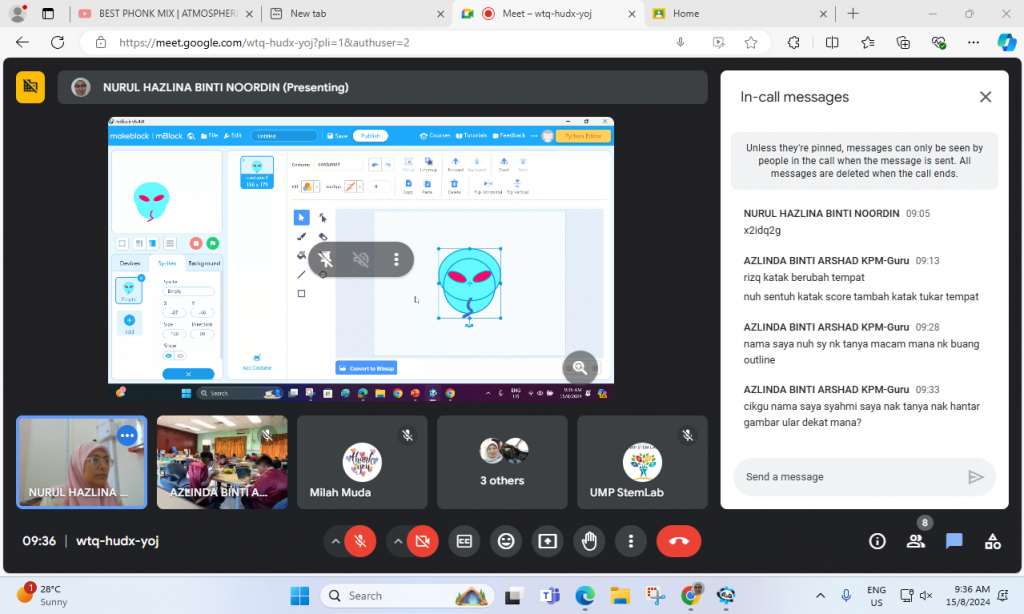
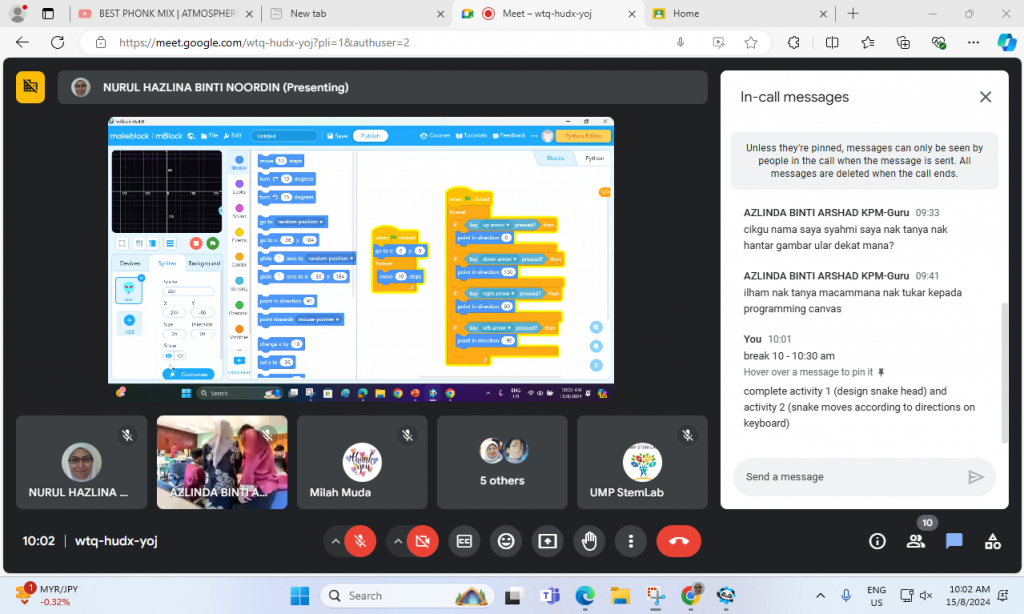
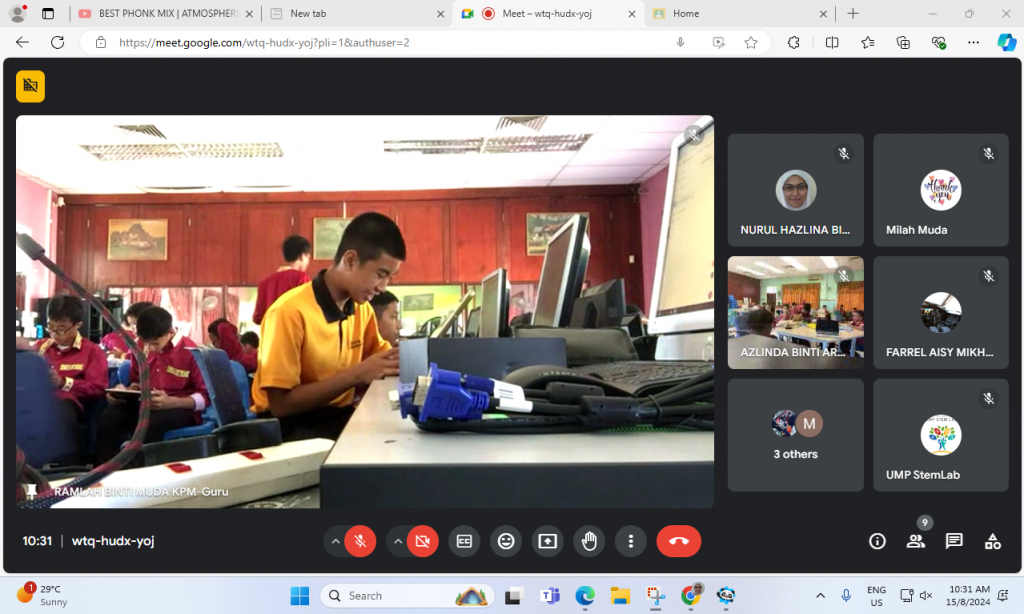
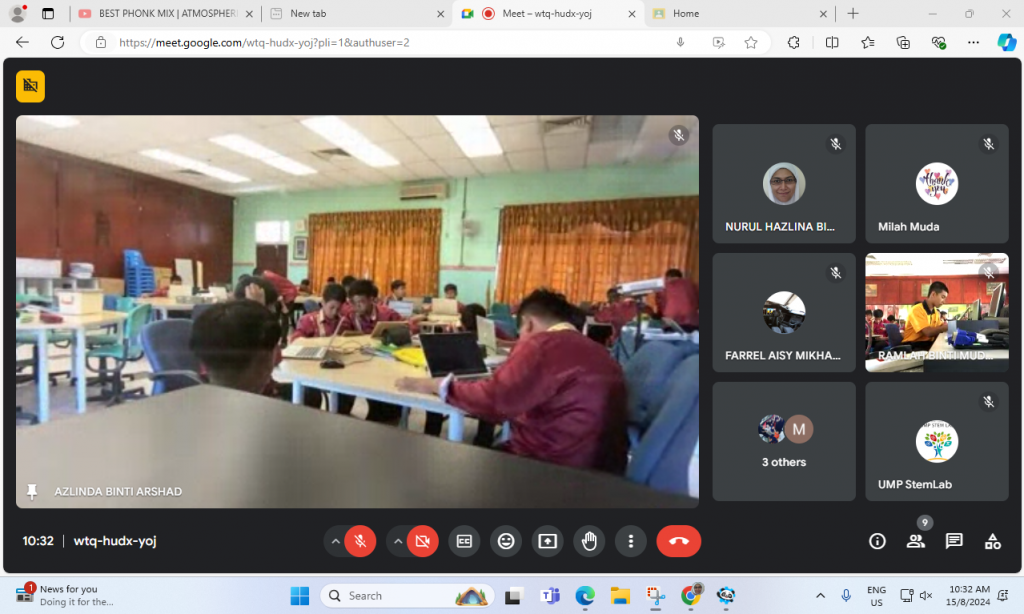
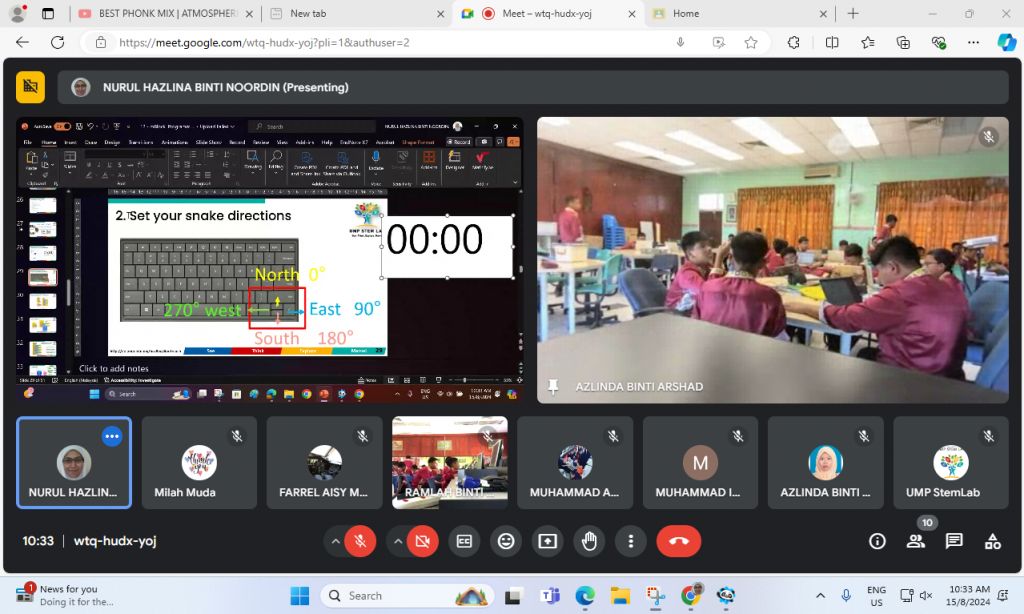
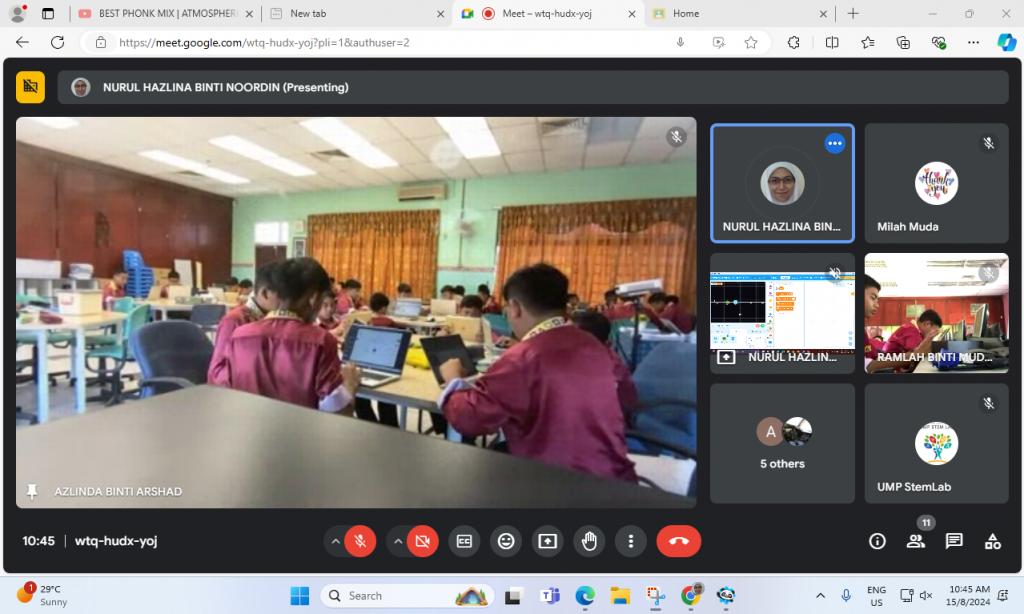
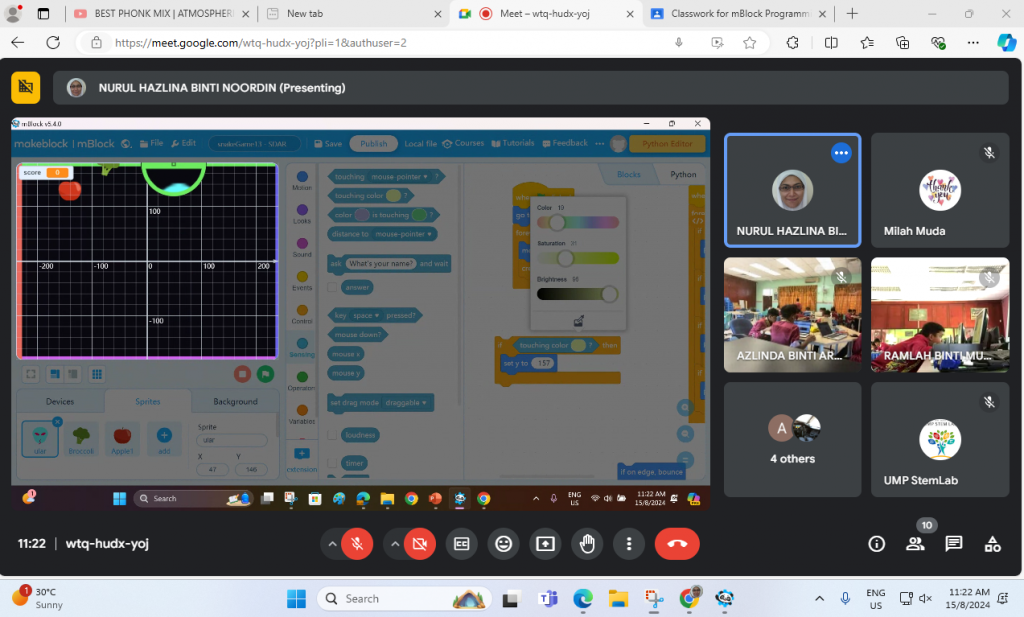
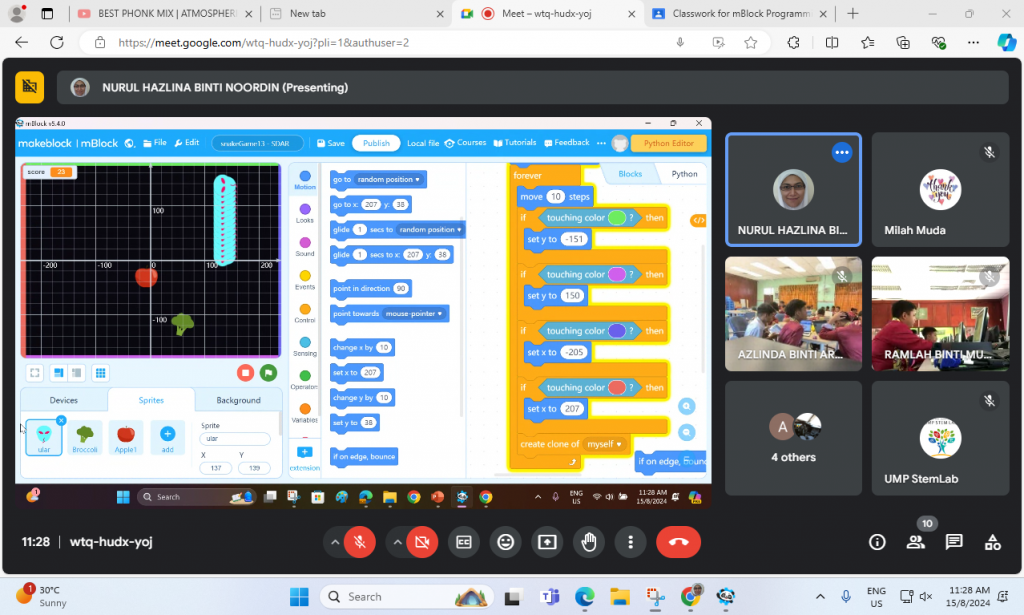
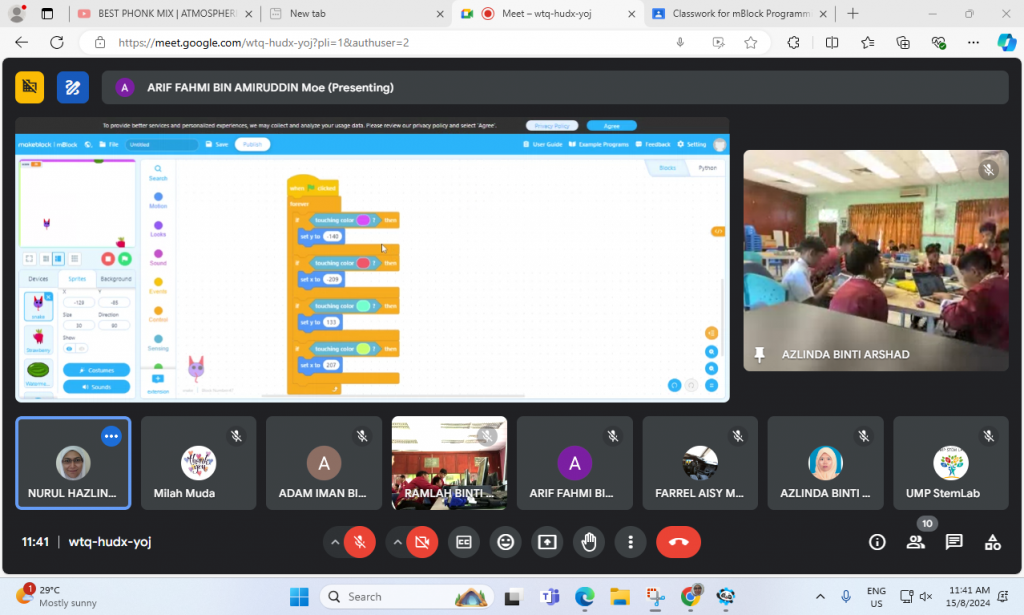


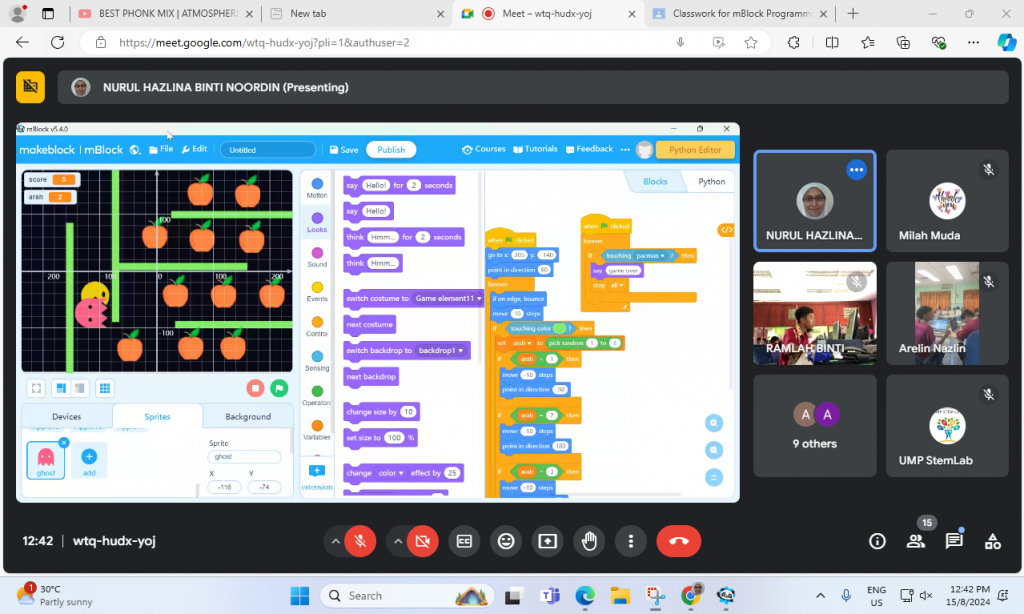
Arduino Programming 2024/7 – SMART Kuantan (AI Assisted)
Synopsis on AI Assisted Learning @UMPSA STEM Lab module.
We want to extend our heartfelt thanks to Cikgu Hayati for her outstanding efforts in coordinating between the STEM Lab and the school for our recent AI-assisted Arduino programming class. Her dedication ensured smooth communication and a successful event.
In this session, 38 Form 2 students and teachers explored the basics of Arduino programming, enhanced by AI tools like ChatGPT. Activities included coding projects like LED blinking, traffic light simulations, and working with photoresistors. Students were actively engaged, learning how AI can assist in coding and troubleshooting.
Thank you again, Cikgu Hayati, for helping us inspire the next generation of tech enthusiasts!
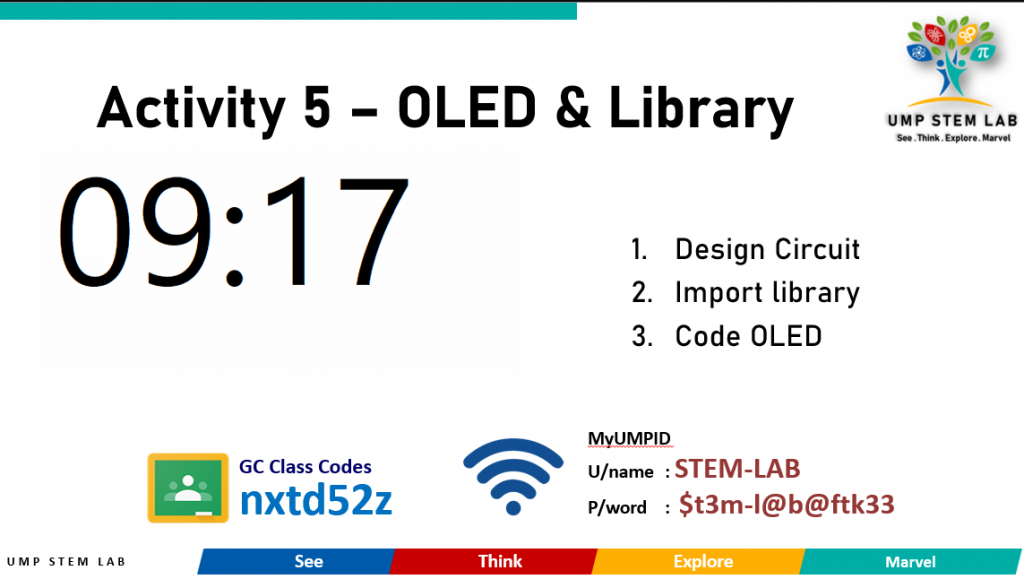
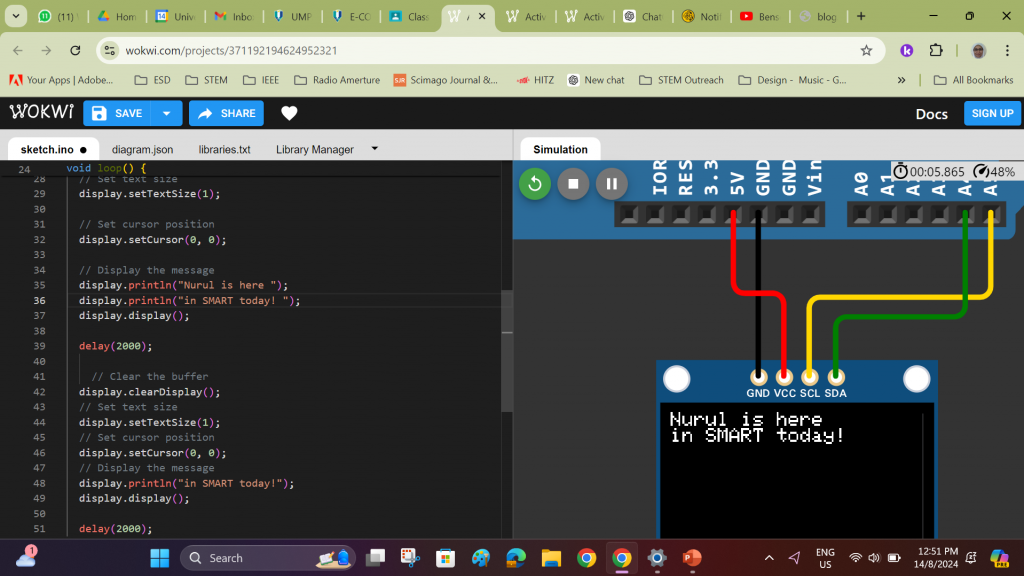
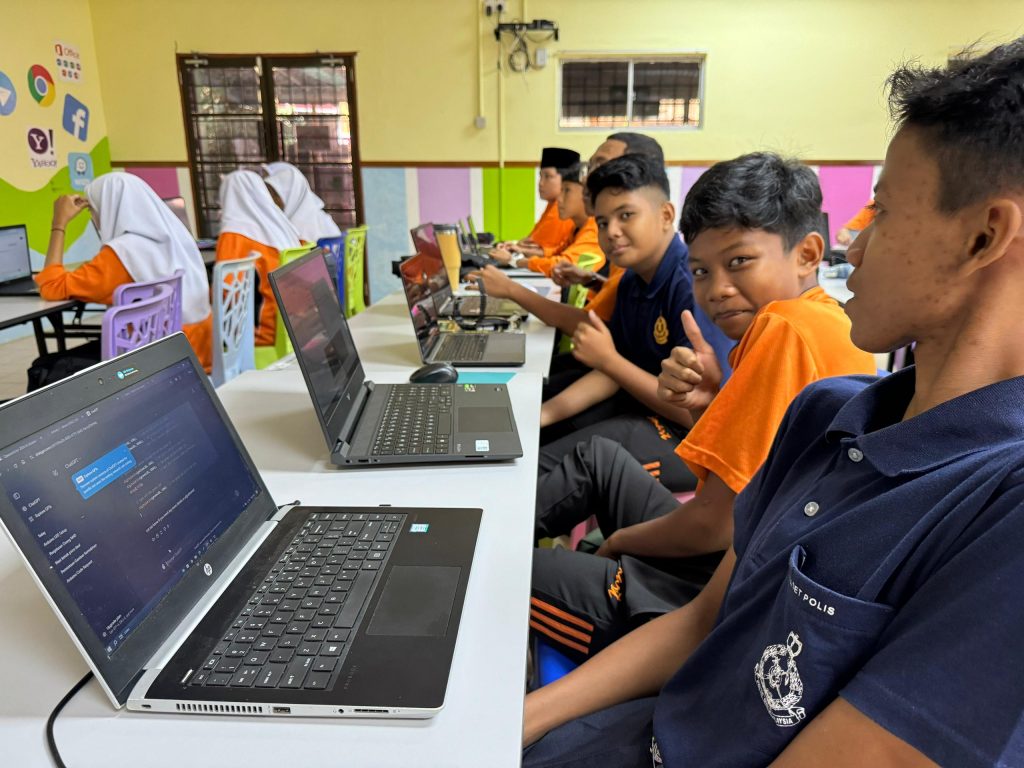
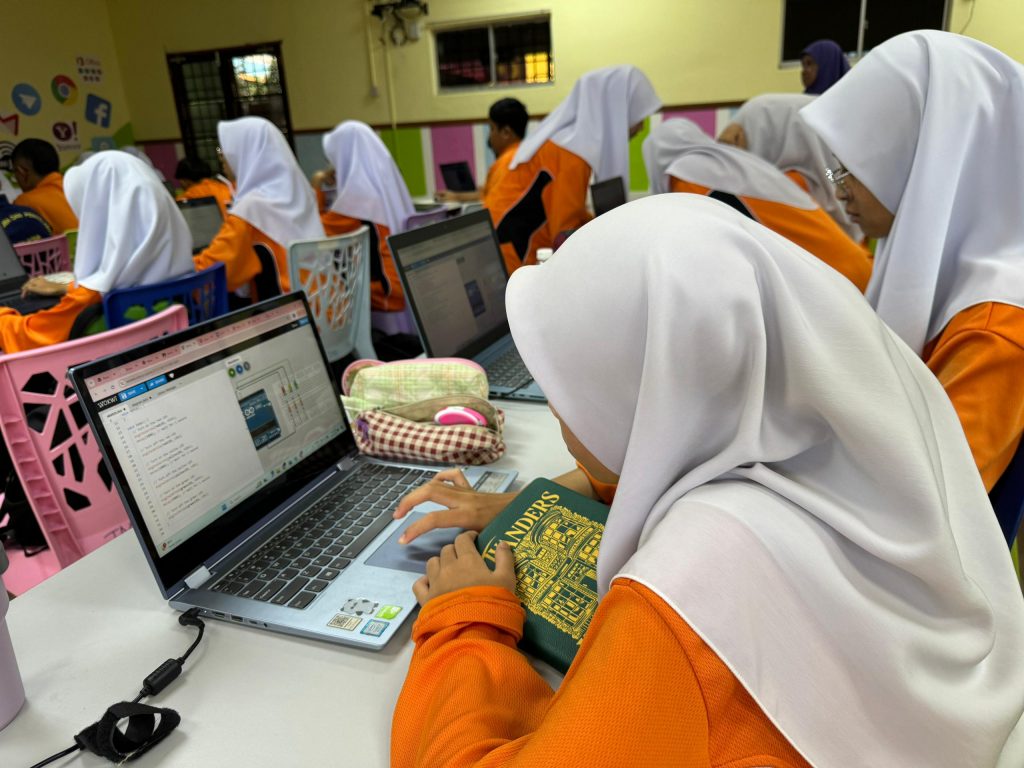
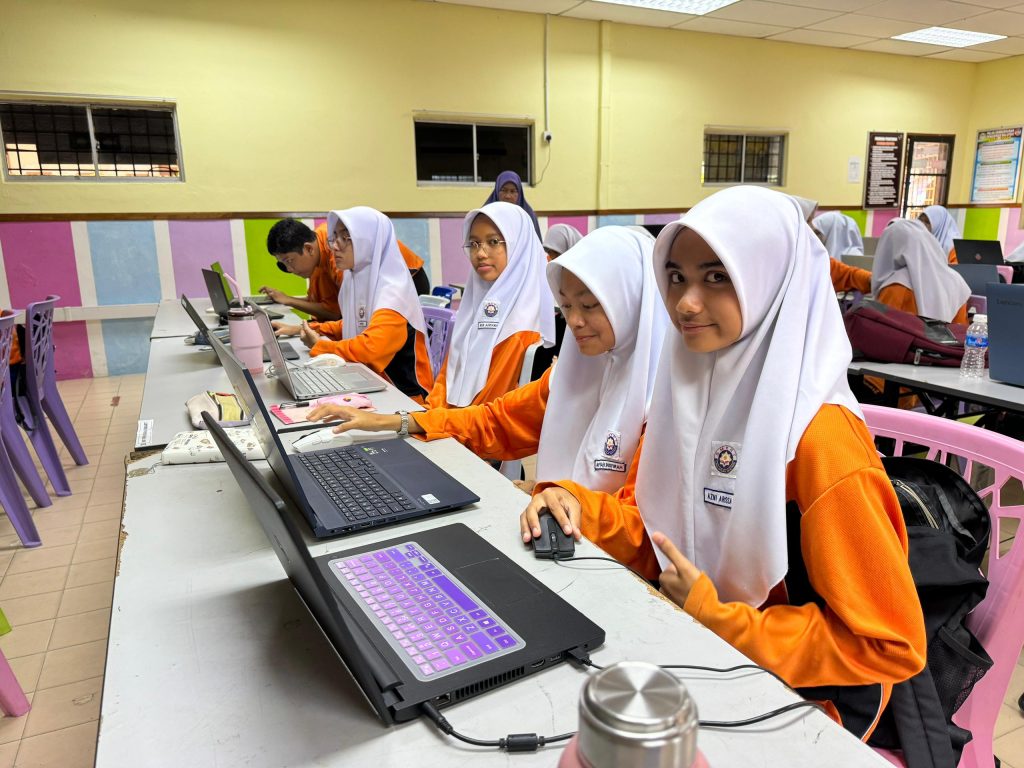
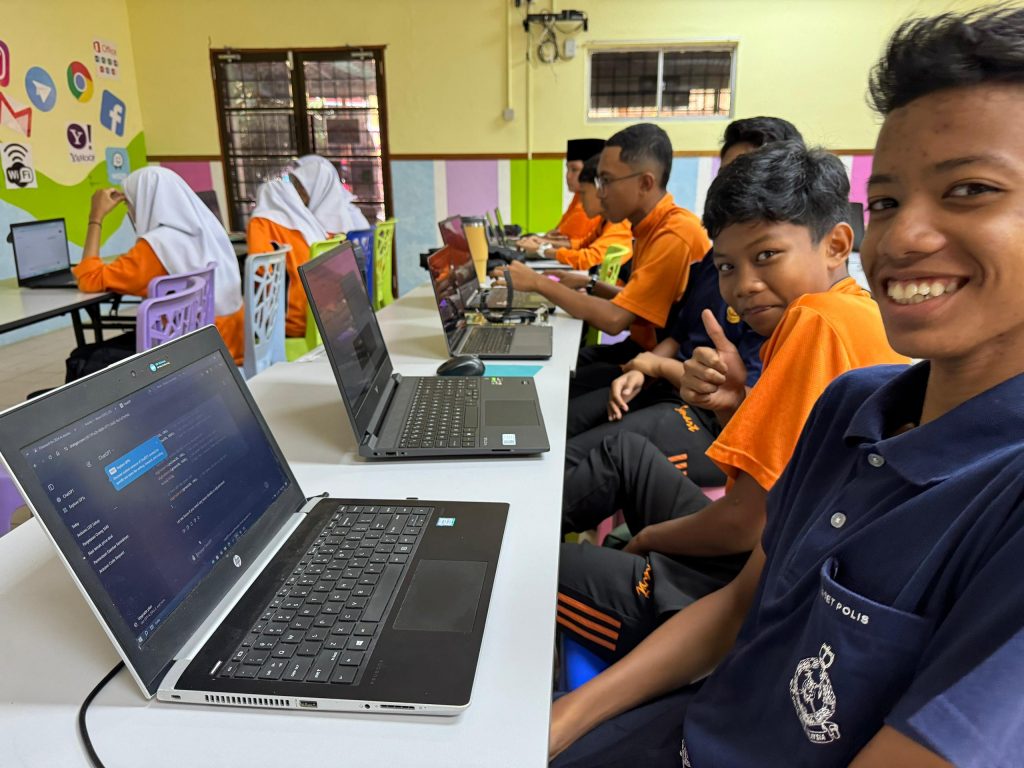
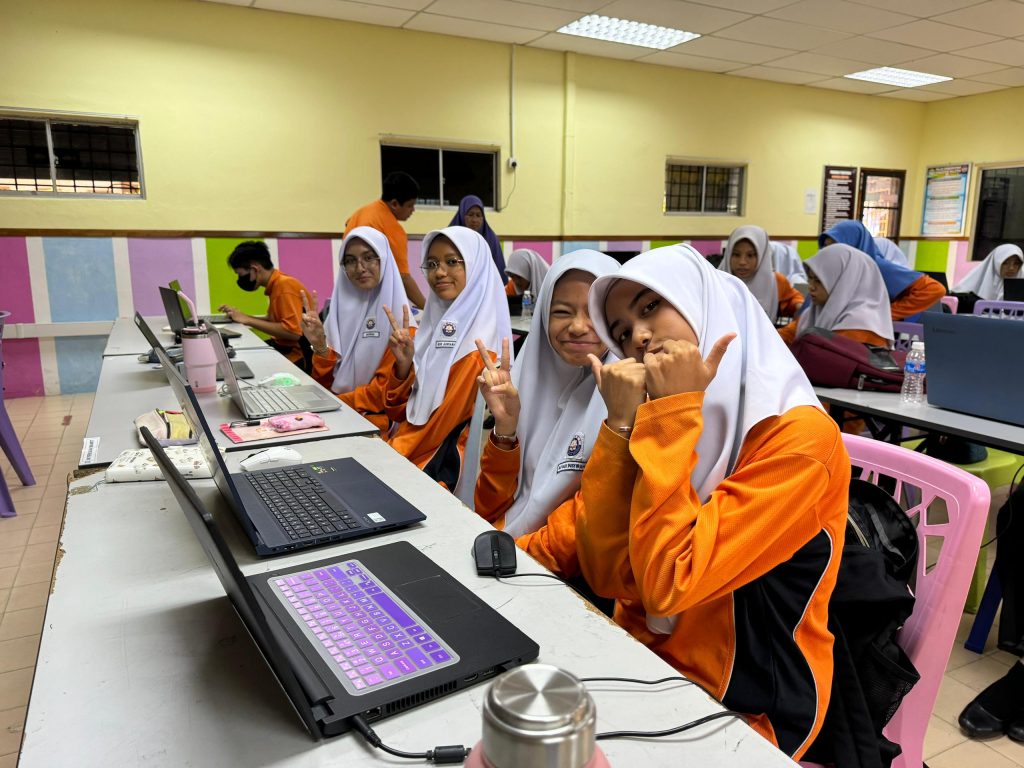
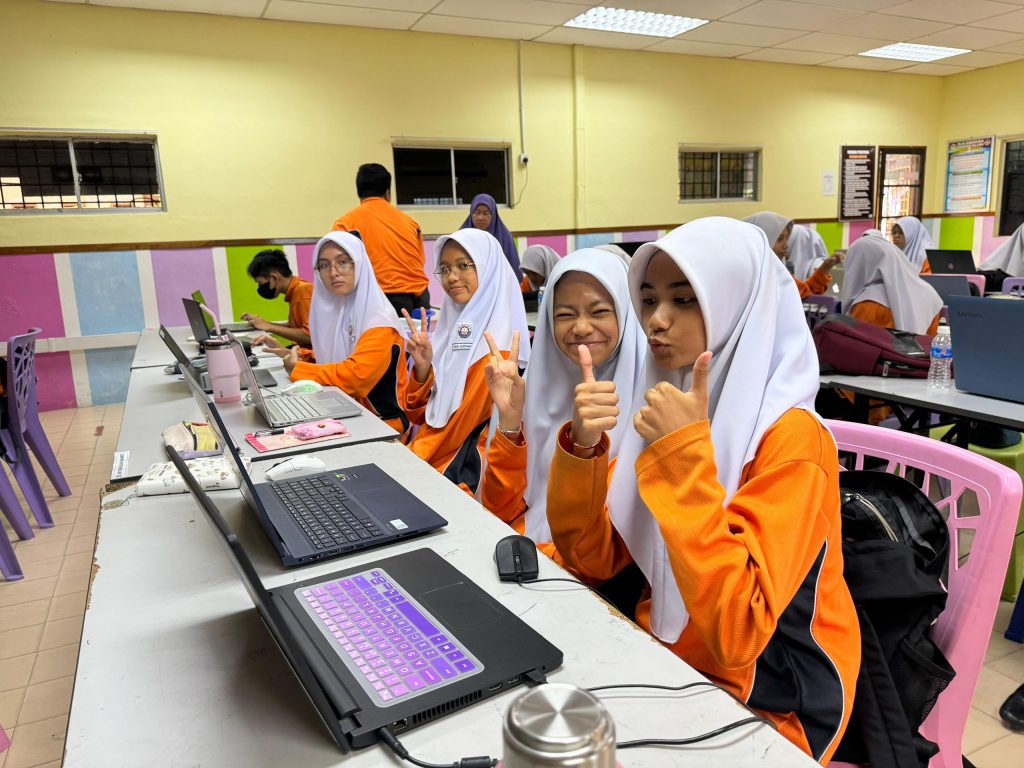

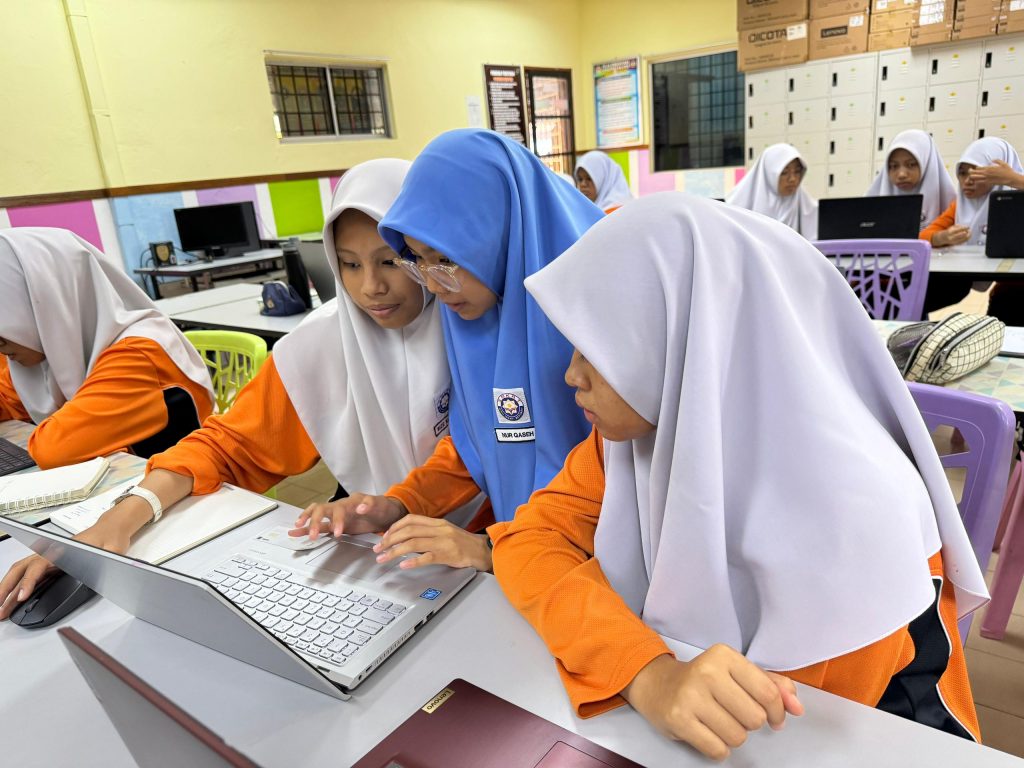
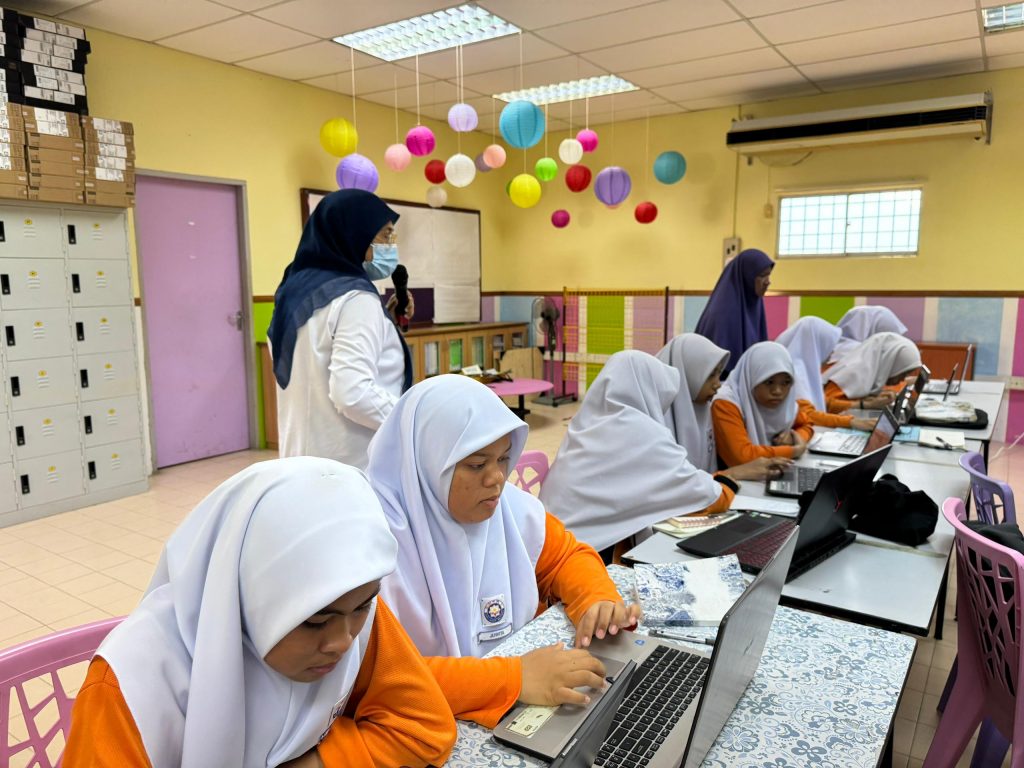
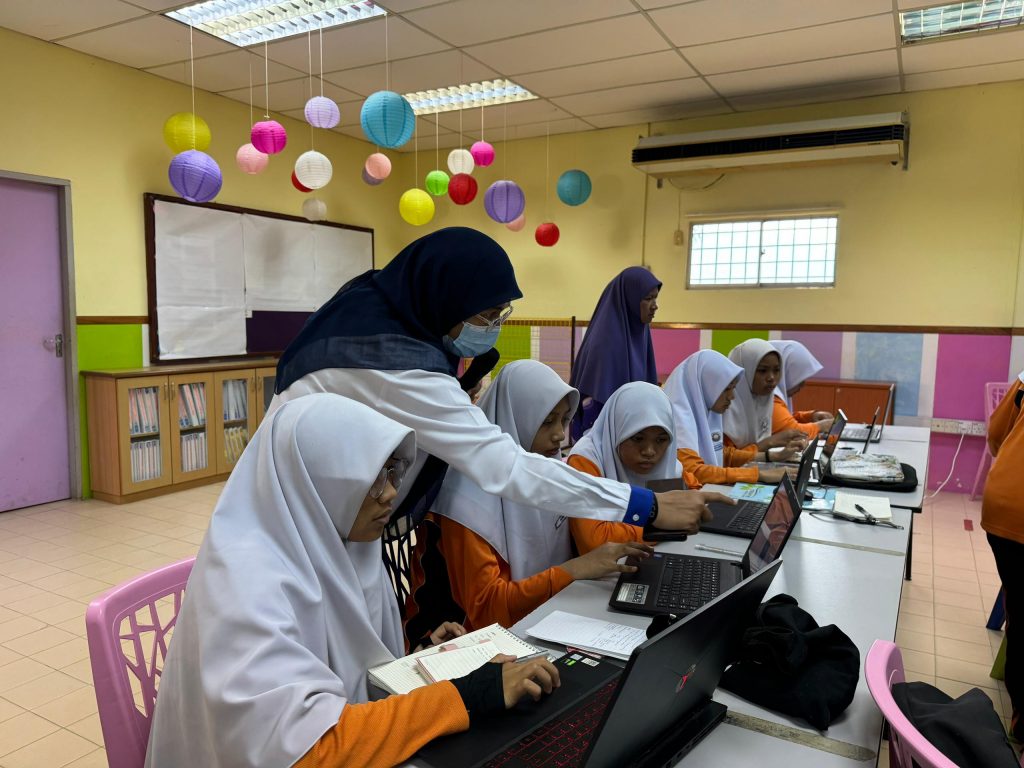
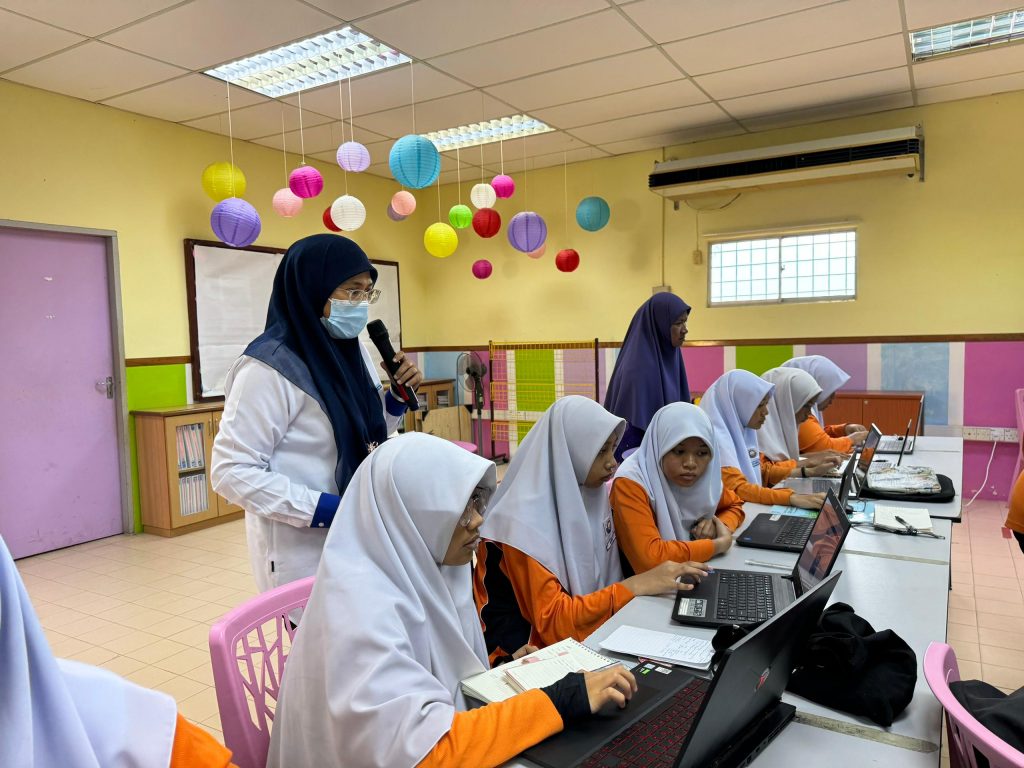

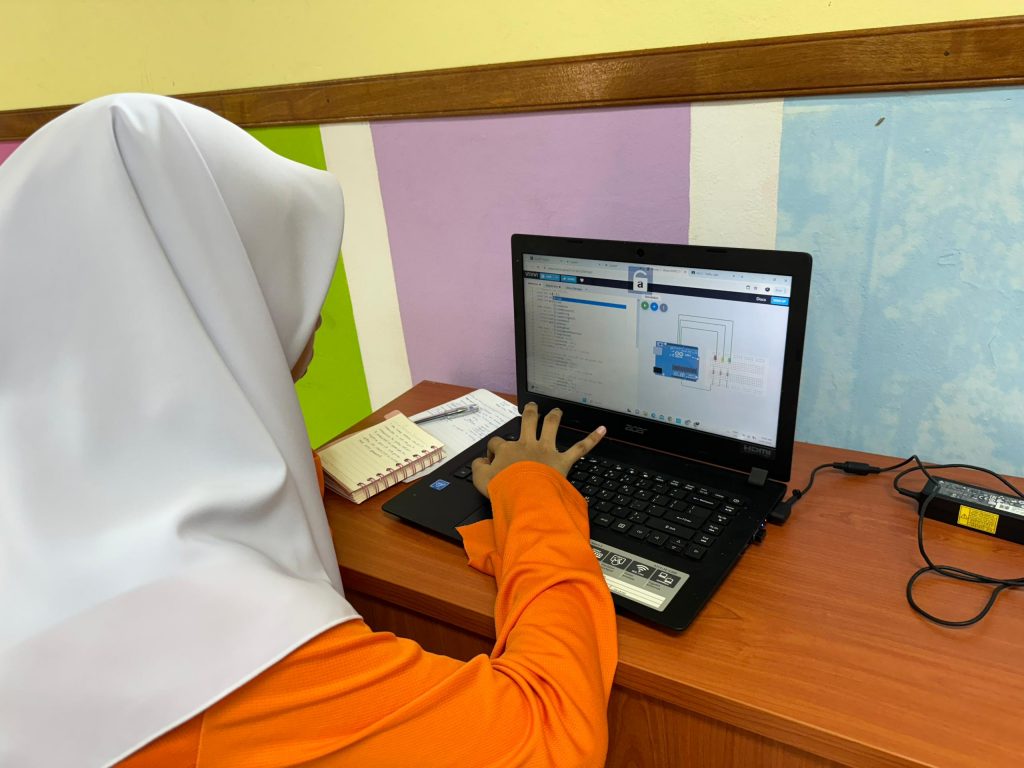
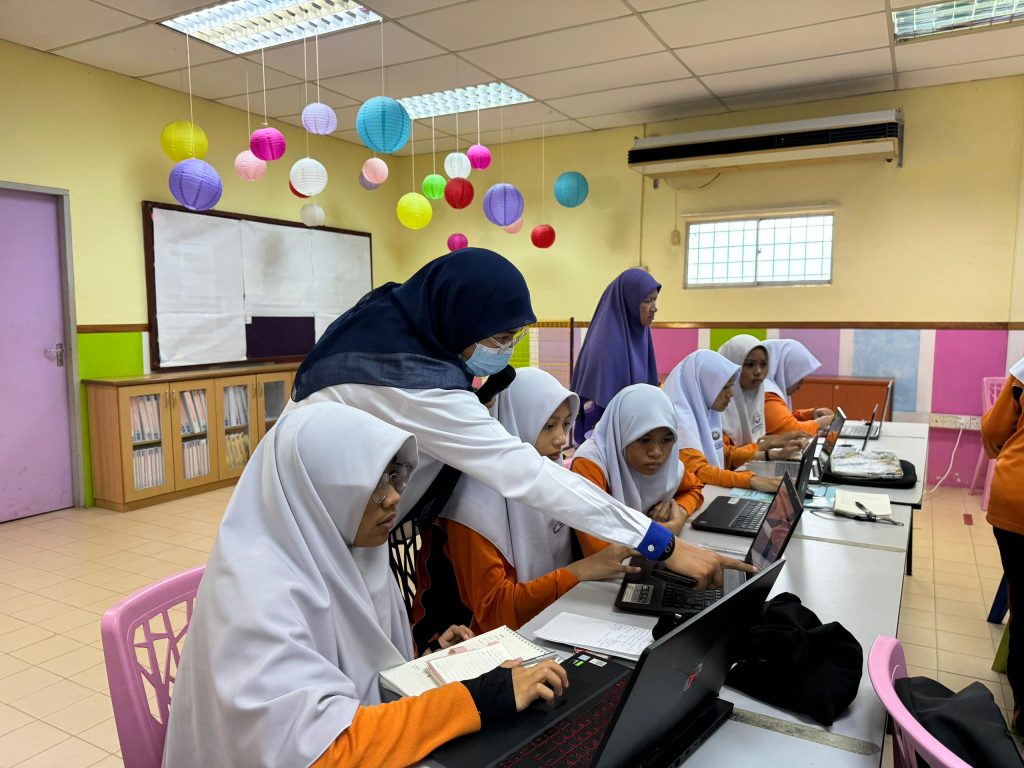
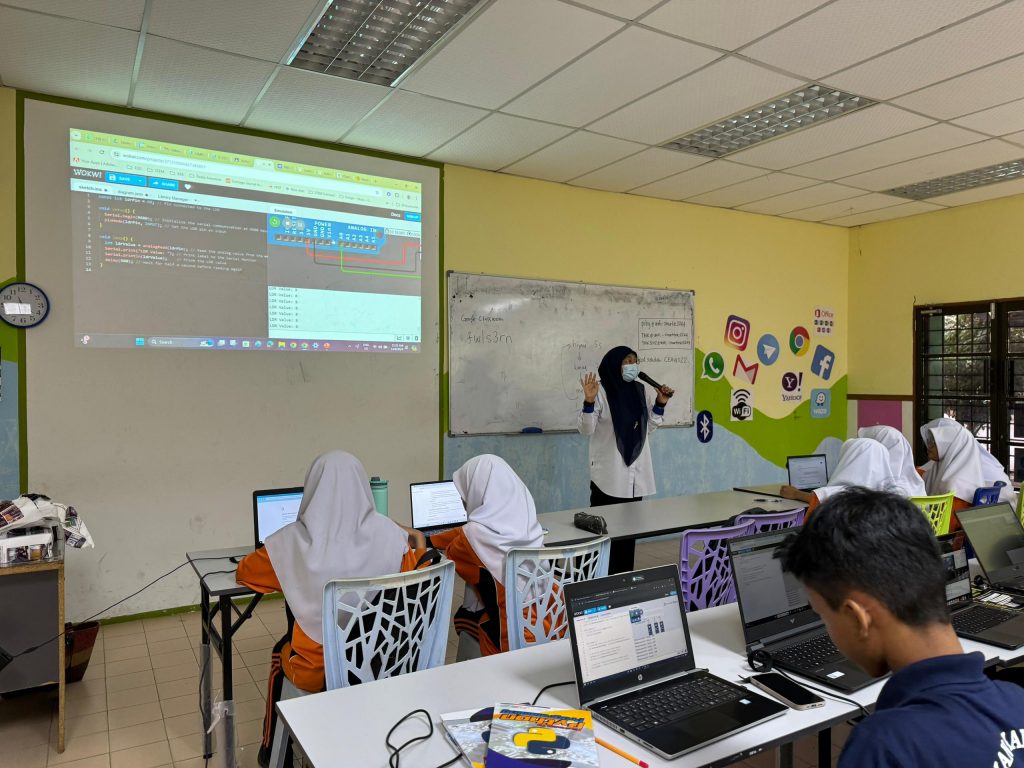
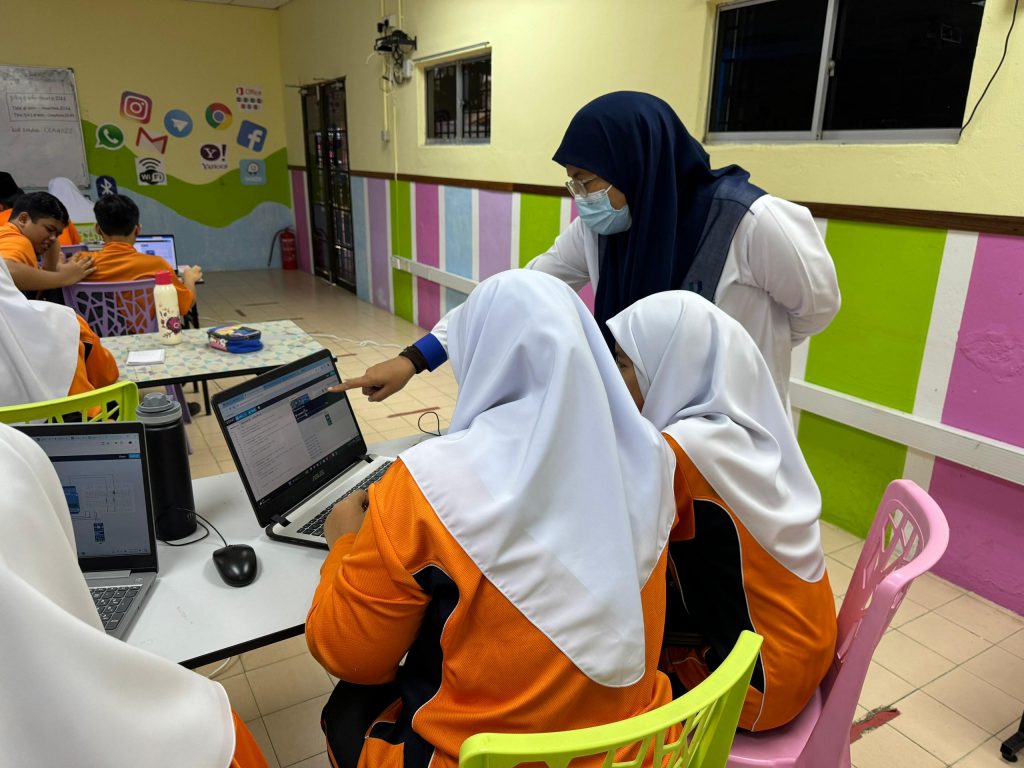
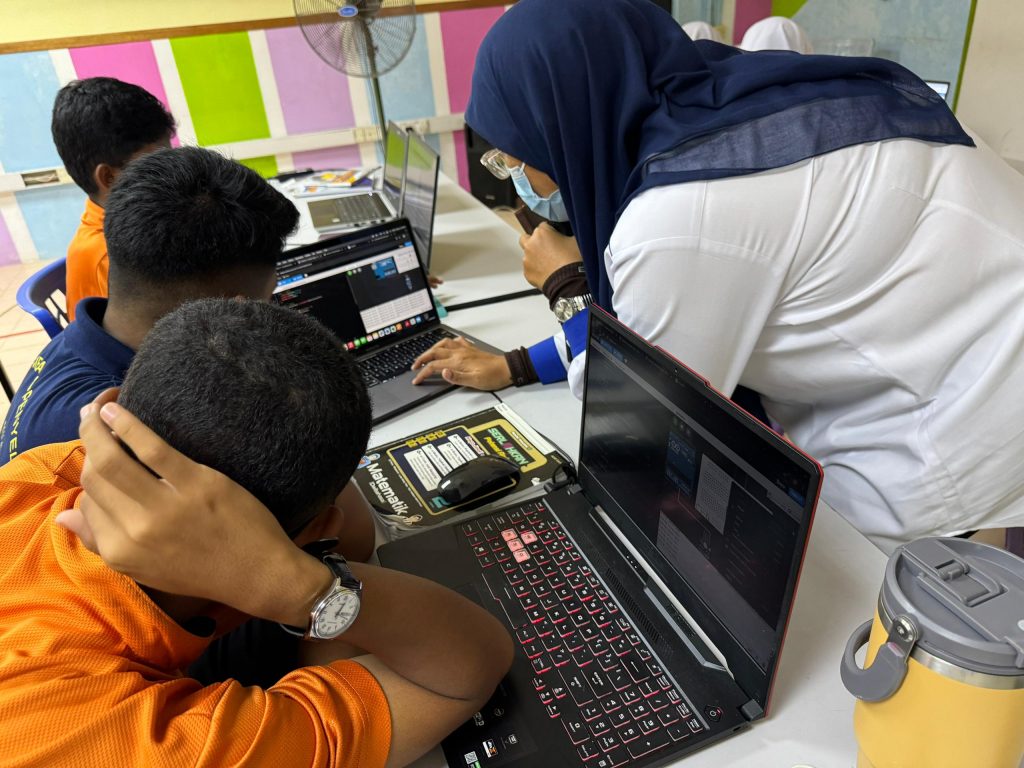
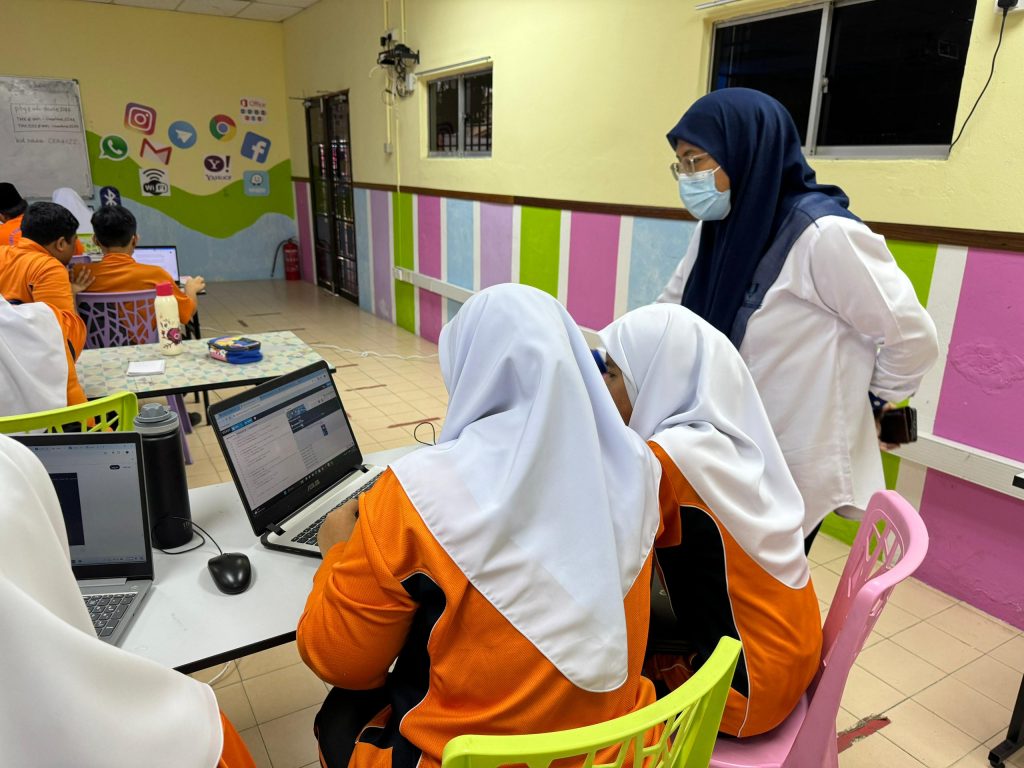


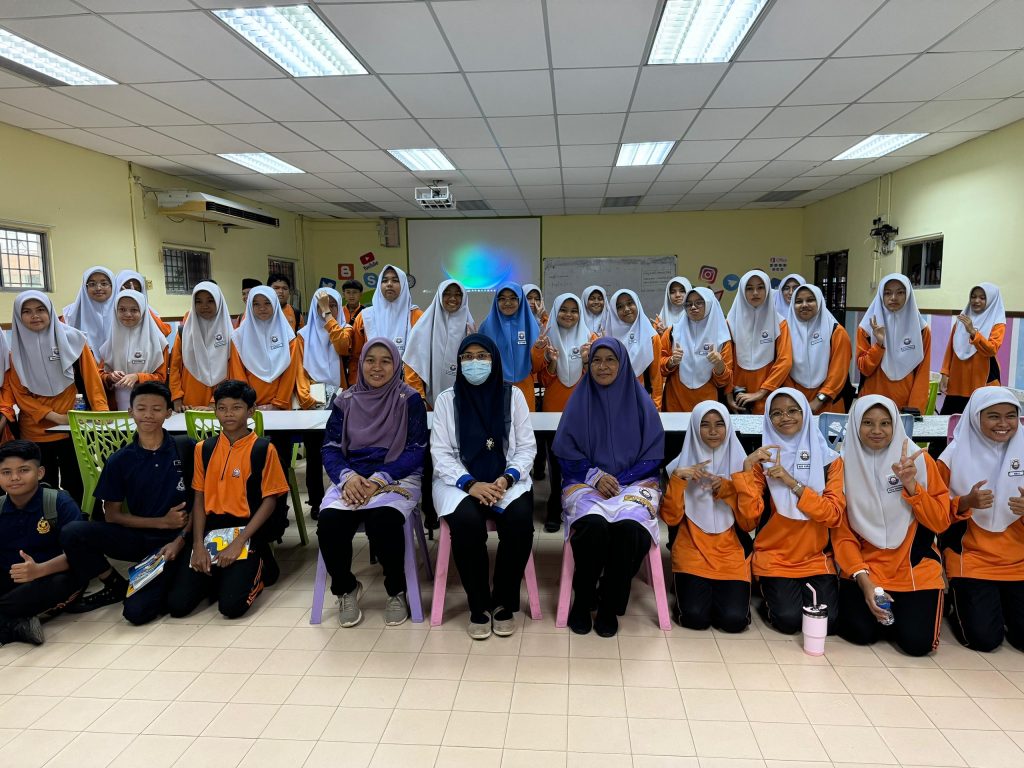
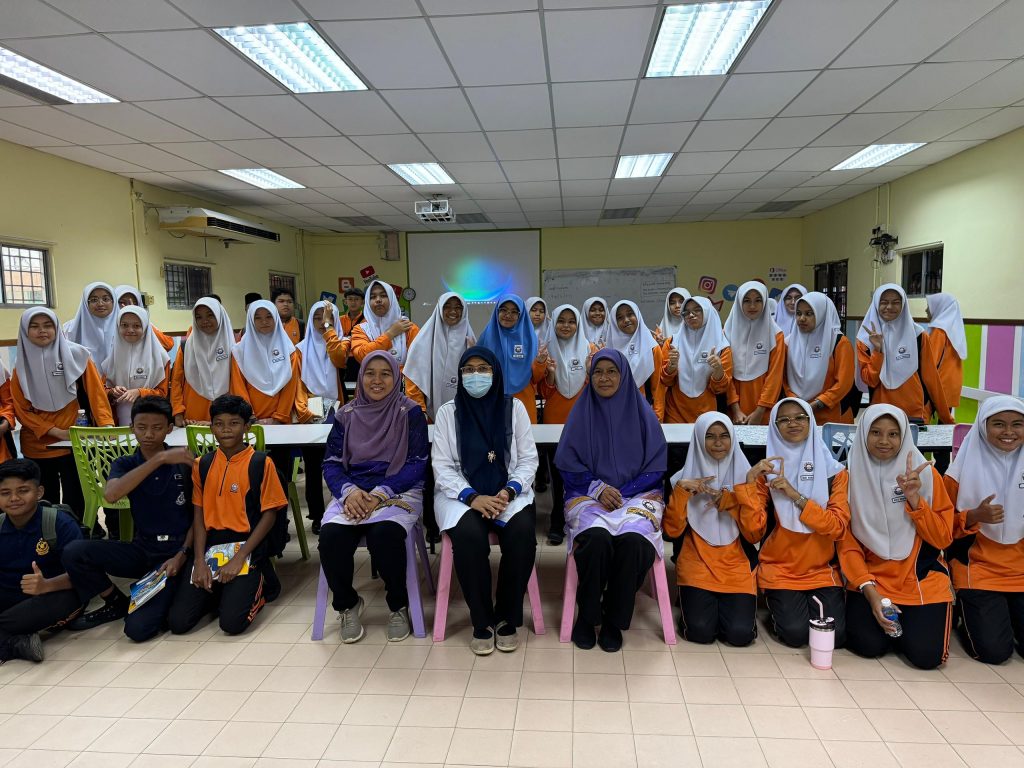
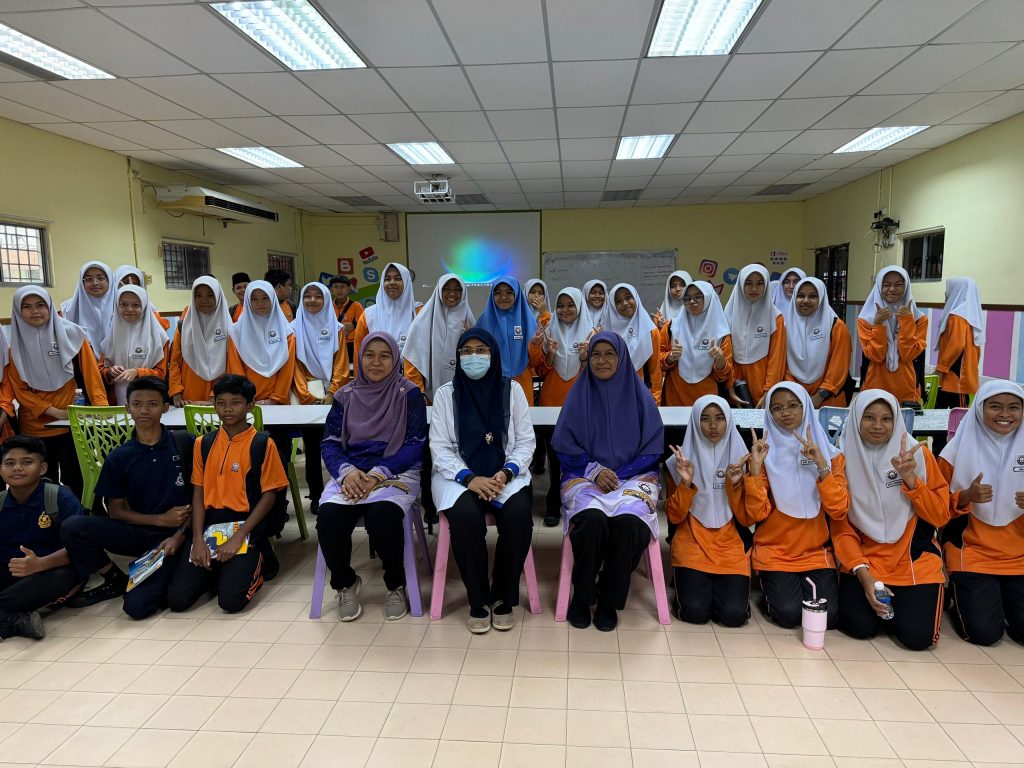
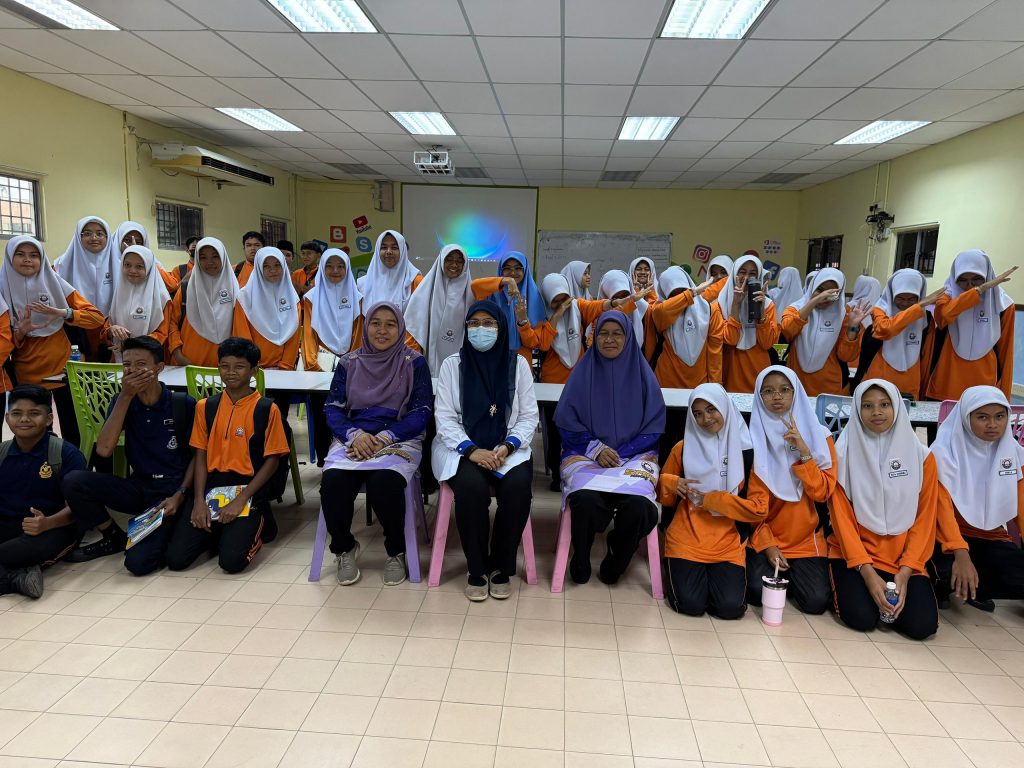
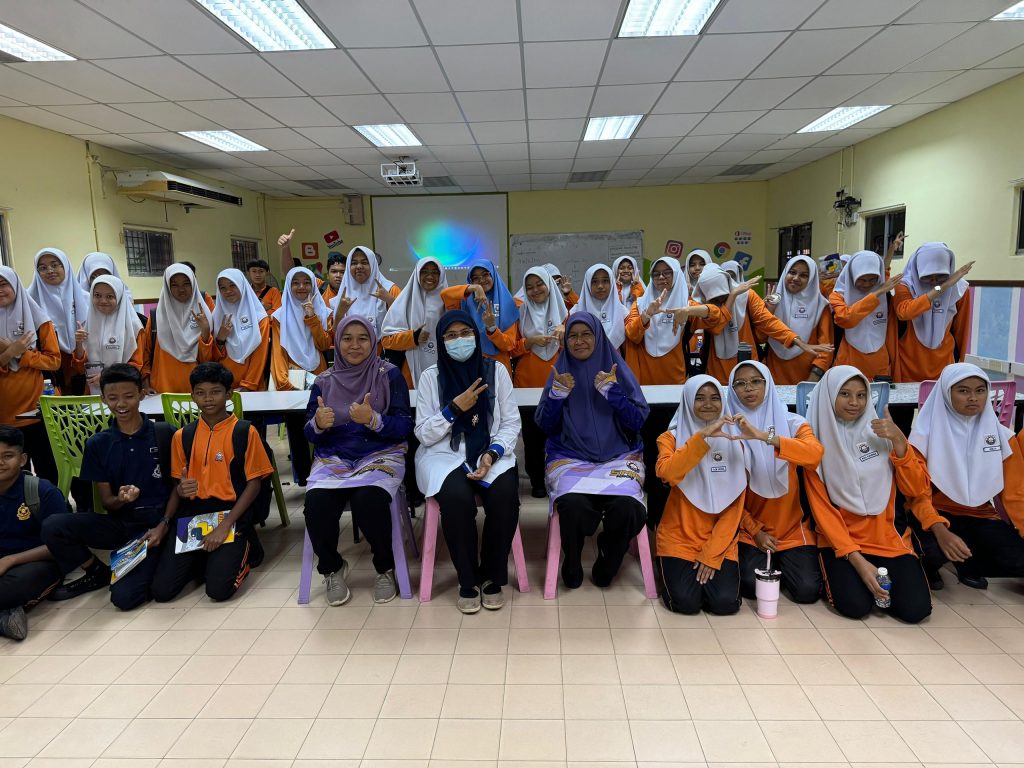
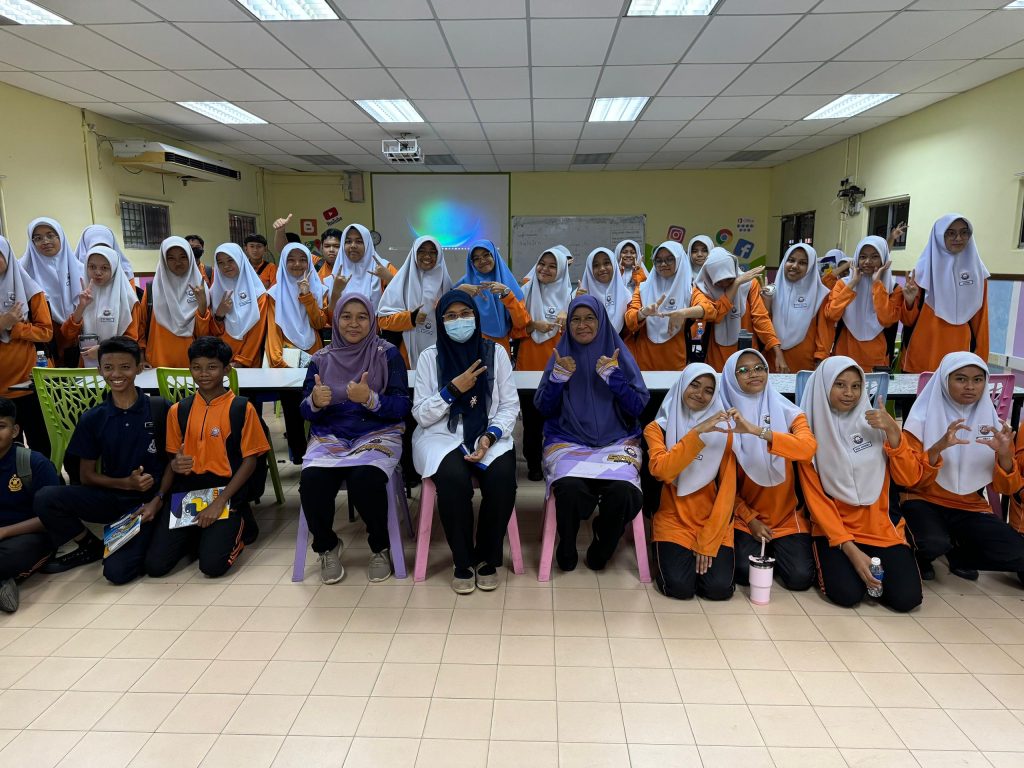

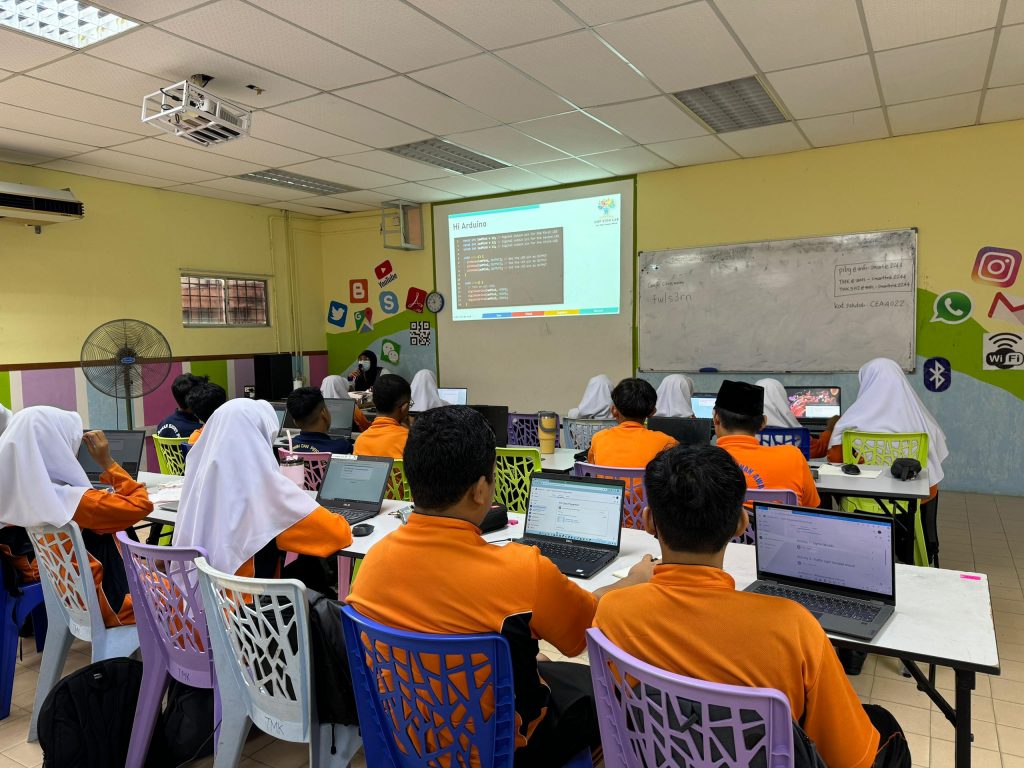
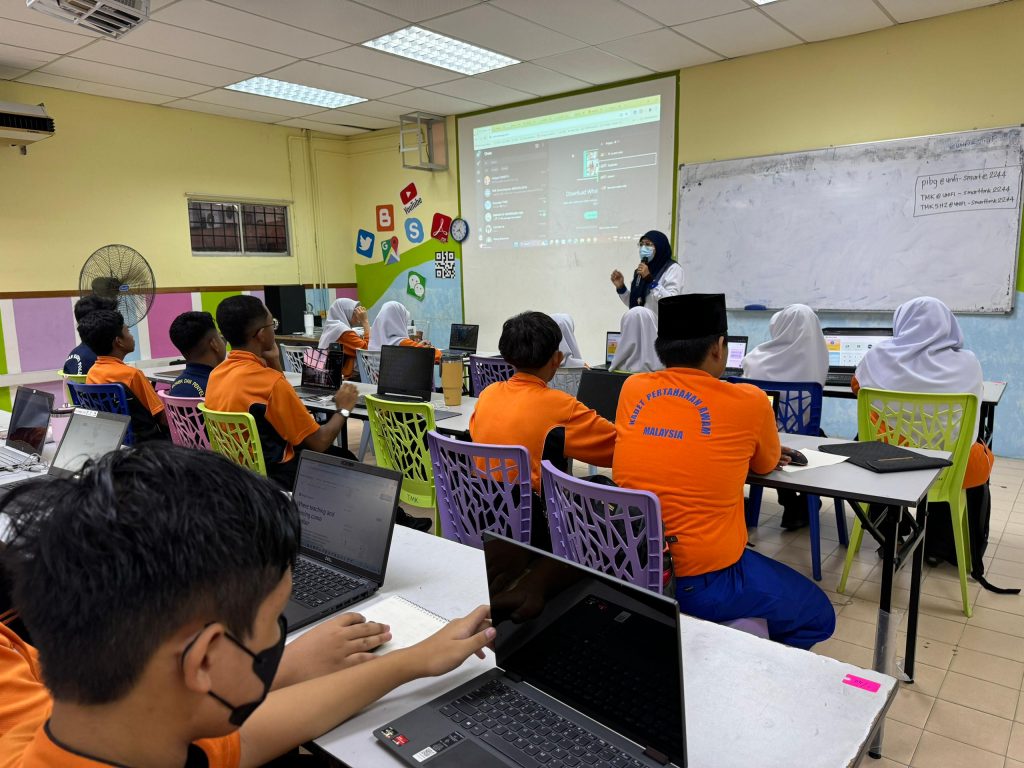
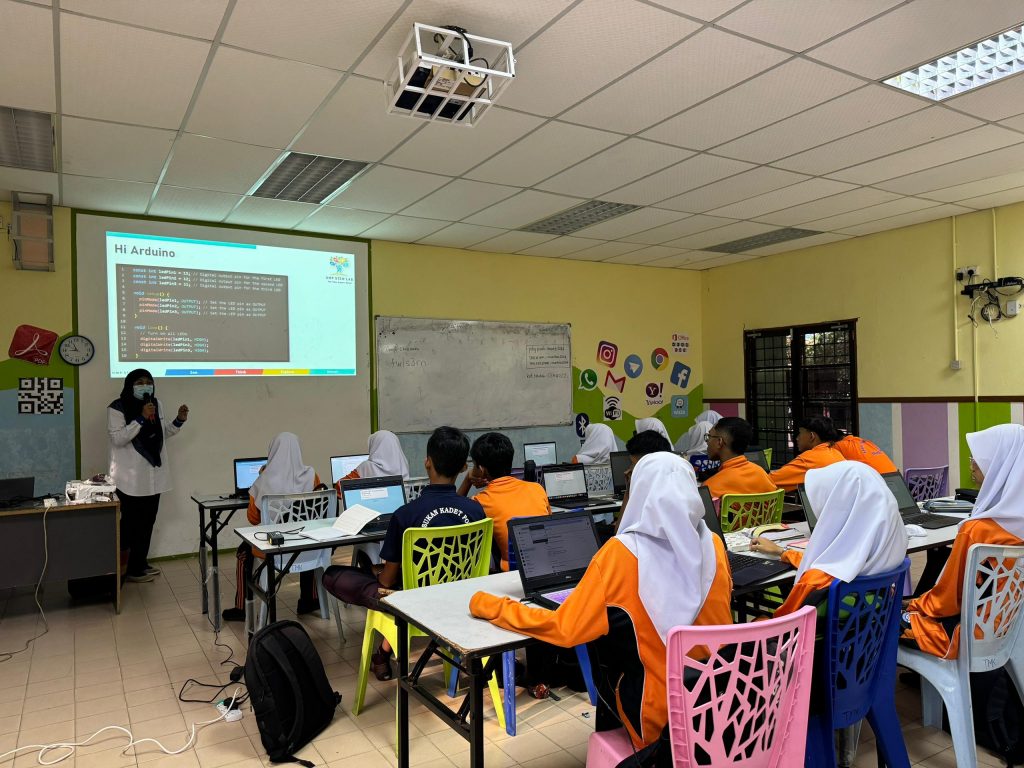
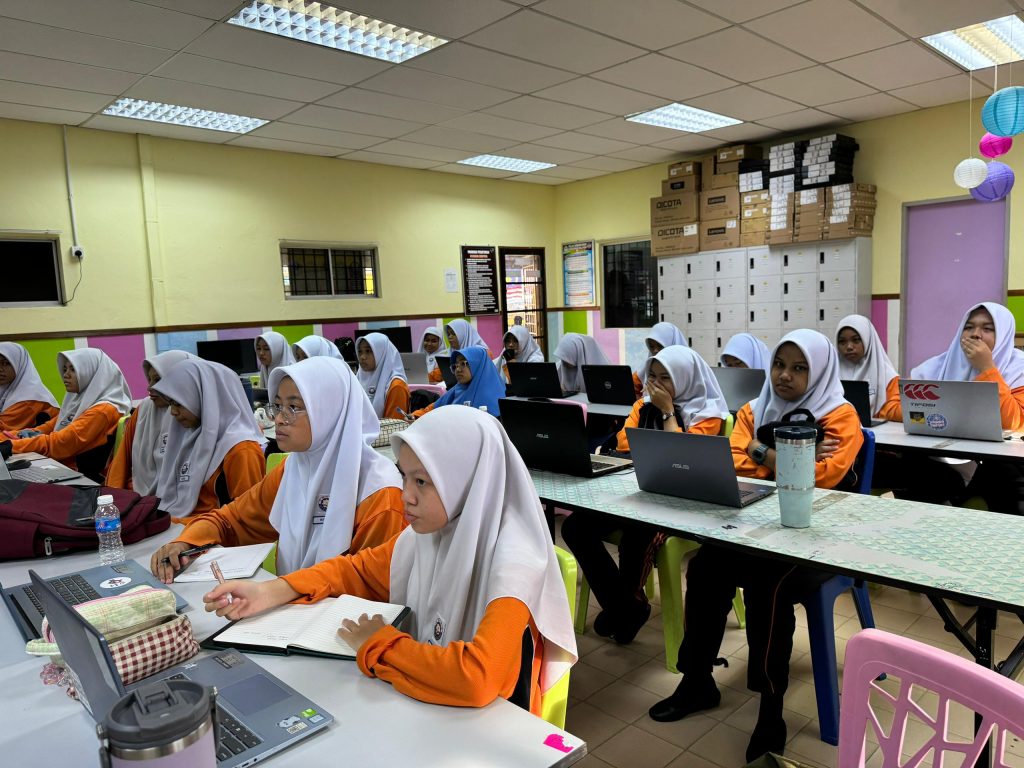

AI Assisted Learning – Arduino Programming
The UMPSA STEM Lab at Universiti Malaysia Pahang Al-Sultan Abdullah (UMPSA) is at the forefront of integrating artificial intelligence (AI) into education. Their innovative approach to teaching Arduino programming, focusing on digital making through circuit construction and physical computing, is reshaping how students learn and engage with technology. This blog post outlines the structured activities, from Act 1 to Act 6, that UMPSA STEM Lab uses to achieve its educational goals.
The primary aim of this AI-assisted learning initiative is to enhance participants’ understanding of digital making and physical computing. By incorporating LLM AI tools such as ChatGPT, participants receive personalized assistance and real-time feedback, making the learning process more interactive and effective.
The AI-assisted Arduino programming course was structured into six progressive activities designed to build students’ skills in digital making and physical computing. The course began with Act 1: LED Blinking, where students were introduced to basic Arduino programming by generating code with AI to make an LED blink. This foundational activity allowed students to learn how to use AI for simple code generation. In Act 2: Traffic Light, students developed debugging skills by analyzing and correcting pre-existing, buggy code to simulate a traffic light system, with AI assisting in identifying and fixing errors.
Act 3: Photoresistor Diode focused on introducing students to the concept of a photoresistor, using AI to both research the component and generate the necessary Arduino code. Building on this, Act 4: Conditional Statement with Photoresistor Diode and LED taught students to modify AI-generated code, incorporating conditional statements that controlled an LED based on light levels. In Act 5: Capstone Project, students applied their accumulated knowledge in a comprehensive project that integrated all the concepts learned, from coding to circuit construction, with AI available for guidance throughout.
The final activity, Act 6: Ultrasonic Sensors, emphasized AI code comprehension, where students analyzed AI-generated code for using an ultrasonic sensor and implemented it in their projects. This activity further developed their understanding of physical computing and prepared them for more advanced applications.
The approach taken by UMPSA STEM Lab in incorporating AI-assisted learning into Arduino programming is not just innovative but also highly effective. By breaking down the learning process into structured activities, students gain a thorough understanding of digital making and physical computing. The integration of AI tools like ChatGPT ensures that students receive personalized assistance, making the learning experience more engaging and successful.
As AI continues to evolve, the possibilities for its integration into education are endless. The UMPSA STEM Lab’s approach looks into how AI can revolutionize learning, and it sets a benchmark for other institutions to follow. With continued innovation and adaptation, AI-assisted learning can lead to a new era of education where students are more empowered and prepared for the technological challenges of the future.
mBlock Programming 2024/4 – SK Tanjong Batu
A synopsis of the program can be retrieved via the following link.
In the program, 30 participants from SK Tanjong Batu were introduced to mBlock programming, learning to use its graphical interface to create sequences of instructions. They explored sequential programming, conditional statements, and loops through hands-on tutorials. These foundational skills were applied in two projects: a Snake game and a Pac-Man game. In the Snake game, they programmed the snake’s movement, growth, and collision detection, while in the Pac-Man game, they navigated a maze, collected points, and avoided ghosts. This approach provided a comprehensive understanding of programming concepts and their practical applications.
Appreciation to Cikgu Zurina for coordinating the communication between the participants and UMPSA STEM Lab.
